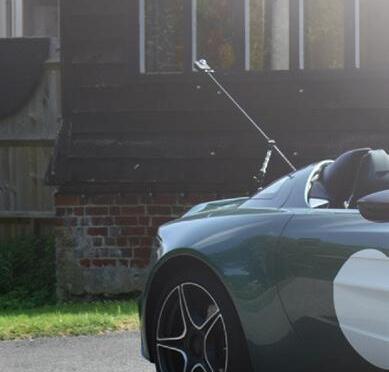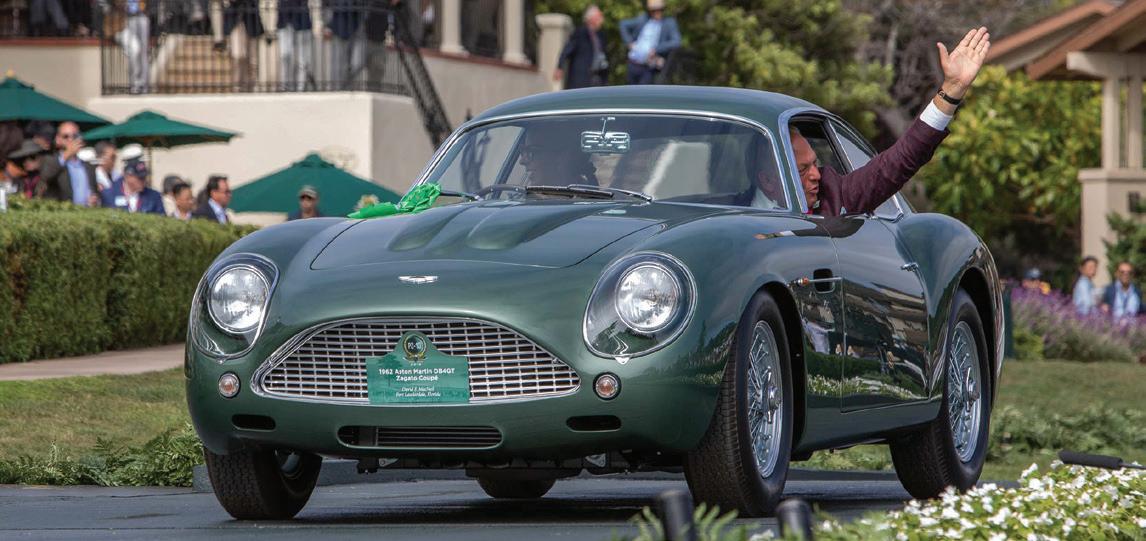
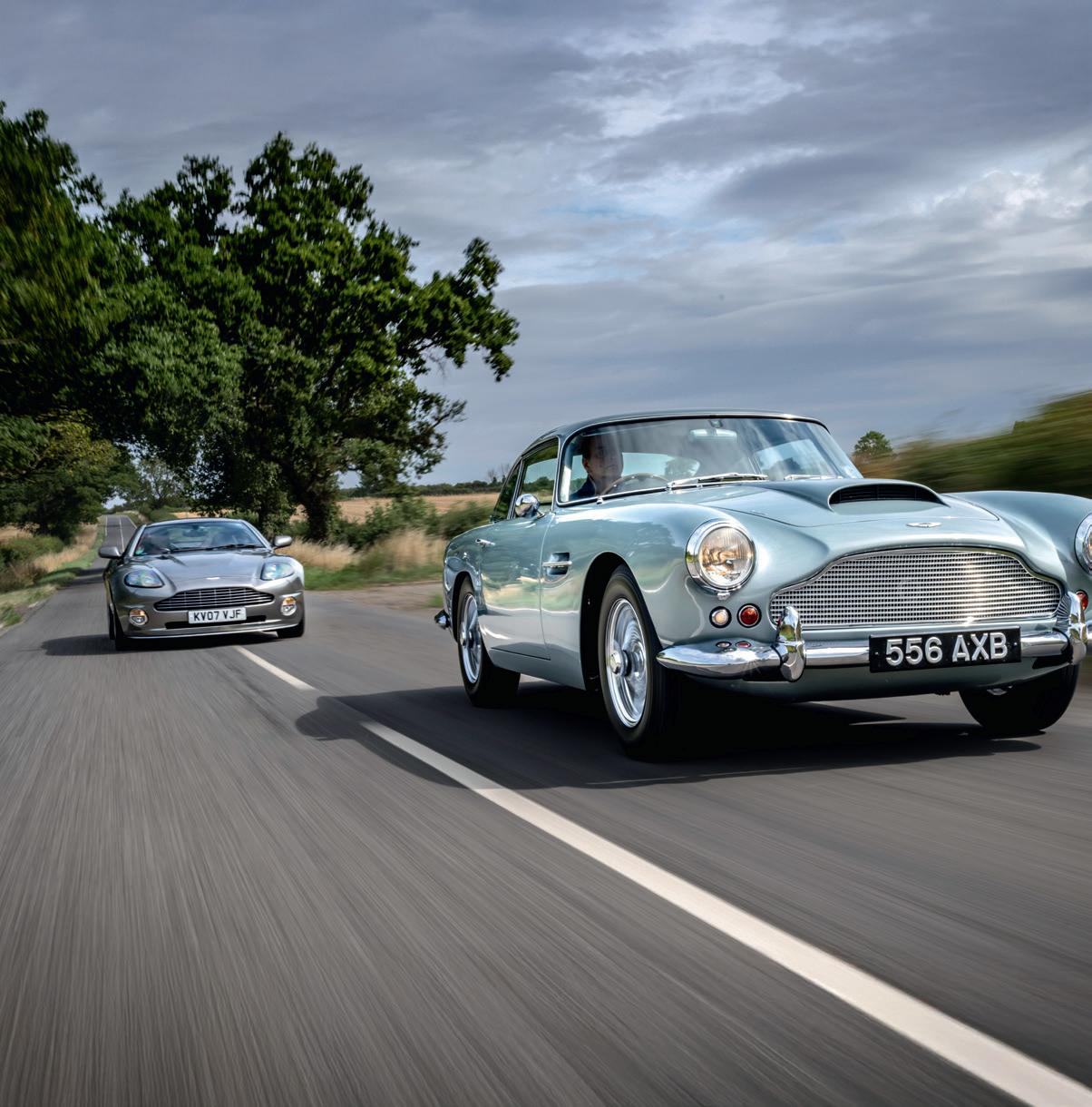



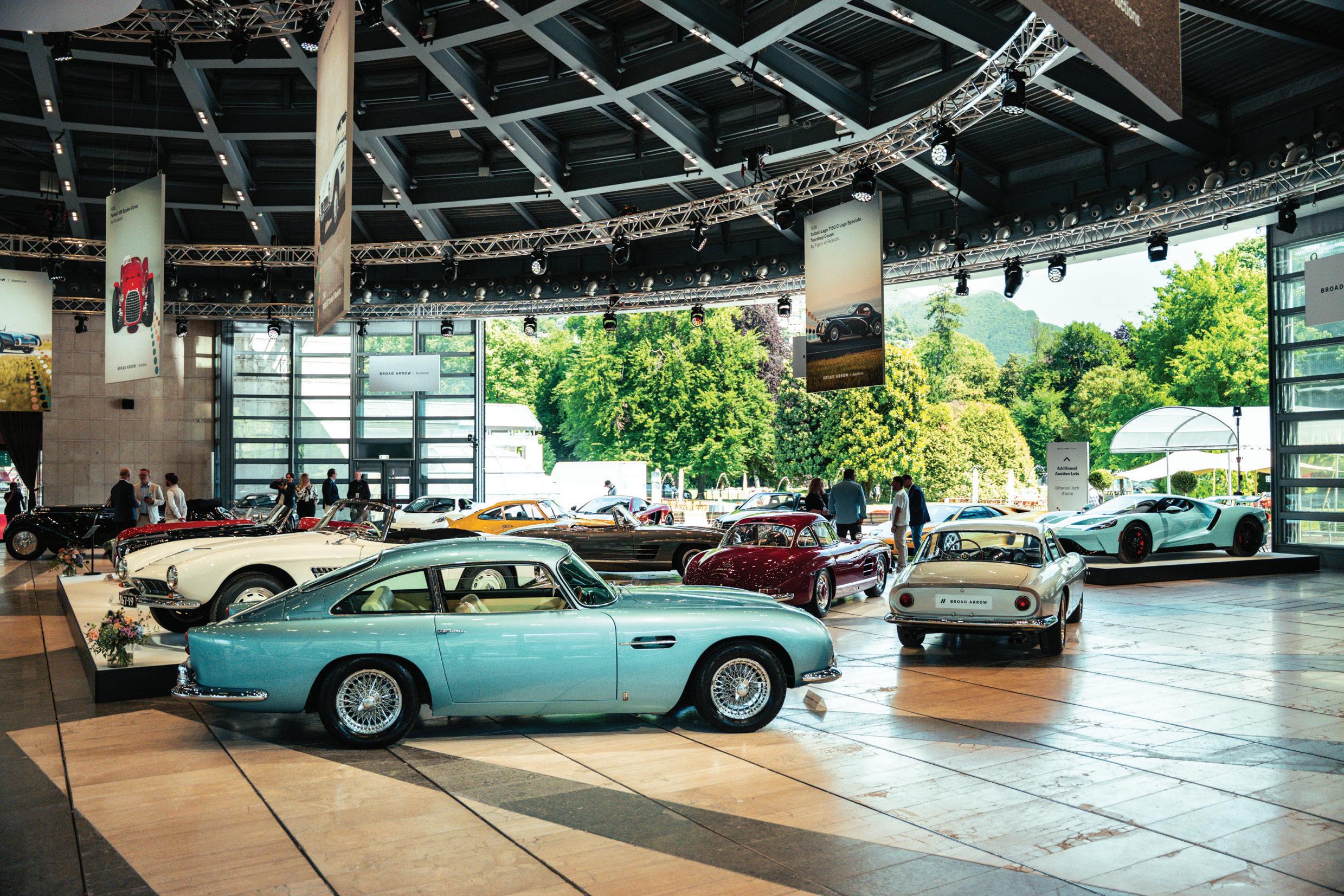


Discover the fusion of cutting-edge technology and exclusive design. Seamlessly blending into your luxury living space, the bespoke C SEED N1 TV is encased in the finest handcrafted finish, tailor-made and customizable to match any interior. When closed, it exudes the elegance of fine furniture, resembling a sleek and sophisticated sideboard.
At the touch of a button, the TV gracefully rises to a majestic height of two meters, and five 4K high-brightness MicroLED panels unfold like the petals of a blooming flower. In just 45 seconds, they form a stunning display measuring 165, 137, or 103 inches.
C SEED’s unique patented Adaptive Gap Calibration ensures that the borders between the panels vanish, giving you a perfect, uninterrupted visual experience.
The ultra-high-resolution display transforms any room into a cinematic paradise, offering breathtaking visuals in any lighting condition.
The C SEED N1 redefines the synergy of technology and luxury living - it is a statement of sophisticated taste and a testament to the unforgettable moments you’ll share.
The C SEED N1 TV is available in three sizes: 165, 137, and 103 inches, as well as in various colors and bespoke finish options.









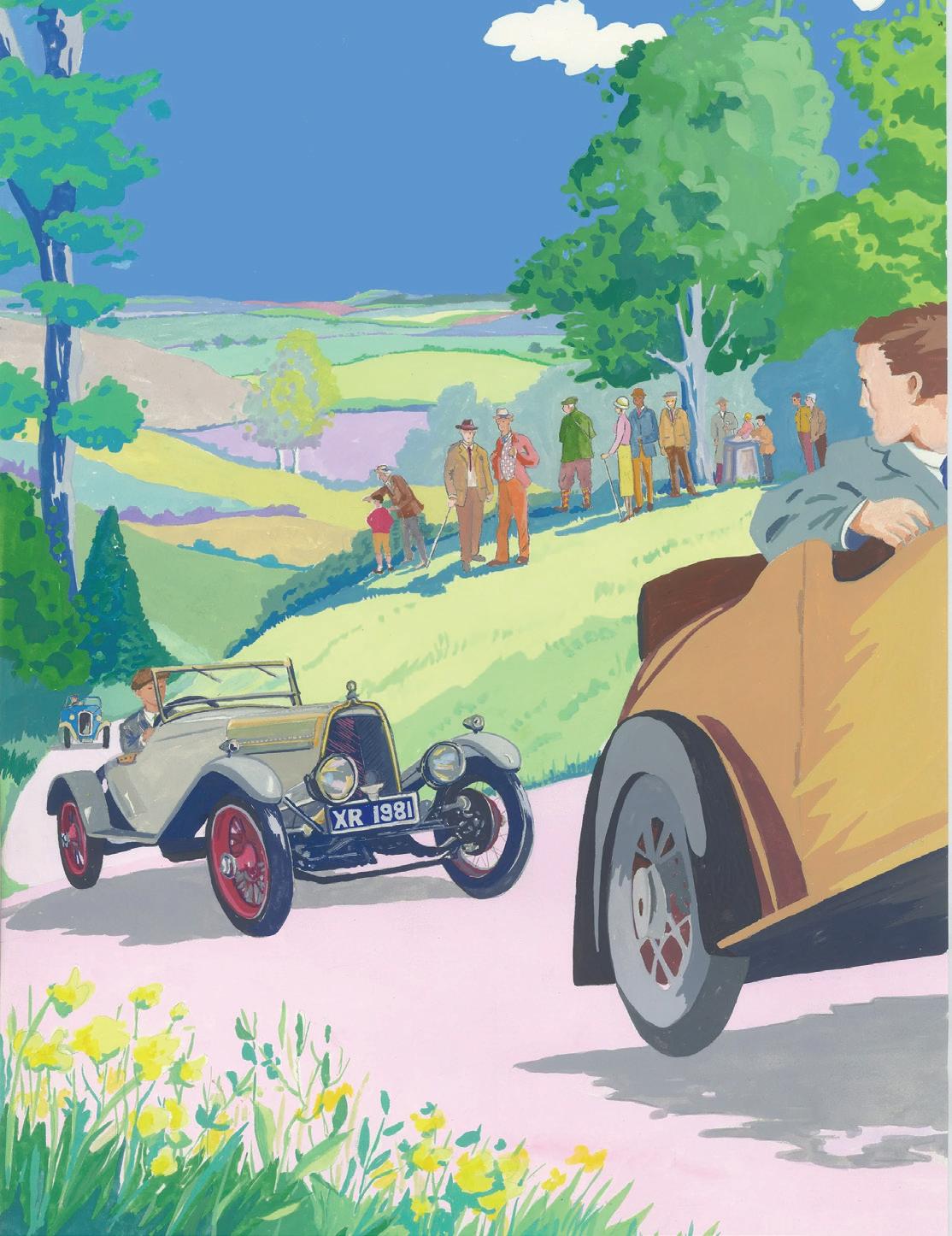




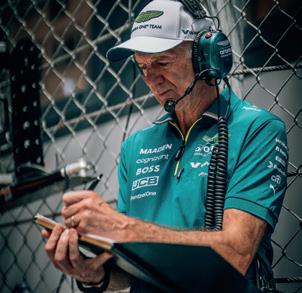
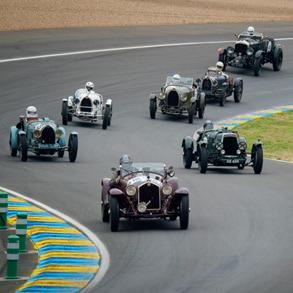
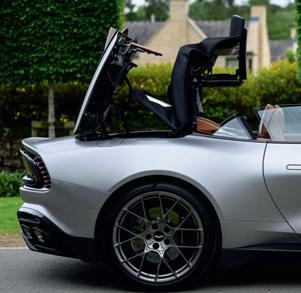
Editor
Aston
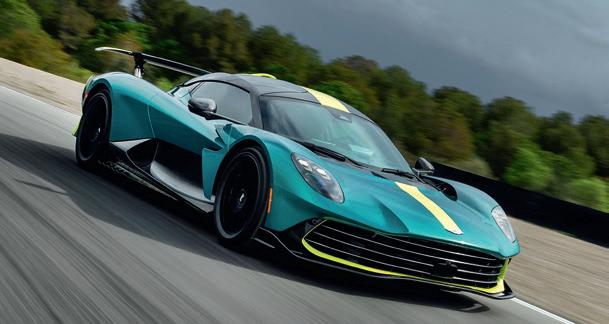
Aston-related
All
It’s
The
The
F1
Two icons that bookended production at Newport Pagnell. By Andrew Frankel
Photographer
John
Richard
The modern Aston race driver tries his hand at Vintage racing in a ’30s classic
Mark Dixon test the new soft-top and looks back over 60 years of Volantes
Stephen Archer tells the remarkable story of an early DB, now restored
The most exciting new car for years? David Lillywhite thinks so



22-26 June 2026





22-26 June 2026

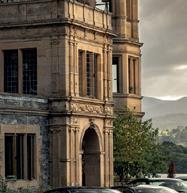
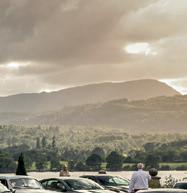

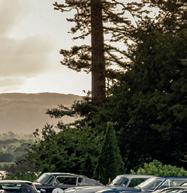



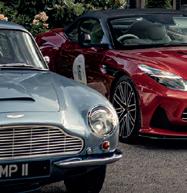
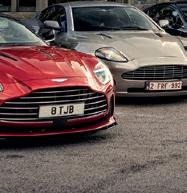

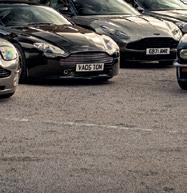



brings together Aston Martin owners for an breathtaking landscapes of the Yorkshire this refined automotive experience, you’ll celebrated driving roads – sweeping open scenic valleys. Our destination for 2026 is Hall. Here, you’ll be treated to exceptional offering a culinary journey as exquisite drives, relax and rejuvenate in the Hall’s state-of-the-art facilities and an array of revitalise both body and mind.



Join us as Peak Classic brings together Aston Martin owners for an exclusive tour through the breathtaking landscapes of the Yorkshire Dales. Over the course of this refined automotive experience, you’ll enjoy some of the UK’s most celebrated driving roads – sweeping open routes, winding passes, and scenic valleys. Our destination for 2026 is the award-winning Grantley Hall. Here, you’ll be treated to exceptional dining from world-class chefs, offering a culinary journey as exquisite as the drive itself. Between drives, relax and rejuvenate in the Hall’s luxury spa, complete with state-of-the-art facilities and an array of treatments designed to revitalise both body and mind.


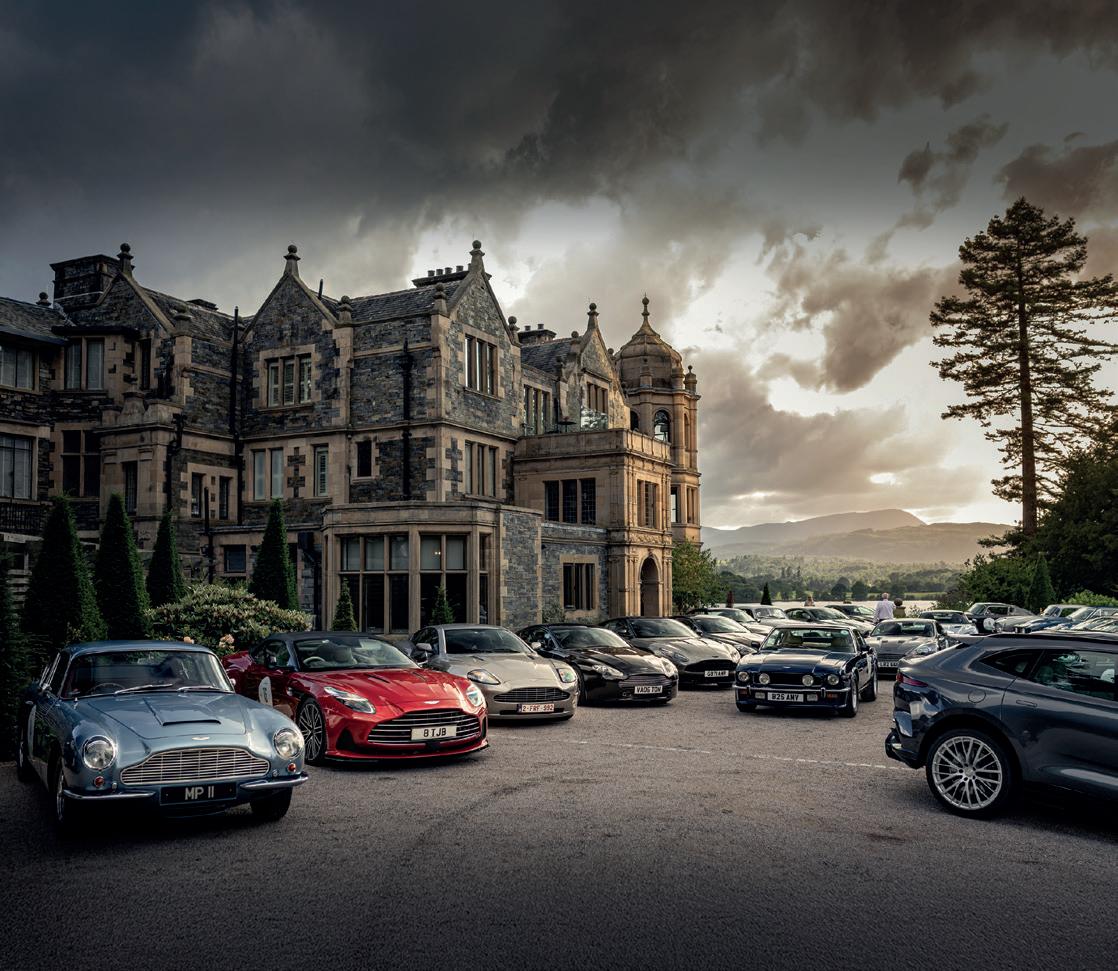
peak-classic.co.uk


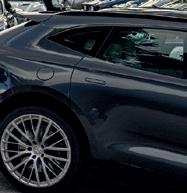

RESERVE YOUR PLACE NOW - SPACE IS LIMITED
Join us as Peak Classic brings together Aston Martin owners for an exclusive tour through the breathtaking landscapes of the Yorkshire Dales. Over the course of this refined automotive experience, you’ll enjoy some of the UK’s most celebrated driving roads – sweeping open routes, winding passes, and scenic valleys. Our destination for 2026 is the award-winning Grantley Hall. Here, you’ll be treated to exceptional dining from world-class chefs, offering a culinary journey as exquisite as the drive itself. Between drives, relax and rejuvenate in the Hall’s luxury spa, complete with state-of-the-art facilities and an array of treatments designed to revitalise both body and mind.
Join us as Peak Classic brings together Aston Martin owners for an exclusive tour through the breathtaking landscapes of the Yorkshire Dales. Over the course of this refined automotive experience, you’ll enjoy some of the UK’s most celebrated driving roads – sweeping open routes, winding passes, and scenic valleys. Our destination for 2026 is the award-winning Grantley Hall. Here, you’ll be treated to exceptional dining from world-class chefs, offering a culinary journey as exquisite as the drive itself. Between drives, relax and rejuvenate in the Hall’s luxury spa, complete with state-of-the-art facilities and an array of treatments designed to revitalise both body and mind.
RESERVE YOUR PLACE NOW - SPACE IS LIMITED


Join us as Peak Classic brings together Aston Martin owners for an exclusive tour through the breathtaking landscapes of the Yorkshire Dales. Over the course of this refined automotive experience, you’ll enjoy some of the UK’s most celebrated driving roads – sweeping open routes, winding passes, and scenic valleys. Our destination for 2026 is the award-winning Grantley Hall. Here, you’ll be treated to exceptional dining from world-class chefs, offering a culinary journey as exquisite as the drive itself. Between drives, relax and rejuvenate in the Hall’s luxury spa, complete with state-of-the-art facilities and an array of treatments designed to revitalise both body and mind.
RESERVE YOUR PLACE NOW - SPACE IS LIMITED
Join us as Peak Classic brings together Aston Martin owners for an exclusive tour through the breathtaking landscapes of the Yorkshire Dales. Over the course of this refined automotive experience, you’ll enjoy some of the UK’s most celebrated driving roads – sweeping open routes, winding passes, and scenic valleys. Our destination for 2026 is the award-winning Grantley Hall. Here, you’ll be treated to exceptional dining from world-class chefs, offering a culinary journey as exquisite as the drive itself. Between drives, relax and rejuvenate in the Hall’s luxury spa, complete with state-of-the-art facilities and an array of treatments designed to revitalise both body and mind.
Tel: +44 (0)7916 158152
peak-classic.co.uk

Tel: +44 (0)7916 158152
info@peak-classic.co.uk
info@peak-classic.co.uk
peak-classic.co.uk
Tel: +44 (0)7916 158152
peak-classic.co.uk
info@peak-classic.co.uk
+44 (0)7916 158152
Join us as Peak Classic brings together Aston Martin owners exclusive tour through the breathtaking landscapes of the Yorkshire Dales. Over the course of this refined automotive experience, enjoy some of the UK’s most celebrated driving roads – sweeping routes, winding passes, and scenic valleys. Our destination for the award-winning Grantley Hall. Here, you’ll be treated to exceptional dining from world-class chefs, offering a culinary journey as exquisite as the drive itself. Between drives, relax and rejuvenate in the luxury spa, complete with
Join us as Peak Classic brings together Aston Martin owners for an exclusive tour through the breathtaking landscapes of the Yorkshire Dales. Over the course of this refined automotive experience, you’ll enjoy some of the UK’s most celebrated driving roads – sweeping open routes, winding passes, and scenic valleys. Our destination for 2026 is the award-winning Grantley Hall. Here, you’ll be treated to exceptional dining from world-class chefs, offering a culinary journey as exquisite as the drive itself. Between drives, relax and rejuvenate in the Hall’s luxury spa, complete with state-of-the-art facilities and an array of treatments designed to revitalise both body and mind.
Tel: +44 (0)7916 158152
info@peak-classic.co.uk
Tel: +44 (0)7916 158152
22-26 June 2026 RESERVE YOUR PLACE NOW - SPACE IS LIMITED peak-classic.co.uk
Tel: +44 (0)7916 158152 info@peak-classic.co.uk


Join us as Peak Classic brings together exclusive tour through the breathtaking Dales. Over the course of this refined automotive enjoy some of the UK’s most celebrated driving routes, winding passes, and scenic valleys. the award-winning Grantley Hall. Here, you’ll dining from world-class chefs, offering a as the drive itself. Between drives, relax luxury spa, complete with state-of-the-art treatments designed to revitalise both body

Tel: +44 (0)7916 158152
info@peak-classic.co.uk

It’s good to be back
A WARM WELCOME TO THIS SPECIAL edition of Vantage, a celebration of everything Aston Martin.
When we first launched Vantage back in 2013, it was to mark Aston Martin’s centenary, a time of great excitement for the marque and its followers. Thereafter the magazine was published quarterly for almost a decade, and we had an absolute blast making it. But then Covid struck, and the publisher took the difficult decision to suspend publication. So I am delighted to be writing the introduction to this special issue, which sees the Vantage name return to the newsstands.
Why now? Because, just as in 2013, these are wonderfully exciting times for Aston Martin. The range of road cars has never been more compelling: Vantage, DB12, DBX and Vanquish represent the company’s strongest offering since the mid-2000s and the heady era of DB9 and early Gaydon Vantage. And now we have the launch of Valhalla, the marque’s first mid-engined PHEV supercar.
Then there’s Aston Martin’s great F1 adventure, given a massive boost with the signing of the legend that is Adrian Newey to design the next car. And, not forgetting, summer 2025 saw Aston back at Le Mans, competing for outright victory for the first time since 2012 with the sensational Valkyrie Hypercar.
So many great cars, so many stories to tell… we simply had to fire up Vantage once again. And I’m delighted to say that many of the original team are back to tell those stories, including road testing maestro Andrew Frankel, Aston guru Stephen Archer and former editor Richard Meaden, whose drive story to this year’s Le Mans in an utterly gorgeous DB4 GT to cheer on the howling Valkyries sums up the spread and the spirit of the magazine perfectly.
We hope you enjoy this return of Vantage as much as we’ve enjoyed making it, and please do spread the word to fellow Aston enthusiasts because we’d love to produce more issues. After all, the Aston Martin story only gets more compelling with each passing year, and we have a feeling there are many more great Astons to come. The next chapter might just be the most exciting yet!
PETER TOMALIN Editor
Vantage Magazine
Hothouse Media, Unit 16, Enterprise Centre, Michael Way, Warth Park Way, Raunds, Northants NN9 6GR, UK www.hothousemedia.co.uk
Editor Peter Tomalin
Art director Andrew Thomas
Creative director Peter Allen Editor-in-chief James Elliott email: james@octane-magazine.com
Advertising director Rob Schulp email: rob@flyingspace.co.uk
Advertising director Sue Farrow email: sue@flyingspace.co.uk
Advertising production Elaine Briggs email: elaine@hothousemedia.co.uk
Accounts Jonathan Ellis email: accounts@hothousemedia.co.uk
Managing director Geoff Love email: geoff@hothousemedia.co.uk
Editorial director David Lillywhite email: david@hothousemedia.co.uk
Printed by Buxton Press

© Hothouse Media. Vantage and associated logos are registered trademarks of Hothouse Media. All rights reserved. All material in this magazine, whether in whole or in part, may not be reproduced, transmitted or distributed in any form without the written permission of Hothouse Media.
Hothouse Media uses a layered privacy notice giving you brief details about how we would like to use your personal information. For full details, please visit www.magnetomagazine.com/privacy.
ISSN Number 2631-9489.
Vantage is published by Hothouse Publishing Ltd. Registered office: Castle Cottage, 25 High Street, Titchmarsh, Northants NN14 3DF, UK.
Great care has been taken throughout the magazine to be accurate, but the publisher cannot accept any responsibility for any errors or omissions that might occur.
The editors and publishers of this magazine give no warranties, guarantees or assurances, and make no representations regarding any goods or services advertised in this edition.
Aston Martin marks 60 years of the Volante line with a pair of very special editions
PETER TOMALIN PHOTOGRAPHY AML
Volante is the name that has been given to Aston Martin’s most potent and glamorous convertibles ever since the mid-60s, starting with the ultra-rare Short Chassis Volante released in 1965. And now the company has marked the 60th anniversary of the name with a pair of limited editions, specially developed by its ‘Q’ bespoke division.
The DB12 Volante and the Vanquish Volante are both available in ‘60th Anniversary’ form, with just 60 examples of each being offered.
The mechanical specification of both will remain as standard, though there will be no complaints about that. Both DB12 and Vanquish have received rave reviews from the motoring media, and their performance figures are at near-supercar levels. The DB12 Volante’s 4-litre twinturbo V8 produces 671bhp, giving 0-60mph in 3.6sec and a top speed of 202mph. The Vanquish is even more powerful, its 5.2-litre twin-turbo V12 making a staggering 823bhp, which translates to a 0-60mph time of just 3.4sec and a top speed of 214mph, making it the fastest and most powerful production convertible Aston yet.


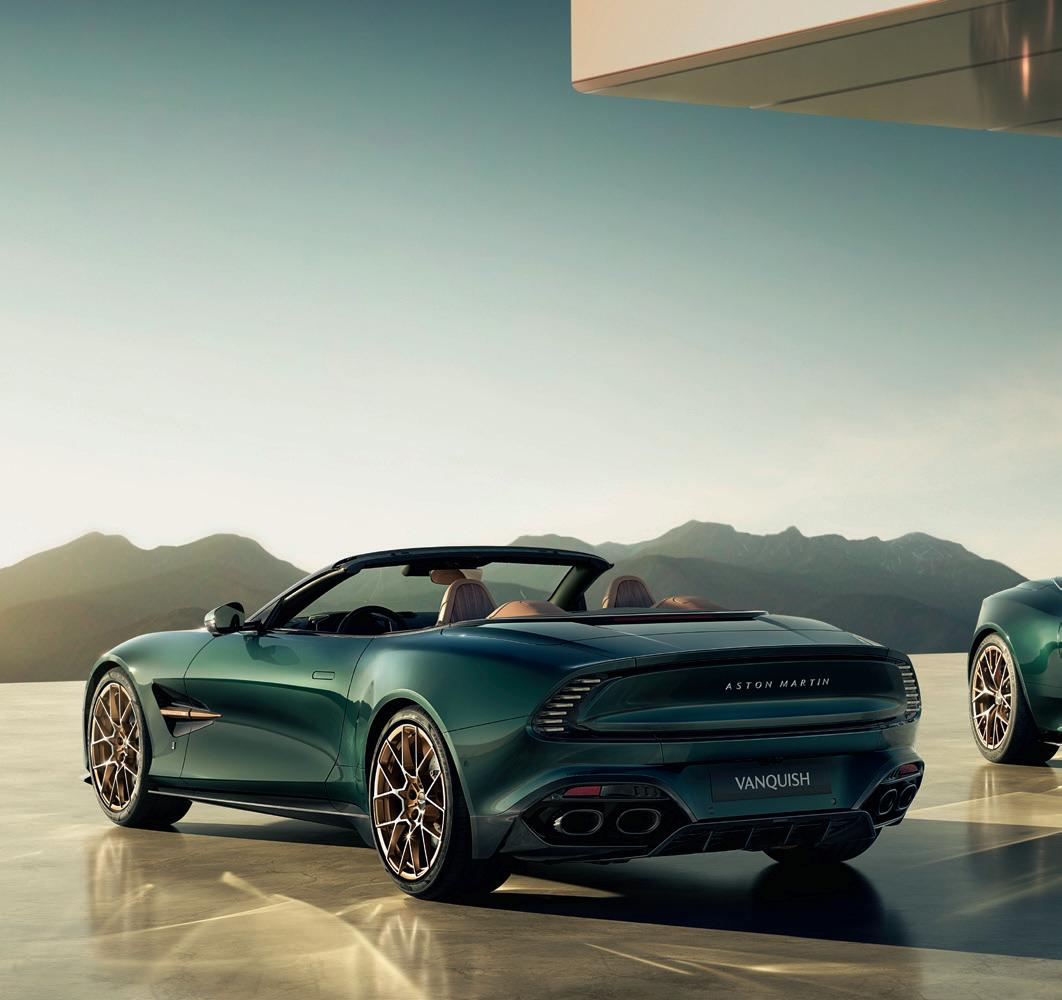
So these special editions are all about the aesthetics, and it’s unlikely they’ll disappoint there either. They’re finished in Q Pentland Green, with their hoods in Q Westminster Green fabric and accents in anodised bronze, as are the vanes in the front grille. The exclusive 21in wheels are finished in satin bronze with diamondturned edges, complemented by black, Aston-branded brake calipers. The bronze theme continues with the iconic Aston Martin side strake, precision-milled from solid billet aluminium and anodised, with an enamelled Q by Aston Martin badge sitting just below.
Inside, there are exclusive tri-tone colourways consisting of Centenary Saddle Tan, Ivory and Woven leathers, with Dark Walnut Open Pore veneers, bronze touchpoints and bespoke 60th Anniversary embroidery.
Prices had yet to be confirmed at time of going to press, but deliveries of both models were due to commence in the final quarter of 2025.
Turn to p142 to read our review of the Vanquish Volante and p150 for our look back at 60 years of Volantes.

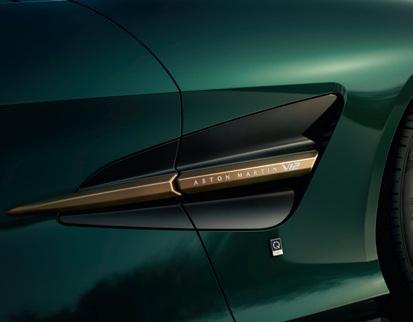
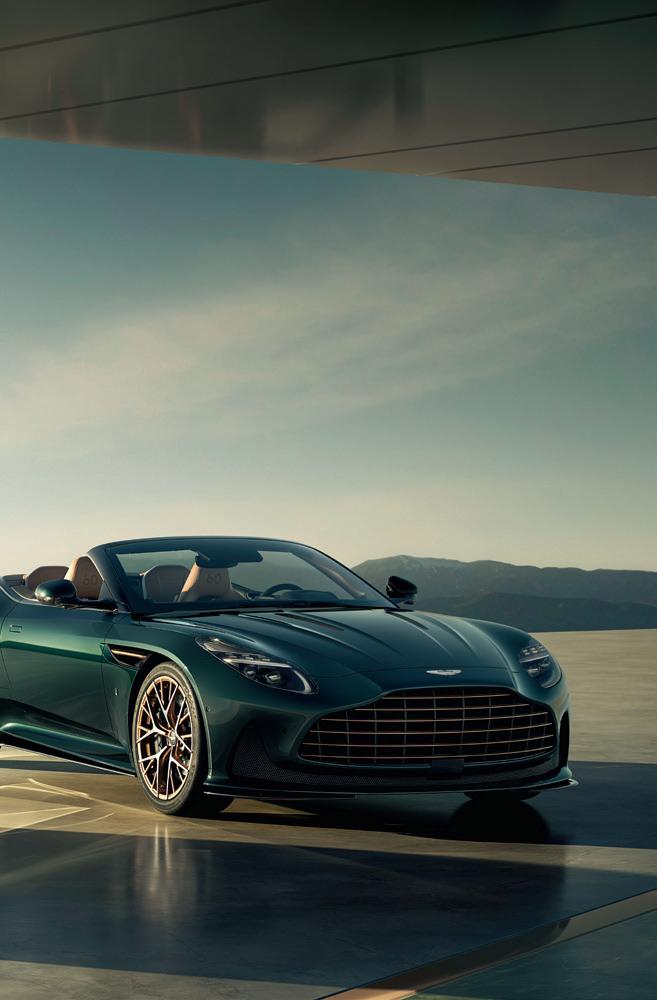
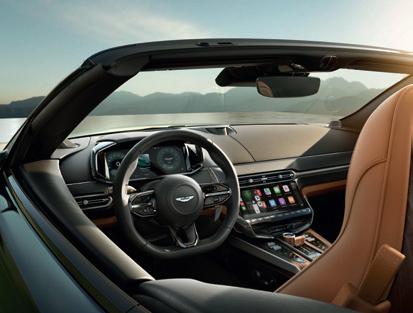
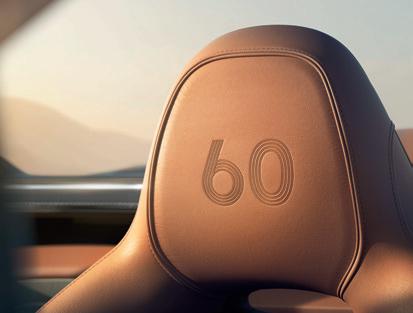
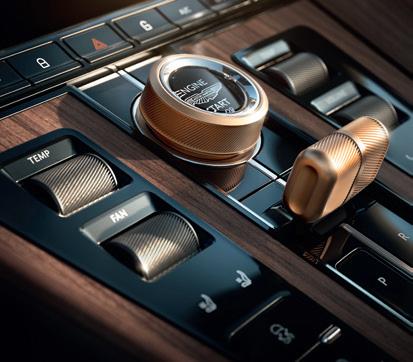
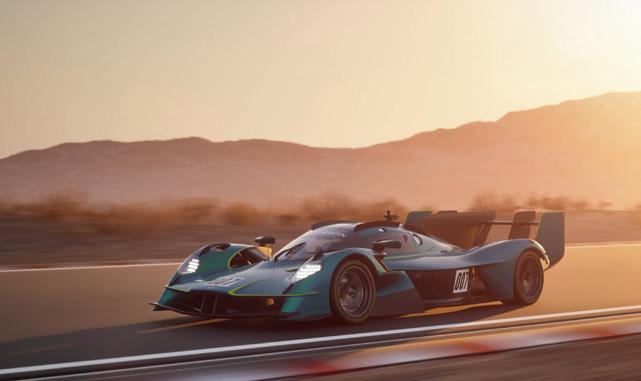
Ten lucky buyers will be able to experience the speed and fury of a current Le Mans Hypercar following Aston Martin’s decsion to build a strictly limited run of Valkyrie LM models, perhaps the ultimate rich man’s plaything.
The track-only LM keeps the same powertrain as the racer that competed at this year’s 24 Hours, which means it ditches the Valkyrie road car’s hybrid system but retains the racer’s lean-burn 6.5-litre naturally aspirated V12, tuned to a regulation-limited 697bhp. More than enough to be getting on with for a privately owned track car.
Torque sensors for managing power
2025 saw the passing of the designer who shaped many classics, including Aston’s iconic DB4 GT Zagato
delivery have also been removed, and the V12 has been adapted to accept more readily available fuel.
Other differences between the LM and the race-car include the removal of ballast and FIA regulation electronics, and the addition of more user-friendly, trackday-focused cockpit interfaces. You still get a custom carbonfibre race seat, along with a six-point harness and fire suppression system.
Along with a HANS device and full bespoke race kit, each Valkyrie LM also comes with membership of a tailored driver development programme combined with a series of exclusive trackdays put on by Aston Martin.
Valkyrie LM is essentially the current race car, stripped of FIA-imposed ballast and electronics
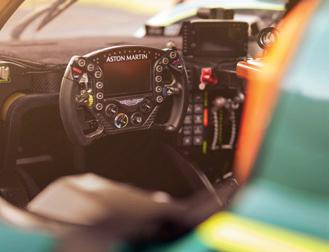
‘Valkyrie LM is an opportunity to be part of the most exclusive Aston Martin owners’ club in the world,’ said Aston CEO Adrian Hallmark. ‘A group who can immerse themselves in the purest and most comparable endurance driving experience, one that would otherwise only be available to our works drivers. There has never been an opportunity to get closer to the raw dynamic forces and state-of- the-art technology deployed by the hypercar currently competing in WEC and IMSA.’
Deliveries are due to start in early summer 2026. No price has been released, but informed speculation suggests it will be around £5.5 million.
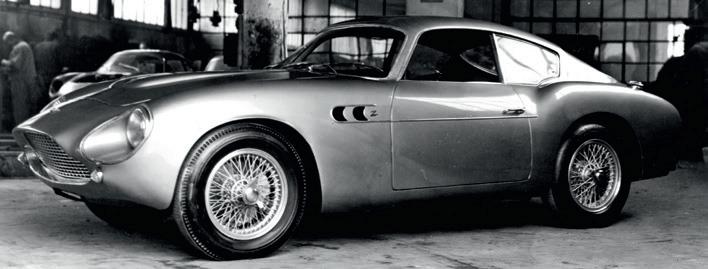

ERCOLE SPADA WAS JUST 23 WHEN he designed the Aston Martin that many still view as the most beautiful and desirable of them all. He had only just arrived at Zagato, fresh from completing his technical studies, and the DB4 GT was his first full design project. He would go on to design many seminal cars, including the Alfa Romeo SZ, TZ and Junior Z.
Born in Busto Arsizio in Lombardy in 1937, Spada trained as an industrial engineer before joining Zagato. During his later time at Ghia, he created Ford’s GT70 concept, and at BMW he was involved in the creation of the E34 5-series and E32 7-series. He returned to Italy to lead design at the I.DE.A Institute, penning the Fiat Tipo, Lancia Dedra and Alfa 155 amongst others. He died aged 88 on 3 August 2025.
The very first DB4 GT Zagato pictured at the Zagato works in late 1960


















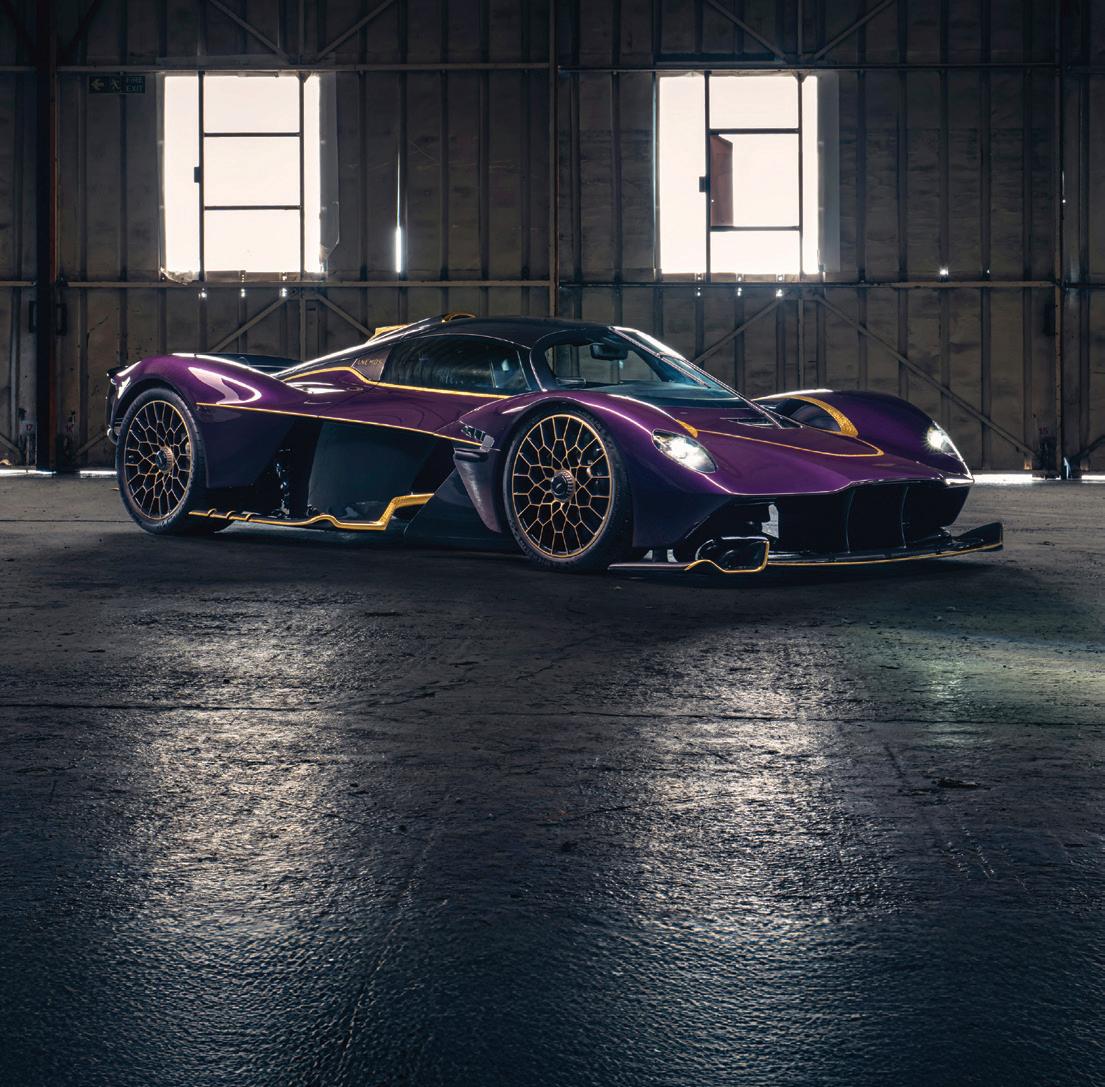
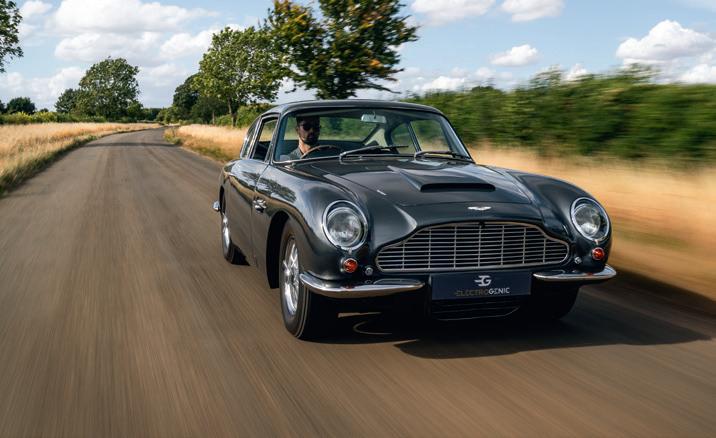
Twith news that comedian Jimmy Carr had taken delivery of a DB6 converted to electric power by British company Electrogenic.
The Oxfordshire-based firm had previously converted a 1920s RollsRoyce Phantom II for Hollywood actor Jason Momoa and offers ‘drop-in’ conversion kits for a range of classics, including the Jaguar E-type, DeLorean DMC-12 and BMC Mini.
As with all its conversions, nothing was cut, drilled or welded on the Aston, and the transplant is entirely reversible. The hardware includes 60kWh of premium OEM batteries, fitted beneath the bonnet and above the rear axle where the fuel tank was originally located. The e-motor delivers 200bhp and 229lb ft of torque to the rear wheels, driving through a bespoke 2.9:1 fixed-ratio reduction gearbox.
of 90+mph. Regenerative braking helps boost range (a claimed 150+ miles in mixed driving conditions) and the conversion facilitates 6.6kW AC charging and CCS rapid charging.
For prospective owners seeking more performance, Electrogenic also offers an optional motor upgrade with 280bhp and 332lb ft of torque, enough for a 4.5-second 0-60mph sprint and 125mph top speed and sensibly available with a sports suspension kit.
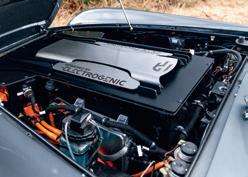
share a common bond
A RATHER SPECIAL PAIR OF rare Lagondas is being offered by the Bovingdon-based Chiltern Aston Centre,
The 1963 Rapide on the left had one owner for almost its entire life, Ken Smith, who bought it from its first owner when it was just three months old and owned it for almost half a century until 2012, when it was purchased by Chiltern Aston Centre’s Gordon Wyles.
The DB4-based Rapide was always a rare model: only 55
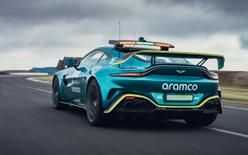
The new Vantage S has taken over Safety Car duties in Formula 1. The most performancefocused Vantage yet, the ‘S’ features an uprated 671bhp version of the twin-turbo 4-litre V8 and a number of aerodynamic upgrades including a new rear spoiler for increased downforce. The DBX707 continues as the F1 Medical Car.
just like any other but under the bonnet is a battery pack and e-motor
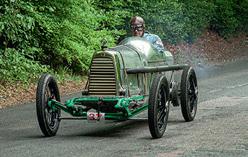
A number of early Astons, including the fabulous Razor Blade (pictured above), were in action on the famous Aston Hill in Buckinghamshire earlier this year to mark 100 years since the last competitive hillclimb was held there. The venue was a favourite of AM founder Lionel Martin, Aston and Martin having been linked ever since.

Independent Aston Martin specialist McGurk Performance Cars has invested in the latest AMDS 2 diagnostics equipment, allowing it to service all Astons right up to the current era. Boss John McGurk (above) commented: ‘We can now offer servicing for Aston Martins coming straight from the main dealer showroom.’
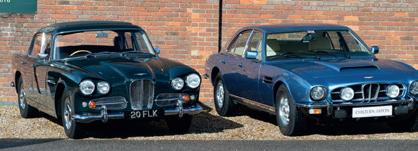
were sold in four years of production. But the mid-1970s V8-based Lagonda four-door on the right, known as a Series 1, is an even rarer beast. In two years of production a mere seven were built. And this one was owned

for most of its life by the very same Ken Smith, who bought it from AML in 1982.
Both cars have now been beautifully restored and are being offered for sale – ideally as a pair – at chilternaston.co.uk.
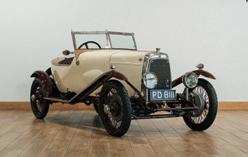
One we made earlier...
Really early Aston Martins rarely appear on the market, which is why this Sports model caught our eye, currently for sale at Aston Martin Works in Newport Pagnell, POA. It’s from 1923, the very first year of production proper (earlier cars had been one-offs and built chiefly for competition), and it’s absolutely gorgeous.
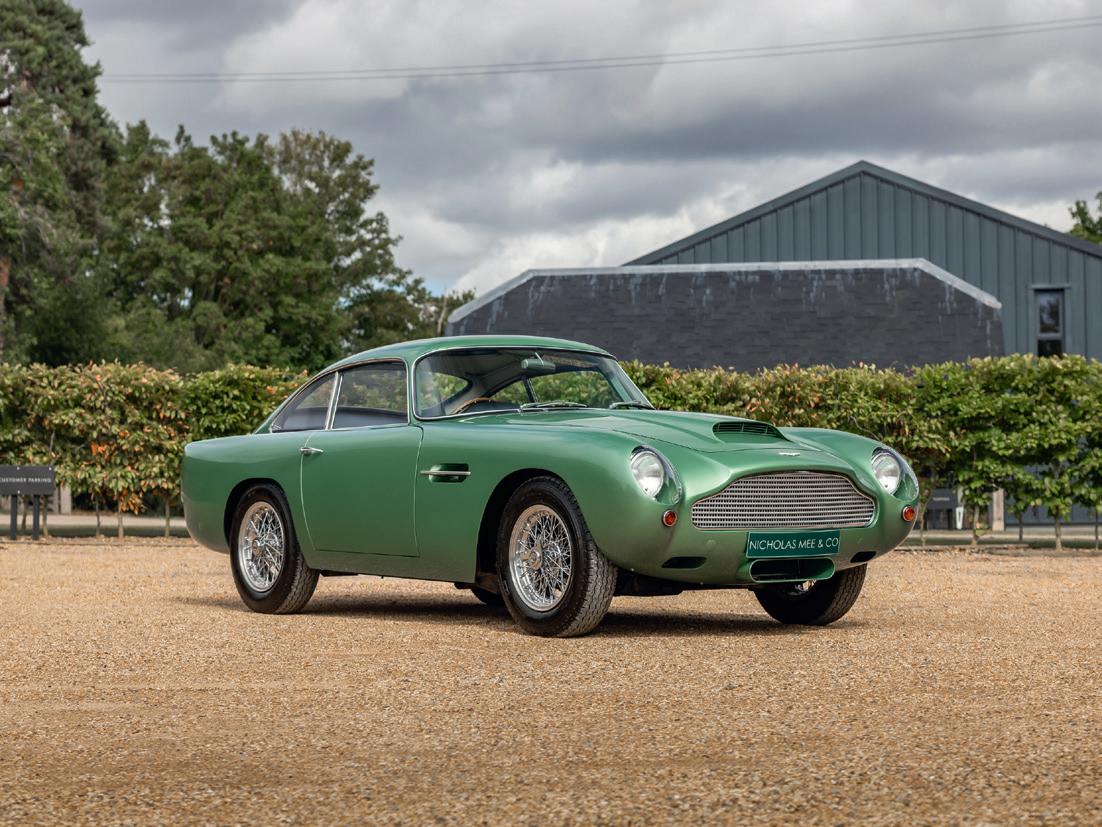
We are delighted to offer this sensational DB4 GT, finished in Sea Green with VM3253 Connolly Green hides, as it was when delivered new.

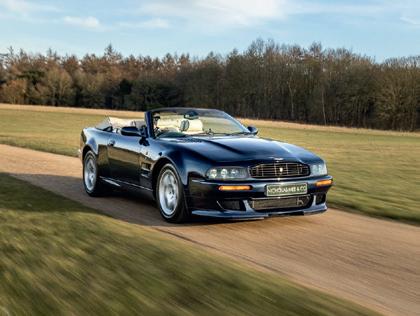
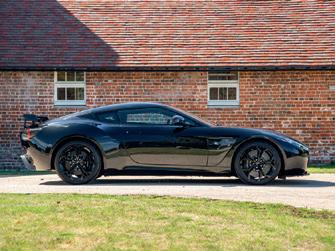
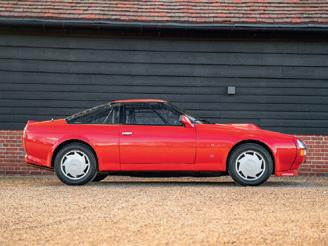
This superb example of the rare and highly coveted DB4 GT, has an excellent history, been the recipient of a world class restoration and has covered only very limited mileage, since completion of the restoration in 2015.

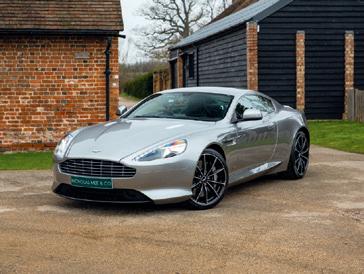
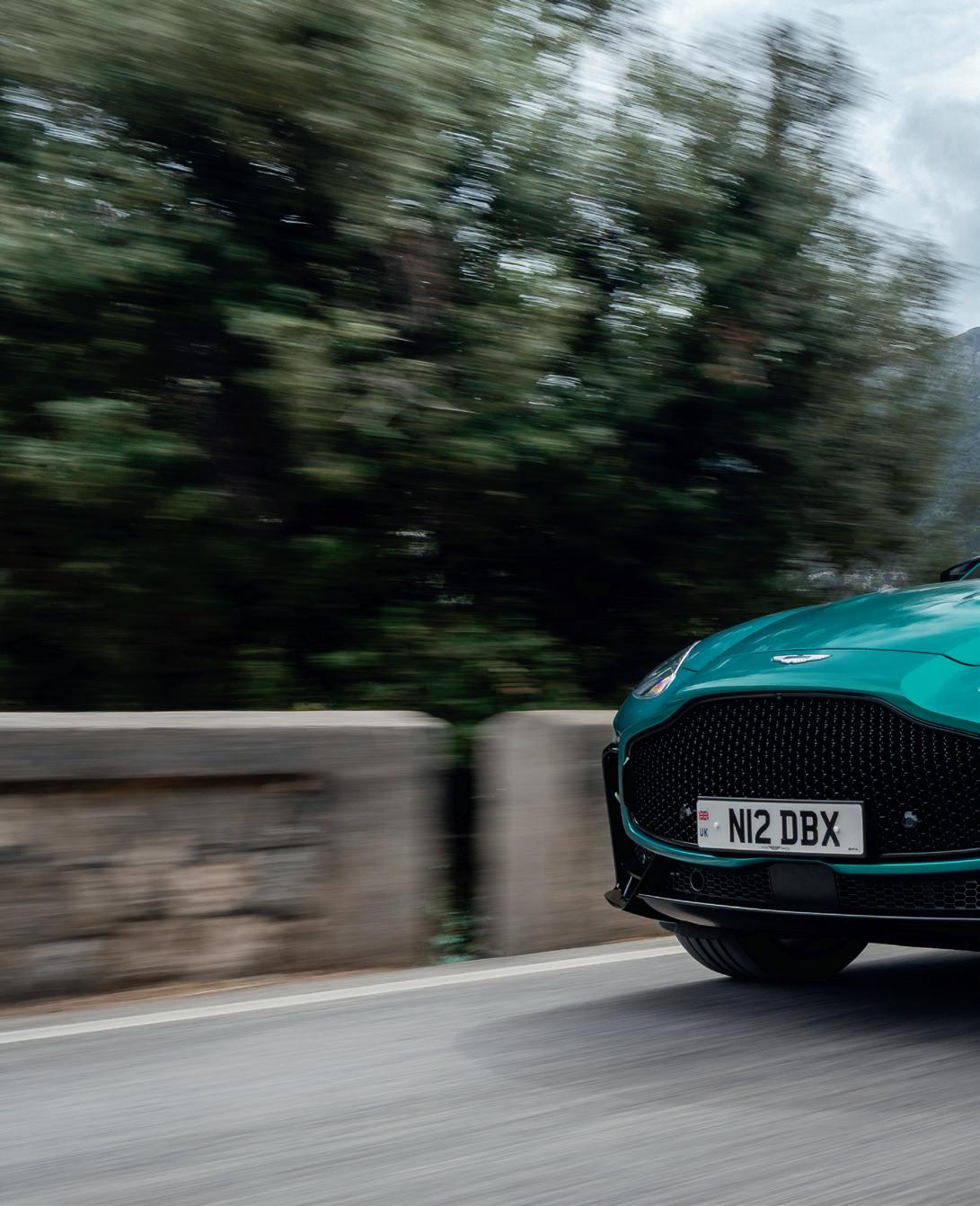
Aston’s super-SUV gains a new cutting edge with the launch of the even wilder S version
WORDS MATTHEW HAYWARD
PHOTOGRAPHY MAX EAREY FOR AML
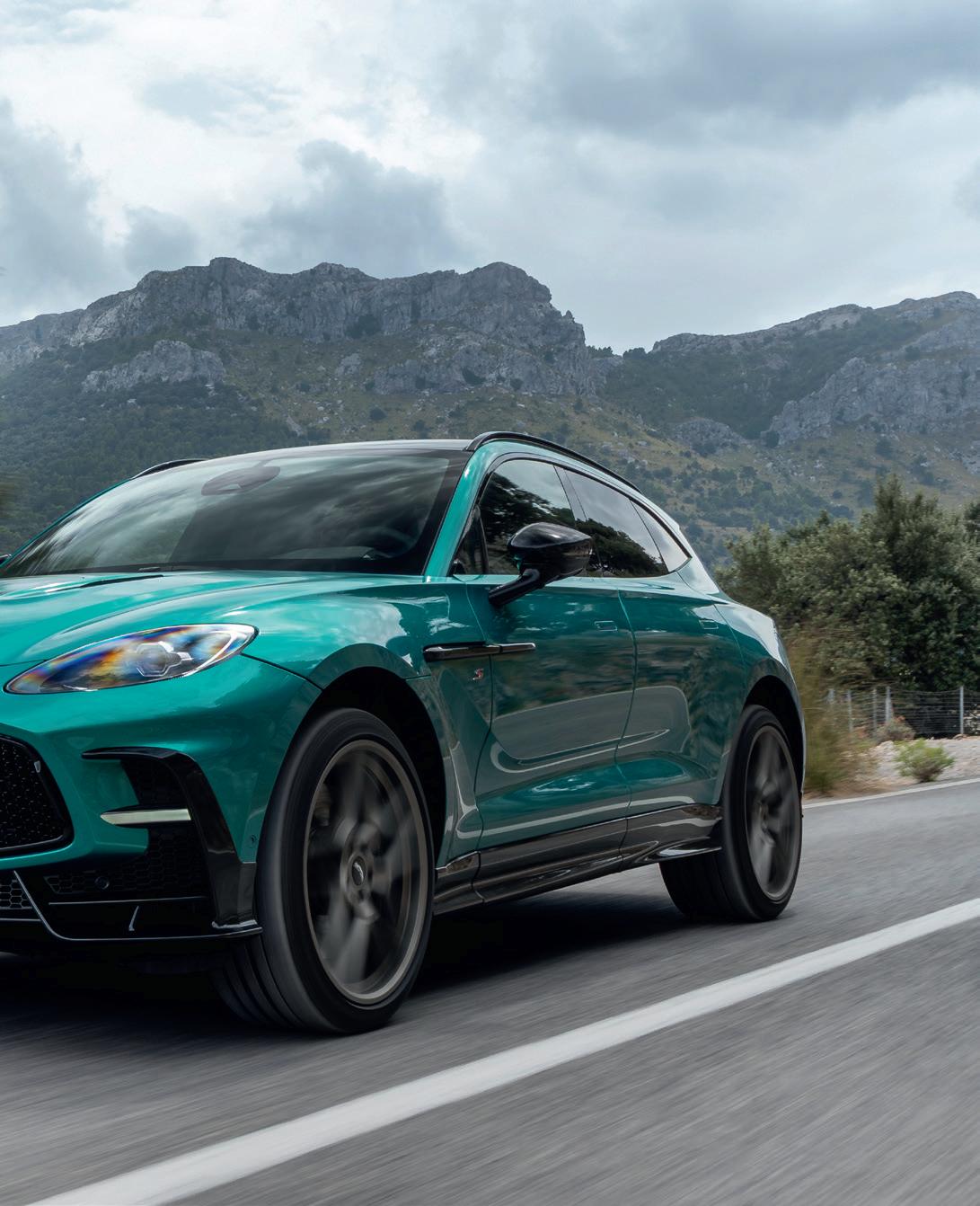
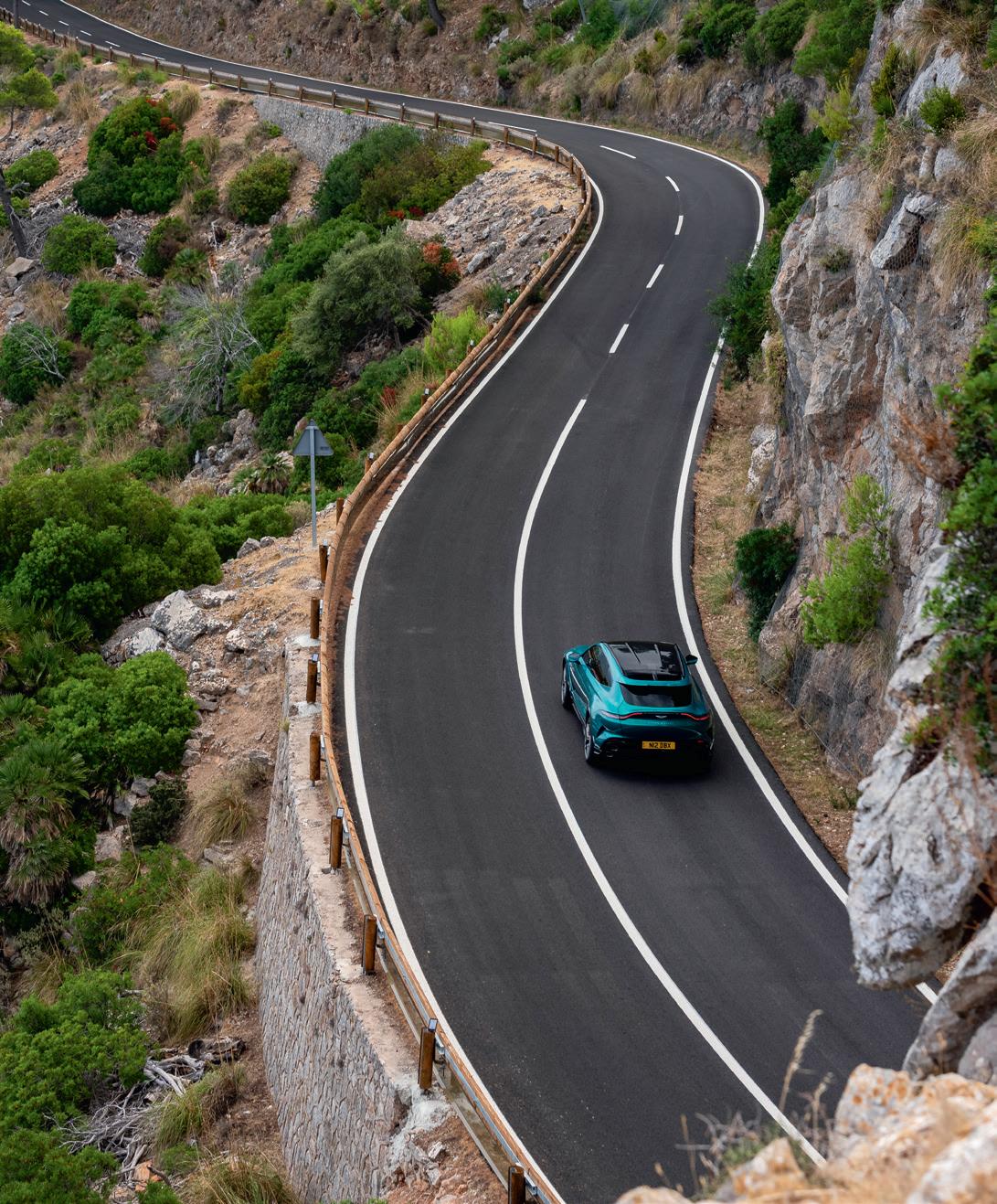
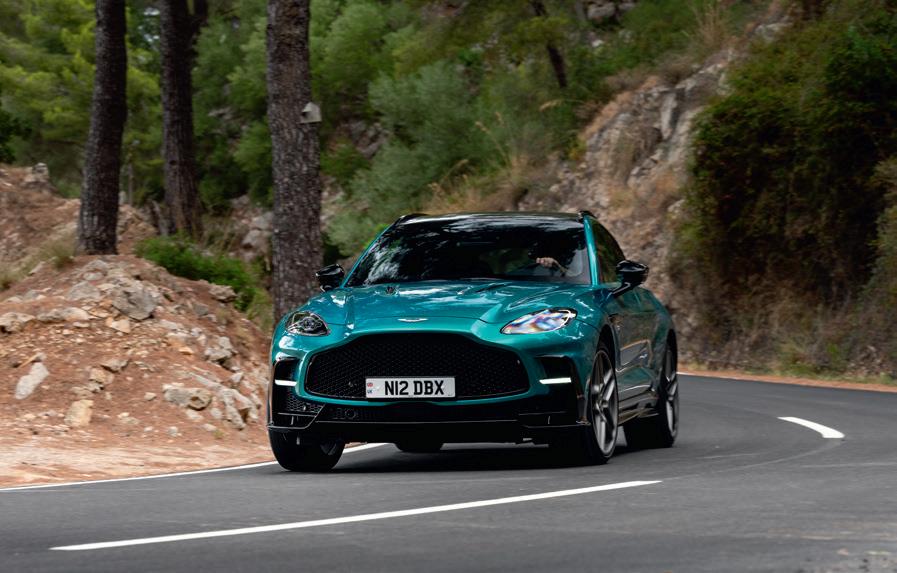
IT’S AMAZING HOW MUCH THE ADDITION OF A SINGLE letter can signify, and over the past two decades Aston Martin has used the letter S to mark out the peak evolution of many of its most successful models. You could argue that the original late-60s DBS, or even the 1950s DB3S racer was where that S suffix originated, but I’d contend it was with the introduction of the V12 Vanquish S in 2004.
The S version elevated the wonderful – if slightly flawed –handbuilt flagship to new heights, driven by customer demands and early criticism. S has since been applied to a number of models, including the V8 and V12 Vantages, the Rapide and again on the second-generation Vanquish in 2016. More recently it has appeared on the current Vantage. And now it has found its way onto the DBX.
After the DBX was facelifted in 2024, the 707 actually became the only option for buyers, with the standard entry-level 550 model quietly dropped. Not a surprise, given that 90 per cent of buyers were opting for the more powerful 707. The facelifted 707 also fixed many of the early DBX’s shortcomings, the biggest change being a hugely improved interior and the addition of Apple CarPlay Ultra.
Now the DBX S has now joined the range, sitting above the 707 as the ultimate version of Aston’s SUV. As there wasn’t really much to ‘fix’, Aston has been able to use its energy to further focus the DBX formula. Look under the bonnet and you will find the same 4-litre Mercedes-AMG-sourced twin-turbo V8 as in the 707, mated to the same nine-speed automatic gearbox with multi-plate wet clutch. Aston Martin’s engineers have managed to liberate an additional 20bhp utilising improved turbo technology (including the use of larger turbine wheels) developed for the Valhalla supercar. The torque figure remains unchanged at 664lb ft.

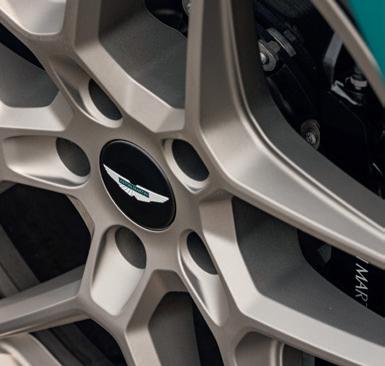
Among the S’s lightweight options are the 23in magnesium alloy wheels (left), which save a total of 19kg. Carbonceramic brakes are standard
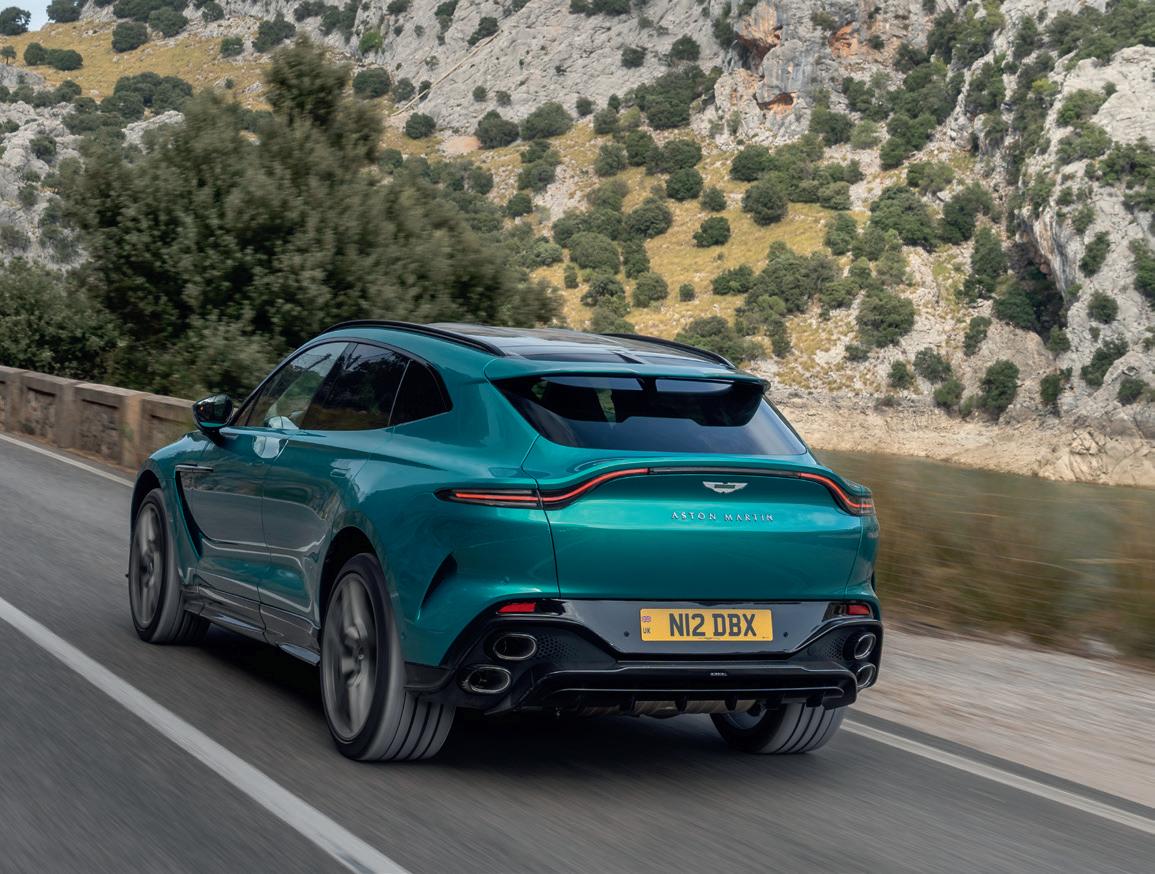
‘The uphill climb gives the V8 a proper chance to breathe. The performance really is staggering’
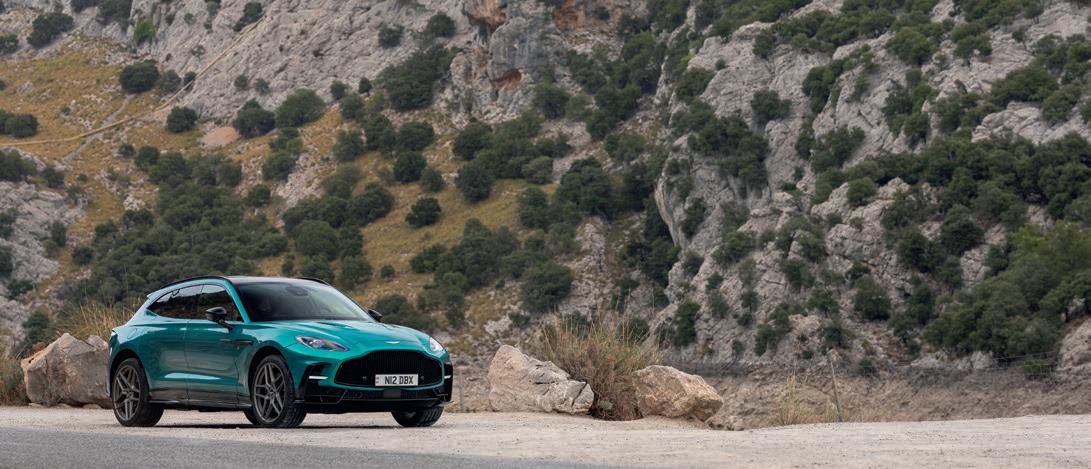
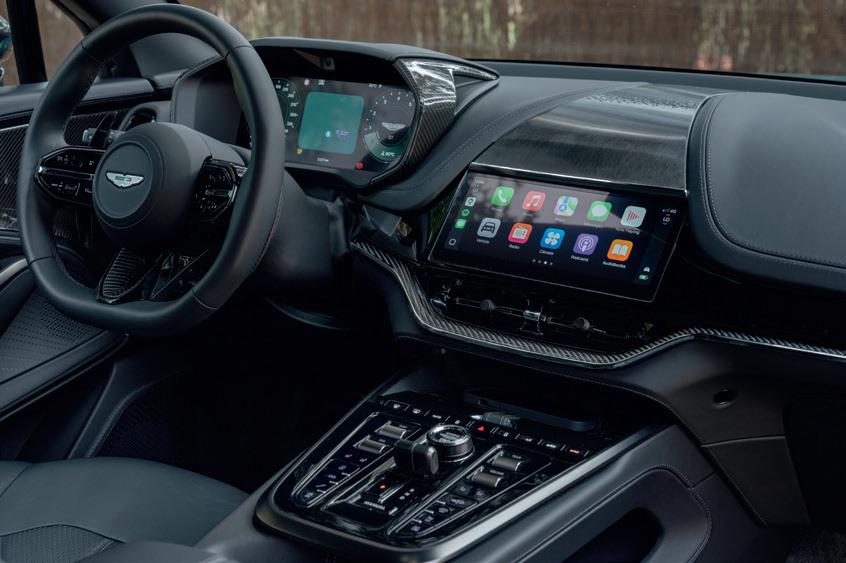
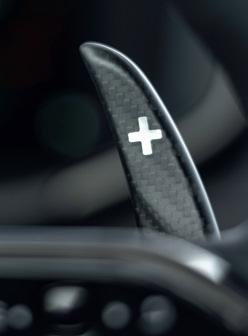
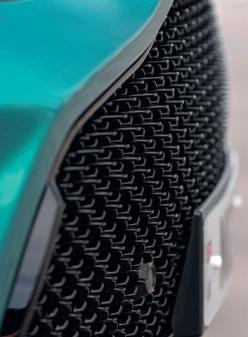
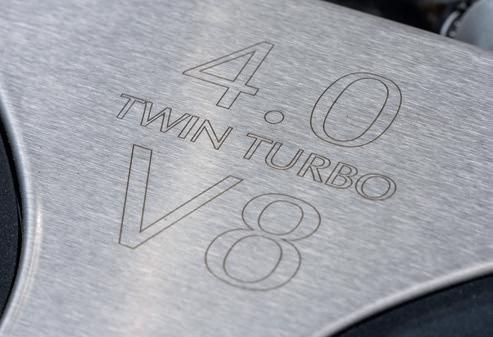
While the extra power is welcome, perhaps more impressive is the reduction in weight – although this is achieved only if the customer ticks the boxes for a number of lightweight options. These include a carbon roof, which chops 18kg off the kerbweight, and 23-inch magnesium wheels (a first in this segment) that together weigh 19kg less than the standard forged aluminium items. Specifying the wheels also deletes the standard roof rails. And then there’s the lightweight honeycomb grille. To put it all into perspective, Aston claims that with all the lightweight options ticked, the S weighs in at 2198kg. Hardly a featherweight then, but a useful improvement on the standard 707’s 2245kg.
There are visual changes too. Up front the black vaned grille is new, as is the splitter. There’s also a matching side skirt, but the biggest difference is the diffuser at the rear with the new vertically stacked quad exhaust tips.
We’ve flown out to Málaga to get our first taste of the S on the road, and, as you might expect, the first part of the drive is spent navigating tight, albeit beautifully surfaced roads. Encountering more than our fair share of cyclists, very slowly driven crossovers and the occasional overly wide island bus, the thought of kerbing one of those magnesium wheels is ever-present. Considering the (to-be-confirmed) £5000 option price, I’m glad when the roads finally open up.
Of the four drive modes, the default GT setting seems to be best for ambling. I can’t help but enjoy the deep, throbbing V8 engine note at these low speeds, although at certain points of the rev-range it’s curiously reminiscent of a flat-four. Perhaps
ENGINE V8, 3982cc, twin turbochargers MAX POWER 717bhp @ 6250rpm MAX TORQUE 664lb ft @ 3000-5250rpm TRANSMISSION Nine-speed automatic, four-wheel drive SUSPENSION Front: double wishbones. Rear: multi-link. Adaptive triple chamber air suspension STEERING Rack-and-pinion, electrically assisted BRAKES Carbon-ceramic WHEELS 23in front and rear TYRES 285/35 ZR23 front, 325/30 ZR23 rear WEIGHT 2198kg (with lightweight options) POWER TO WEIGHT 331bhp/ton 0-60MPH 3.1sec TOP SPEED 193mph BASIC PRICE c£210,000
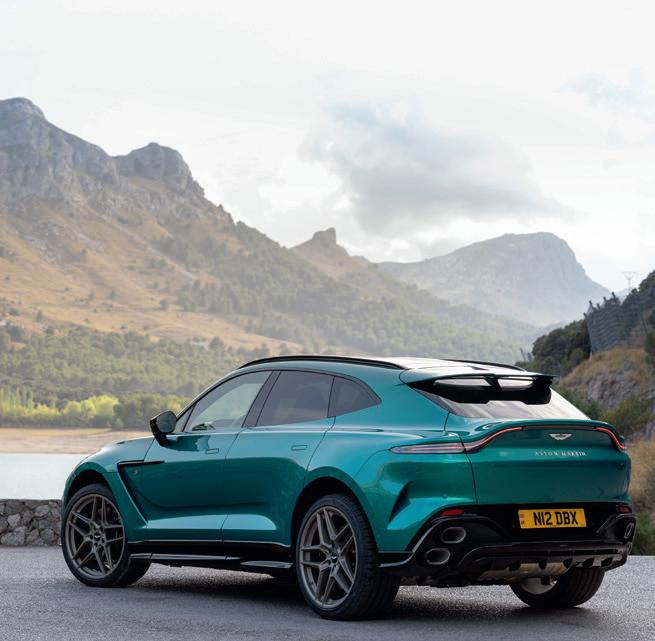
something to do with the piped-in noise and revised exhaust system meshing. It’s certainly not unpleasant.
The suspension set-up is effectively unchanged from the 707, which means a combination of adjustable electronic dampers, air springs and an active anti-roll system, allowing no more than 1.5 degrees of body roll. The engineers have huge scope for adjustment between the different modes, yet the step up in firmness from GT to Sport and Sport+ isn’t overly extreme. On these roads especially, Sport+ provides a reasonable compromise in most situations, although you can knock the dampers into their intermediate setting with the press of a button. This mode also brings with it the best gearbox setting for fun driving. I find that GT is perfect for cruising around town, but the Sport setting never quite does what I’m expecting – either changing up too early or not downshifting quickly enough, so I keep reverting to either Sport+ or GT. There is also an Individual setting, which I suspect would be useful to find the perfect mix of elements. After deviating from the official route, we find ourselves on Coll de Soller, an old mountain pass that has since been superseded by a tunnel, meaning virtually no traffic. The surface is a little more spotty here, but good Lord, what a spectacular diversion: a rough count suggested 50 hairpins. The uphill climb gives the V8 a proper chance to breathe, and the performance really is staggering – the noise echoing off the mountains once it hits its peak is thunderous. Aston claims that it will do 0-60mph in 3.1sec going on to a 193mph top speed. On these roads, what you really enjoy is the
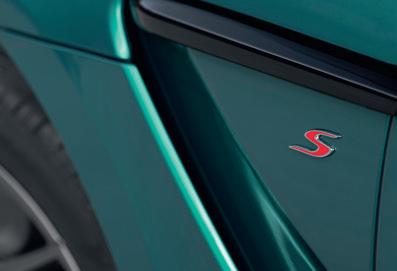
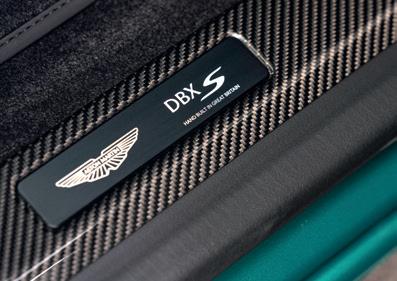
headroom that the V8 seems to enjoy, with the noise and power really building towards (and even beyond) the 6250rpm peak. Out of the tightest hairpins, the traction control keeps things a little too controlled, but flicked into Track mode it frees up just enough to feel the 100 per cent rear torque split in action.
Attacking the series of downhill hairpins in a 2.2-tonne, 717bhp SUV does ask quite a lot of the brakes, but the mighty 420mm front and 390mm rear carbon-ceramic discs are unfazed – something the emergence of a couple of loose mountain goats reinforces. There’s a lot going on with the suspension, too, but there’s a reassuring fluidity to the way the DBX S handles, the active anti-roll system doing a fantastic job of improving agility and helping to disguise the car’s mass in faster corners. The S gets a very slightly quicker steering rack and it feels pretty much perfectly judged.
Back at sea-level and in the real world, stuck in traffic, it’s really time to appreciate just how much better the interior of the facelifted DBX is than the launch car’s. Not only does it look and feel a cut above, but the integration of Apple CarPlay Ultra is an absolute game-changer. There’s a satisfying screens-to-button ratio, and even a relatively easy procedure to switch off the ADAS systems should you wish.
The DBX 707 is already a very well resolved car, yet Aston is confident that there is still headroom above what is now the base model for the S, which is expected to be priced around £210k. Visually, dynamically, and with all the options ticked, it certainly makes a compelling case for itself.
S badging on the front wings and sill plates; new rear diffuser features four vertically stacked exhaust tail-pipes
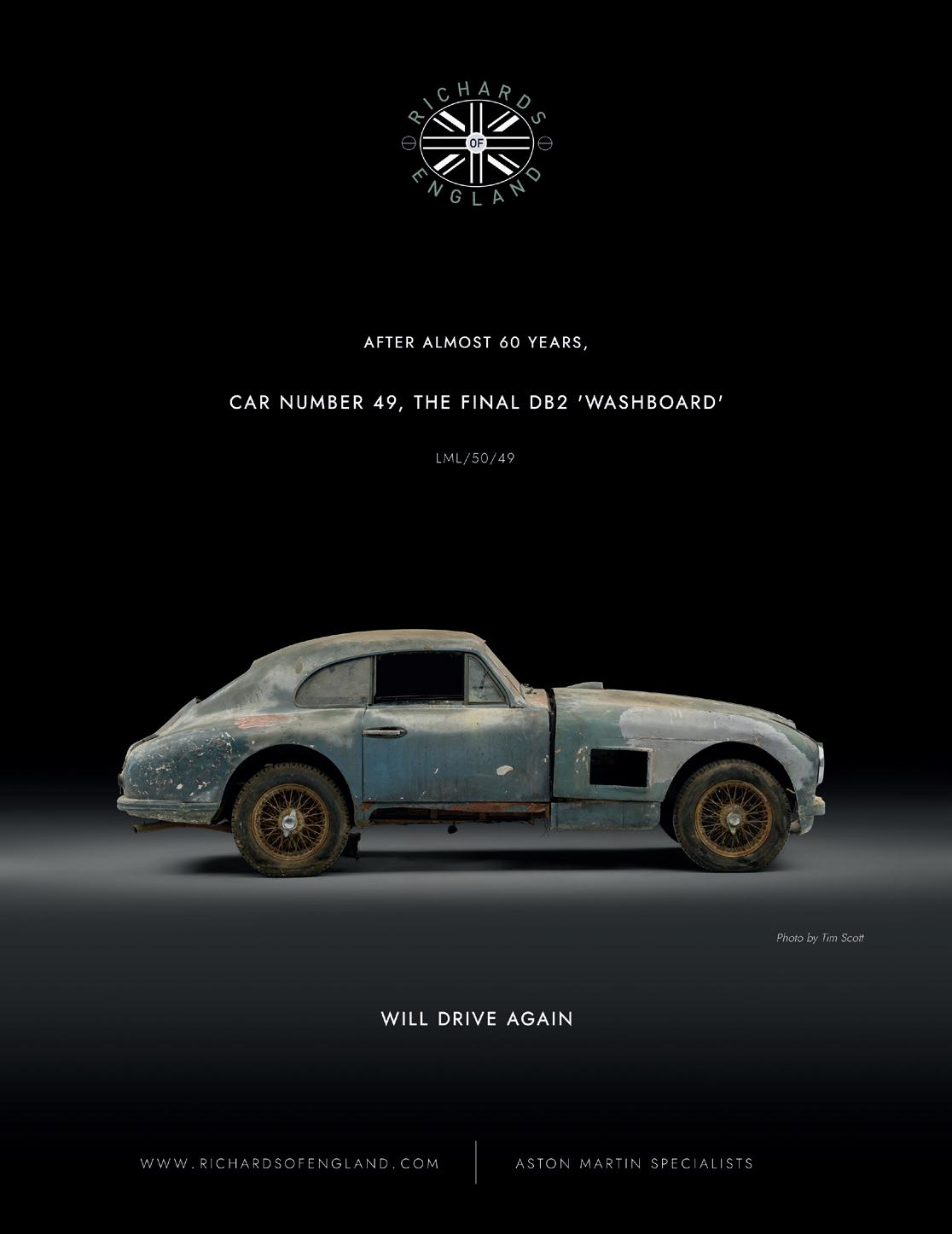

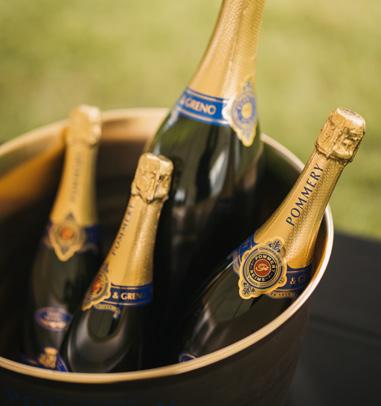
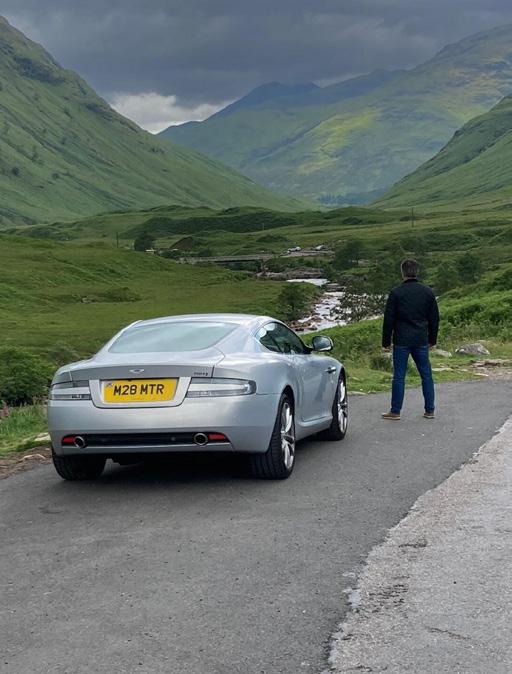
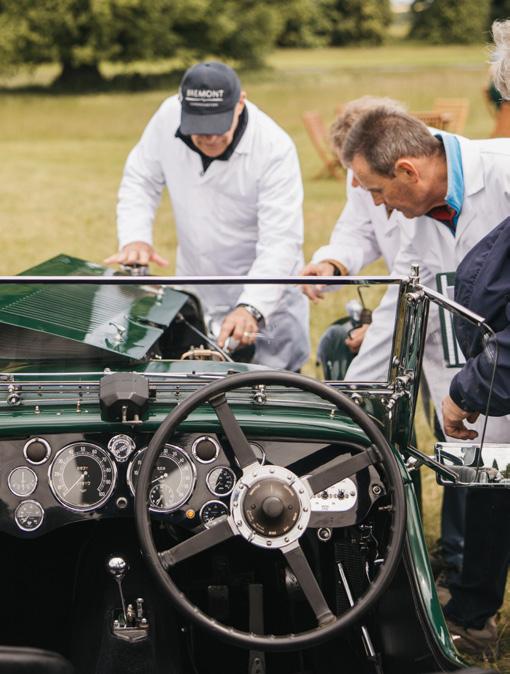

2025 has been quite a year for the Aston Martin Owners Club, which has celebrated its 90th birthday with a feast of international events, including spectacular tours, road rallies, race meets and concours d’état. Just some of the highlights can be found on the following pages…
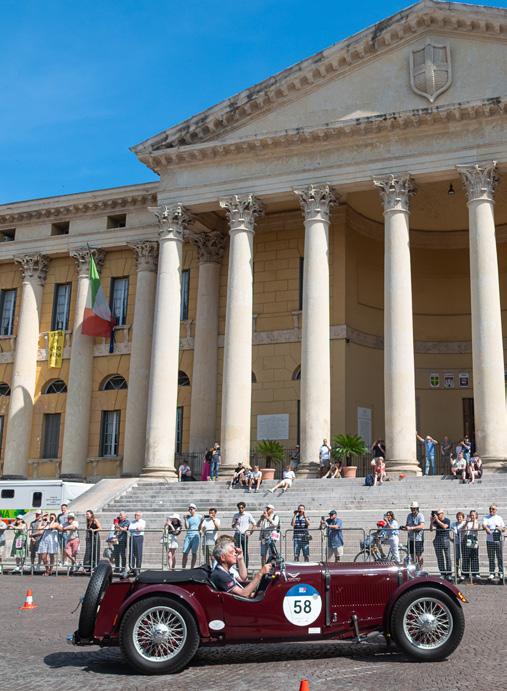

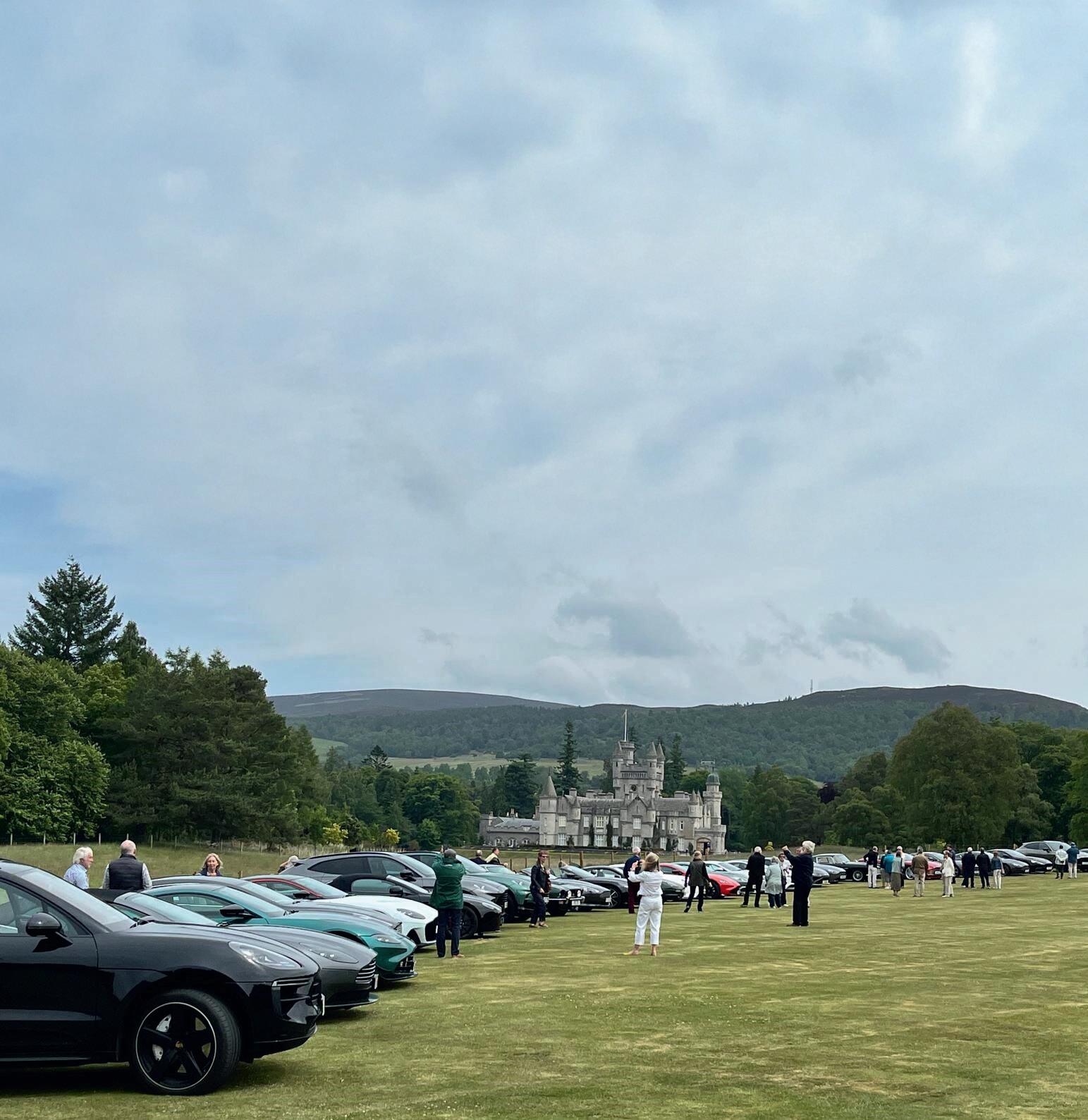
The week of 9–14 June 2025 saw AMOC members from across the UK, Europe, and even as far afield as Australia and the USA came together for an unforgettable week of fine dining, exclusive hotels and spectacular driving as part of the 90th Anniversary Tour.
The tour commenced in style as guests gathered at the magnificent Grantley Hall Hotel in Ripon, Yorkshire, the hotel’s car park soon showcasing a stunning collection of Aston Martins, including DB4, DB7, four DB9s, DB11, DB12, DBS, four DBXs, Rapide, four Vanquishes and no fewer than nine Vantages.
Following a black-tie dinner, the following morning began with a photoshoot before a drive north to the heart of Edinburgh, where the iconic Caledonian Hotel awaited, and that
‘It was an unrepeatable moment: sweeping through the gates, the silhouette of the castle rising ahead’
evening the group gathered for a private dinner aboard the Royal Yacht Britannia.
The next day began with an early start as the group set off for Lindores Abbey Distillery, the spiritual home of Scotch whisky. After a guided tour, the group then embarked on their first led drive through the scenic countryside, heading north to the charming town of Pitlochry and the Fonab Castle hotel, the final hotel destination, where they would spend the next three nights nestled in the heart of the Highlands.
The following days unfolded with a series of thoughtfully planned routes designed to highlight the stunning scenery and driving pleasure the Highlands have to offer.
Thursday’s highlight was a visit to the iconic Balmoral Castle following a scenic morning
drive. The route led north through the breathtaking Cairngorms National Park, over the Spittal of Glenshee and through the dramatic curves of the Devil’s Elbow, before reaching the Glenshee Ski Centre for a brief pitstop to regroup.
With the cars now grouped together, the convoy set off for Balmoral and a momentous drive up the estate’s private driveway. It was a truly unrepeatable moment: sweeping through the gates in formation, the iconic silhouette of the castle rising ahead.
Upon arrival, the vehicles were guided to a specially reserved area on the castle’s cricket pitch, perfectly positioned in front of Balmoral itself. Guests were then treated to a relaxed BBQ lunch, expertly prepared by the palace chefs.
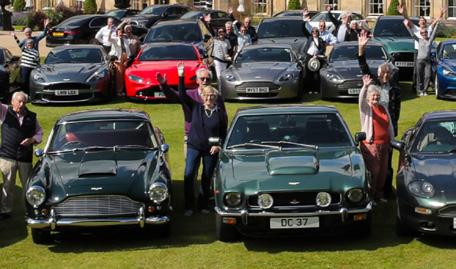
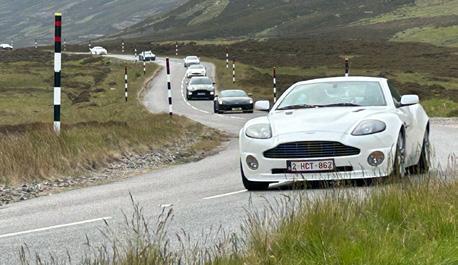
Friday was a full driving day with a spectacular route that led the group northwest, taking in the edge of the Tay Forest Park, and continuing onward to the picturesque village of Blair Atholl and through the Pass of Drumochter before reaching Fort William for a short refreshment stop. The drive then resumed along the scenic edges of Loch Linnie and Loch Leven to the Kingshouse Hotel in Glencoe.
Then it was time to visit the iconic Skyfall location – a pilgrimage of sorts for Aston Martin enthusiasts – and take a moment to exercise the inner Bond before returning to the Fonab via Killin and the Falls of Dochart.
The final night was marked by a memorable farewell dinner at the Fonab Castle, a fitting close to an unforgettable journey. V
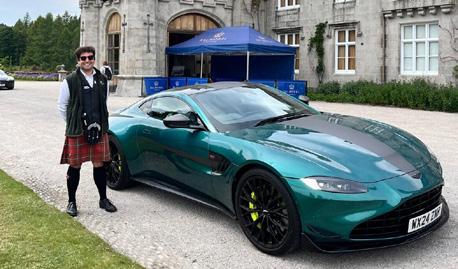
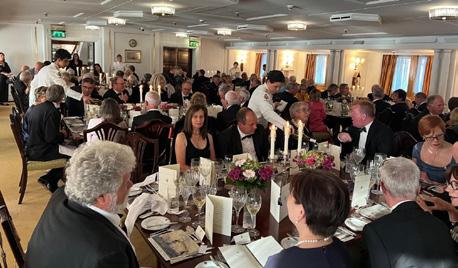
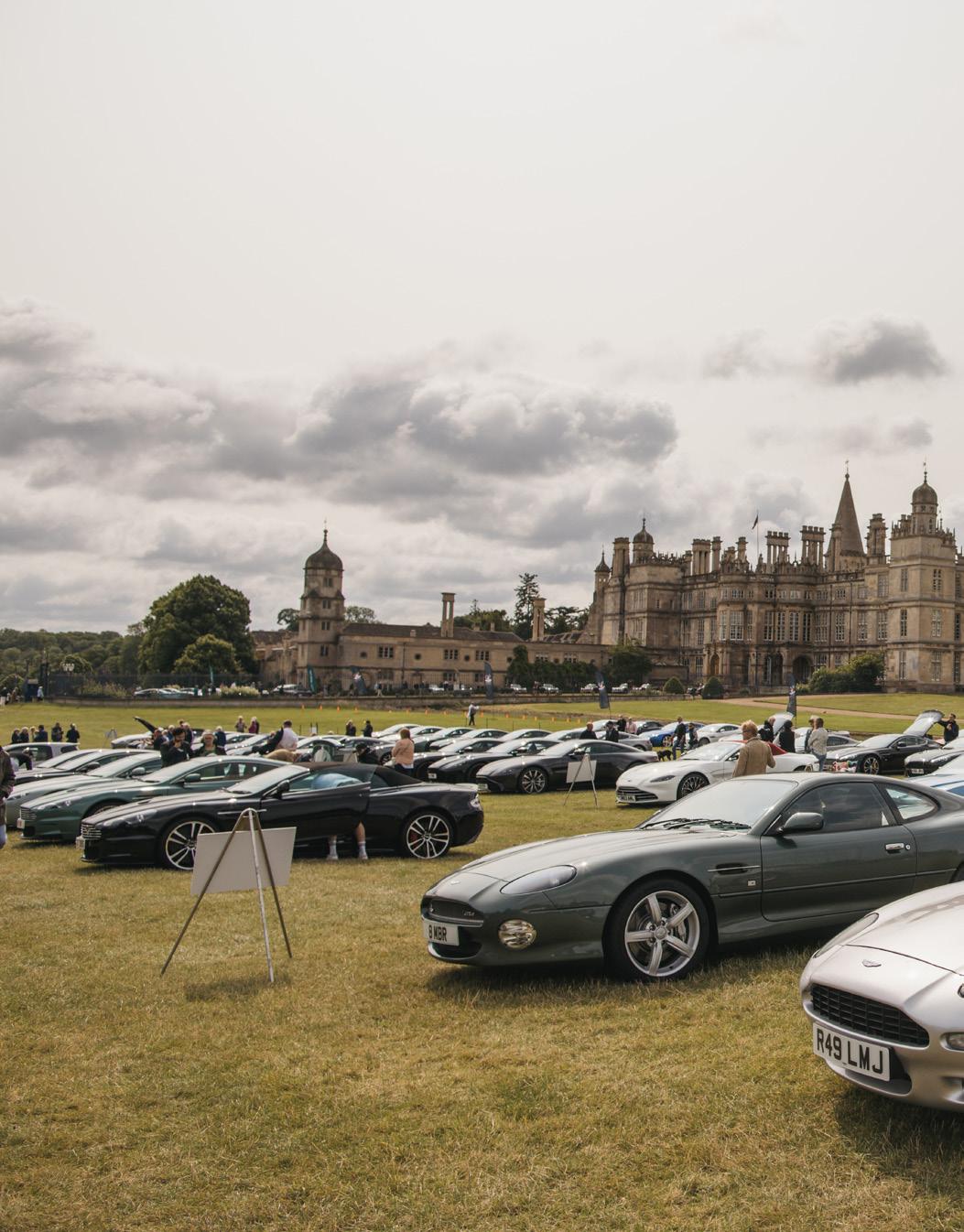
AMOC’s anniversary concours saw polished Astons out in force
The Owners Club held its annual International Dinner and Spring Concours at Burghley House, Stamford, Lincolnshire, over the weekend of 7-8 June 2025, and it couldn’t have wished for a more impressive backdrop: Burghley is one of the finest Elizabethan houses in the country, set in extensive parkland and grounds laid out by renowned landscape designer Lancelot ‘Capability’ Brown.
The celebrations kicked off the evening before the concours itself with a champagne reception for 100 guests, followed by a very relaxed and informative tour of the staterooms with their extensive collection of fine artwork and richly decorated ceilings, a match for anything found in the European grand palaces.
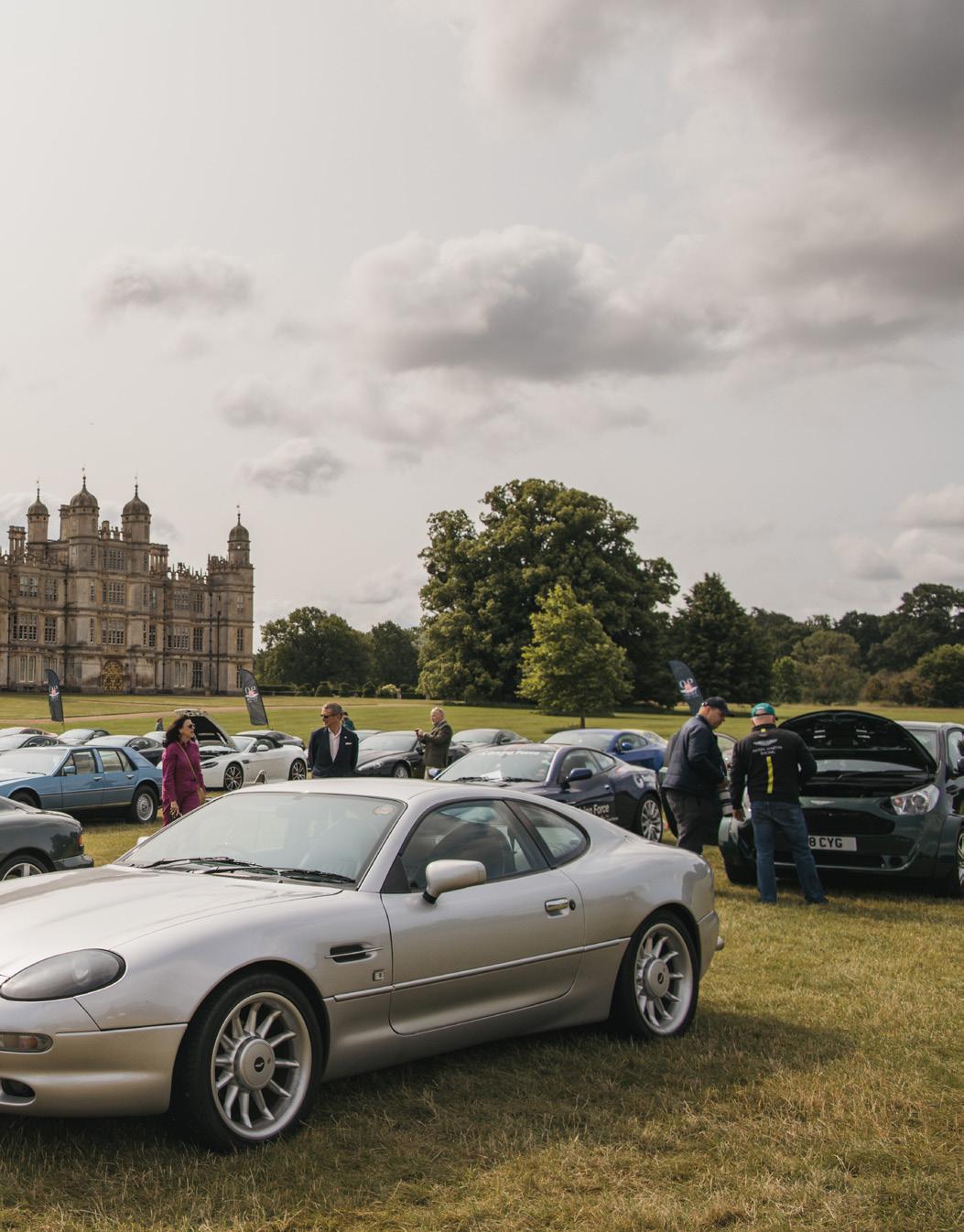
Guests then assembled in the Great Hall with its massive timber hammerbeam vaulted ceiling for an excellent dinner and a chance to catch up with members from around the globe, the perfect prelude to the concours.
AMOC’s event is run as a concours d’état, with originality and fabulous presentation the key markers. With over 100 years of production to account for, the classes are divided into the main manufacturing eras so that cars of a similar design and engineering are grouped together. This also makes for an informative time-line for members and visitors alike.
This year the club had also arranged a display of some 40 ‘VH2’ Vantages to celebrate 20 years since the model’s launch, these forming a background to the concours cars.
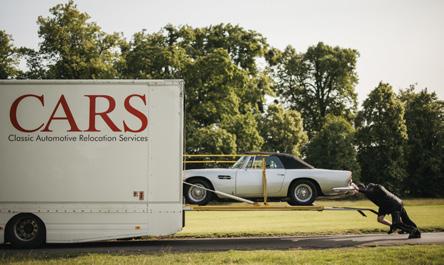
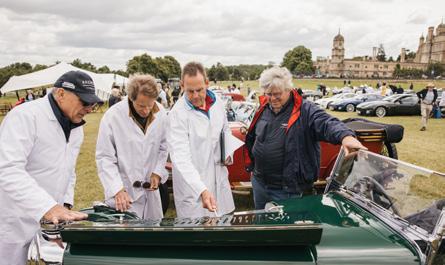

The Vantages on display ranged from the launch 4.3 right through to the thunderous V12s.
The club also had the use of the usually off-limits oval driveway in front of the house, and here were shown the Elite class cars, all former winners, along with a display of ten DB6s, marking that model’s own 60th anniversary celebrations. To complete the line-up on the driveway, Aston Martin Works displayed a DBX 707, DB12 Volante and latest Vantage. Works president Paul Spires and his team were busy all day fielding questions on these magnificent new Aston Martins. With all the display and concours cars sparkling and gleaming, the serious business of judging got underway for the team of 34 judges. As ever the standards were high and minor details often separated the class contenders. The meticulous attention to detail was evident across all the entries.
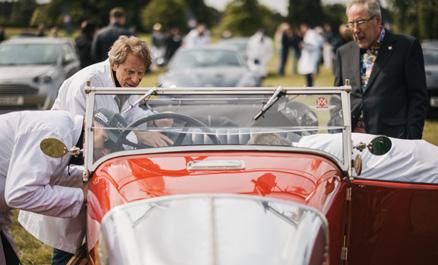

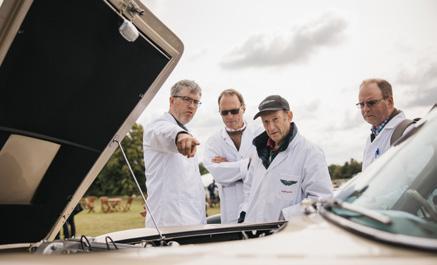
In the Pre-war class, the winner was Chris Lendrum with his wonderful 1935 1.5-litre MarkII. There was a very good showing for the classic Newport Pagnell models, Mike Bradley Russell following up his class win at the London Concours with another win for his very original dark green DB6 Vantage Volante. Blair McMurchy from Canada was another delighted winner with his stunning V8 Vantage Volante SE.
There was a large entry for Gaydon era cars, split across five classes, and a highlight was Dave Cooling’s unique V8 Cygnet which sounded spectacular and looked factory-fresh. Meanwhile in the Elite class the three experienced judges had a hard task to separate the field, but Keith Claydon was declared a worthy winner with his 2022 Vantage. The day ended with a prize-giving of engraved glass trophies, the conclusion of another memorable concours weekend.
V
Above: concours judges sticklers for originality. Classes span every era, from pre-war, through Newport Pagnell greats, right up to the modern day
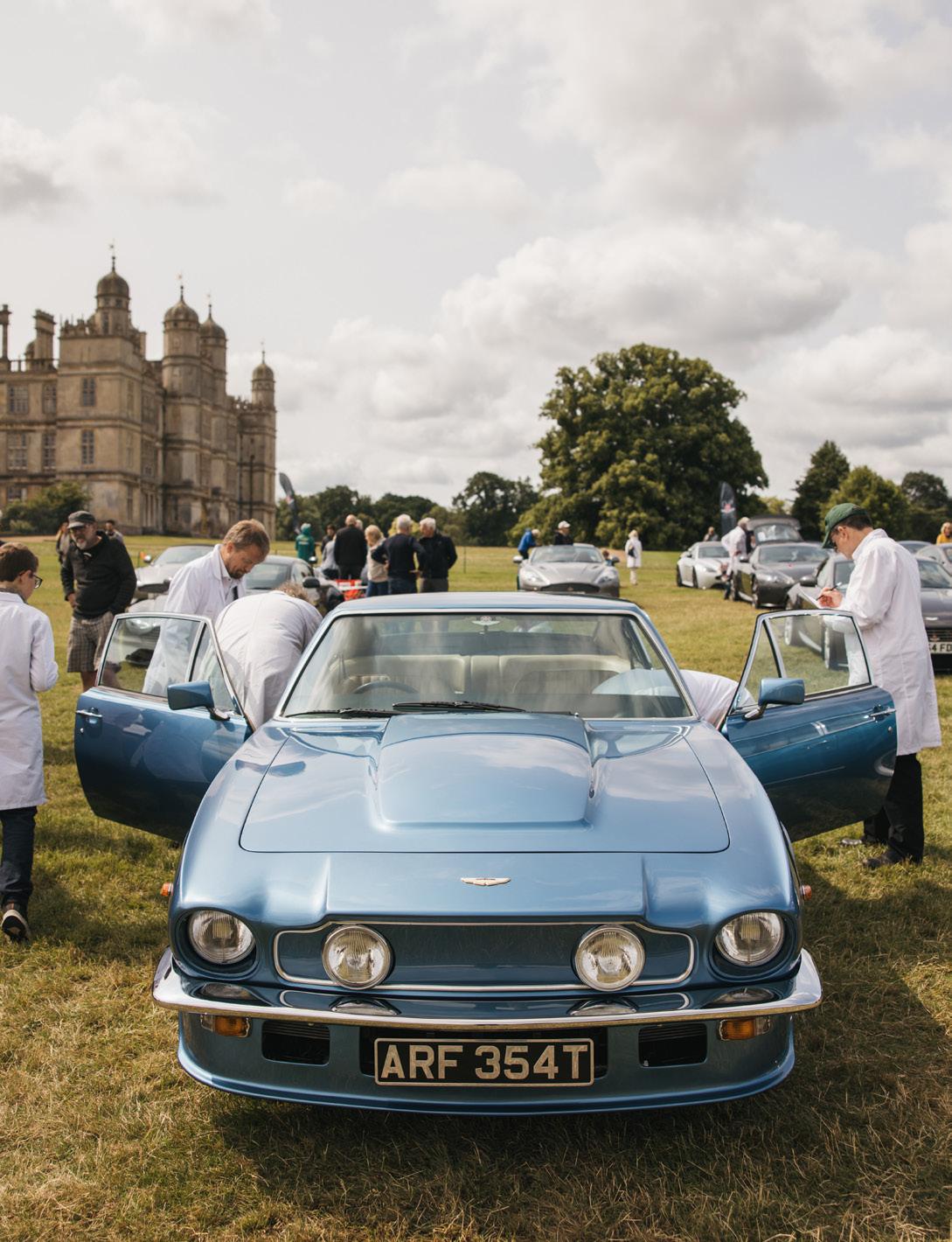
‘With the cars gleaming and sparkling, the serious business got underway for the team of 34 judges’
Another road trip to mark the 90th, this time taking in North America’s eastern seaboard
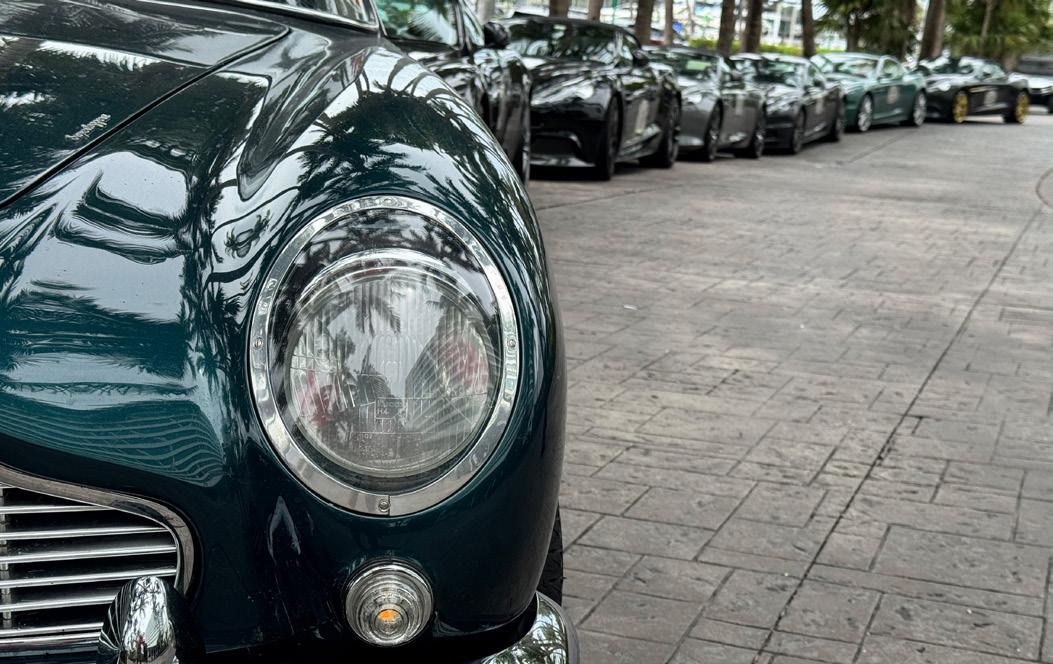
WITH DRIVES TO ISTANBUL AND Marrakesh completed in previous years, any nervousness about such ambitious trips had long faded away, and so AMOC’s Central London area began planning our next road trip. And thus ‘Mayfair to Miami’ was born, taking in another continent that would be unfamiliar driving territory to most of us. Our trip would take us across the US border from Canada all the way to the Florida Keys.
With the various licences and clearances eventually sorted, and the complicated logistics of transport over the Atlantic and back resolved, the idea slowly became reality. Our seven cars were delivered to Liverpool for the roll-on-roll-off service to Halifax, Nova Scotia, and their various drivers departed to meet them the following week.
I could write a small book on the highlights of the journey, but they included visits to Quebec and Montreal to enjoy their fabulous historical ambience; snow all around but dry roads all the way; a visit to Steel Wheels, an
eclectic and fascinating mix of beautifully restored automobiles; getting ‘papped’ on Canadian social media, which meant we had multiple contacts from fellow Aston owners en-route; the delicious lobsters in Portland, Maine, and in New York a visit to the Monticello Raceway to see the handover of two new Valkyries.
Also in New York we were invited to Aston Martin’s ‘Q’ brand centre on Park Avenue, home to a lavish showrom with a car configurator screen the size of two football goals, savoured drinks on the top of the Peninsula Hotel, and enjoyed a scintillating late evening of jazz and art, folllowed by a black tie dinner at the Harvard Club.
Best of all, though, was a guided drive in convoy at sunrise through the streets of Manhattan, never to be forgotten.
Next it was on to Washington, then Virginia and South Carolina, driving the Great Smoky Mountain Trail, followed by the famous ‘Tail of the Dragon’, one of the absolute highlights with no fewer than 318
bends on an 11-mile stretch of road! The next day’s drive to Savannah, Georgia, was a seven-hour odyssey of changing landscapes.
Into Florida, we couldn’t resist a visit to the Kennedy Space Center, and by sheer good fortune we were able to watch launches of Blue Origin and SpaceX Falcon rockets that same evening. At Key Largo, DB9 driver Oneil Khosa, owner of the Tapoco Lodge at the Tail of the Dragon, took us for a trip on his beautiful 1913 wooden steamship, while driving the famous Seven Mile Bridge led to an obligatory photo at the USA’s southernmost point before we headed to Miami.
An extraordinary tour of the streets of the city under the escort of 12 Harley-Davidsonriding police motorcycle cops was followed by a black-tie reception on the pool deck of the spectacular Aston Martin Residences building in central Miami, and the visit was topped off by the Saturday sprint race and qualifying at the Miami GP. We’d travelled 3500 miles from tip to toe with not a flicker of a mechanical problem. Now where to next?
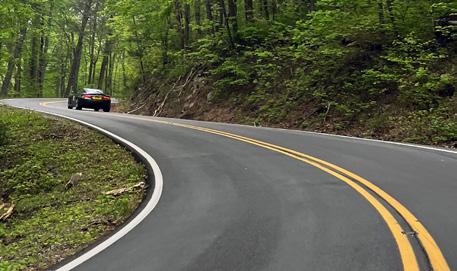
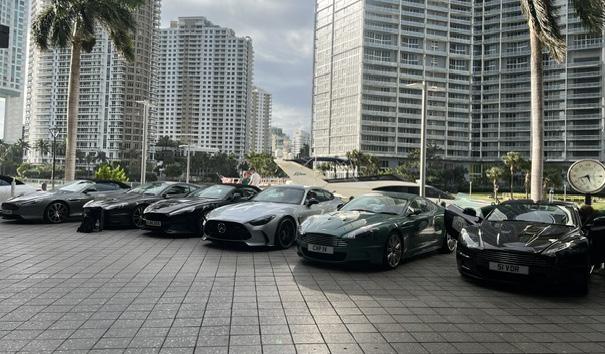
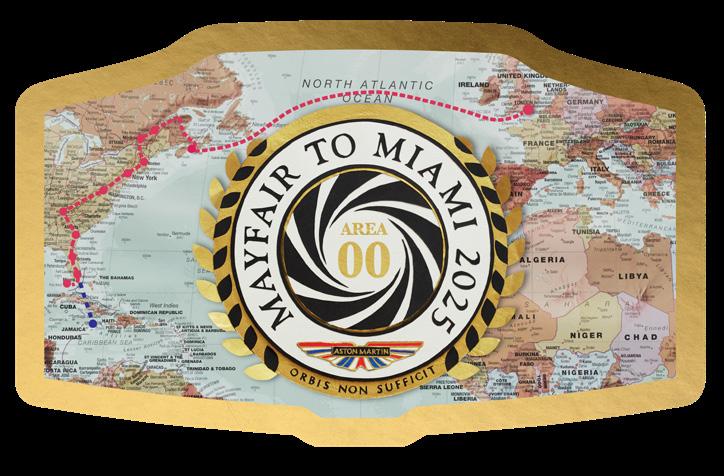
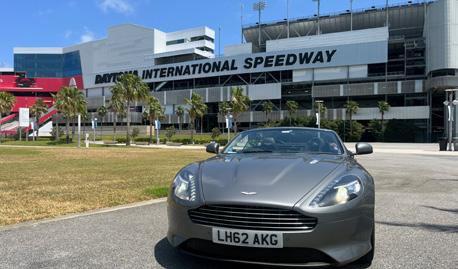
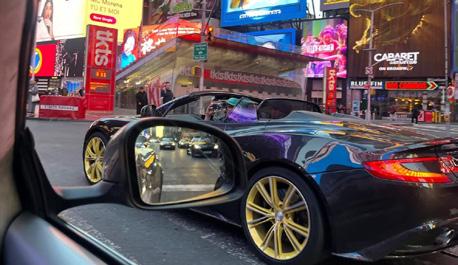

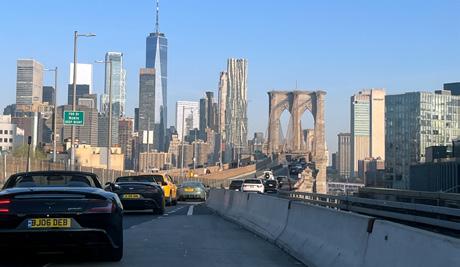
IHAD ALWAYS HAD AN AMBITION TO take part in the modern Mille Miglia, but imagined it to be beyond my reach. First you need an eligible car and then you need to be accepted – there’s a high level of rejection – and then you need a competent co-pilot, along with the available time!
The stars finally aligned after my son and I bought our 1933 Aston Martin Le Mans early in 2024. The car had been owned by a successful lawyer in Oslo and kept in Norway since the 1960s so was not on the DVLA system. It was for sale via Ecurie Bertelli and all the records and factory build sheets were available – an original matching numbers unmolested car was a very tempting proposition.

The original owner was John Cadbury of chocolate fame, and he had numerous special build requests, including a modified scuttle with his own arrangements of instruments and the driver’s door being sculpted deeper to allow more arm movement, all built into the car at the Aston Martin factory. It was also painted in the then Cadbury factory livery of maroon, as were all his cars.
A keen motorist and founder member of Aston Martin Owners Club in 1935, Cadbury campaigned the car and most famously won the Glacier Cup for a penalty-free run in the Alpine Trial of 1934 from Munich to Nice. We have since been able track down the actual cup that he won and now keep it with the car.
Back in the summer, Tom Westley, chairman of the AMOC, and son Tom Jnr tackled the most famous road rally in the world, the fabulous Mille Miglia
WORDS TOM WESTLEY SNR PHOTOGRAPHY OFFICIALPH.COM
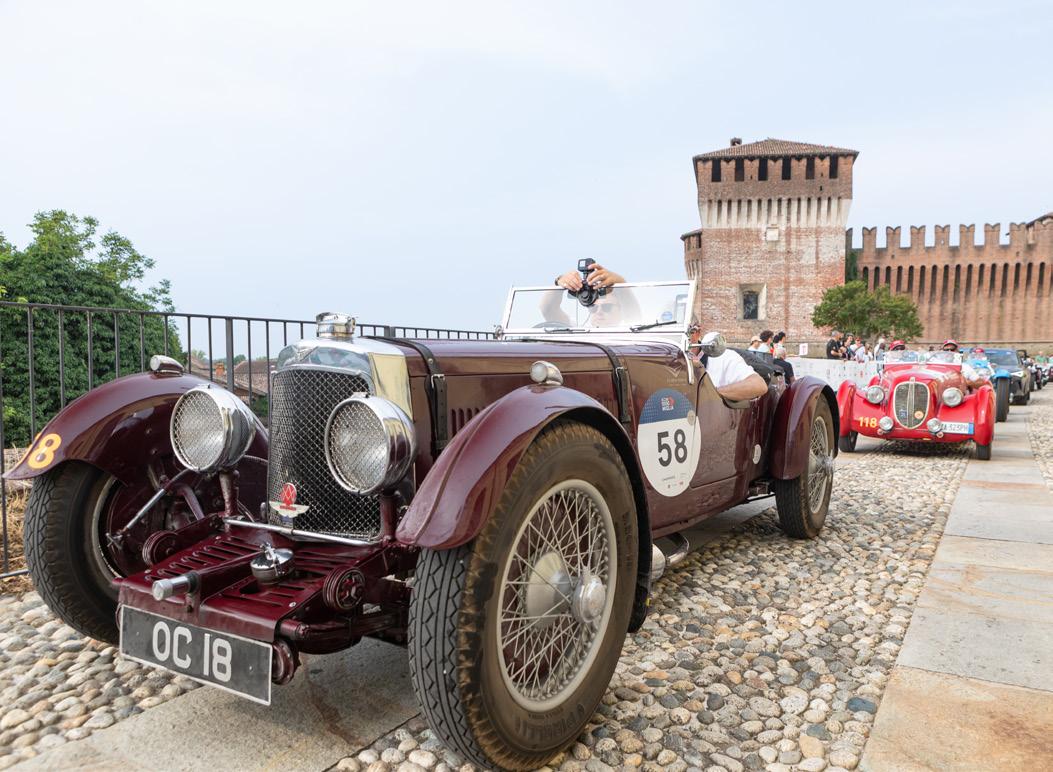
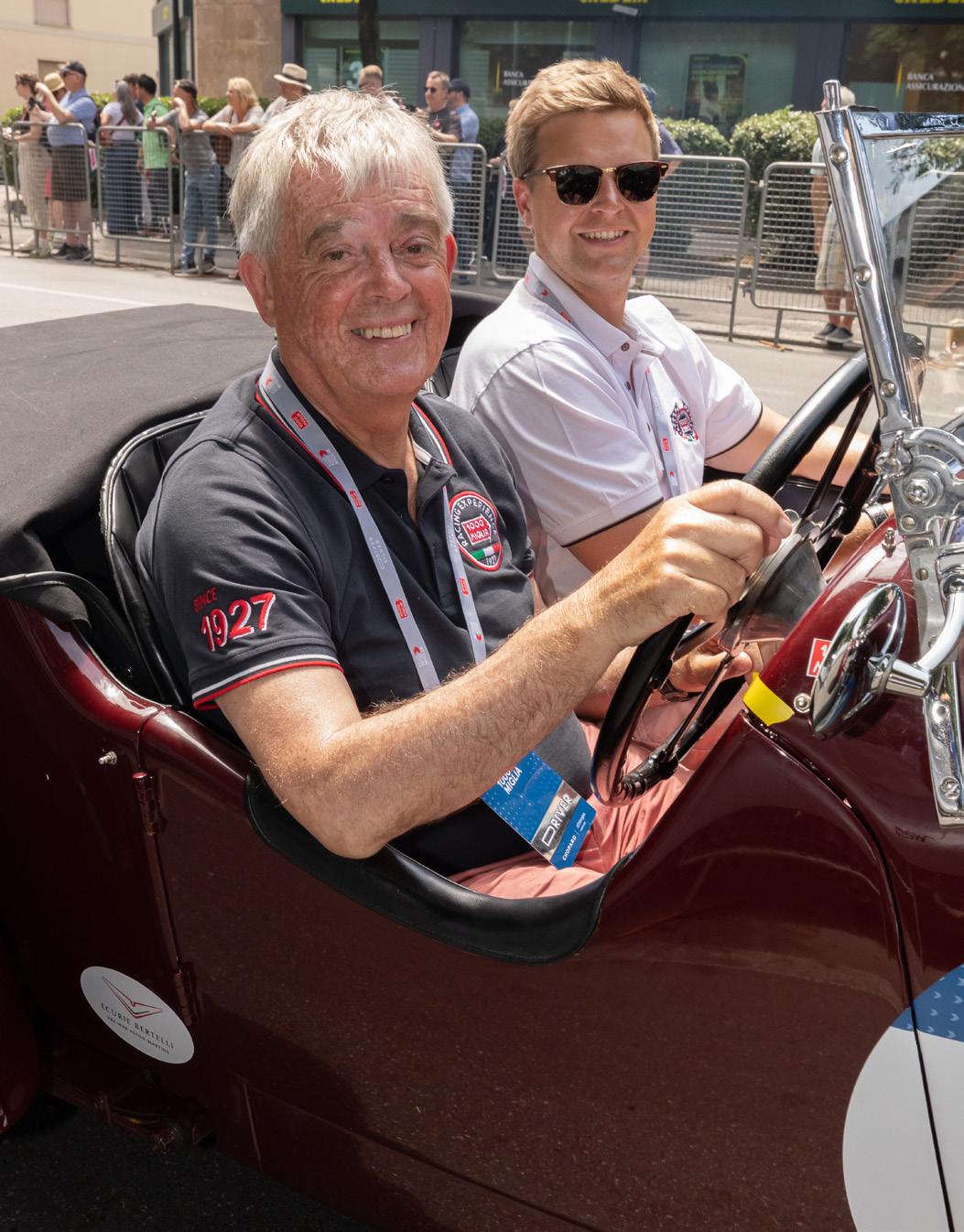
‘The original owner was John Cadbury of chocolate fame’
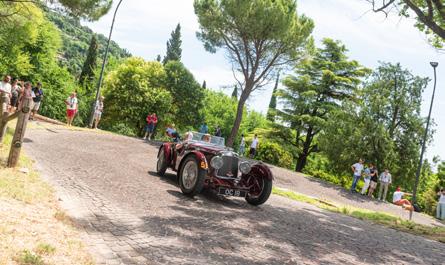
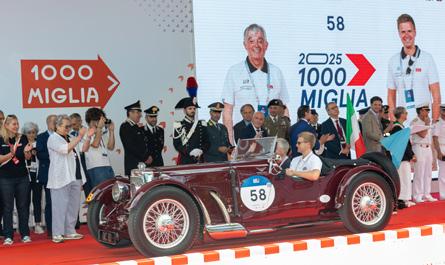
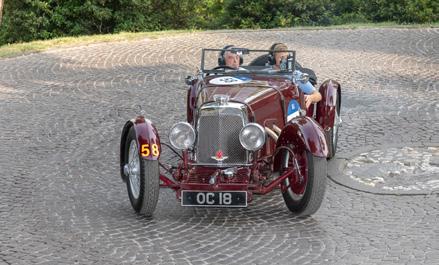

So our first job was to recommission the car mechanically to make it fit and reliable for rallying and to make the case to DVLA that it should be allowed to carry its original number plate, OC 18. After presenting all the evidence, DVLA very helpfully agreed!
Excellent advice from Ecurie Bertelli was not to attempt the Mille Miglia until we had learned how regularity rallies work and had some practice. Consequently, we successfully entered and competed in the Targa Florio rally in Sicily in October 2024, during which we had a wonderful time and learnt an awful lot – not least how to drive the car competently!
With that under our belts, we applied to enter the Mille Miglia in 2025 (along with a number of other crews who had been supported by Ecurie Bertelli at the Targa Florio event) and three of us were accepted! This was wonderful news – we had not expected to be accepted first time around, but the provenance of the car may well have helped us.
Fast forward to June, and we arrived in Brescia on the day before scrutineering began. The weather was beautiful and the whole place was buzzing in anticipation. There was a wonderful atmosphere, great excitement, and the variety of interesting, beautifully prepared old cars was awesome.
Scrutineering took most of the next day and was successfully passed, after which we took part in a small practice run – strictly optional – around Brescia in the evening. We were number 58 out of 415, the numbers allocated in age of car order. Everything was all set for the start the following day.
It has been described as ‘the most beautiful rally in the world’, but anyone who thinks the modern Mille Miglia is some sort of relaxing scenic tour of Italy is in for a rude awakening! It is a gruelling experience, for the competitors as well as the cars. I was shocked by how little sleep we had, and by the very short breaks for lunch, etc. At my age I was worried about my stamina, but fortunately the adrenaline kept me going!
My son and I divided the driving and navigating 50/50 between us, although the more difficult timed sections were driven by Tom, with me trying to look like Denis Jenkinson! The average-speed sections were all very challenging, and although we said that we just wanted to complete the event and compete safely, in truth once we got the bit between our teeth we were really trying to do our very best.
The scenery and the route exceeded all expectations: following the coastline, driving through Tuscany and crossing the Apennine mountains twice, and of course visiting the beautiful villages and famous landmarks in and around the wonderful historic Italian cities – all of these experiences were marvellous although transient, as we had to keep going to match our prescribed timing points. That said, the memories of the mountains, of Bologna, the Colosseum in Rome, Sienna, the leaning tower of Pisa, driving through Rimini, Parma and Brescia itself will stay with us forever.
The weather was largely excruciatingly hot, and with added heat-soak from the car we needed to be drinking water constantly. The only rain we had en route was a massive thunderstorm as we drove into Rome at
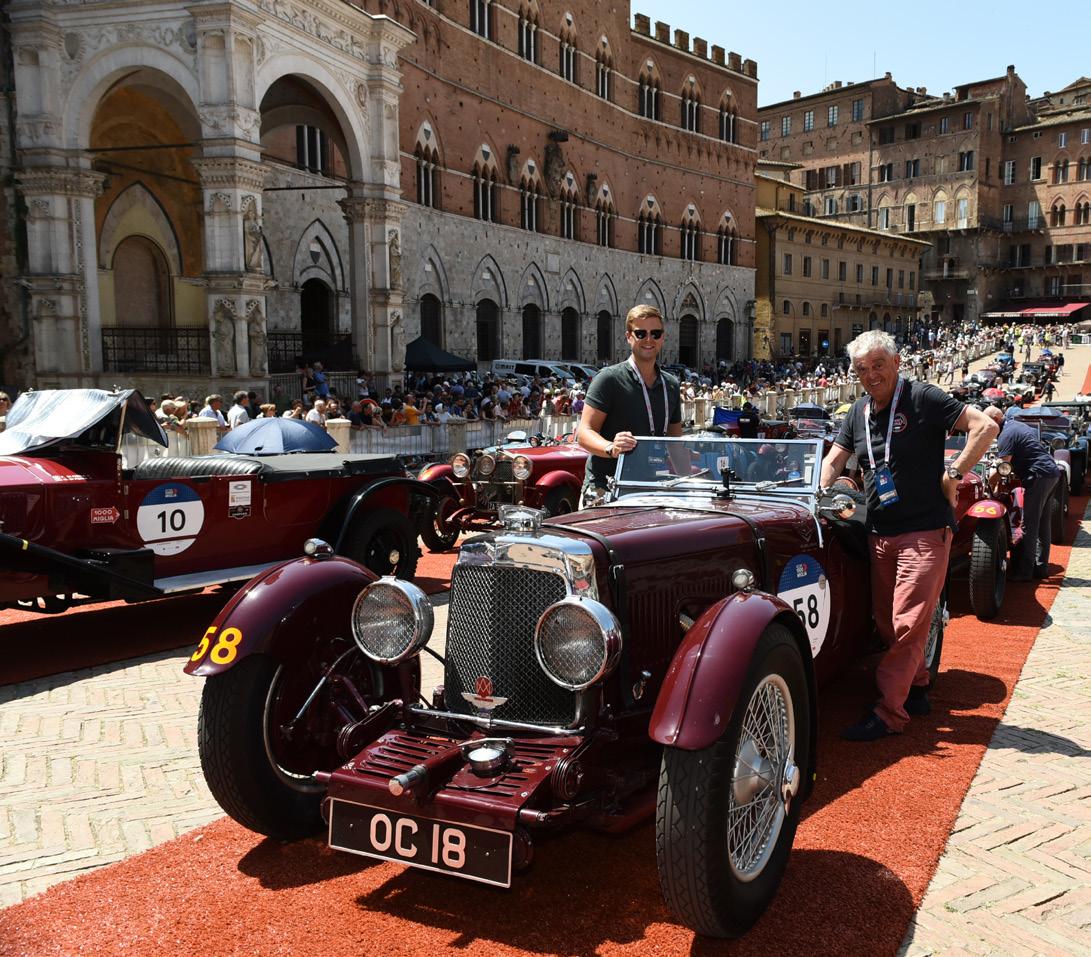
commuting time, making the surface dangerously slippery and causing total chaos on the roads. This was the only check-in point that we were late for – generally the navigation turned out to be easier than on the Targa Florio mainly because the route through the towns and villages was lined with cheering spectators!
Everywhere we went, the enormous enthusiasm displayed by the lovely Italian people was terrific. Grandmothers, mothers and small children lined the streets as well as the menfolk, all cheering and clapping and all genuinely interested to examine the cars wherever we stopped. This I found wonderful, and I couldn’t help thinking it would never happen in the UK, where prejudice against cars is becoming an increasing problem for motorists.
As usual in life, the best bits were the human interactions between our fellow competitors, the
officials and the local citizens, all having a great time and enjoying every moment. The theatre around the final podium display that we had to cross, orchestrated by the organisers on our successful return to Brescia, was just fantastic. I have never been photographed so much in my life, and with the celebrations going on into the night, I slept for most of the following day!
I could not have done it without the amazing support and competence of Tom, and we surprised ourselves when we were ranked 133rd – not bad for a first go. Full credit also to our wonderful little car, which never missed a beat (very minor electrical niggles were easily sorted as we went along) and felt much more like a 2-litre than a 1.5 to drive, easily keeping up with larger-engined cars, proving really nimble around the mountain passes and easily able to do 70mph on the autostrada.
I think I may have a new favourite Aston Martin… V
AMOC’s oldest race, the St John Horsfall Memorial Trophy, celebrated its own 75th anniversary in fine style
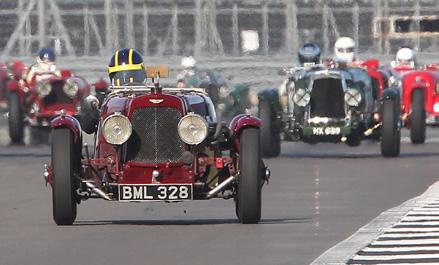
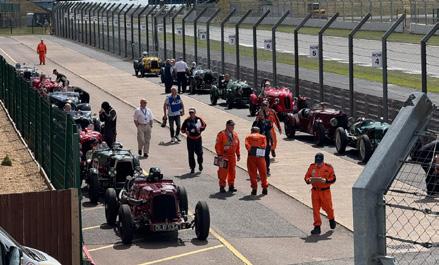
WORDS STEPHEN ARCHER
PHOTOGRAPHY MICK WALKER/TOM WOOD
What does the invasion of Sicily in 1943 and the Aston Martin Owners Club’s oldest race have in common? Answer: Jock Horsfall, who is commemorated each year by a race for solely pre-war Aston Martins.
Horsfall it was who played a key role as the hot-shoe driver in Operation Mincemeat, the MI5-led deception that threw the Germans off the scent prior to the Allied invasion.
Before the war he had raced his 2-litre Speed model with great success and he won Aston Martin’s first post-war race, the 24 Hours of Spa in 1948. In June 1949, he entered his second Speed model, ‘EML 129’, the famous ‘Spa Special’, in the same 24-hour race, driving single-handedly and finished fourth. But a month later he died at Silverstone when his ERA overturned. He is remembered in the memorial race, held every year since 1951. Back then the race was a handicap and so today the Horsfall Trophy is still presented to the winner on sealed handicap, meaning that
anyone can win, and has – including the writer! One thing is clear from the handicap method, if you go faster in practice than in the race, you have a chance of winning. The rest is dark arts.
David Freeman now owns the Spa Special, both of his parents having raced the car since the 1950s. It’s a fine and rapid car, usually to be seen near the front of the field. David also corrals the owners of other pre-war Astons to take part in the race and deserves everyone’s thanks for his hard work.
The AMOC has not run its own race meetings for many years now, but the perfect host for this race is the Bentley Drivers Club at their annual August meeting at Silverstone. It’s ‘the right crowd and not too crowded’, a meeting that has more of a village fete atmosphere than some of today’s overwrought race events and all the better for that.
Eighteen cars were entered for this year’s race, ranging from 86 to 97 years old, and the drivers were blessed with glorious weather. The most venerable car was Kevin Williams’
An impressive field of 18 pre-war Astons lined up for the Horsfall Trophy. Top: LM15, one of the factory ‘Team’ cars in the thick of things
very pretty yellow ‘Sports’, originally delivered to the Maharaja of Patiala. Three ‘Team’ cars were on the grid, LM4, LM8 (now back with its original and attractive two-seater body) and the Ulster LM15, driven by your reporter.
Though it was far from my first race, sitting on the grid surrounded by these wonderful machines was a ‘pinch me’ moment – and then the lights went out and I had other things on my mind. The race turned out to be very exciting at the front, with a great tussle between pole-sitter Alan Middleton in Red Dragon, Nigel Armstrong’s 2-litre monoposto and Darren Turner (yes, that Darren Turner!) in the extremely rapid LM4.
But it was David Freeman who, having started in fifth place in Horsfall’s Spa Special, came through to take the flag in front of descendants of Jock Horsfall who were present. The more important handicap and Horsfall Trophy were won by long-standing competitor Richard Lake. It was a popular win and a fitting close to a wonderful event. V


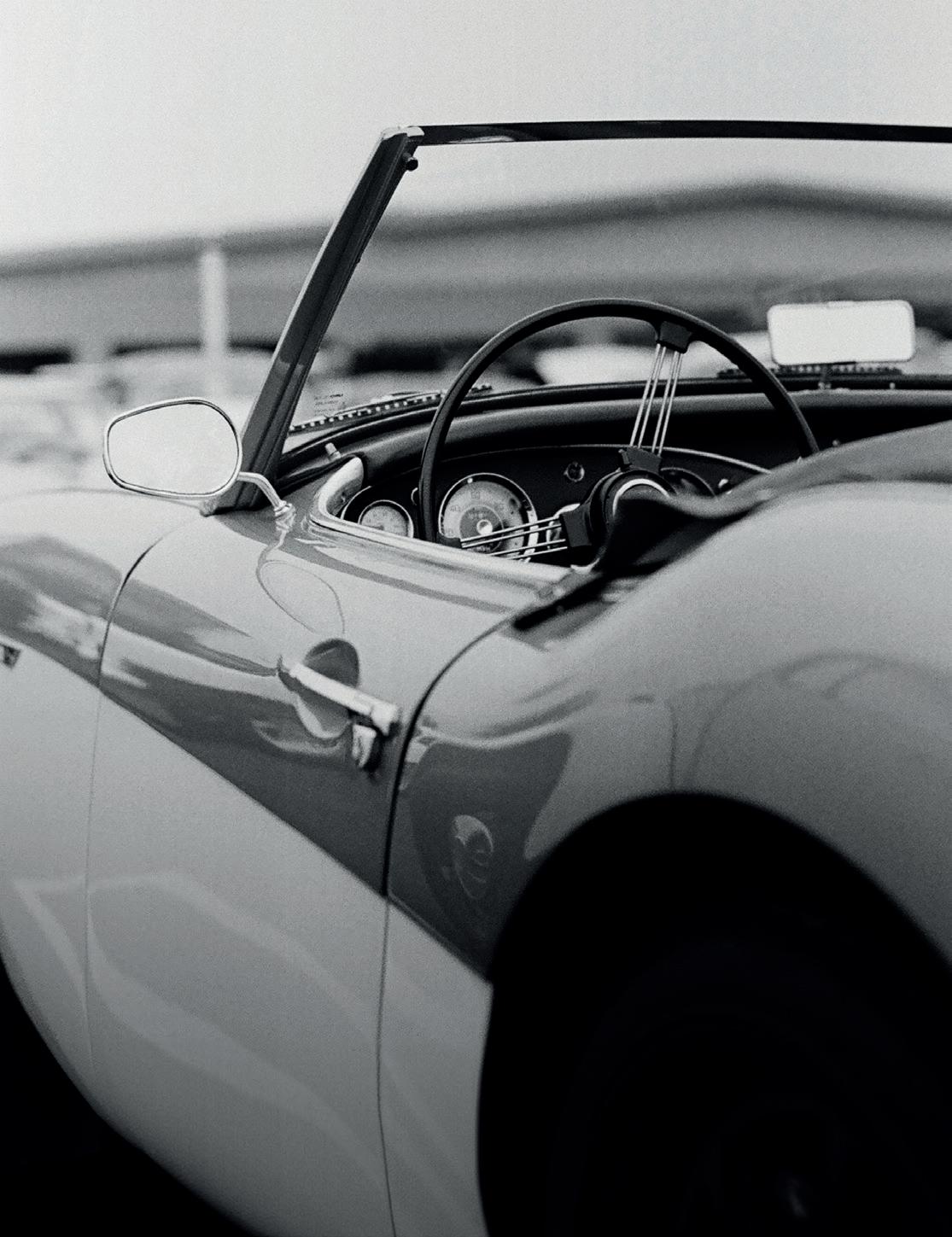

Aston-related objects of desire, specially curated just in time for those Dear Santa letters
WORDS CHRIS BIETZK

A Wild Ride: the Making of Valkyrie by Bart Lenaerts & Lies de Mol
€90 | waft.be
Writer Lenaerts and photographer de Mol were given behind-the-scenes access during the development of the Valkyrie, following the ups and downs of the project for five years. All that they saw and learned was poured into Inside Valkyrie, a four-volume, limited-edition publication. That coffee-table-crushing set has since been condensed into the single, 326-page hardback book you see here.
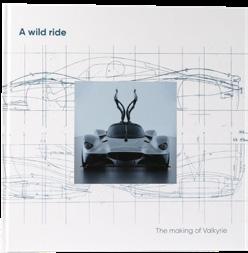

Glenfiddich Aston Martin
1976 single malt
£POA | glenfiddich.com
At Monterey Car Week in August, Aston Martin and Glenfiddich announced a partnership that was cemented with the release of this tasty drop, a 48-year-old single malt finished in a specially coopered European oak sherry cask. Just 50 bottles will be sold, through The Distillers Library and the Glenfiddich distillery.
DB5 Shooting Brake model by Cult
£198.95 | grandprixmodels.com
Cult’s 1:18-scale resincast DB5 Shooting Brake is mercifully easier to get hold of than the real thing, of which just a dozen examples were completed by Radford and at enormous cost. (The conversion process added a couple of grand to the cost of a DB5, bringing the total to £6412, or around twice the price of the average house in the UK back in 1965.)
Girard-Perregaux Laureato Chronograph
Aston Martin Edition
£19,300 | girard-perregaux.com
Only upon examining the caseback of this titanium, 42mm chronograph will you find any Aston Martin branding, yet the dial of the watch is Aston all over: that iridescent green colour, achieved through the application of 15 ultra-thin layers of paint, was inspired by a shade offered by the marque’s Q division.
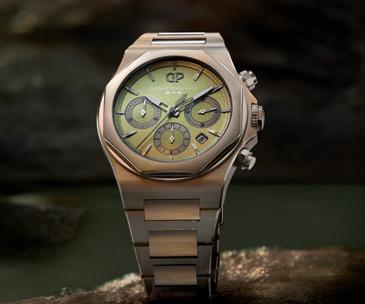

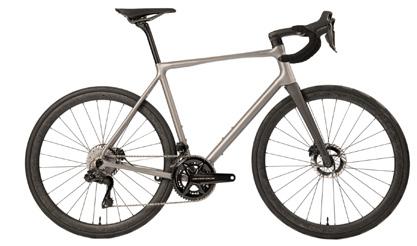
J Laverack J.Ack III AM64
From £6995 (frameset) | jlaverack.co.uk
A few years back, J Laverack, the Oakham-based maker of titaniumframe bicycles, joined forces with Aston Martin to create the .1R, an astonishing bit of kit inspired by the Valkyrie, built using a combination of carbonfibre and 3D-printed titanium. The development process opened the eyes of the J Laverack team to the advantages of additive manufacturing (fiendishly complex shapes can be produced precisely and cost-effectively, and beautifully seamless joins achieved), and so the company is now introducing 3D-printed ‘AM64’ versions of its standard models, including the superb J.Ack all-road bike.
James Bond ‘The Jetpack’ socks by The London Sock Exchange
£12 | 007store.com
Sixty years ago, cinema audiences took their seats to watch the fourth James Bond film, Thunderball – now remembered principally for the scene in which a shark got rather closer to Sean Connery than the crew had intended, and for the cameo made by the contraption that inspired these socks, the Bell Rocket Belt, a hilariously impractical device that could keep a man airborne for all of 21 seconds.

Razor Blade print by Alan Thornton
£4325 (59x39in, edition of 10 | amalgamcollection.com
Razor Blade, the extraordinarily narrow Light Car built by Bamford & Martin with hopes of breaking the 100mph barrier, is one of the most characterful machines of the 1920s, and Alan Thornton leapt at the chance to photograph it and make it the subject of one of his prints, which are produced on large, brushed aluminium composite panels rather than paper.
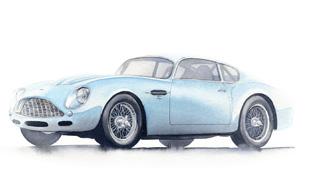
DB4 GT Zagato print by Paul Howse
From £40 | paulhowseart.co.uk
It’s rapidly approaching bus-pass age, but the DB4 GT Zagato remains the ultimate pin-up for many Aston aficionados, and its jaw-dropping lines have been skilfully captured here by car designer and watercolourist Paul Howse.

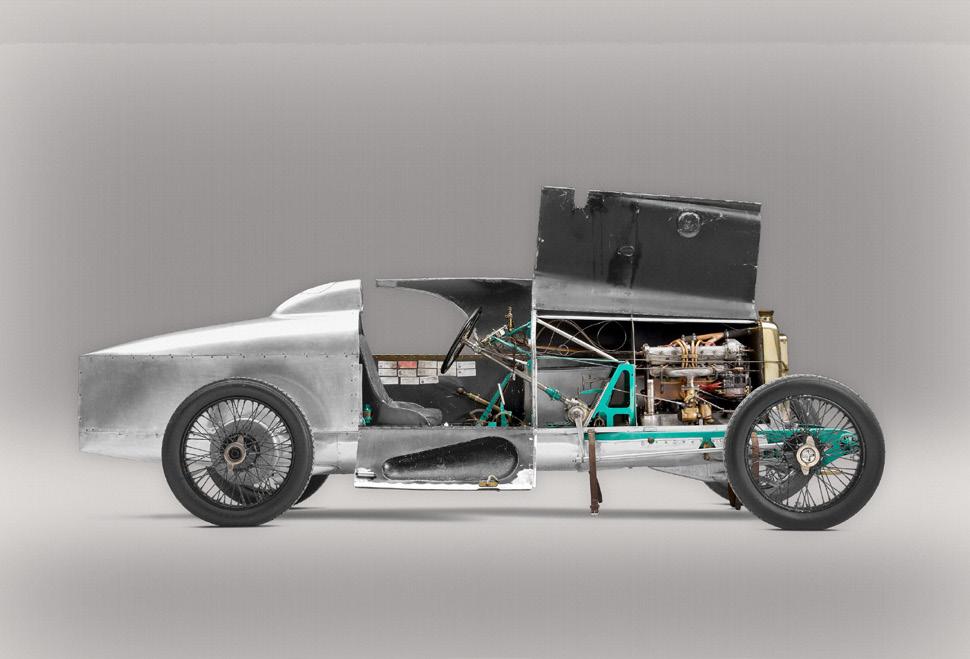

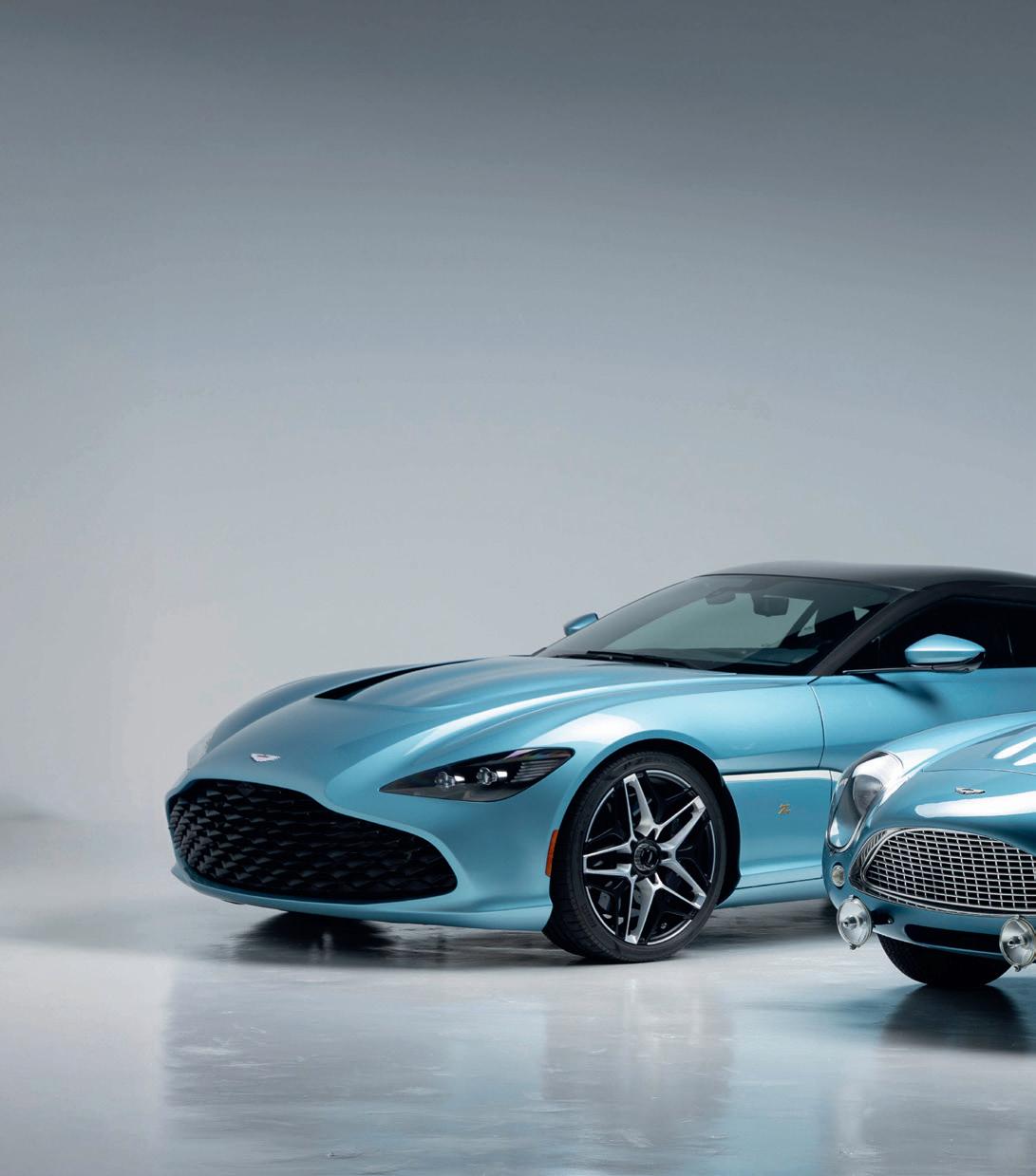
In the immediate aftermath of the annual Monterey Car Week auction bonanza, we reflect on the state of the Aston Martin market
WORDS CHRIS BIETZK PHOTOGRAPHY BROAD ARROW
AT THE TIME OF WRITING, OUR INBOX IS filling up with post-Monterey Car Week press releases and reports, most of them telling the same old story: that numbers can be used to tell pretty much any story you like…
In simple dollar terms, auction houses enjoyed their second-most-successful Car Week ever, hammering away $432.8m worth of cars (total sales in 2022 were $471.2m).
The overall sell-through rate was 76 per cent, up from 72 per cent last year. The average price was up too, from $476,965 in 2024 to $529,035 this time, and record sums were paid for models ranging from a Panhard et Levassor M4E ($1,380,000 at the Gooding Christie’s auction) to a Koenigsegg CCXR ($3,225,500 at Broad Arrow’s sale).
Taken in isolation, however, the headline figures are somewhat misleading. This year’s total was inflated by the sale, for $26,000,000, of a Ferrari Daytona SP3 that was offered by the factory via RM Sotheby’s to raise money for charity. Yes, there was decent variety among the cars that

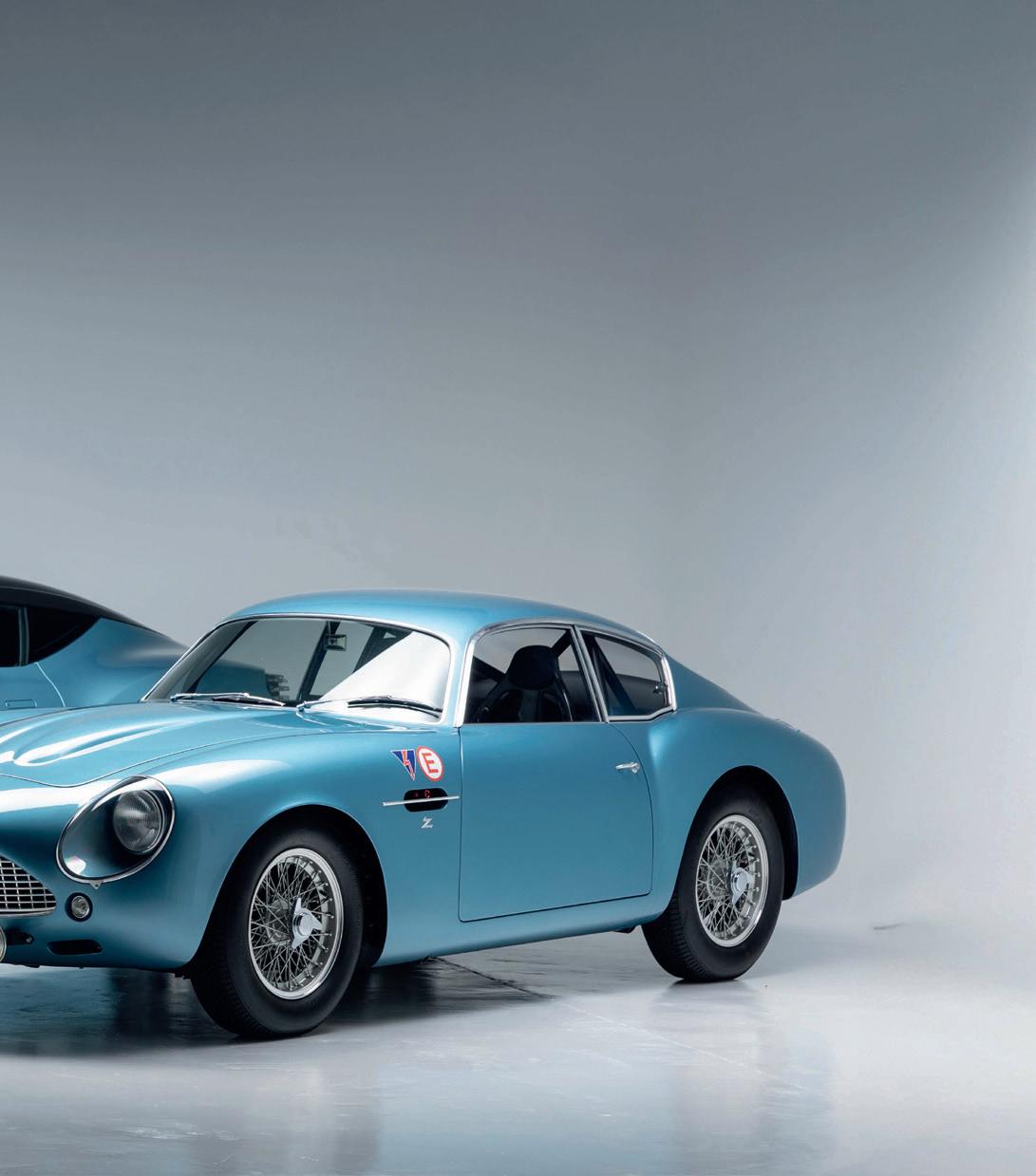
Below: This ‘DBZ Centenary Collection’ pair of cars attracted plenty of attention ahead of Broad Arrow’s event in Monterey, but only sold post-auction
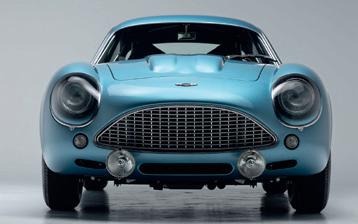
fetched $1m or more, but Ferraris accounted for eight of the ten most expensive lots of the Week, and modern supercars hogged the limelight like never before, making up 39 per cent of the cars sold. Older classics, particularly those in less than tip-top shape, often got a cool reception from bidders, who have in recent years abandoned romantic ideas of fixing up a barnfind and now demonstrate a clear preference for cars with no issues. (Given the cost of serious restoration work these days, the trend is understandable.)
If individual results prompted a sharp intake of breath ($9,245,000 for a Ferrari F50!), the general pattern of bidding was not a shock. Certain modern exotics and youngtimers have been on the march for a while now, but their momentum is not indicative of the state of the collector-car market more broadly, which has retreated substantially from its pandemicera peak; Hagerty’s overall Market Rating measure, which takes into account not only recent auction results but also private sales activity, insured values, expert opinions and correlated financial-market instruments, hit its lowest mark in five years just before Car Week.
It’s in that context, and not with PR talk of bumper sales ringing in our ears, that we should examine the prices achieved by the 18 Aston Martins auctioned during Car Week by RM Sotheby’s, Gooding Christie’s and Broad Arrow. (Bonhams, if you’re wondering, brought no Astons to Monterey, but had half a dozen squirrelled away for its Goodwood Revival sale, which was just outside our deadline.)
Of the 18, 15 were successfully auctioned off, with two more shifted – as a single lot – in extra time. However, 11 of those 15 sold for less than their bottom estimate, with the median shortfall being 12 per cent. Some cars, such as a DB4 Series 4, were shy by a just a few grand, while others missed the mark by a mile: a DBRS9, one of 26 customer cars built, was bought for $145,600 having been valued at $300,000-325,000.

From left: the DB4 GT Zagato Continuation came to auction with just 63 miles on the clock; this DBRS9, good for 600bhp, was picked up for the bargain price of $145,600 at Broad Arrow’s sale
‘Modern supercars hogged the limelight, making up 39% of the cars sold during Monterey Car Week’
Data compiled by Hagerty indicates that DB5 prices have been recovering a little better than those of many other traditionally sought-after Astons, but interest in the four DB5s up for grabs during Car Week was far from consistent. A 1965 convertible, restored by Aston Martin Works and offered with its rare factory hardtop, sold for $1,710,000, right in the middle of its estimate range, though a long way short of the CHF 2,142,500 it commanded three years ago, when it was judged by some auction-watchers to have been well bought. A restored 1964 saloon, meanwhile, changed hands in Monterey for $478,000 when $725,000-825,000 had been expected.
The record will show that the most expensive Aston Martin lot sold was a DB4 GT originally supplied to Scuderia Filipinetti founder Georges Filipinetti, a man memorably described by historian Doug Nye as a ‘cadaverous-looking, chain-smoking big spender’. Chassis 0154/L, exceptionally handsome in Goodwood Green, beat Gooding’s top estimate of $3,000,000 to fetch $3,195,000, which is only 3 per cent less than the price it achieved in the giddy days of 2021. (An analysis by Andrew Newton of Hagerty found that of vehicles bought in 2021 and offered for sale again in 2024-25, 20 per cent failed to meet their reserve, and those that did sell achieved a median price 9 per cent below their 2021 result.)
We’ve no way of knowing, however, how much was ultimately paid at Broad Arrow’s event for lot 290, a DB4 GT Zagato Continuation with matching DBS GT Zagato – one of 19 pairs of colour-coordinated cars built to celebrate Zagato’s 100th anniversary.
Back in 2019, the sticker price for Aston Martin’s limitededition ‘multipack’, known as the DBZ Centenary Collection, was £6.1m plus local taxes, and wealthy shoppers were happy to pay it. Continuation models were hot property, and original 4GTZs had been going for mad money at auction: the previous year, ‘2 VEV’, the 4GTZ raced by Jim Clark, had been sold through Bonhams for just over £10m; and in 2015 4GTZ chassis 0186/R had been auctioned off by RM Sotheby’s for more than $14m.
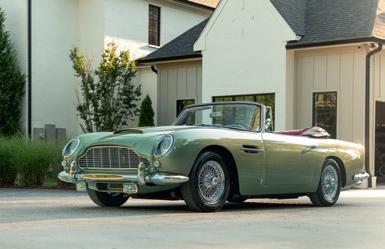
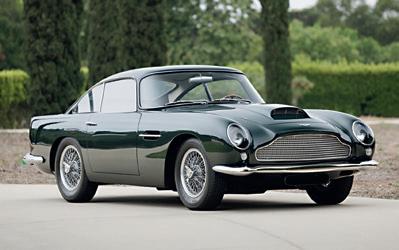
From left: the most coveted of the DB5s on offer during Car Week brought $1,710,000 at the RM Sotheby’s auction; DB4 GT chassis 0154/L, consigned to Gooding Christie’s, exceeded its top estimate to sell for $3,195,000
N.B.: ratings at or near 0 or 100, while theoretically possible, are not likely to be seen. A bell-curve distribution is expected (for both the Market Rating and all measures used to calculate it), and the closer the Rating gets to either extreme, the more market activity it takes to move the number. For more detail, see hagerty.com
Values in each case are for a base saloon or coupé in ‘Good’ condition as defined by Hagerty (‘Runs and drives well. Flaws not noticeable to passers-by’ )
The Zagatos offered through Broad Arrow during Car Week, both finished in Caribbean Pearl and with only delivery miles on the clock, were valued together at $3,500,000-4,500,000, but only changed hands when a deal was thrashed out postauction. Exotics that have hardly turned a wheel often end up in managed portfolios rather than cherished collections, but hopefully these cars will actually be driven now; we trust that having negotiated himself a bit of a discount, the buyer has a few quid left over to brim the tanks…
The pretty Caribbean Pearl Zagatos are far from being the only big-money Astons that have had a difficult time at auction in 2025. A DBR22 was passed over when it came to the block in April. A DBR9 GT1 didn’t meet its reserve when it was offered in May. And on consecutive days in June, two Valkyries failed to sell, the would-be owners clearly betting that despite the trajectory of similarly outrageous modern machines, the Valkyrie has a little way to fall yet.
Generally, though, the expectations of bidders and vendors have been aligning more often this year than last, and the cooling and flattening seen in most parts of the market will hopefully discourage speculators and allow enthusiasts to buy and enjoy some cars that not so long ago had threatened to become catastrophically unaffordable.
1949 2-Litre Sports: sold for £64,450
Trade Classics, online, 31 July
The only 2-Litre Sports ever to leave the factory as a rolling chassis was originally completed as a saloon by Gurney Nutting, but it was later transformed into the vaguely DB3S-inspired sports car you see here by owners including an Aston Martin engineer. In need of restoration and far from original, it failed to sell at auction in 2023 when estimated at £100,000-140,000, but at half that much it was a project too interesting to pass up.
2011 V12 Vantage Coupé: sold for $102,000
Bring a Trailer, online, 6 May
The hairy-chested V12 Vantage is ‘one of the best cars in the history of Aston Martin’ according to our own Andrew Frankel, but you wouldn’t know it to look at prices. This excellent, 11,000-mile Carbon Black Edition sold for the equivalent of £76,500, which seems like daylight robbery in a time when a new VW Touareg costs about as much.
1957 Aston Martin DP114/2: sold for £421,250
RM Sotheby’s, Taplow, UK, 8 July
Carrozzeria Touring was invited to create the bodywork for the DB4 after David Brown and general manager John Wyer were left unimpressed by this effort from in-house stylist Frank Feeley. Feeley’s prototype, used for a time by Brown’s wife, does look a bit… well-starched next to the DB4 as we know it, but its place in Aston Martin history carried it to a price near the very top of its estimate range.
1953 Aston Martin DB2 Vantage: sold for $235,200
Broad Arrow, Monterey, USA, 13 August
Hammered for $40,000 below its bottom estimate, leaving us cursing our lack of funds. Sold new to the USA, it spent many years in the stable of noted Ohio-based collector Don Marsh and is a matching numbers car that remains as originally specified, with Crushed Strawberry paint and grey leather seats. Gorgeous; the folks clamouring for exclusive modern supercars at the moment have no idea what they’re missing.
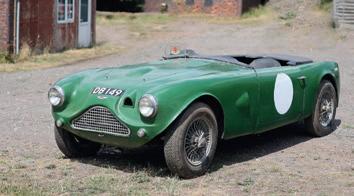
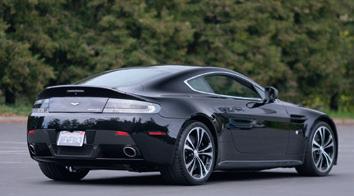
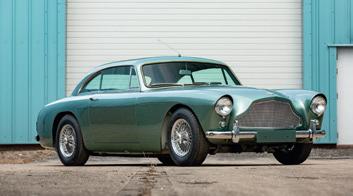
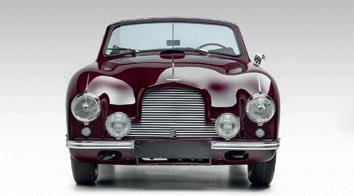
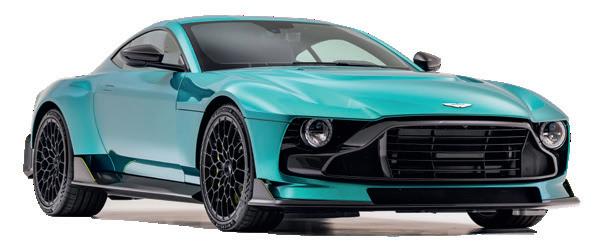
2024 Valour: sold for €1,518,000
RM Sotheby’s, online, 28 April
The Valour has been overshadowed a bit by the harder-edged, Fernando Alonso-approved variant, the Valiant; its looks aren’t for everyone; and objectively better-performing cars are available for much less money. But it also offers a rare combination of theatre, analogue fun and usability, so we’re curious to see where prices go as cars trickle onto the market.

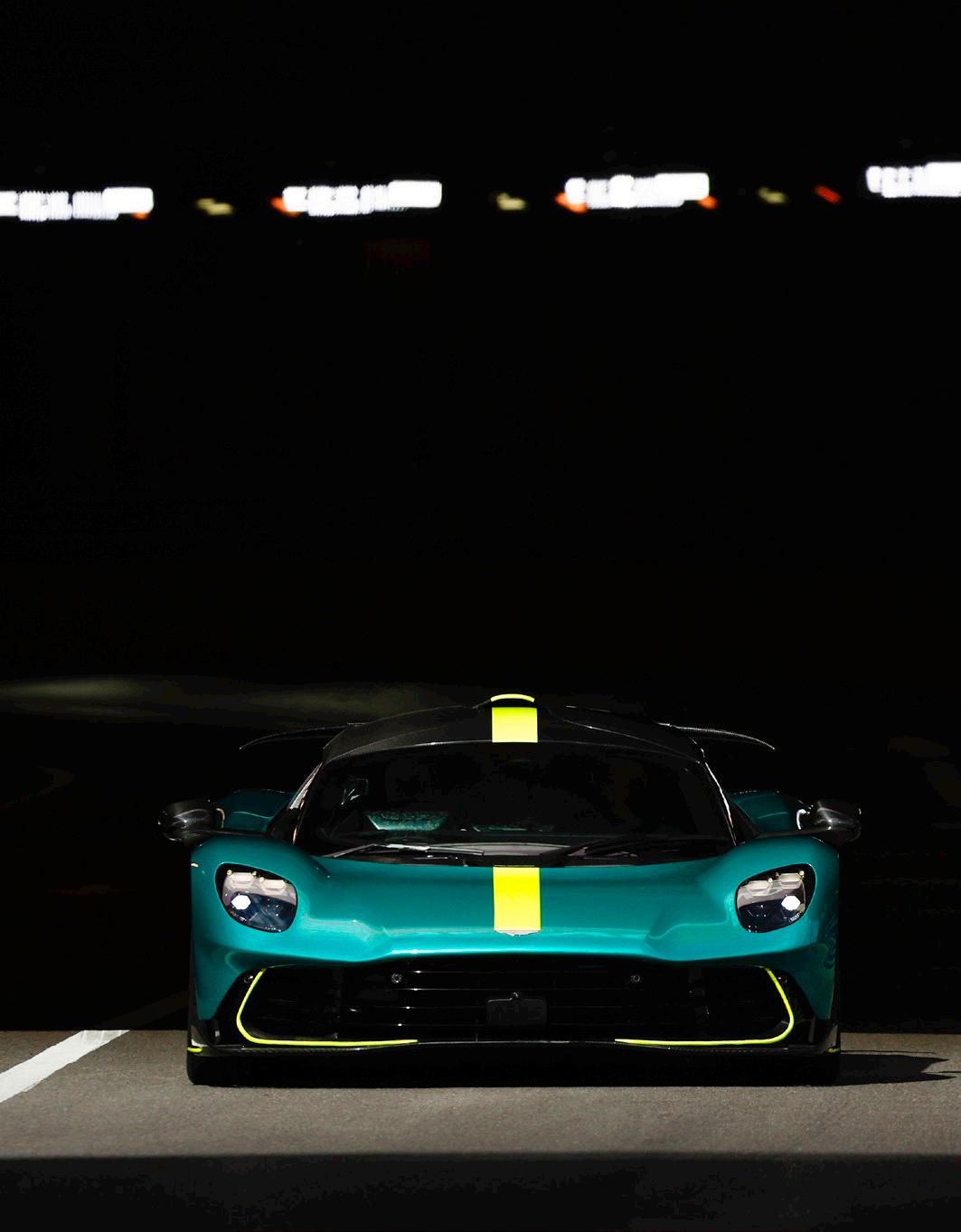

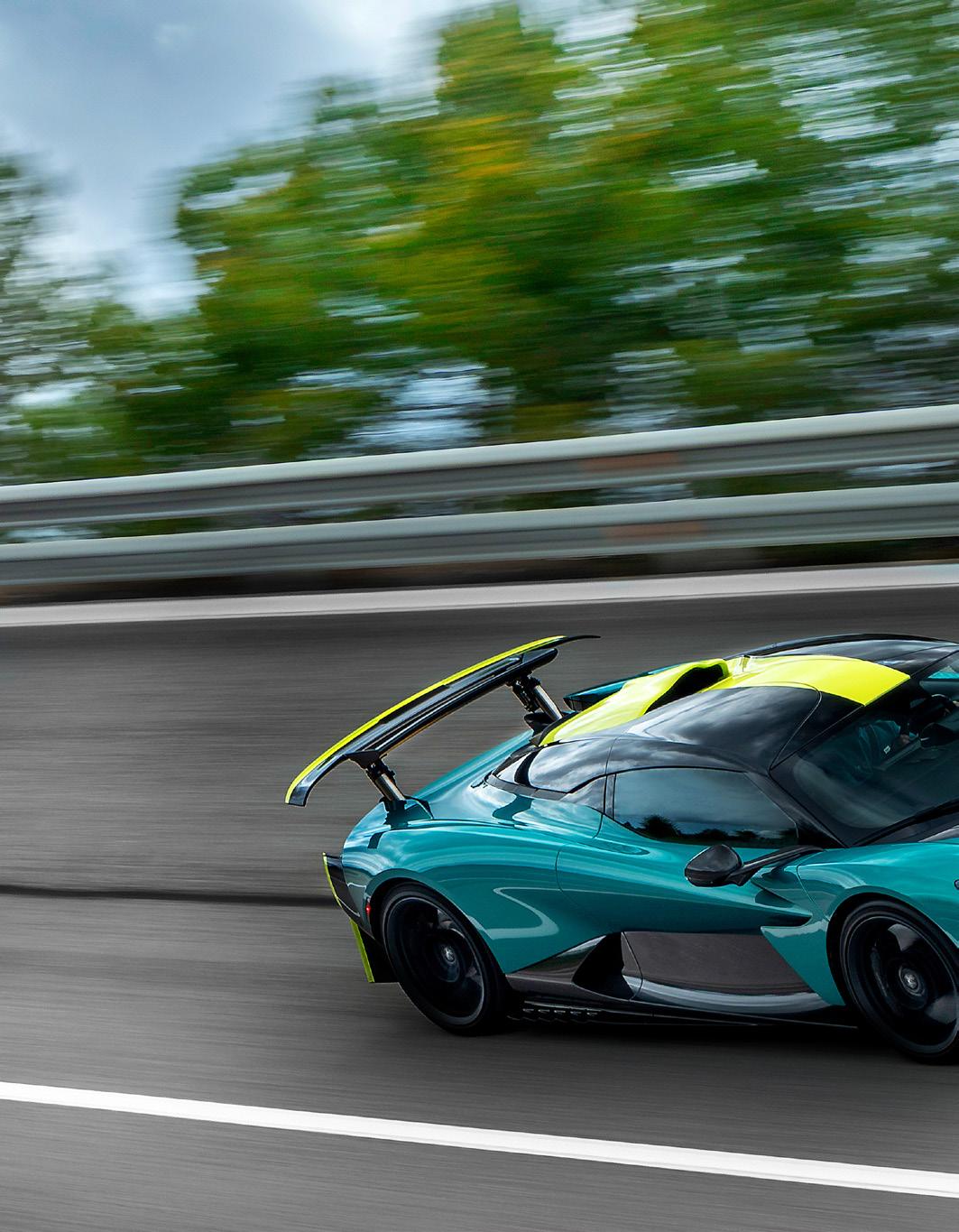
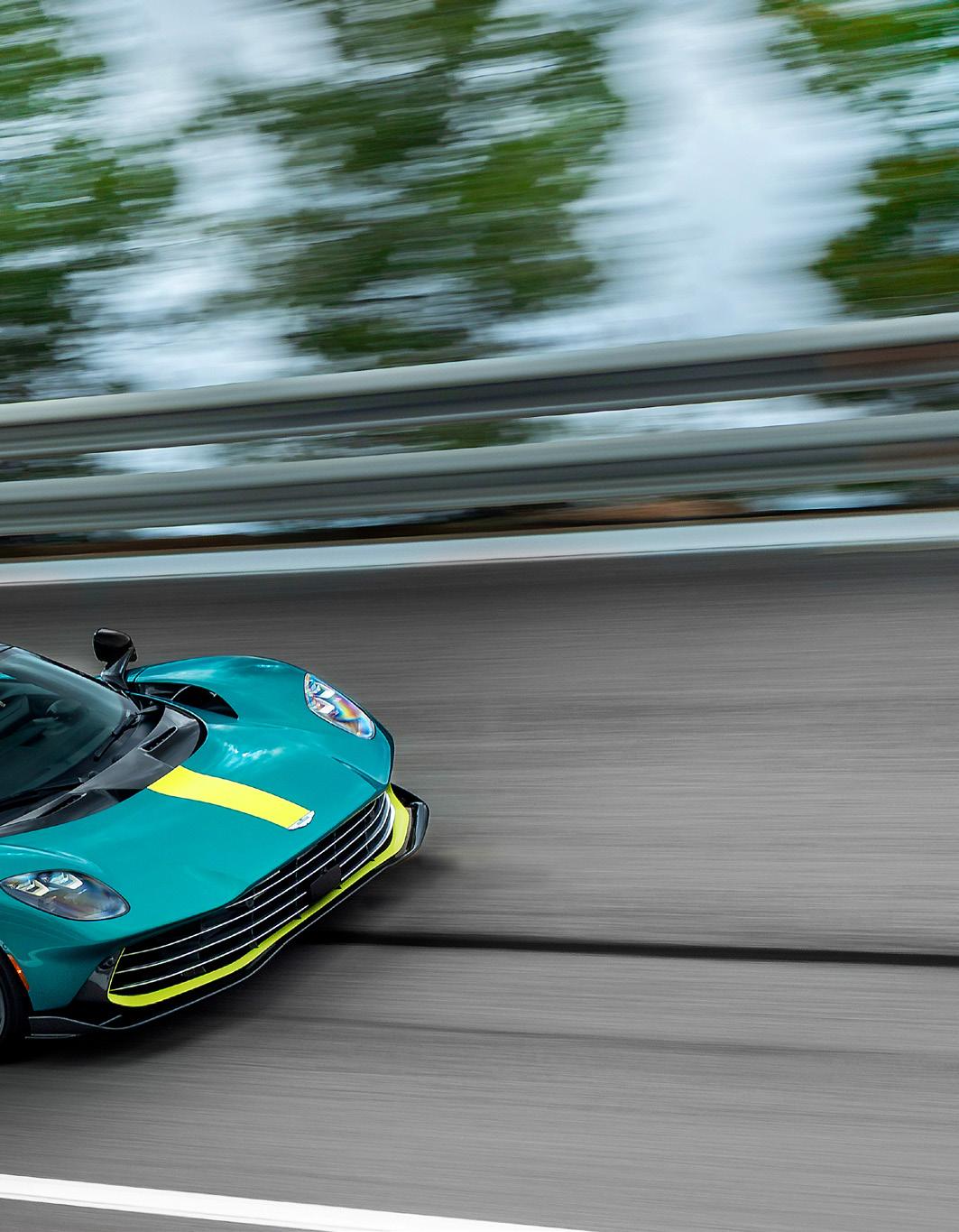
After a somewhat prolonged gestation, the Valhalla, Aston Martin’s hybrid-powered, 1064bhp, 217mph supercar is finally here. Road &Track’s Mike Duff tells its story and drives one of the final prototypes
‘IT’S A BIT SLIPPERY OUT THERE.’
Simon Newton, Aston Martin’s director of vehicle performance, does a nice line in understatement. Contrary to what you see in the photographs accompanying this article, several weeks of unbroken sunshine have turned to grey skies and rain showers over Silverstone to coincide with my first encounter with a prototype version of the new Aston Martin Valhalla. The well-rubbered surface of the Stowe circuit that Aston uses for development work is sodden and dotted with awkwardly sited puddles.
Confirmation of Newton’s assertion comes when I get sent to reacquaint myself with the track in a new Vantage. In truth, there isn’t much to learn. Stowe only squeezes a dozen corners into its diminutive 0.9-mile length, most of which are tight and necessarily slow. But the Vantage seems determined to scrap


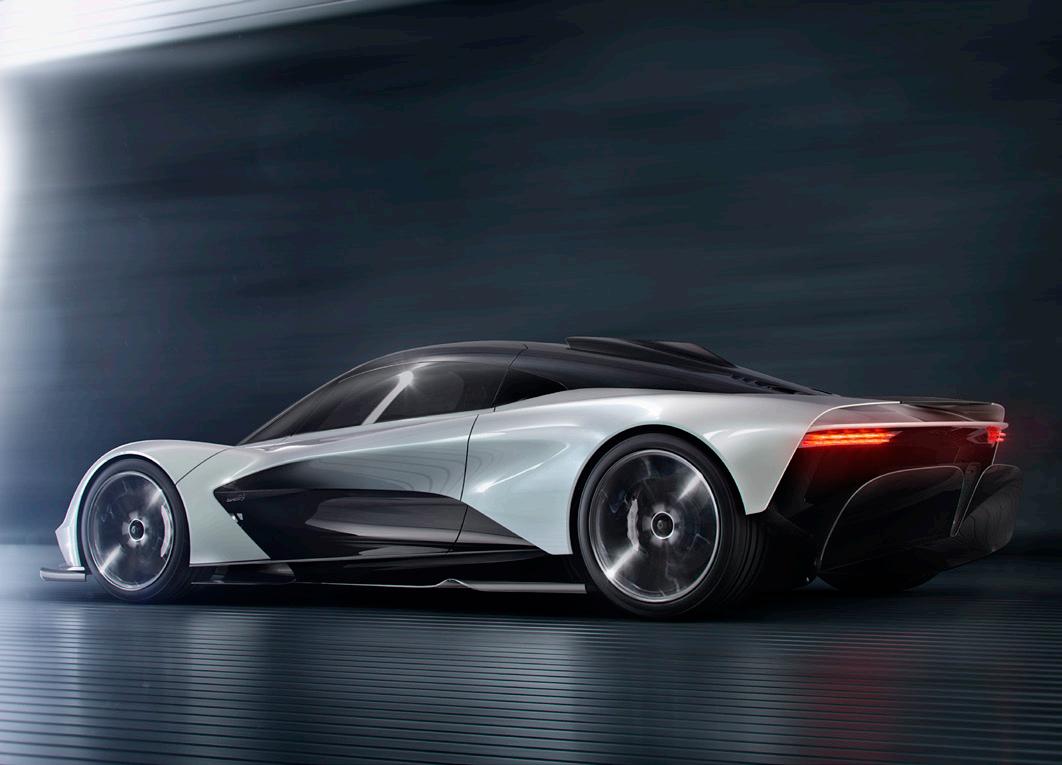
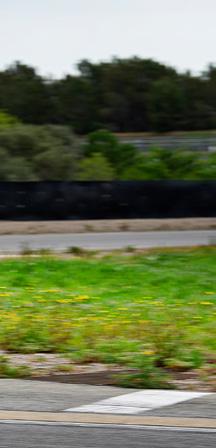
Valhalla was first glimpsed as a series of renderings (including the one above) way back in 2019, when it went under the codename AM-RB 003.
Left: during final validation testing earlier this year
‘The electric motors add up to 248bhp for a 1064bhp peak. We are living in the era of road cars with fourfigure outputs’
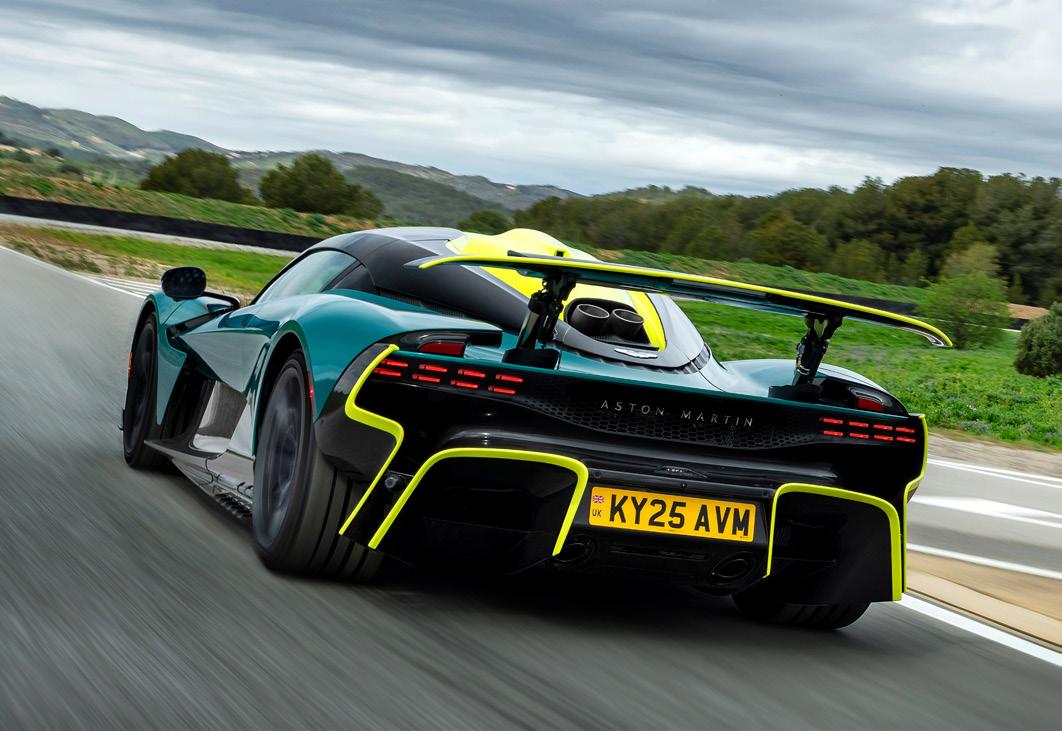
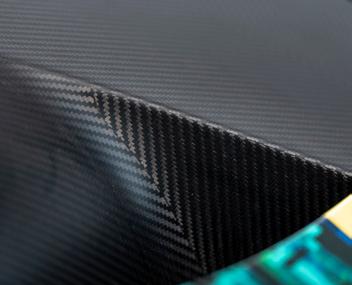
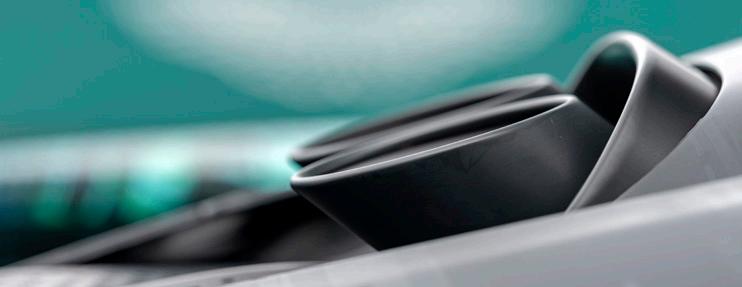
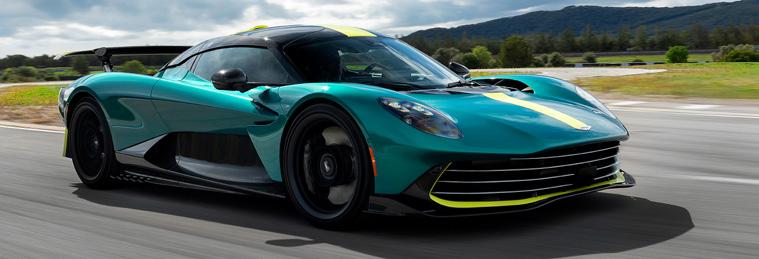
Rear wing (left) rises clear of the bodywork and can change its angle depending on the requirements for drag, downforce or even braking
with all of them, and also the not-very-long straights, the rear wheels trying to spin up as torque arrives in every gear. The prospect of moving onto something with 40 per cent more torque, 60 per cent more bhp and the mass of its engine behind the cockpit is terrifying and thrilling in equal measure.
Not that I was ever going to say no. Like every Aston fan, I’ve been waiting for years to experience the Valhalla. The original idea was announced all the way back in 2019 by Aston’s thenCEO Andy Palmer. The plan was for a more affordable, more practical understudy to the otherworldly Valkyrie, that Adrian Newey-designed hellion. Like the hypercar, this new model was to be jointly developed by Aston and Red Bull Racing’s Advanced Technology division around the original code AMRB 003 (where 001 and 002 were the road and track versions of the Valkyrie). The 003 was to feature a new hybridized V6 engine that Palmer said Aston would develop itself and, soon after the project was announced, it was named Valhalla. This, appropriately enough, being the utopia to which Valkyries carry fallen warriors in Norse mythology. Customer deliveries were scheduled to begin in 2021.
Somewhat obviously, that didn’t happen. Aston fell into a deep financial crisis and was then taken over by Lawrence Stroll, a man with his own Formula 1 team. That led to a corporate divorce from Red Bull, with Valhalla development taken in-house. A change of boss led to a radical change in direction, with the Valhalla ditching the proposed V6 for a twin-turbo V8, this sourced from new Aston CEO Tobias Moers’ former employer, AMG.
Built from a kit of parts rather than being a straight transplant, and with a flat-plane rather than a cross-plane crank configuration, this V8 would work in conjunction with a triple-motor hybrid system, one for each front wheel and a third integrated into the eight-speed dual-clutch transmission at the rear. Moers promised peak power of 937bhp, with active
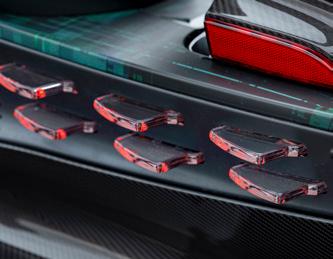
aerodynamics able to generate up to 600kg of downforce. He also said the car was on target to manage a 6:30 lap around the Nürburgring Nordschleife, 13 seconds inside the road car record of the time as set by the 991-gen Porsche 911 GT2 RS. Customer deliveries were now scheduled to begin in 2023.
You won’t need to check your calendar to realise the schedule has slipped further, with Aston having changed CEO twice more as the wait has gone on. But despite the delay, the car I’m at Silverstone to drive, a development prototype wearing a jazzy wrap, is clearly close to the 2021 concept. Bodywork and interior architecture are barely changed, ditto the roof-mounted intake scoop and the pair of upward-facing exhaust pipes at the base of the carbonfibre engine cover.
Obvious alterations for the production version include the addition of a second set of tailpipes next to the diffuser and a much larger rear wing, this able to both rise clear of the bodywork and to adjust its angle. Power has also gone up, with the 4-litre flat-plane V8 making 816bhp and the electric motors adding up to 248bhp. That’s a 1064bhp peak. We are living in the era of road cars with four-figure outputs.
Before my drive, Newton talks me around the car, and then gives me a few passenger laps as he introduces the different dynamic modes. ‘This is obviously a hugely complex car, but we wanted to make it feel simple and easy to understand,’ he says. To that end, Aston hasn’t gone for the borderline OTT level of configuration possible in some rivals.
Indeed, the basics should be recognisable for anyone graduating from another current Aston, with Sport, Sport Plus and Track modes in ascending order of seriousness. The last of these is the one that delivers the potential to make the full 600kg of downforce, although only at speeds above 150mph, which I definitely won’t be seeing today. Working away behind the scenes there are a myriad of active systems – variable dampers, a torque-biasing rear differential and also fast-acting
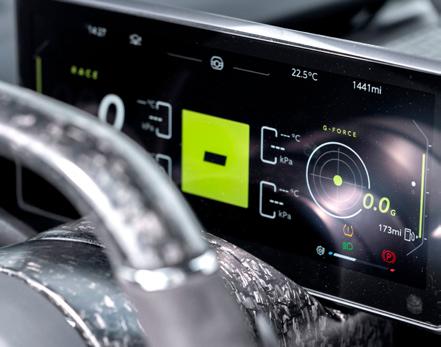
software control of just how much torque is sent to the two electric front motors.
There is also a full EV mode, with the Valhalla being able to propel itself with the engine off, although only at speeds of up to 80mph. This is intended to help the thoughtful owner make silent departures or arrivals rather than for prolonged use; the total electric range with the battery fully charged is less than eight miles. In Sport the V8 starts and stops when required, while Sport Plus and Track keep it running all the time, although with the latter setting keeping the battery topped up to prioritise longer stints on track.
Oh, and to add to the fun there’s also another outing for the variable traction control function that Aston already offers on Vantage, DB12 and Vanquish. Turn the stability control off and the drive mode selector switches to allow whatever rear-end slip the car can generate before the system intervenes to rein it back in, as Newton deftly demonstrates on the slick surface before driving us back to the pits.
Then it’s my turn. Did I mention that it’s raining?
REACHING THE DRIVER’S SEAT through butterfly-opening doors is a novel experience in an Aston, but once installed the controls are pretty familiar. The Valhalla has the same stubby gear selector as the rest of the range, plus the rotary drive-mode dial and the familiar touchscreen interface. The driving position is commendably low, but there is more room around driver and passenger than is normal for this typically compromised part of the market. And vastly more than in the Valhalla’s Nomex-tight cockpit. I can sit comfortably wearing a helmet with headroom to spare.
The prototype has clearly been built to work, rather than show off. The interior is finished in chopped carbon rather than any of the plusher materials that Aston will happily allow Valhalla buyers to upgrade to, while the lack of luxuries in the prototype includes the absence of any carpeting. There’s a definite minimalist ethos on display with the binnacle-free digital dashboard, which does feel lacking in specialness given the Valhalla’s altitudinous price point. Most functions are controlled either by buttons on the squared-off steering wheel, a narrow row of controls on the dash, or through the touchscreen.
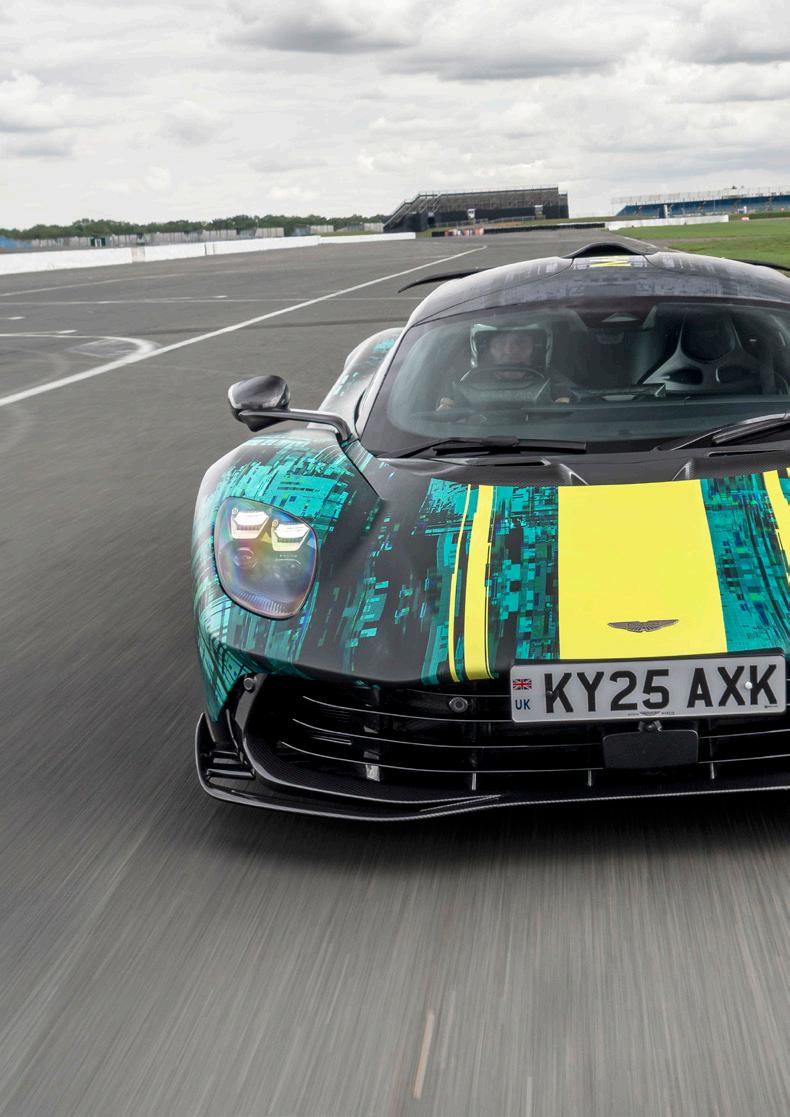
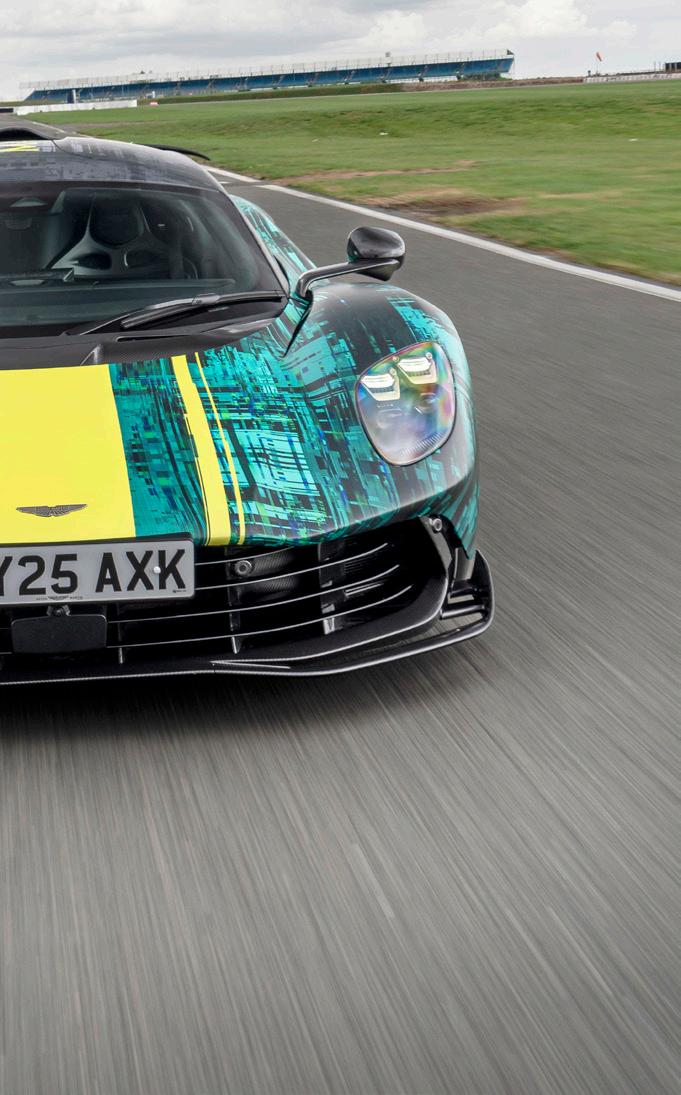
‘The prototype feels friendly and progressive when goaded into surrendering lateral grip’
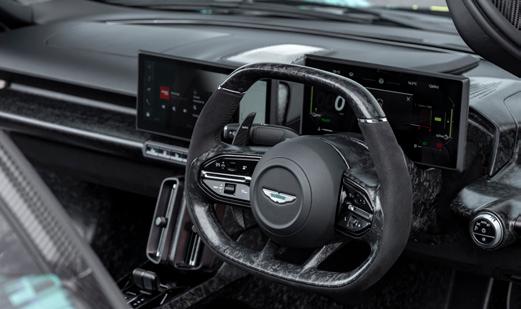
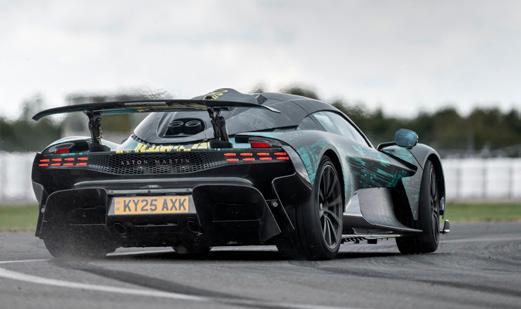
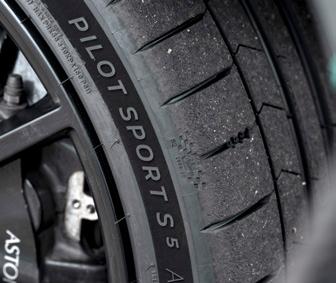
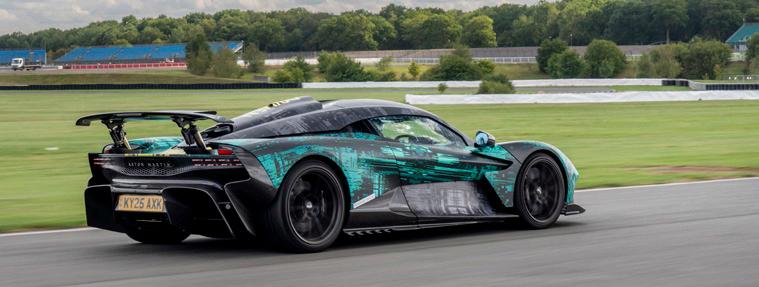
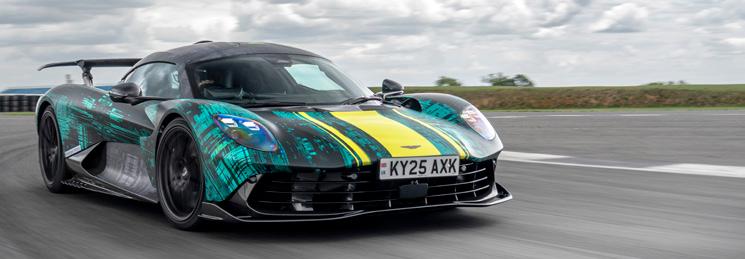
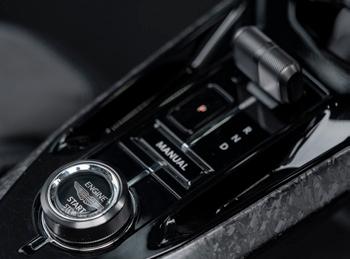
Casual thoughts about ergonomics are soon banished as I head out for my first stint. Stowe might be short, indeed the sort of circuit that sometimes gets likened to a famous cartoon mouse. But that doesn’t mean it’s lacking in opportunities to crash. Frankly, I’m expecting the Valhalla to feel like way too much car for the dinky environment and slippery conditions.
Yet it’s not. The first surprise is traction, with the Valhalla’s smart part-electric all-wheel drive extracting grip where the Vantage found slip. Modern traction control is so good that there is little risk – and no great achievement – in getting the throttle pedal of even the most potent car to the floor. But on Stowe’s straights there is no sense that the electronic brain is having to rein the car back as I do so for the first time. Instead there is just huge, linear acceleration and an immediate sense of dynamic stability.
The two sides of the Valhalla’s powertrain blend seamlessly when asked to give their all. The only real signs of electrification come from what isn’t there, specifically any discernible delay between pressing the accelerator and feeling a response, the motors adding urge even as the turbochargers are spooling up. Aston says that the combustion engine makes both peak torque and peak power at the same 6700rpm – this despite the fact that the closely related cross-plane V8 in the MercedesAMG GT Black Series produces its maximum torque at just 2000rpm. But the Valhalla’s official statistics don’t reflect the way it feels, with huge grunt pretty much throughout the rev range thanks to the invisible hand of the electrical system.
The Valhalla is far from a screamer. Despite its brawn, the engine meets its limiter at just 7000rpm, far below the headline-grabbing red lines of some alternatives in this esoteric part of the market. And not forgetting the Valkyrie’s Cosworth-made V12, which goes all the way to 11,000rpm. The
Valhalla’s AMG engine makes plenty of muscular noises, but these never rise to the screaming crescendo of most supercars. It speaks with a muted voice, both inside and out, with the engineering team confirming that there isn’t much more sound and fury to come in the transition from prototype to production. For which, it seems, we have to blame Europe’s increasingly tough drive-by noise regulations.
One area that should improve is the delayed responses of the digital rev-counter in this prototype, which means the limiter arrives ahead of the change-up light indicating it’s time to select the next ratio. This happens frequently with the gearbox in its manual mode simply because the Valhalla can devour its transmission ratios at an astonishing rate, getting into fourth and even fifth on Stowe’s short straights. Which also serves as an indication of the rate at which trust builds.
But while linear acceleration is thrilling, it’s the Valhalla’s ability to deliver lateral Gs that really impresses. Buyers will get to choose between two different tyres, and I’m glad the prototype is riding on the standard Michelin Pilot Sport 5 Ss rather than the much more aggressive Cup 2s in the slippery conditions. The steering is direct and front-end responses crisp, with genuine feedback getting to the rim. The torquesplitting front axle and active rear differential work together invisibly to help the car to turn and find credibility-threatening levels of grip in the conditions. Similarly the brakes manage to combine regeneration with retardation from the vast carbon-ceramic discs seamlessly.
Switching between the different drive modes transforms the character of the car. In the default Sport mode it stays locked-down, resisting slip and defaulting to a predictable – if unexciting – gentle understeer when pushed in tighter turns. But moving to Sport Plus, which Newton describes as ‘the fun
ENGINE V8, 3982cc, twin-turbocharged, plus three e-motors (two front, one rear) MAX POWER 1064bhp (combined) MAX TORQUE 811lb ft (V8 engine only)
TRANSMISSION Eight-speed dual-clutch transmission (DCT) with e-reverse, e-differential SUSPENSION Front: double wishbones, pushrod-operated inboard coil springs and telescopic dampers, anti-roll bar. Rear: multi-link STEERING Rack-and-pinion, electrically assisted BRAKES Carbon-ceramic discs, 410mm front, 390mm rear, four-piston calipers, ABS, AEB WHEELS 20in front, 21in rear TYRES 285/30 ZR20 front, 335/30 ZR21 rear, Michelin Pilot Sport S 5 WEIGHT 1655kg (dry) POWER TO WEIGHT 653bhp/ton (dry weight) 0-60MPH 2.5sec
TOP SPEED 217mph (electronically limited) BASIC PRICE £850,000
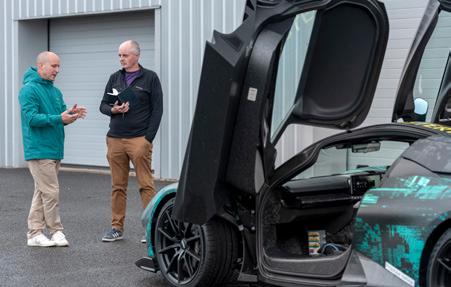
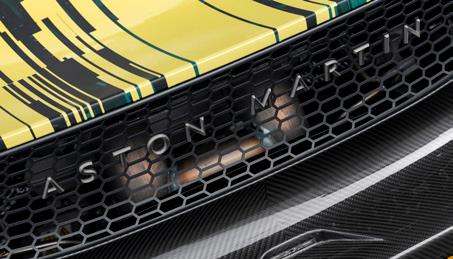

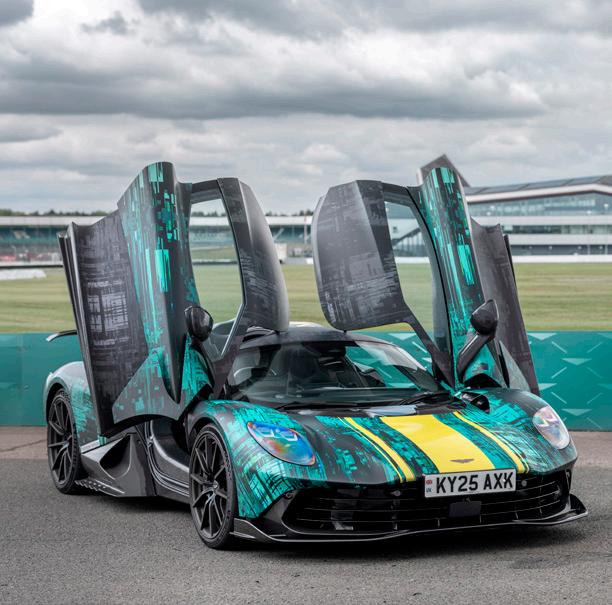
mode’, loosens the leash and allows the rear end to slide slightly under power, intervening before the back axle strays too far from its intended line. Race mode, by contrast, is all business, lowering and stiffening the suspension and prioritising grip. It also brings to the mirrors the spectacular if distracting sight of the rear wing adjusting its angle and snapping into its ‘air brake’ configuration under big stops. By the time of my second stint at Stowe the rain has stopped and the track is starting to dry. Having started out in Sport Plus I am soon feeling confident enough to turn the stability management off and play with the variable traction control. Even in not-quite-finished form, the Valhalla prototype feels friendly and progressive when deliberately goaded into surrendering lateral grip. It’s hard to imagine many buyers are going to be choosing to slide their massively expensive supercars around racetracks (or even roundabouts), but it is impossible not to respect the depth of engineering that has gone into making such an exotic car feel so approachable at the limit. And also beyond it.
Of course, half a day at Silverstone left many questions unanswered about what the fully finished Valhalla will feel like when it gets to wider and more open spaces. I barely got into the territory where the huge downforce starts to make a difference, and I’ve got no idea of what Aston’s second midengined supercar will feel like in the real world. Sure, there are niggles – the cabin feels short on luxury for any Aston Martin, and if the company doesn’t manage to find some more sound and aural fury then I’m sure the makers of aftermarket exhaust systems will be clamouring to help out.
But the long wait is almost over. And I’m sure that, for those lucky enough to have both a Valhalla allocation and the readies to pay for one, it will have been worth it.
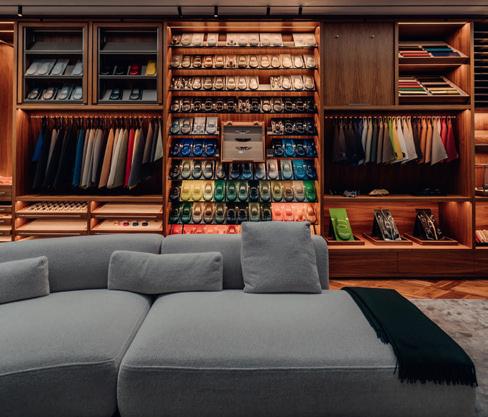
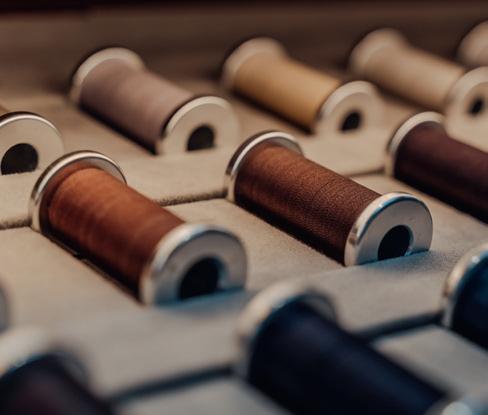

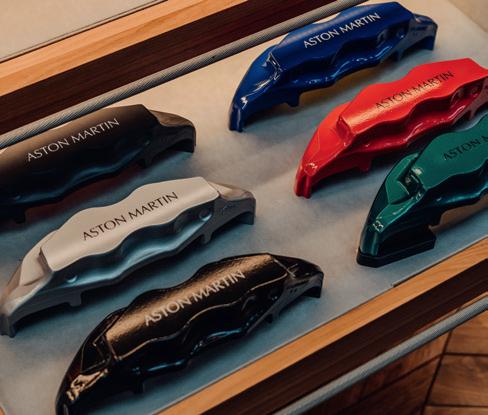
Valhalla customers are invited into one of Aston Martin’s ‘bespoking’ rooms to choose everything from the paint finish to the colour of the seat stitching – and see their car rendered in breathtaking detail
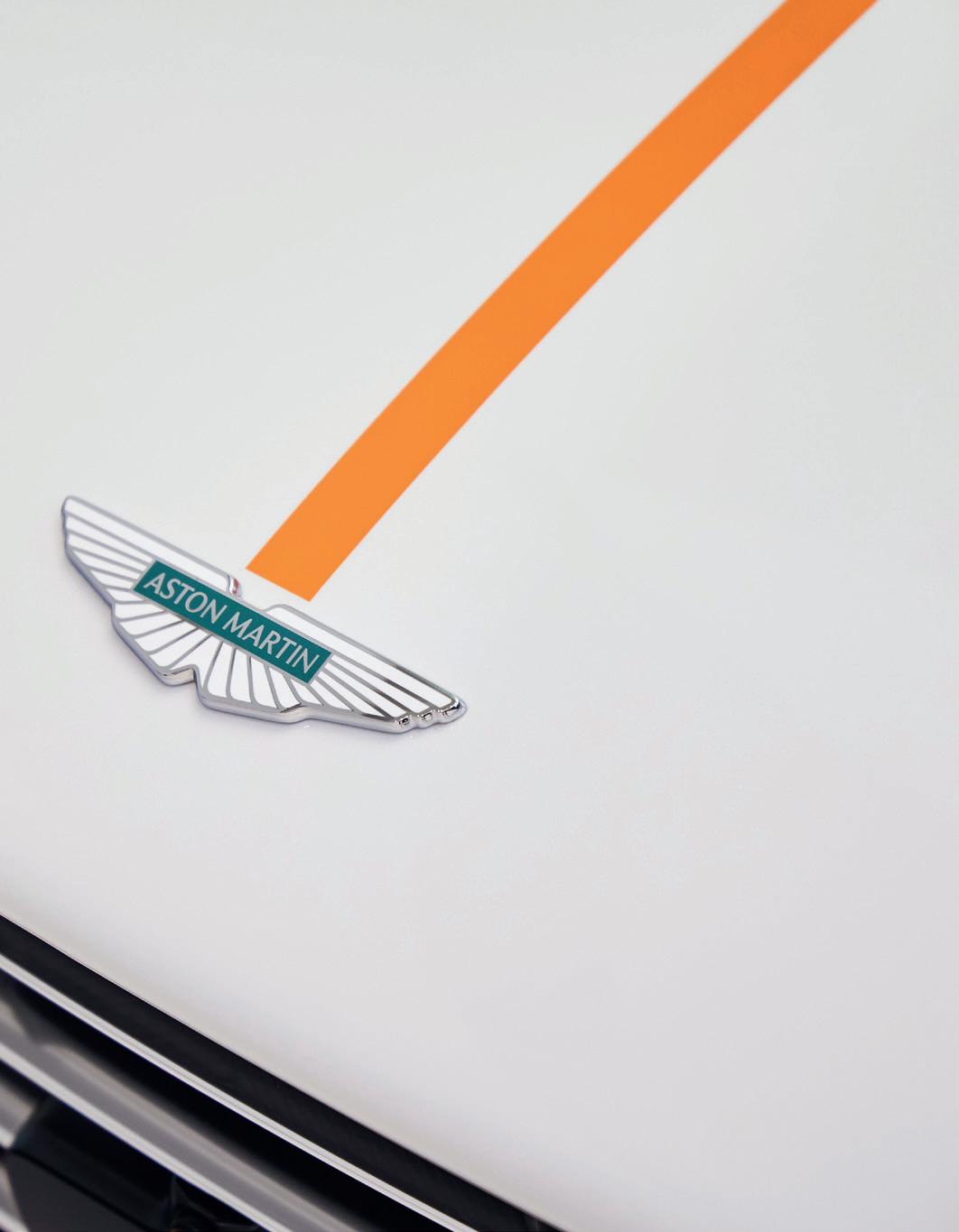
SSO YOU’VE READ ABOUT THE VALHALLA. PERHAPS YOU want one. Perhaps the thought of owning one is already going to obsessional levels, the way that it does with truly special cars. Perhaps, maybe, you’ll order one.
Imagine, then, that you actually do order a Valhalla. Then what? How do you turn the dream into reality? How do you ensure that the reality is as good as the dream? Which of the 60 core shades of paint available to you as a Valhalla customer will you choose? Or will you ask for a special Q commission paint that can be matched to anything? Will you go two-tone? Will the wheels subtly match the bodywork or shout out in stark contrast? How about the calipers? And don’t get us started on the interior options… You don’t want to regret your choices when you take delivery, do you?
We can’t tell you what to do, but we can show you how you’d go about speccing your own Valhalla, because we’ve done it ourselves – and even without there being an actual Valhalla at the end of it, we can tell you that it felt daunting, then fascinating and then highly enjoyable.
Join us, then, in one of Aston Martin’s two new bespoking rooms just off the revamped reception at the Gaydon factory. There will be more of these, around the globe. Close the door and you’ve entered a weird world of ultra luxury and high tech, cut off from reality; behind you is a wall of paint and material samples, in front of you a laptop and a huge screen. No, make that a HUGE screen, 7.5m x 2.8m, of the most remarkable resolution. It’s on this screen that your Valhalla will come to life, with the help of the Aston Martin in-house designer accompanying you – in my case, Tom.
So the first question you’re asked: where do you plan to use your Valhalla the most? In the Alps? The desert? The US West Coast? I decide that Cambridgeshire doesn’t cut it, and opt for California. Well, I’m living the dream aren’t I?
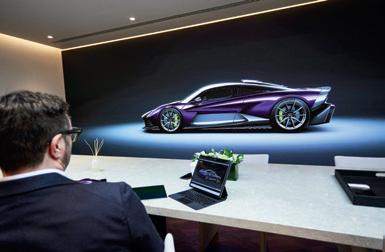
Enormous ultra-highdefinition screen allows you to see your Valhalla evolve before your eyes as you work through Aston’s bespoking process
The reason for the question is to portray the colours in the appropriate light. A dark green might pop in the desert but look dreary in the UK. A tinted carbon weave will look different in harsh light than soft light. And so on.
From there, though, ‘my’ Valhalla moves into a virtual studio, neutrally lit in order to assess the colours without distraction – but we can return any time to California to see how it fares in the warm West Coast sunshine.
And then the big question: what colour do I want to choose? I opt for orange, then think ‘McLaren!’, panic and relent. How about red? Not a bright red but something classy, darker, metallic. We run through a selection of the ‘standard’ colours and there it is, Supernova Red, which sparkles in the LA sunlight. This brief paragraph belies the laboured decision, but I’m happy with the result. I could have had a colour matched to, say, the rubies in my dog’s favourite collar, but there’s no time for that today (and I promise you that my dog never actually had a bejewelled collar).
And then Tom steps it up. I could have it two-tone if I like. The roof could be carbon composite. Or the side sculptures, designed for aero and to slim the car visually, could be a different colour or finish. And if I do choose a carbon composite finish, there is a choice of visible weaves and tints to pick through. This isn’t easy.
Once again, Tom guides me. I’m not a fan of highly contrasting two tones; I prefer to live a more understated life (which might make you question why I’m speccing ‘my’ Valhalla) but when we hit on a gloss black roof and natural matt-finish carbonfibre for the sides and rear spoiler, I know we’re heading in the right direction.
There’s only one way we can go now for the wheels, and that’s black. But which of the two designs available, forged aluminium or magnesium? We flit back and forth virtually instantaneously between the options on the screen before I
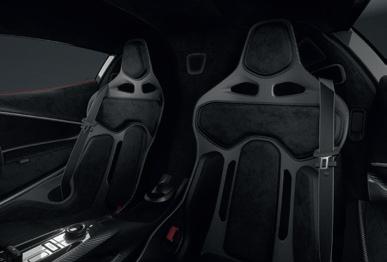
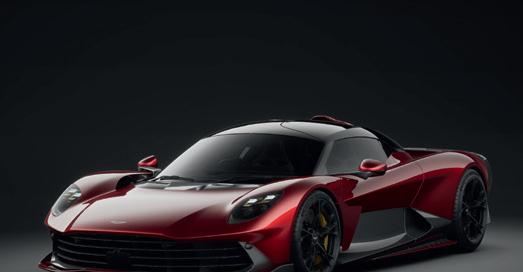

decide that I prefer the look of the aluminium option, which I could have with the spokes polished or the full wheel in a ‘Liquid Titanium’ finish – but no, it’s matt black for me.
Mirror caps? Body colour please rather than carbon, black or contrasting. Do I want to pick out the outline of the grille and other areas in a different colour? I try but it takes away from the class of the Supernova Red. I could have a stripe the length of the car (no, not this time) and countless other options but I keep this one simple. My last decision is on caliper colour: we try several, nearly keep them black, then make a last-minute decision to go gold. Again, the speed with which these changes are made and the way they’re represented on screen is mindblowing.
Done? Oh no, there’s the interior to sort. Leather or Alcantara? I’m not a great fan of leather so I choose the latter, with matching rather than contrasting stitching. I keep the ‘jewellery’ options (metalwork around the vents, etc) similarly subtle and opt for the satin twill-weave carbonfibre seats rather than the glossy option or the standard weave.
Are we done? Well, seeing as I’m such a special customer, I get another go. This time, with apologies, I choose orange but very much not McLaren Papaya. Tom persuades me to be more adventurous with the colour contrasts, so the sides are left in satin black with a gloss black roof and I add (I’m rather proud of this) a blue pinstripe along the lower edges of the sills.
Inside, I go for California Poppy as the main colour, with a blue contrasting stitching and a matching blue line around the cockpit and on the steering wheel. It shouldn’t work but I love the effect.
Honestly, I’ve skipped through so many of the steps because I’d have bored you senseless, but it’s a fascinating process when you’re there. Try the configurator on the Aston Martin website – or for the full effect, simply order a Valhalla and nip over to Gaydon to do it properly…
Our man Lillywhite’s Valhalla looking good in Supernova Red with black wheels and gold calipers. Inside, tasteful black Alcantara trim

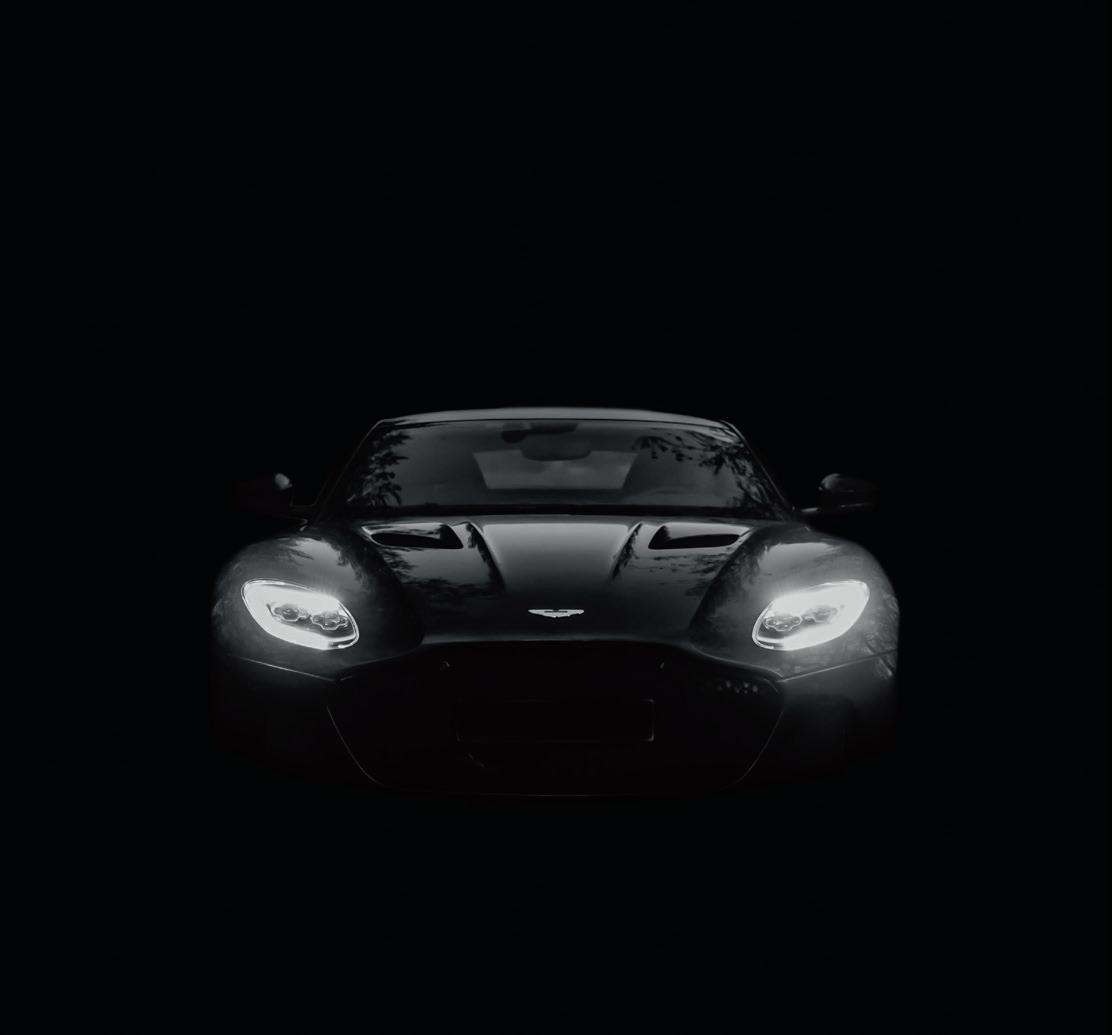

As a largely disappointing 2025 season comes to a close, the Aston Martin F1 team can look forward to 2026 with real optimism, thanks to the arrival of one man, Adrian Newey. We find out what still drives him
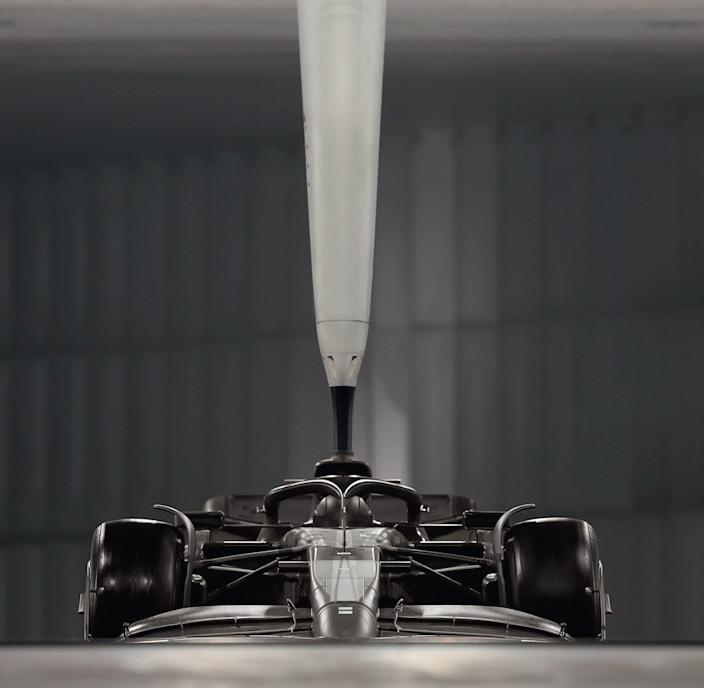


TTHE 2026 SEASON WILL BE A MOMENTOUS ONE FOR Formula 1. New chassis and power unit regulations have combined to create the biggest year-on-year technical package change in decades, while in addition Cadillac is arriving as an 11th team, Sauber is becoming Audi, and Red Bull’s two teams will use an in-house engine backed by Ford.
And there are huge changes happening at Aston Martin. Under its various identities, the Silverstone team has been a customer of Mercedes since 2009, but in ’26 it becomes the sole work partner of Honda, the Japanese company having left Red Bull after four World Championship wins with Max Verstappen. And the man charged with making the AMR26 into a title challenger is none other than Adrian Newey, who was responsible not just for the cars that carried the Dutchman to success, but also for winning many more titles with Williams and McLaren.
Having left Red Bull early in 2024, Newey was a free agent, and he took his time weighing up various offers, notably one from Ferrari. However, Lawrence Stroll was determined to get him, and helped by intermediary Eddie Jordan – who still had a soft spot for the team he founded under his own name in 1991 – he succeeded.
So why did Newey choose Aston Martin? He liked the idea of staying in the UK and taking on the challenge of taking a midfield team to the next level, which is exactly what he did at Red Bull. But in the end the key was not just the mega
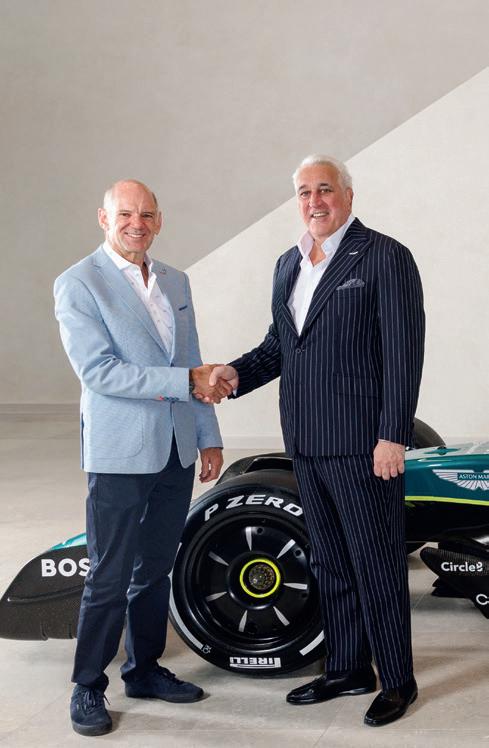
salary that Stroll was willing to pay but also the fact that the offer included equity in the company. At a time when the values of Formula 1 teams are soaring into the billions, that carrot was hard to resist.
‘As I announced that I would be departing the old team, I was very flattered to have a lot of approaches from various teams,’ Newey said when his appointment was confirmed last September. ‘But really, Lawrence’s passion and commitment and enthusiasm is very endearing. It’s very persuasive.
‘The reality is, if you go back 20 years what we now call team principals were actually the owners of the teams – Frank Williams, Ron Dennis, Eddie Jordan, etcetera. In this modern era, Lawrence is actually unique in being the only properly active team owner. It’s a different feeling when you have somebody like Lawrence involved like that, it’s back to the old school model. And to have the chance to be a shareholder and a partner is something that hasn’t been offered to me before. So it’s a slightly different slant. It’s one I’m very much looking forward to. It became a very natural choice.’
The Aston Martin name also had obvious appeal, Newey having been responsible for the mighty Valkyrie when he was at his previous employer. ‘Arguably, next to Ferrari then Aston Martin is the most iconic brand across the world,’ he said. ‘It’s got such a presence and a feel to it. So of course, that’s special.
‘It also ties in quite well, because obviously I was involved with the Valkyrie project, and I have a couple of classic Astons
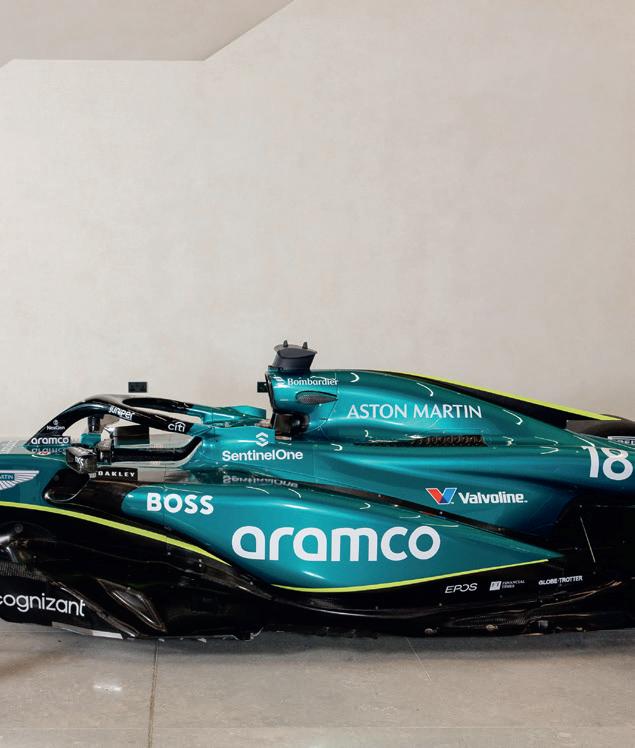
as well. So I’m well familiar with the brand and the magic that goes with that.’ The icing on the cake was that the team had just moved into its brand new Silverstone base, complete with the first all-new F1 wind tunnel for many years, which would become Newey’s playground.
‘These facilities are just stunning,’ he said. ‘It’s not an easy thing to do, to build a brand new factory in a green field site and have a really nice, warm, creative feel to it. Because, after all, that’s what we’re here for, to try to be creative and to come up with good solutions, and particularly with good communication between everybody that works here. And I’ve seen some new buildings that haven’t quite fulfilled that, but this one is has a great feel. The proportions are right.’
After serving a gardening leave, he officially started work in March this year, just a couple of months after the rules allowed teams to commence aero research for their 2026 projects. The fact that he could direct design of the AMR26 almost from the start is what makes the timing so interesting. His entire focus is on the new car, and he’s had no involvement in this year’s tricky model.
‘He loves a rule change,’ says former McLaren engineer Mark Williams. ‘If there’s a time to be afraid of Adrian, it’s when the regulations change and you should be quaking in your boots as a competitor, because he thrives on that exactly. And I think if the regulations are stationary for too long, he gets a bit bored...”
A delighted Lawrence Stroll welcomes Newey to the Aston Martin fold, where he’ll form a partnership with Fernando Alonso (below)
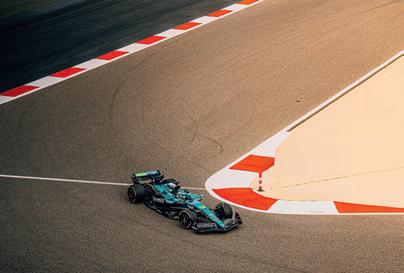
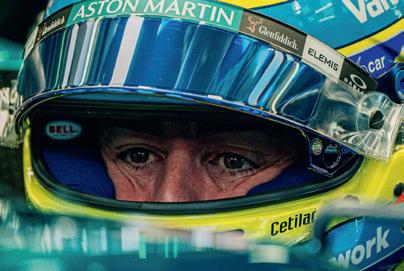
The upside is not just his own skillset and decades of experience, it’s also how he energises everyone around him and gives them the confidence to know that under his overall guidance the team is heading in the right direction.
For the first time in two decades, Team Silverstone has to make its own gearbox to mate with the Honda – it previously used customer Ferrari and Mercedes units. One early sign of Newey’s impact was that he was quick to ask for a smaller and lighter transmission casing for the benefit of overall packaging.
That sort of demanding approach is a Newey trademark, and is what has made him so successful over the decades. So how did he become the biggest technical legend in the history of the sport?
After serving a brief apprenticeship in 1980 at the dying Fittipaldi team under the legendary Harvey Postlethwaite, Newey moved to March Engineering, where he furthered his education by overseeing all design aspects of IndyCar, F2 and sportscar contenders, while also running them at circuits.
‘After three or four years out of university I’d had good experience as an aerodynamicist, as a mechanical designer, and as a race engineer,’ he recalls. ‘And I think that’s where for young engineers now joining any F1 team, it’s much more difficult. Because the teams have become so big, it’s very difficult to achieve good knowledge across those three disciplines. In those days, if you were prepared to move around a bit, then you could achieve it.’
‘It’s a joy to work with Adrian. His hunger is huge. It’s just wonderful conversations about making fast race cars’
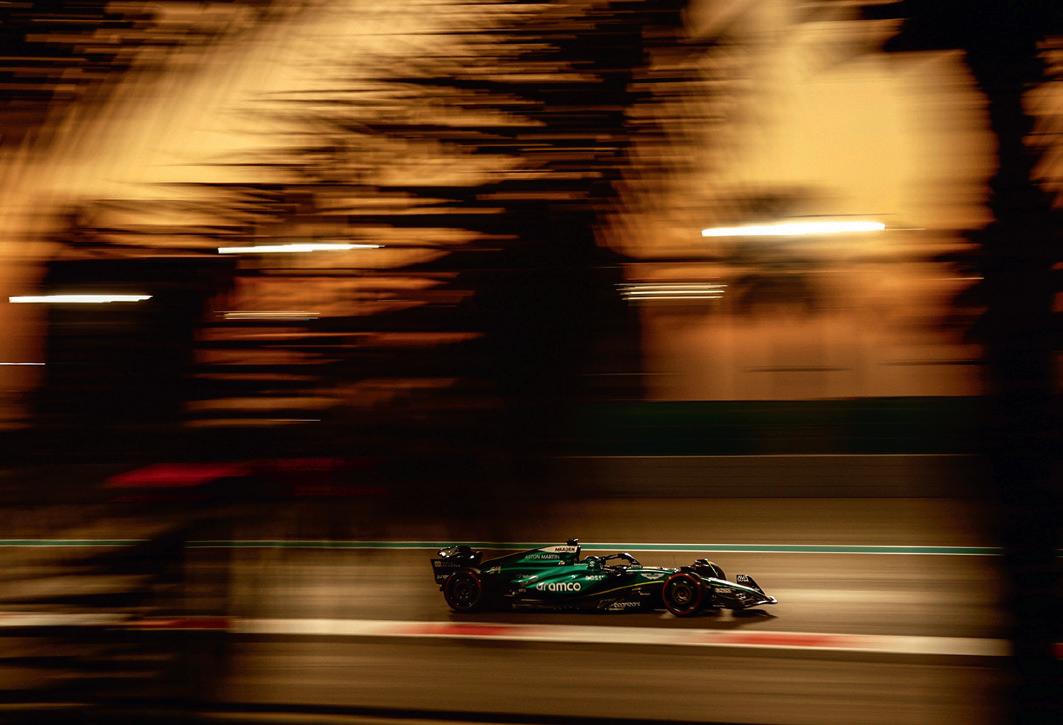
Relishing
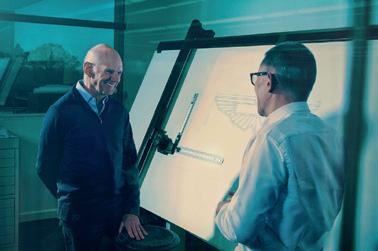
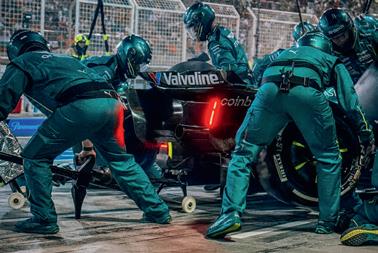
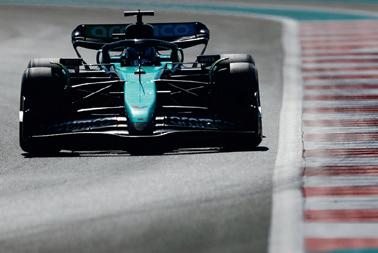
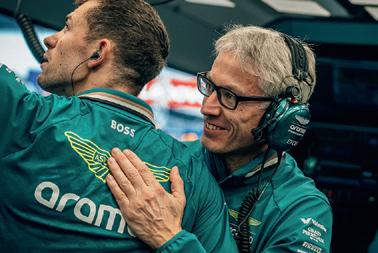

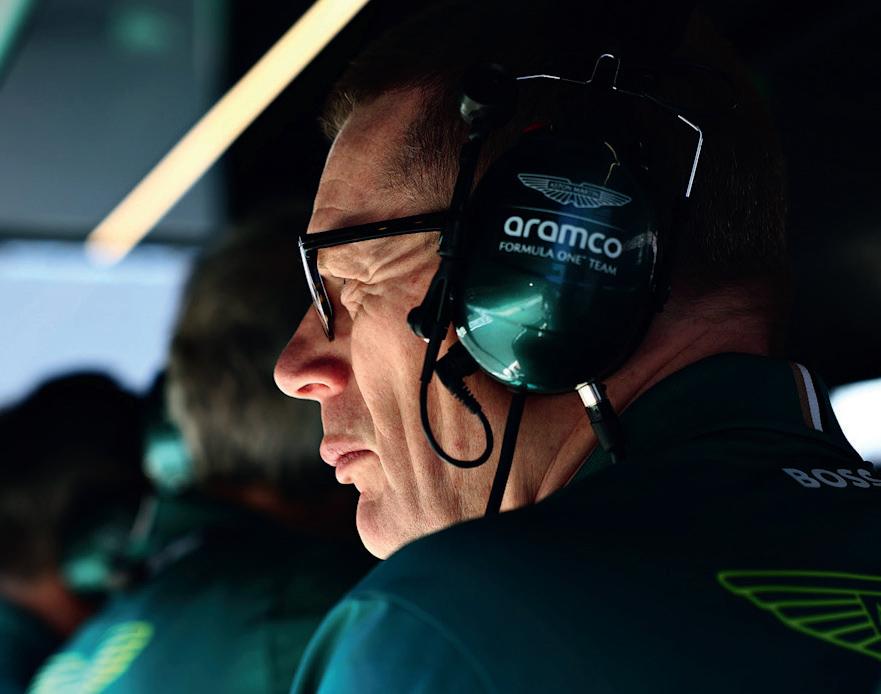
In 1987 Newey became technical director of the then new March F1 team, stunning rivals with the innovative and beautifully packaged 881, which would move the goalposts for the whole sport. The team was then rebranded Leyton House and Newey suffered the biggest setback of his career when a dodgy wind tunnel misled him and led to nightmare 1989 and 1990 seasons.
His reputation damaged, he was eased out of the team. In effect he took a step back to become chief designer at Williams, working under Patrick Head. It was there that he contributed to a series of title-winning cars and established himself as the technical genius of the era.
He moved to McLaren in 1997, where he continued to find success, although his relationship with demanding team boss Ron Dennis and his number two Martin Whitmarsh was reportedly strained at times.
‘I think I probably stayed at McLaren for a little bit too long,’ he recalls. ‘With hindsight, it was really when we moved to the new factory that personally I felt the team lost something. It was a very kind of soulless place to operate. And the politics seemed to be getting more difficult, let’s say. And I started to lose my own motivation a bit.’
He decided to leave at the end of 2005 and took up an offer from Christian Horner to join the recently rebranded Red Bull team, which had achieved little under its previous Stewart and Jaguar identities.
Success came quickly, with four titles for Sebastian Vettel, but in the early years of the hybrid rules from 2014 Red Bull struggled with a below-par Renault power unit.
‘It was very frustrating,’ Newey recalled. ‘And that was kind of another time when you question your motivations a little bit, because it’s difficult to put everything in when you know that you’re being let down by your engine partner.
‘And that’s one of the reasons why I went slightly more part-time on F1 and got involved in the Valkyrie project, because I just need something else to stimulate me rather than just working stupidly hard on something that can never win the championship.’
A move to Honda power in 2019 turned Red Bull’s fortunes around, and four more titles followed with Verstappen. However, after nearly two decades and his longest run at any of his teams, Newey understandably began to have doubts about his future commitment, and the off-track turmoil that hit the Red Bull camp in early 2024 was the tipping point.
He left without knowing where he would end up – or even if he wanted another job at the Formula 1 coalface – before Stroll won the fight to secure his services.
‘Adrian is key, key, key,’ the team owner said when he announced Newey’s new role, ‘and the biggest part of the puzzle, certainly from a technical leadership point of view. He will be leading the team, and I think that will have a trickledown effect throughout the whole organisation.’
Former world champion Alonso is already forging a strong working relationship with Newey, describing him as a ‘very special person’
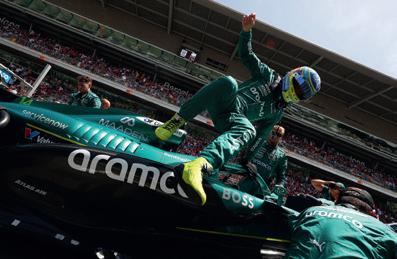
One huge advantage is that at Red Bull Newey enjoyed a good relationship with Honda. He knows the key people, he knows how the Japanese company operates, and while the 2026 power unit will be brand new, he understands Honda’s technology and how best to integrate it with his chassis.
Prior to his arrival in March, Aston Martin created an office for him with space for his famous drawing board, which has followed him around the different teams he’s worked for and is capable of carrying the layout for a full-sized car. He remains a steadfastly analogue thinker in a digital world.
‘His first day was very low key,’ team principal Andy Cowell said shortly after Newey’s arrival. ‘He’s an engineer. He’s walked in, he’s picking up the 2026 regulations, understanding those regulations, getting into the detail of the work that we’ve been doing, understanding that, contributing to ideas.
‘And it’s a joy to work with Adrian. His experience is vast. His hunger is huge. And it’s just wonderful conversations about making fast race cars and the compromises that you have to make, the trade-offs that you need to make, and building up good working relationships with the engineers that have been pushing the concept to date.
‘And there’s already a few areas where he’s saying can we just push that in this direction? Can we just do that? And mechanical engineers, composite engineers, are looking at it and going, “Yeah, okay, we’ll have a go.” And I think that’s the Adrian effect. He picks up on the areas where you should push, and everybody’s just embracing it.’
It’s not just his fellow engineers who are falling under his spell. The 2026 season will mark the 25th anniversary of Fernando Alonso’s F1 debut, and for the first time the Spanish veteran will drive a car created by Newey.
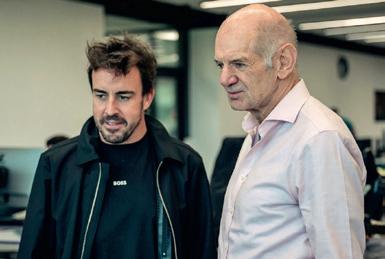
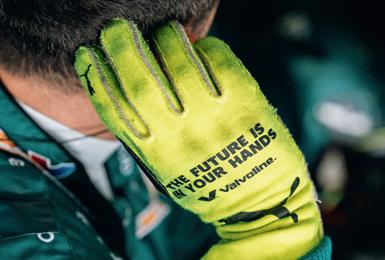
Alonso’s visits to the Silverstone campus have given him the opportunity to get to know the man who for so many years led his main opposition.
‘You spend more time with him, and you keep learning things and how he works,’ said the former World Champion when asked by Vantage about their nascent relationship. ‘How he approaches things, challenges, all this kind of normal day-by-day things in F1.
‘He’s a person that is very special, and I think only a few people will understand him fully and will be able to know exactly what he’s thinking and what he’s doing. So we will need more time!
‘At the moment, we are in a phase of learning from him. Every conversation, every idea, everything that he says, we take it very carefully, we listen, and we try to understand the approach that he’s taking into that comment. And thanks to that, I think we are growing as a team.
‘All the questions and all the ideas that he raises, he explains why he thinks that it’s going to be a good solution for the team, for the car, and for the drivers as well.’
‘Aston created an office with space for his huge drawing board. He remains an analogue thinker in a digital world’ V
As for the man himself, at 66 Newey is as motivated as he ever was. As he said when the deal was announced, ‘I’ve been lucky enough to have achieved what I aspired to from the age of 10 or 12, which was simply to be a designer – I don’t think I knew the word engineer – in motor racing.
‘I can honestly say, everything else has been a bonus, having achieved that straight out of university. I never, of course, expected anything like what I’ve been lucky enough to be involved with. But you have to be honest with yourself, you have to keep yourself fresh. And so I felt I needed a new challenge.’ The size of that challenge cannot be underestimated, but if anyone can rise to it, Aston Martin now has the man who can.

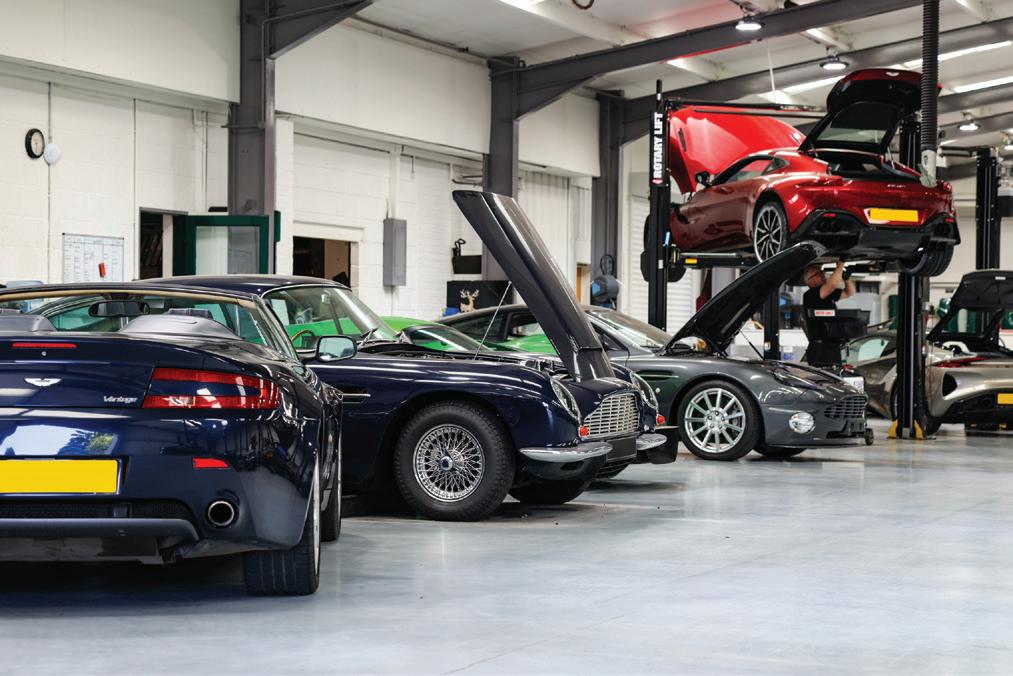

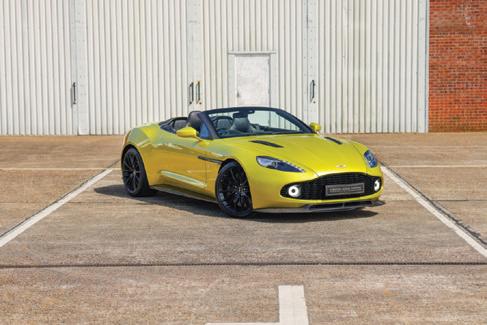
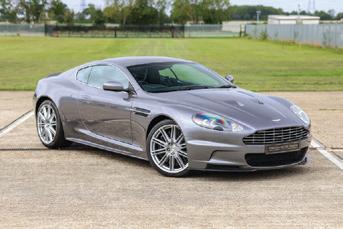
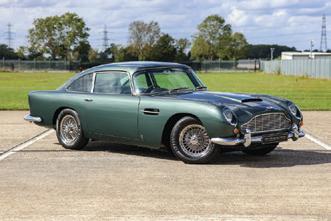
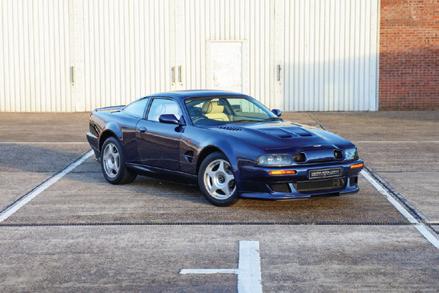
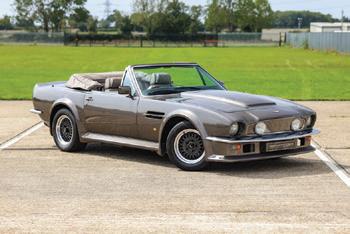
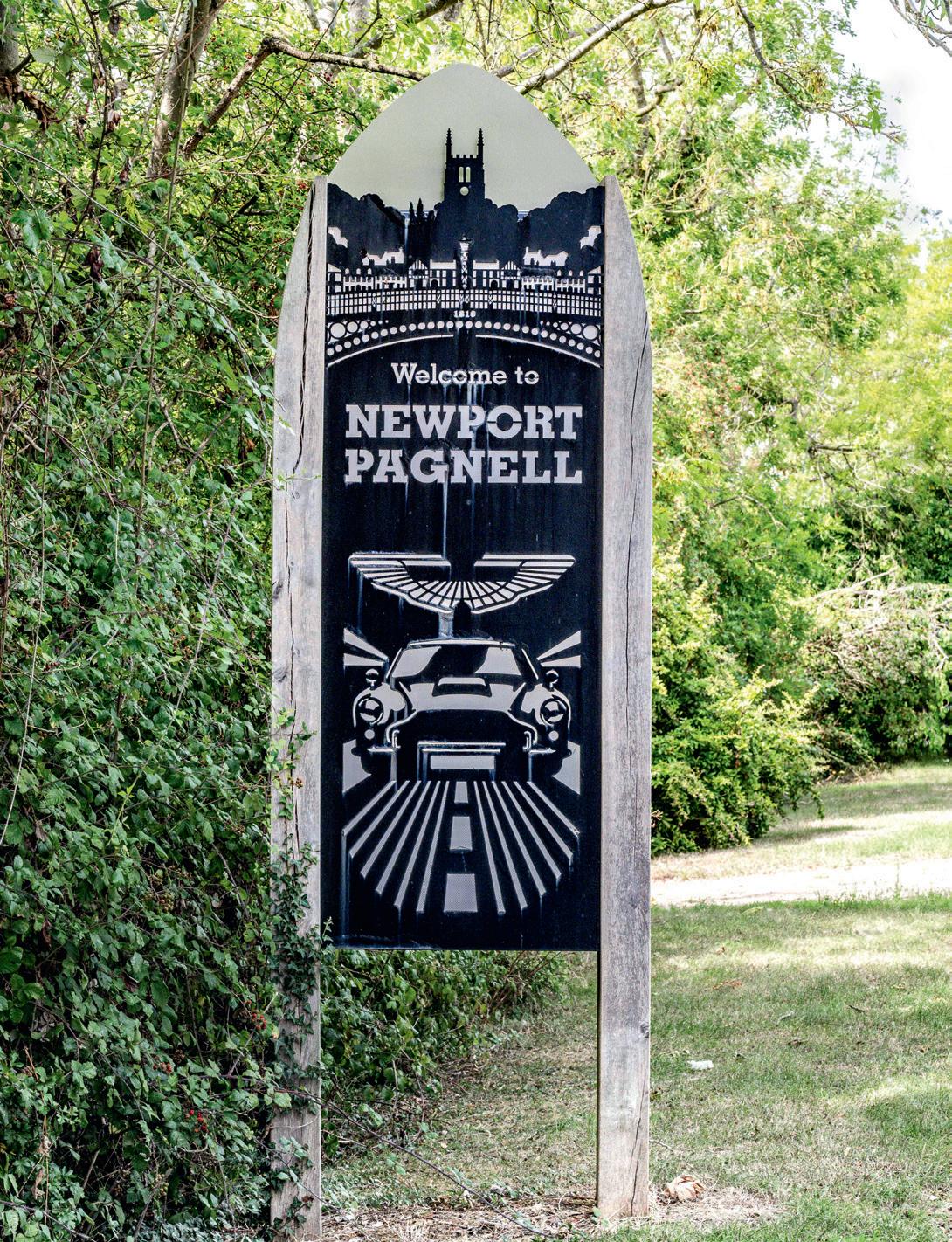
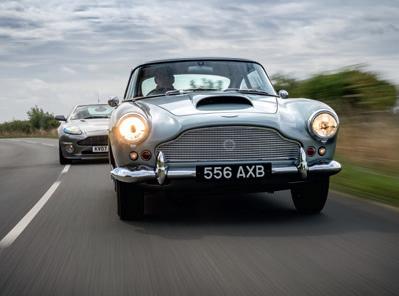
70 years ago, Aston Martin transferred production to Newport Pagnell and found its spiritual home. We celebrate with a drive in two landmark models that were the very best of their respective eras, the DB4 and the mk1 Vanquish S
TTHE CARS EXITED THE RIGHT-HANDER AND FLUNG themselves onto the long straight road beyond. One howled, the other growled, but both accelerated hard; one last blast at the end of a day spent celebrating not merely their existence, but their shared origins. And even though one had twice as many cylinders as the other and more than twice the power, and that they were separated in time by a gulf fully 47 years wide, it was what brought them together, far more than what set them apart, that now filled the space between my ears.
And that is a town in Buckinghamshire old enough to be mentioned in the Domesday Book yet quietly being subsumed by the outward sprawl of a city that hadn’t even been founded when the older car was built. It is the last place in Britain where vellum is still manufactured, but, as you’re reading this, you’ll know it as the place that, 70 years ago, became the home of Aston Martin. It is called Newport Pagnell.
The cars are an Aston Martin DB4, the car David Brown bought the sites in Newport Pagnell to build, and a Vanquish S, the very last contemporary Aston to be assembled there.
As seems so often the case when talk turns to the history of Aston Martin, nothing is very simple. The company did not go simply from building cars on the old Feltham site which had produced the DB2 and its derivatives to, overnight, building them in Newport Pagnell, any more than did production there stop the day before it started in Gaydon in 2003. Indeed, DB9 and VH Vantage production were in full flow in Warwickshire long before the last Vanquish S poked its elegant prow out onto Tickford Street for the final time, and we’ve not even mentioned the Bloxham facility where DB7s were built on Aston Martin’s behalf by Tom Walkinshaw.
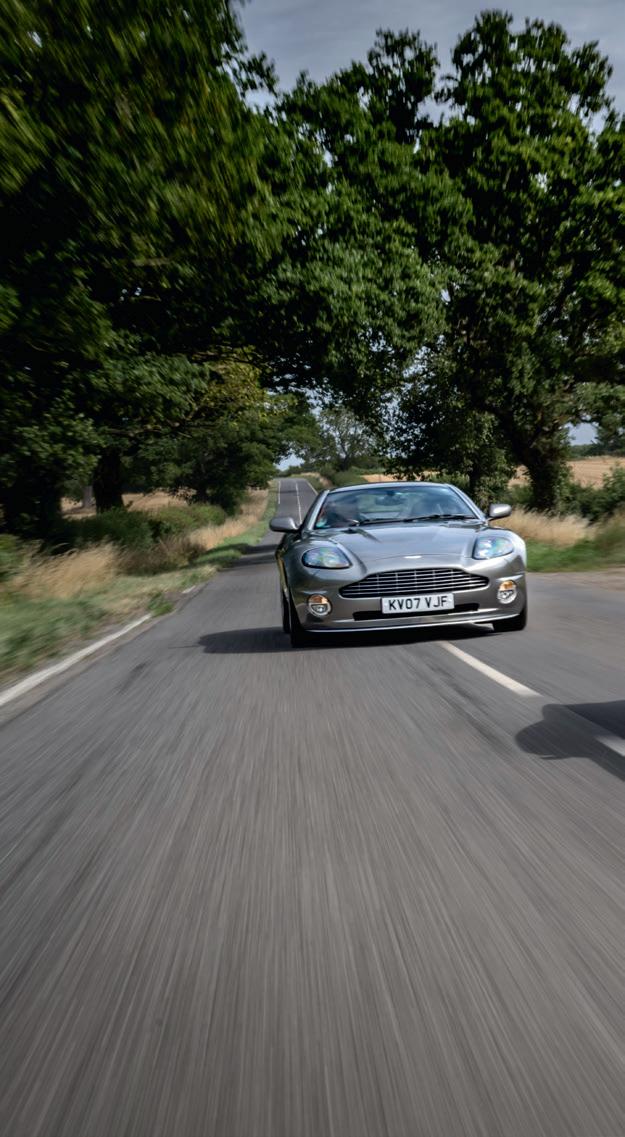
DB4 was the first entirely Newport Pagnell Aston, Mk1 Vanquish S the last contemporary car assembled there
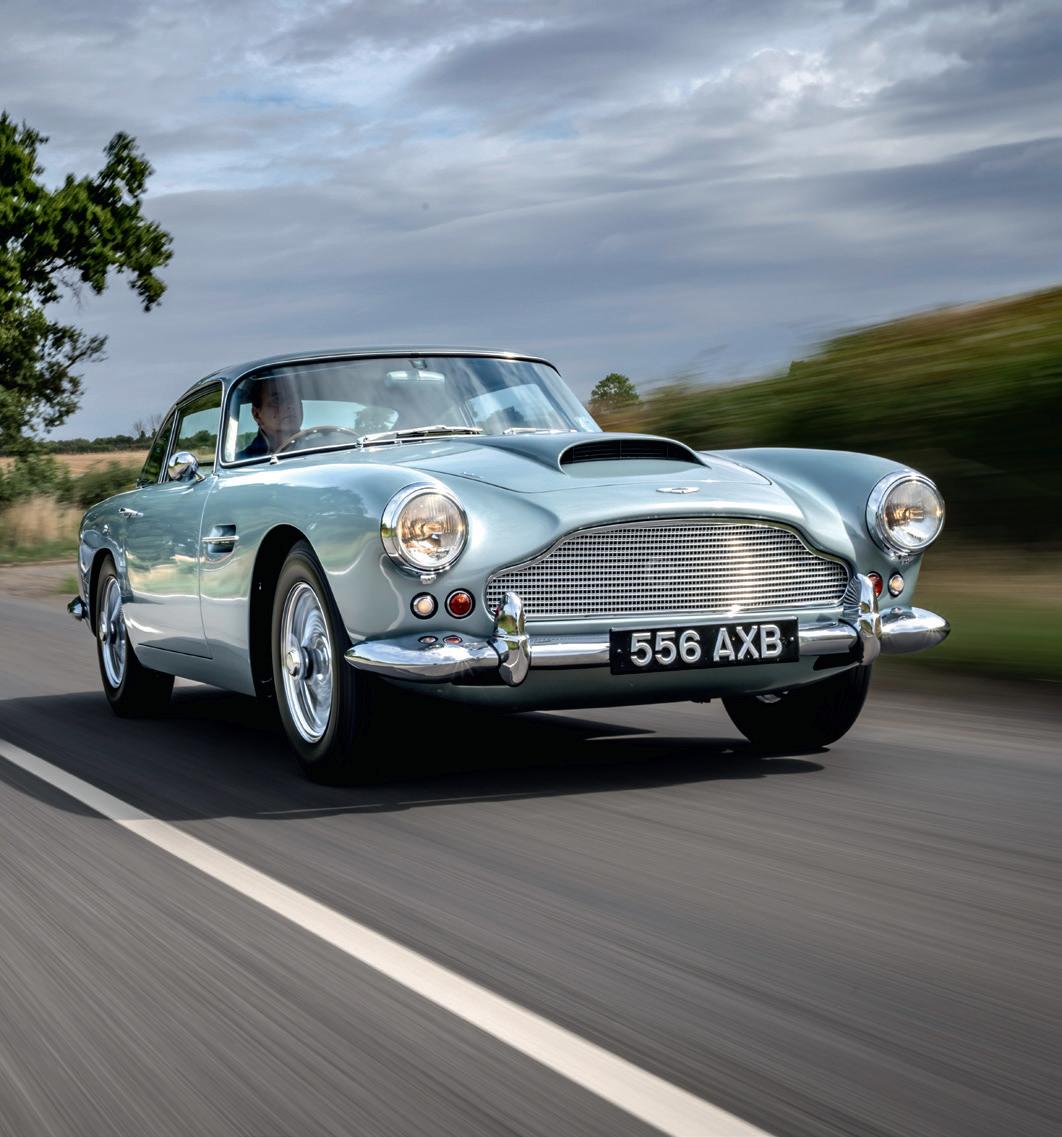
‘One last blast at the end of a day spent celebrating not merely their existence, but their shared origins’

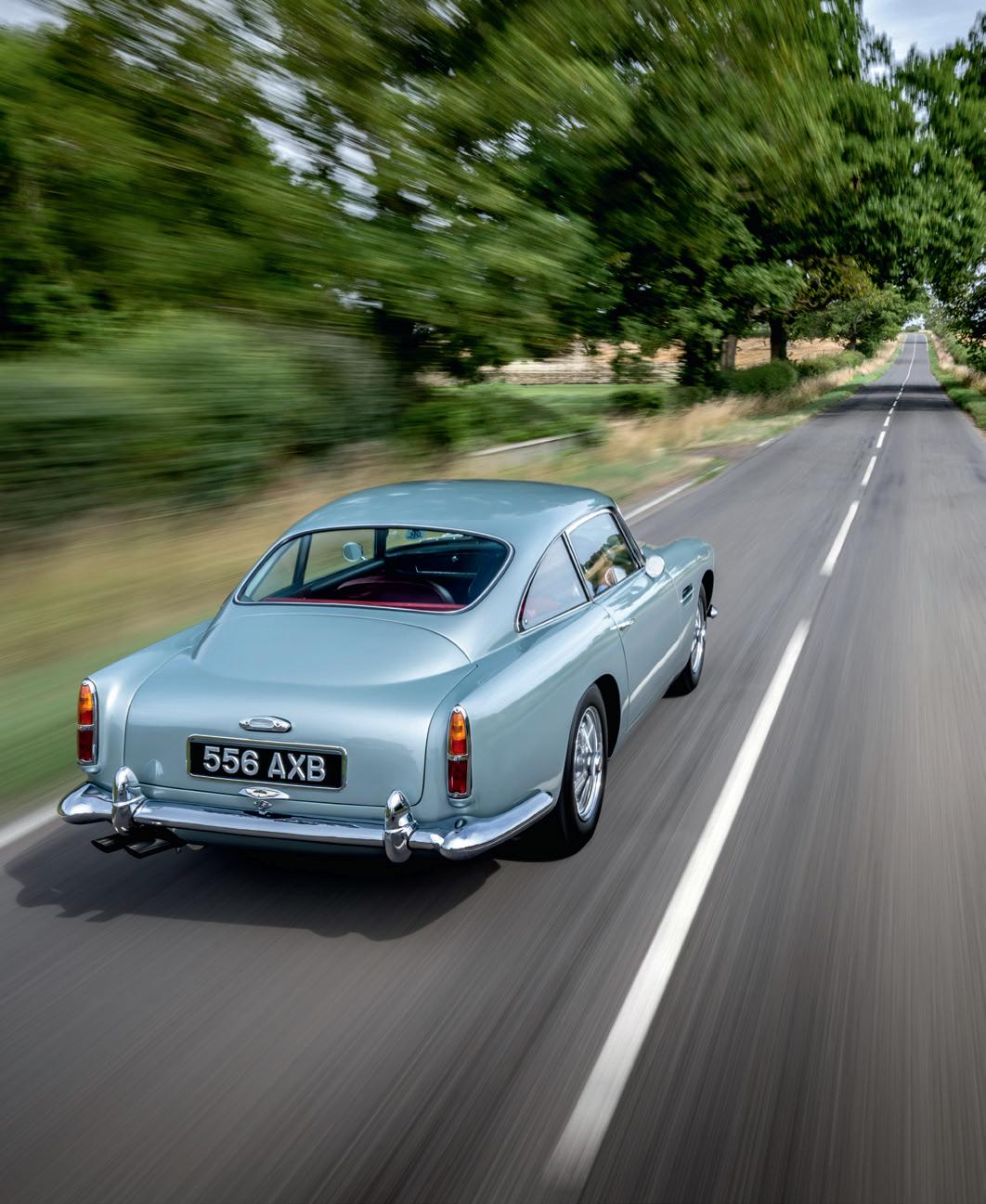
In fact the transfer of all departments from Feltham to Newport Pagnell was a process that took fully eight years to complete, but as it was the DB4 – which made its global debut in Paris in 1958 – that was the first Aston Martin to be built entirely in Newport Pagnell it seemed by far the most appropriate place to start our story.
There were those in the well-connected Feltham works –essentially in a suburb of London – who must have raised more than an eyebrow when Brown announced the business was relocating to what was then a large village in rural Warwickshire, long before the M1 motorway was built, bisecting it from the village of Middleton, which in 1967 would become renamed Milton Keynes.
But Brown was no fool. If his plan for the company was to come to fruition, it could not be in Feltham, which it had already outgrown, leading to entire chassis and some cars being assembled in David Brown factories in Yorkshire. Not only that, but the answer to the problem was already in clear sight, for Tickford Coachworks in Newport Pagnell had been in the coachbuilding business since 1820 and was already supplying bodies to the company. The fact it was almost exactly halfway between his business concerns in and around London and his tractor business in Yorkshire would not have been lost on him either.
The site was actually acquired by the David Brown Corporation in 1954, but it was the following year that the first Aston Martin – a DB2/4 MkII - was completed in Newport Pagnell. Even so, it would be nearly another decade before all departments of the company were finally relocated to Newport Pagnell.
There the most renowned Aston Martins of all were constructed, from the DB4, past the ‘Oscar India’ V8 Vantages to the mighty V600 Vantages and, finally, the Vanquish. It was Newport Pagnell that also saw some of the greatest upheavals in the company’s history as the company was handed from owner to owner like an unexploded bomb and came closest to closing for good. Well do I remember the inimitable Victor Gauntlett telling me of two occasions when he went to work in the morning expecting to shut the factory gates for the final time when he left in the evening.
But it’s also where James Bond’s relationship with Aston Martin was rendered on the silver screen (even though it had already started with a DB2/4 MkIII in print), where the Seychelles Blue DB6 Volante Series II gifted by Prince Philip and Queen Elizabeth to the then Prince of Wales was built (now King Charles III, he has owned the car for 56 years) and where Aston Martin was granted its first Royal Warrant in 1982, recently and graciously renewed by the King.
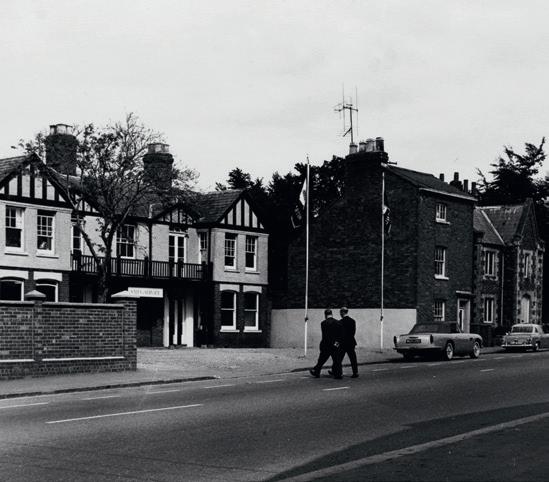
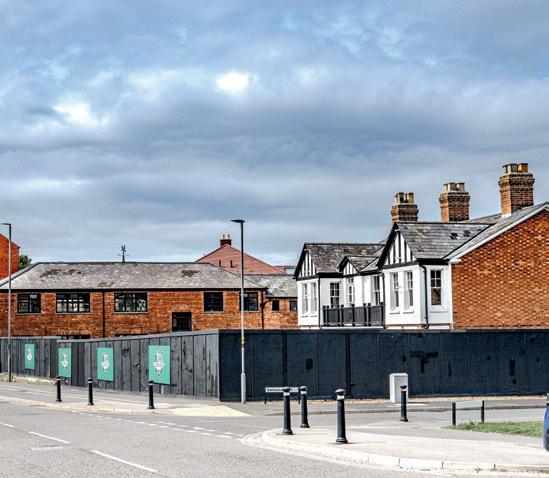
‘Sunnyside’, the famous admin building on Tickford Street, in the 1960s and in its preserved state today
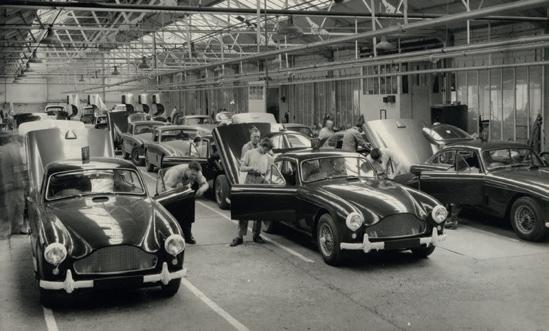
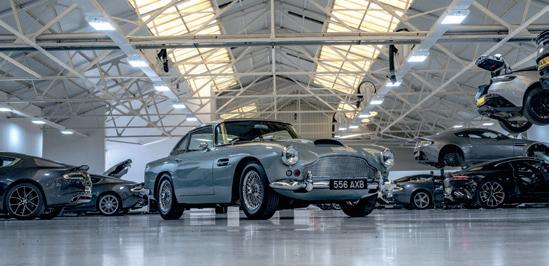
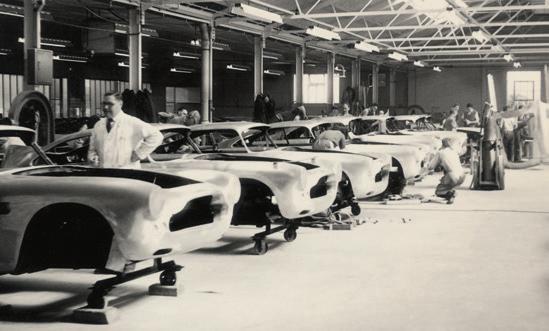
Very first Astons to be built at NP were DB2/4 MkIIs and MkIIIs (top) but DB4 was the first to be conceived, developed and made there
It may lack the firepower of its younger relation, but the early DB4 has plenty to endear it to the driver, not least steering that’s wonderfully fluid


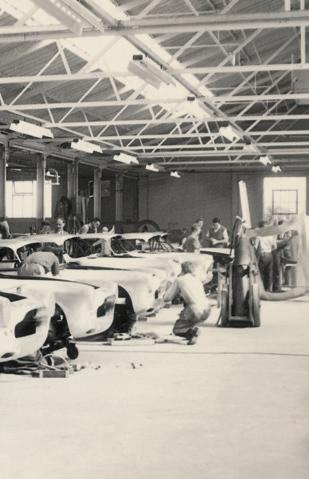
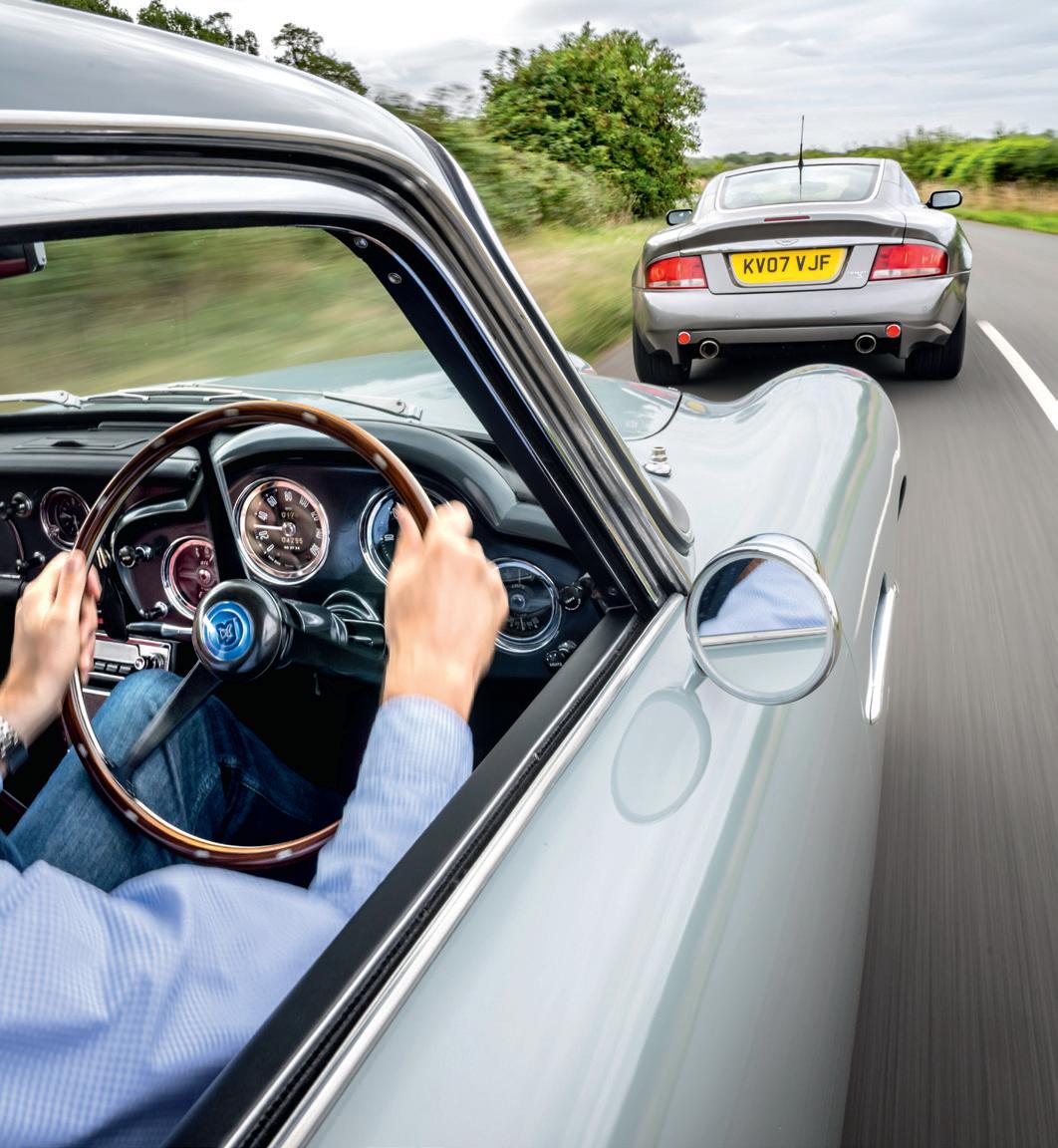
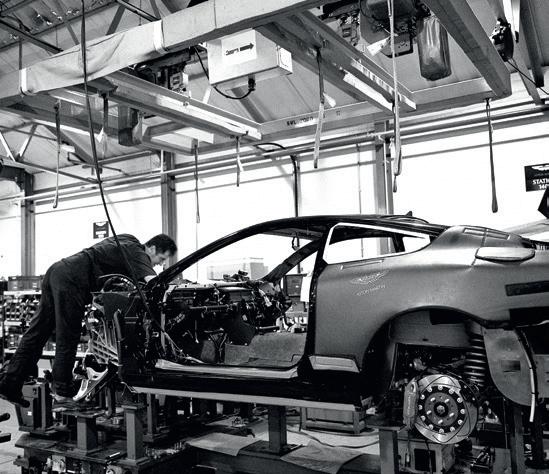
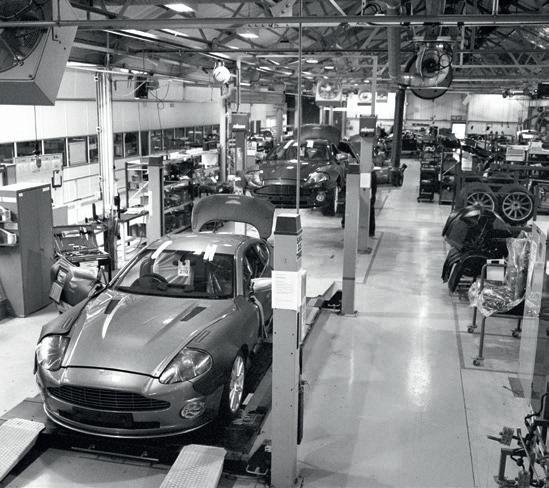
Vanquishes take shape at Newport Pagnell, the last cars built there until the recent run of Continuation models
To many Aston Martin fans, Newport Pagnell simply is Aston Martin and they don’t need to see the famous wings on the sign welcoming people to the town to know it.
Even to a grizzled old hack like me, something was lost the day production ceased in Newport Pagnell. Don’t mistake me: Aston Martin had to relocate simply to ensure its survival, and I’m a huge fan of many of its more modern machines. But as a one-time owner of a DB2/4 MkIII, there’s a bit of me that still thinks a proper Aston Martin is put together by men wearing white coats with pencils behind their ears using skills handed down the generations from their fathers.
BUT ENOUGH OF SUCH THINGS. The DB4 on these pages is a Series II, built in early 1960 and, to me, probably the one I’d most like to own of all the standard series DB4s, because it addressed most of the issues of the original but kept the gorgeous ‘cathedral’ rear lights, abandoned from the third series in favour of a tower of three individual lights. For those in search of weapons-grade AM trivia, the cathedral lights were first used on the Humber Hawk. More importantly, perhaps, its engine carried far more oil (with an optional oil cooler) and was therefore less likely to disgrace itself when pushed hard.
I was given no instructions so drove it as I imagined its makers would have envisaged, and when the owner later got in touch to find out how I got on, he was delighted to hear it had been properly put through its paces.
But I sourced it direct from Aston Martin Works, which remains on the original site in Newport Pagnell to this day. As seems right, it is the world’s largest Aston dealer by a fair margin, capable of anything from selling you a brand new Aston Martin to completing all aspects of a ground-up restoration of a far older model. To an unashamed Aston fan, to be shown around is to find the promised land, a place you leave with an urgent need to find a plaster for the underside of your chin. You might find something so old it dates back over 100 years to the Bamford & Martin days, or something so rare you’ve never seen one before.
Over 3000 Aston Martins are serviced, repaired and restored here in a facility that received a multi-million-pound overall in 2012. Works collects cars from all over Europe and will even send staff further afield to attend to cars that are impractical to have returned to the place of their birth. And of course an Aston Martin Works service stamp in the logbook does the car’s provenance no harm at all… It is a place of sewing machines, perfectly matched veneers and English Wheels, somewhere the old skills endure. It is enchanting.
Clearly this DB4 has been looked after superbly. Not only does it look just right, it performs exactly as you’d hope too.
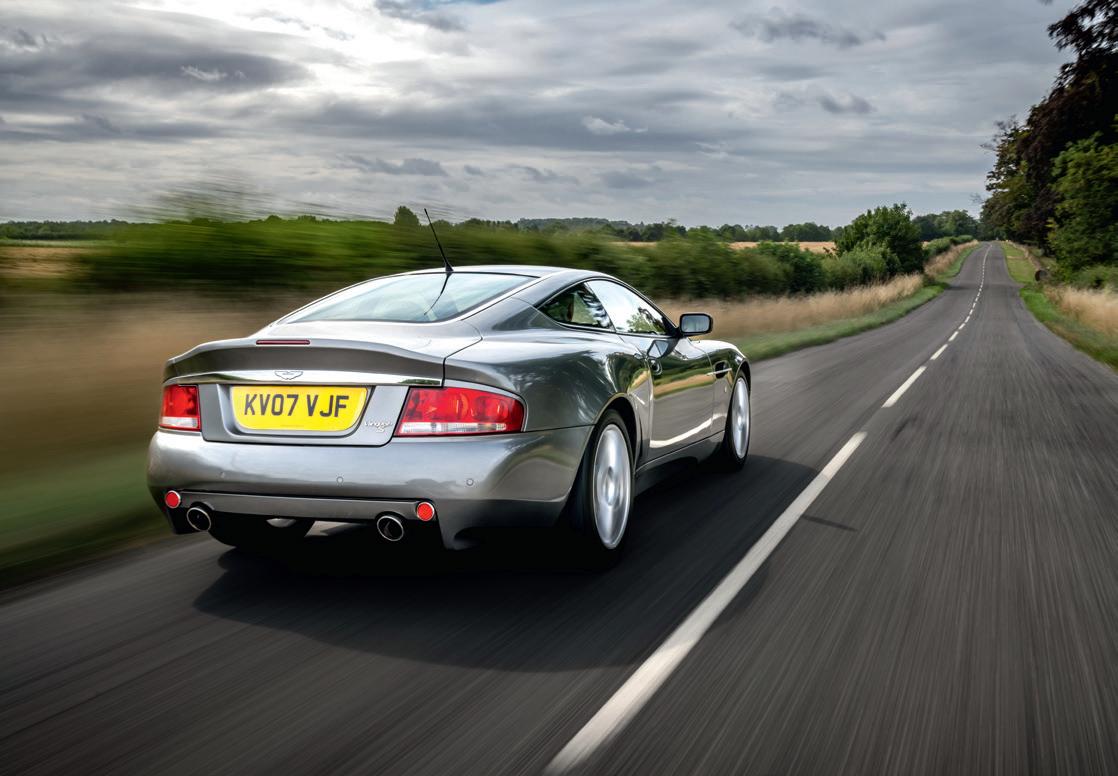
‘The Vanquish’s performance would have been unimaginable in the early days of Newport Pagnell’
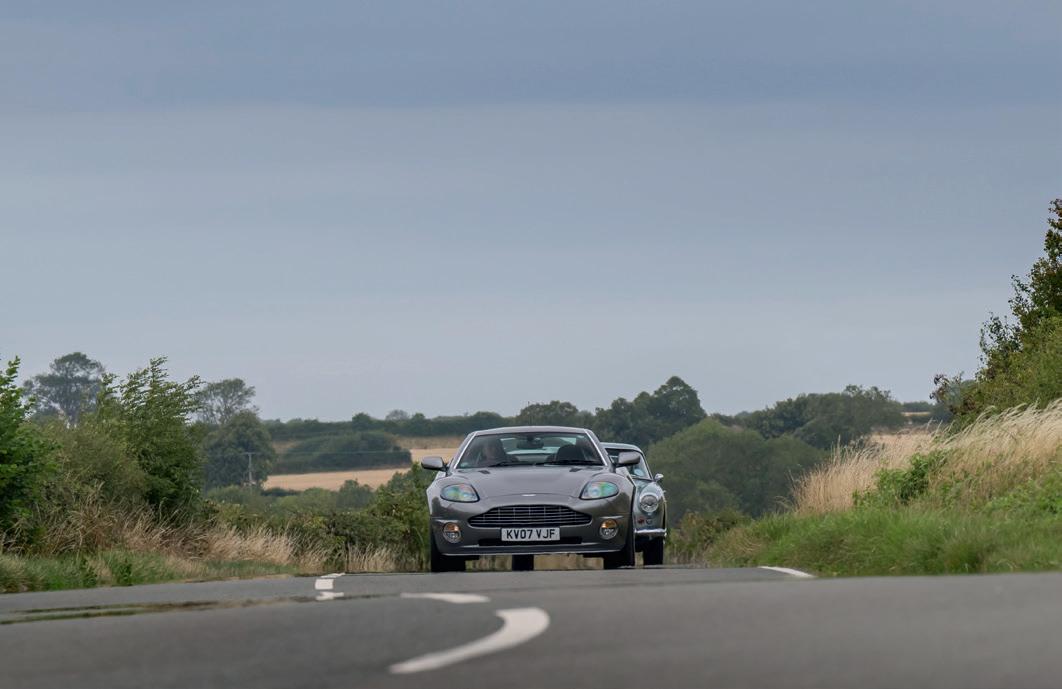
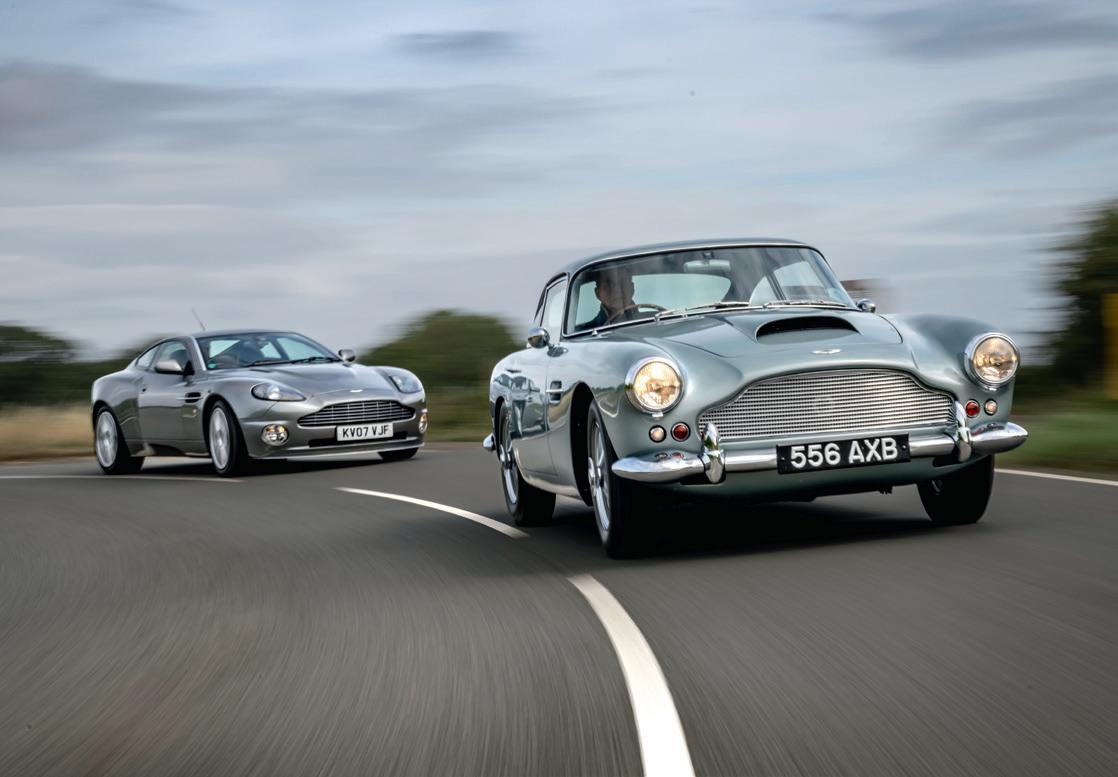

Tadek Marek’s superlative straight-six – along with his subsequent V8, to this day they are the only post-war Aston Martin engines to have been designed from scratch in-house – fires instantly, its voice deep, rich and smooth. The gearbox is slow, but with a wonderfully heavy and precise action: if it could speak it’d be saying ‘however fast we may go today, we are never going to rush’. Perfect Aston Martin.
But I think I’m most struck, because I’m most surprised, by the steering, which is simply gorgeous, so fluid and free, so utterly lacking in stiction. With many old cars like this, that’s one of the first negatives when not properly maintained. Next you notice the ride, which is superb, so much better than that of my old MkIII, and marvel at the fact the car still carries a live rear axle, De Dion rear suspension not being introduced until the DBS arrived in 1967. This a gorgeous thing in which to travel if all you’re doing is merely pottering about, but with a Vanquish S up ahead containing a driver in no mood for making allowances for the old soldier behind, that was never likely to be an option. Besides, hard and fast is the only way to do justice to a DB4 this good.
You need to focus to rev-match each downshift as the freespinning nature of the engine contrasts somewhat with the methodical approach of the transmission, but it’s fabulous when you get it right; plant the foot and feel the twin-cam straight-six respond. The engine produces peak power at 5500rpm and is surely safe to 6000rpm, but even by keeping a respectful 1000rpm short of the latter, I think most people would be surprised, very surprised, by just how fast it is. Surf around the internet and you’ll find 0-60mph times quoted either side of the nine-second mark, which is brisk but not exactly electrifying. But that’s to ignore both the traction limitations of those skinny rear tyres and the fact that the quoted times include the best part of a second simply getting from first to second gear, so it’s simply not fair to compare it to something with fat tyres, a gearbox between the rear wheels and paddle shifts. Like the Vanquish.
What matters is that the early DB4’s performance never disappoints, the engine gaining in eagerness almost by the rev, with the best urge found beyond 4000rpm when a hard note of purpose enters the sweet straight-six song, urging you ever onwards.
It handles, too. Really. You just need to know how it wants to be driven. It’s not like the MkIII, which was never happier than when treated to the ‘chuck it in and sort it out’ approach. This is a softer car, with Grand Touring ability as much part of the brief as sporting response, so you need to find another way. And the secret is actually to carry speed. It may look like the kind of car that requires a ‘slow-in, fast-out’ approach, but it responds far better if you just trust the car and carry the speed through the corner. That way keeps body movements to a minimum and maintains a delightful, elegant composure from entry to exit.
Drive like this and despite the major masses of the car being concentrated at one end, there’s never a problem getting the
The full extent of the factory site in its heyday (below), and Vanquish aluminium bodies await handfinishing c2005
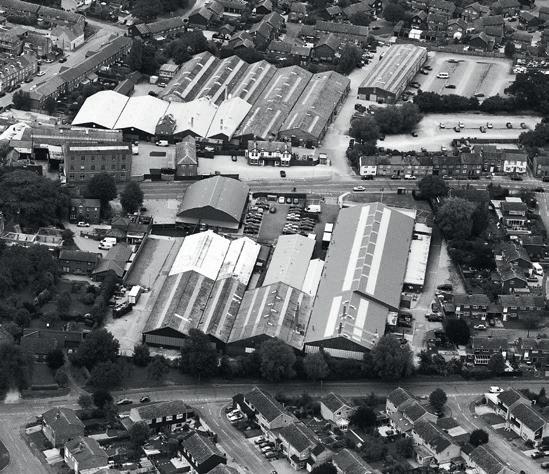
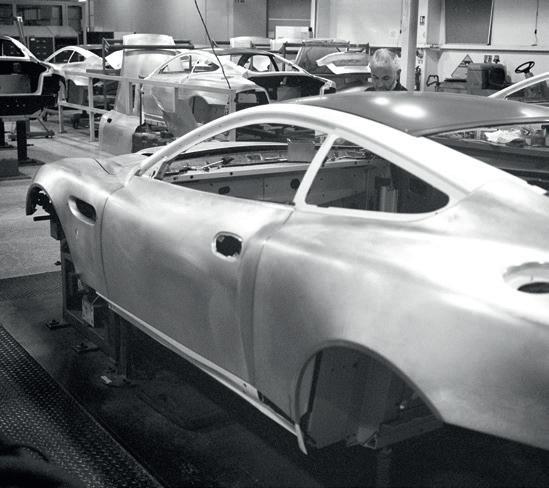
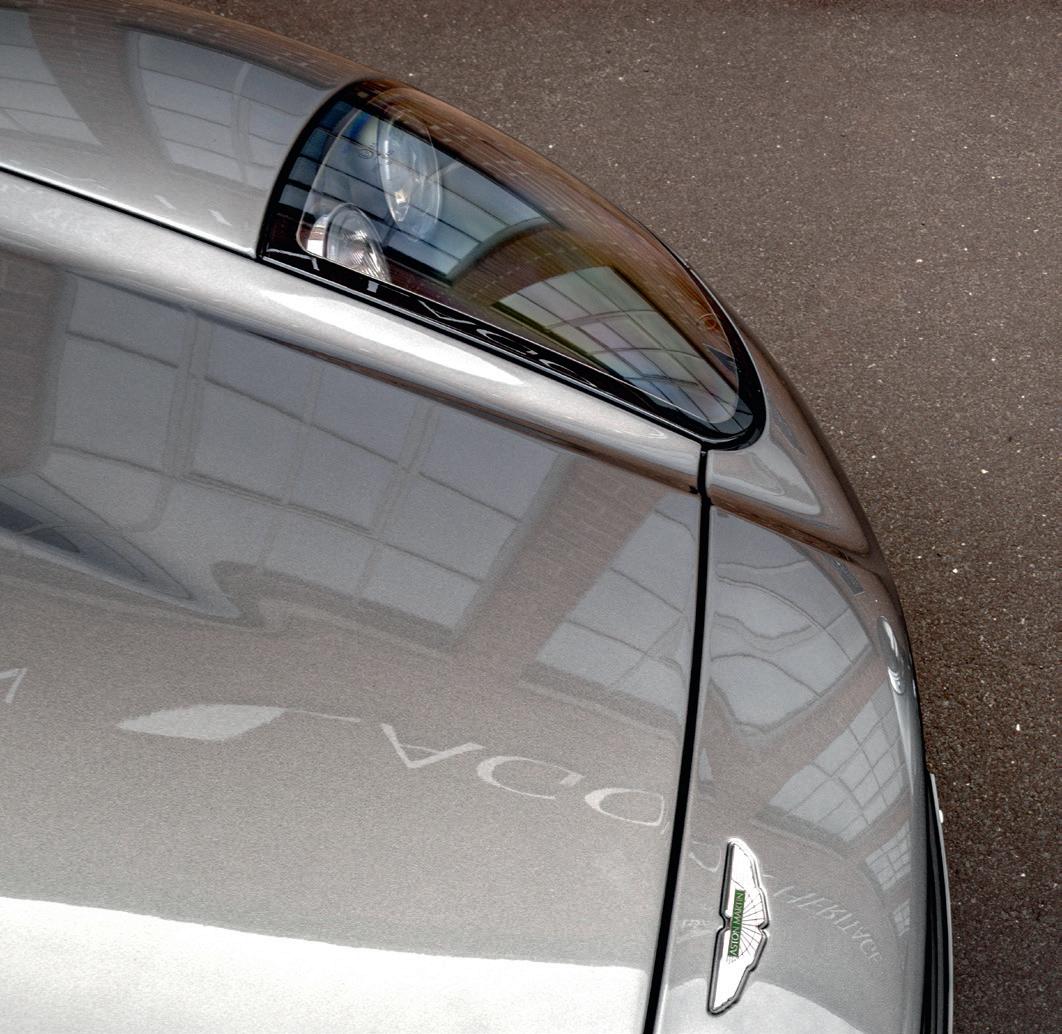
‘As different as can be on paper, at their hearts their shared purpose is blindingly clear to see’
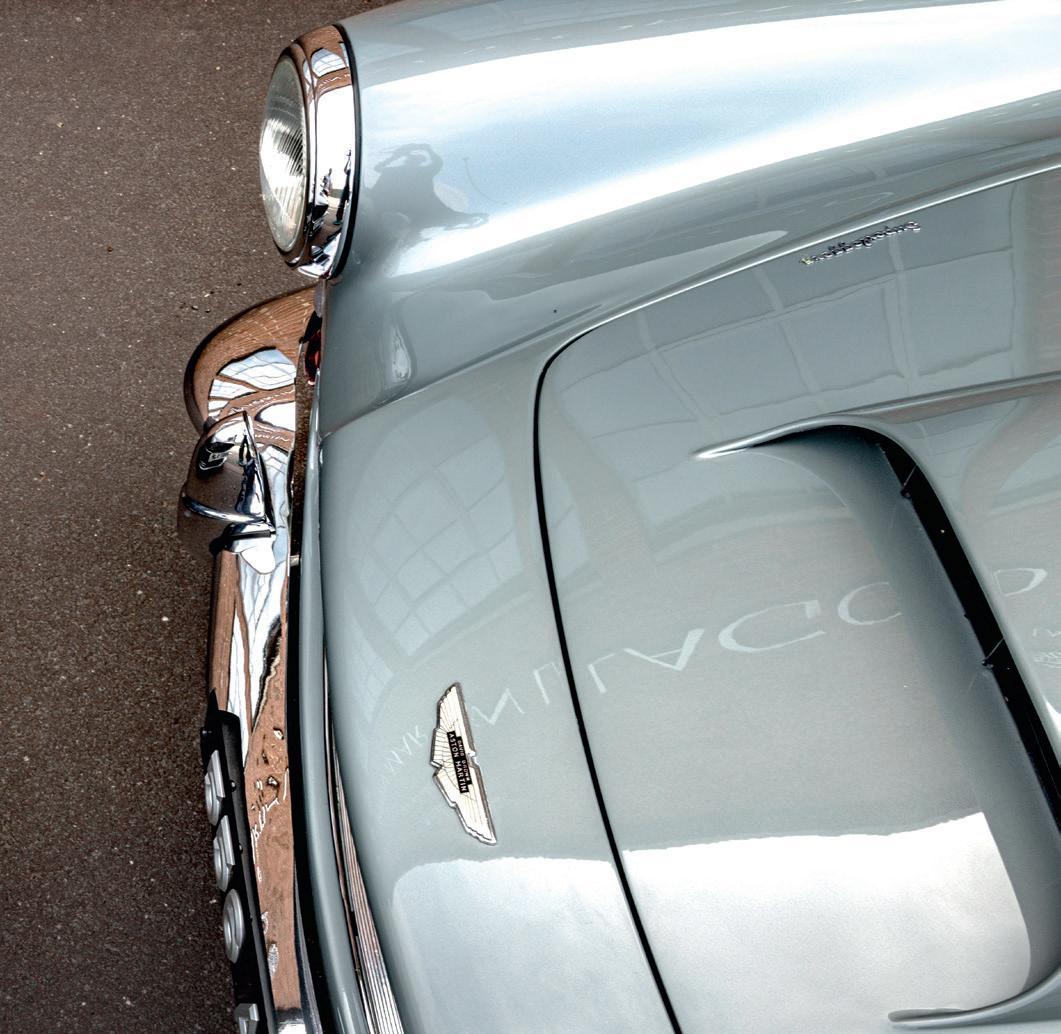
nose into the apex and, once done, the rest can be counted upon to follow through. It’s also far kinder on the brakes.
My fear when asked if I wanted to write this story was that I’d reach the end of the day having driven two cars that were both lovely in their own ways but with just some wings and the coincidence of their shared place of construction in common. So I’d then have to try to construct some convoluted narrative that somehow drew more than a chronological thread between them while at the same time remaining honest both to my subjects and for my reader.
But it turns out I had no need to worry. Because while they are as different as can be on paper, as previously mentioned
the Vanquish S having double the cylinder count, more than double the power, a paddle-shift transmission and all-round performance that would have been unimaginable in the early days of Newport Pagnell, at their hearts their lineage, their shared purpose is blindingly clear to see.
On the most fundamental level, both the Vanquish S and DB4 are trying to do the same job: both are Grand Tourers made as sporting as possible without spoiling their essential remit to be able to carry their occupants long distances at speed and in style and comfort. In their respective days neither would have been the fastest car in their category, either in a straight line or around a track. It’s not about how fast you go,
Almost 50 years apart, but with a shared vision, both Vanquish and DB4 are quintessentially Aston Martin
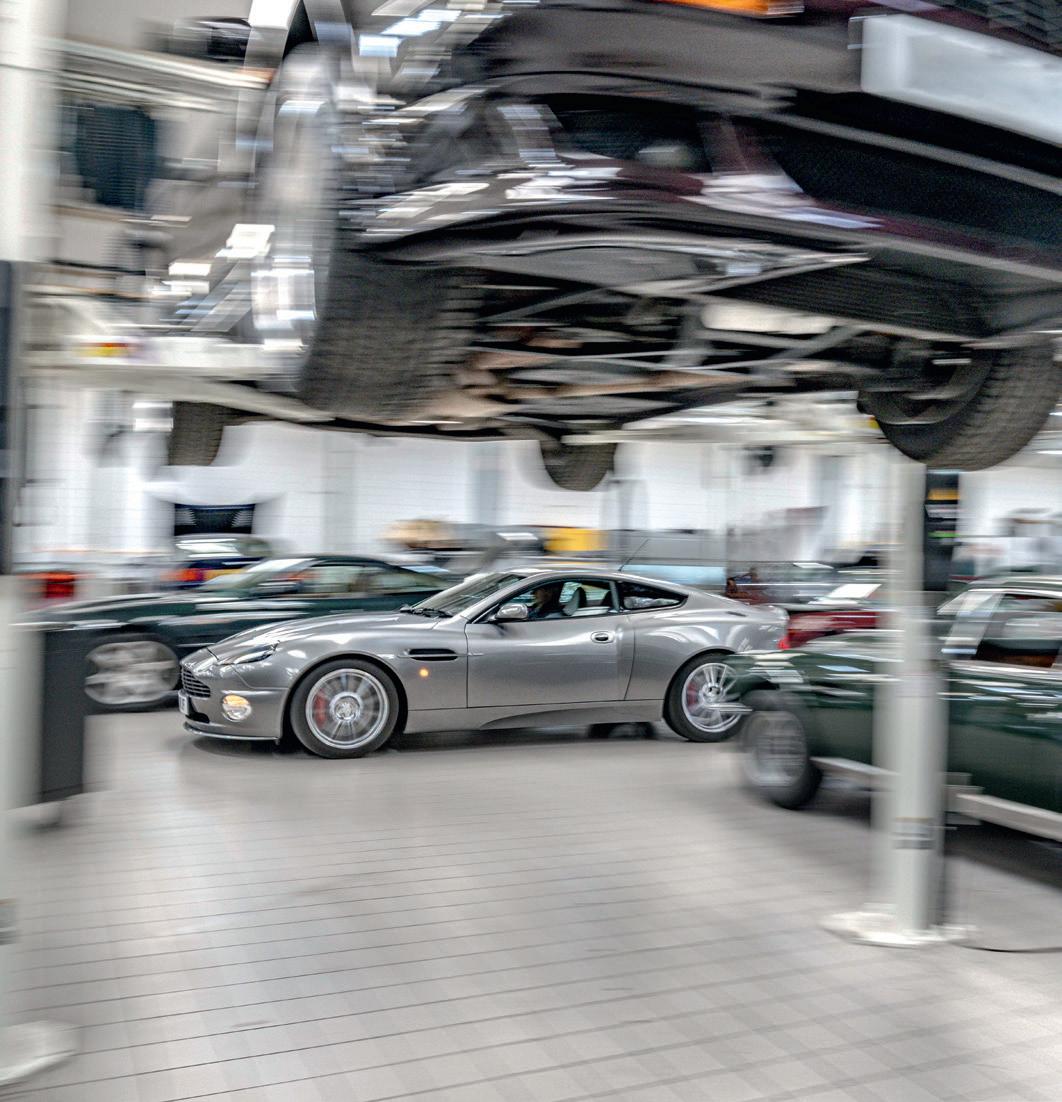
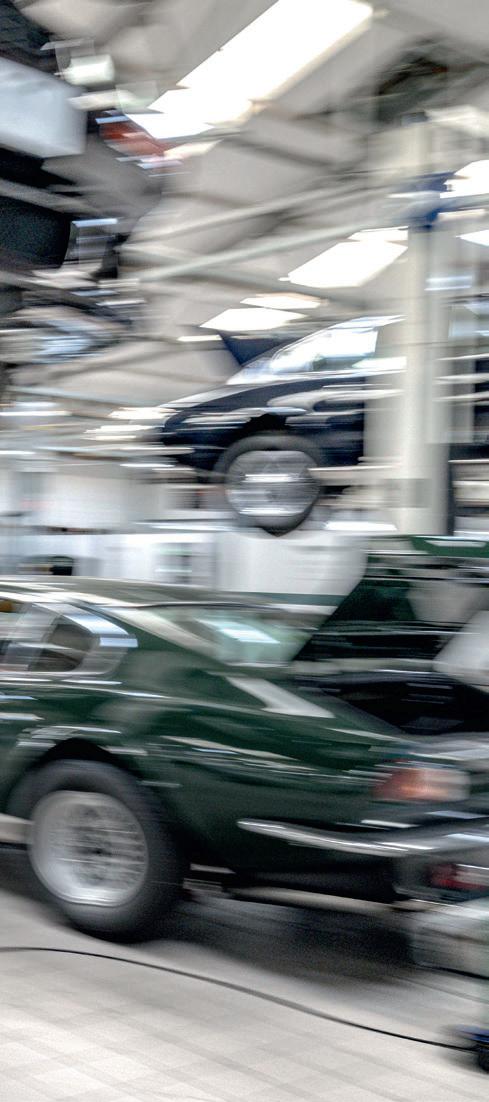
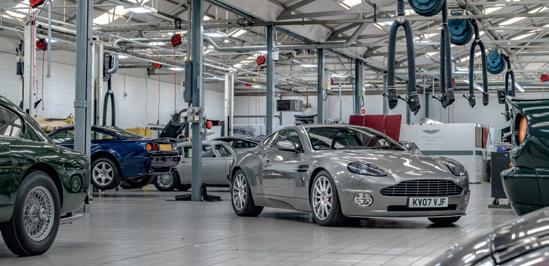
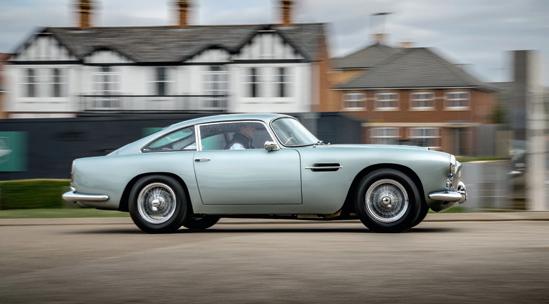
‘To an unashamed Aston fan, to be shown around Works is to find the promised land’
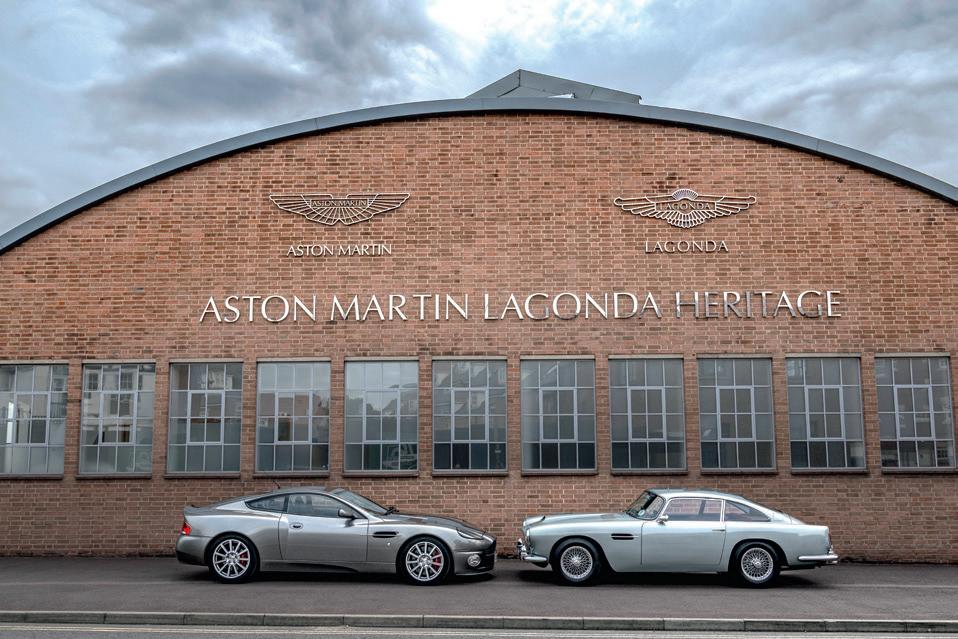
ENGINE V12, 5935cc POWER 520bhp @ 7000rpm TORQUE 425lb ft @ 4500rpm
but how you go fast, and in that respect both cars are quintessentially Aston Martin. Know that, and the fact they share so much in common is perhaps not so surprising after all. So how does that manifest in the newer car?
The 520bhp Vanquish S engine sounds wonderful, is fine if you just want to amble from place to place, but gets better the harder you push it until, as you near peak power, it’s got this delicious hard-edged howl as the motor comes fully on the cam. Sound familiar? The gearbox requires a certain technique if it is not to seem awkward – now where have I read that before? – and it’s all in the timing, but the robotised shift is nothing like the drawback it was held to be at the time of its introduction. In Sport mode the downshifts are quick and crisp, while when changing up you just need to remember there’s a manual gearbox being operated under all those electronics and lift between shifts accordingly.
Like a certain other older Aston I could mention, its ride quality is far better than you might expect and, once again, the right way to get the best out of it on a decent road is not through the hurling of the wheel or stamping on the pedals, but through gentle movements of hands and foot, maintaining pace and believing it will go where you want. A car you steer from the wrists, not the shoulders. The Vanquish will then flow beautifully across the countryside, offering an experience that
ENGINE In-line 6-cyl, 3670cc POWER 240bhp @ 5500rpm TORQUE 240lb ft @ 4250rpm TRANSMISSION Four-speed manual SUSPENSION Front: double wishbones, coil springs, telescopic dampers. Rear: live axle, trailing arms, Watt’s linkage, lever-arm dampers STEERING Rack-and-pinion, unassisted WEIGHT 1570kg POWER TO WEIGHT 156bhp/ton 0-60MPH 8.5sec TOP SPEED 140mph PRICE NEW c£3500 (£72,500 in today’s money)
TRANSMISSION Six-speed automated manual SUSPENSION Front and rear: double wishbones, coil springs, telescopic dampers, anti-roll bar STEERING Rack-and-pinion, power-assisted WEIGHT 1875kg POWER TO WEIGHT 282bhp/ton 0-60MPH 4.9sec TOP SPEED c200mph PRICE NEW £174,000 (£295,000 in today’s money) V
might not provide too many belly-laughs, but a warmer, more enduring feeling of well-being and a sense of privilege and good fortune that placed you behind its wheel that day. And in that regard, too, it is not so very different to its beautiful forebear at all.
So what can we learn from these two bookends of the Newport Pagnell era? Only that, despite all the tribulations that beset the company, the changes of ownership and massive technological evolution, it never forgot what an Aston Martin should be. Indeed you could argue that the DB4 with its more luxurious, Grand Touring remit was the very first modern Aston Martin, establishing a template that saw it through all its trials, the entire Newport Pagnell era and, to a very great extent, on to the present day. And had David Brown not recognised the need to change premises or had the prescience to choose a little-known village in, at the time, the middle of nowhere, the future of Aston Martin would have looked very different. If, indeed, there’d been a future at all.
Huge thanks to the staff of Aston Martin Works and Paul Spires in particular for all his help with this feature. And to the owner of the DB4 for trusting us with his gorgeous car. The Vanquish S was for sale at Works at time of writing. Visit www.astonmartinworks.com for further details.
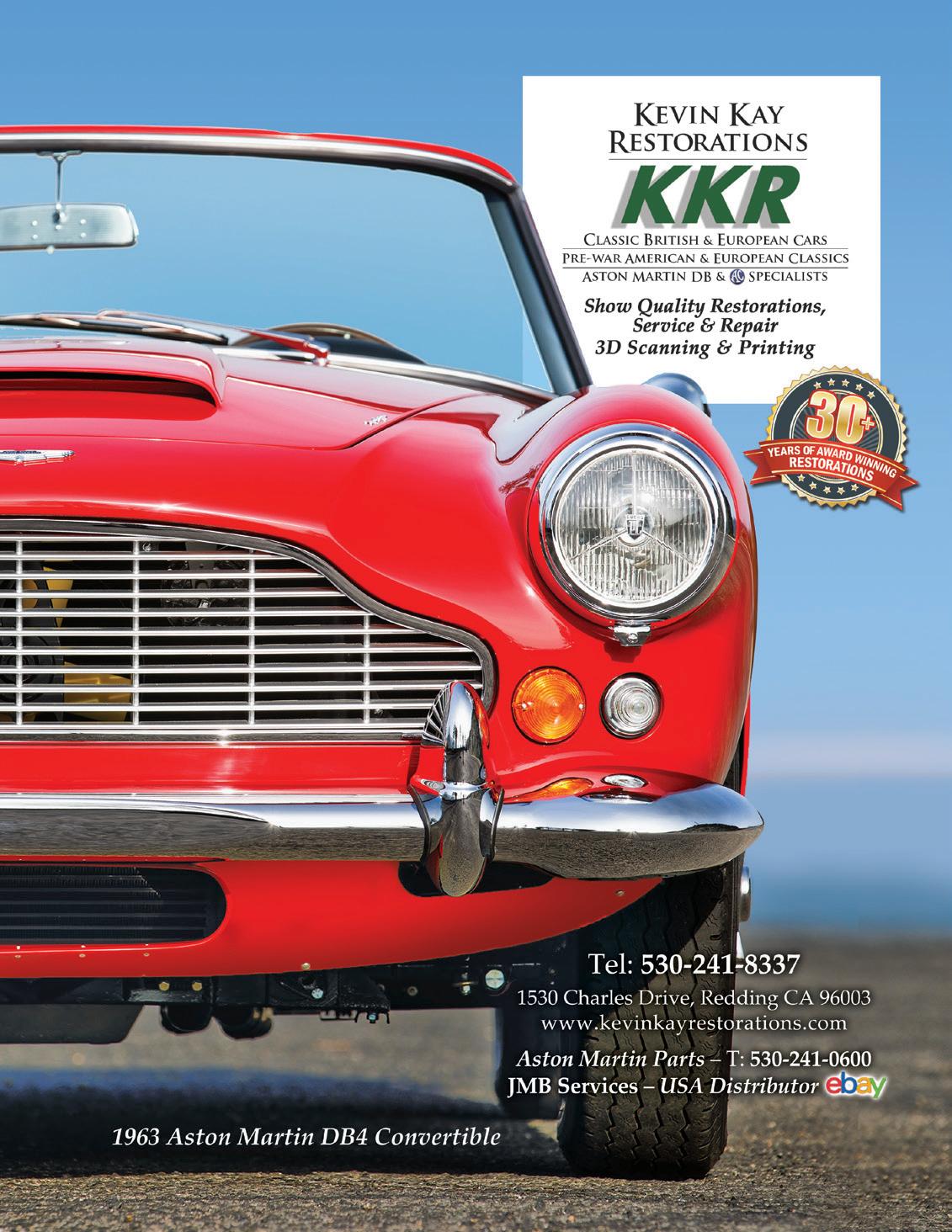

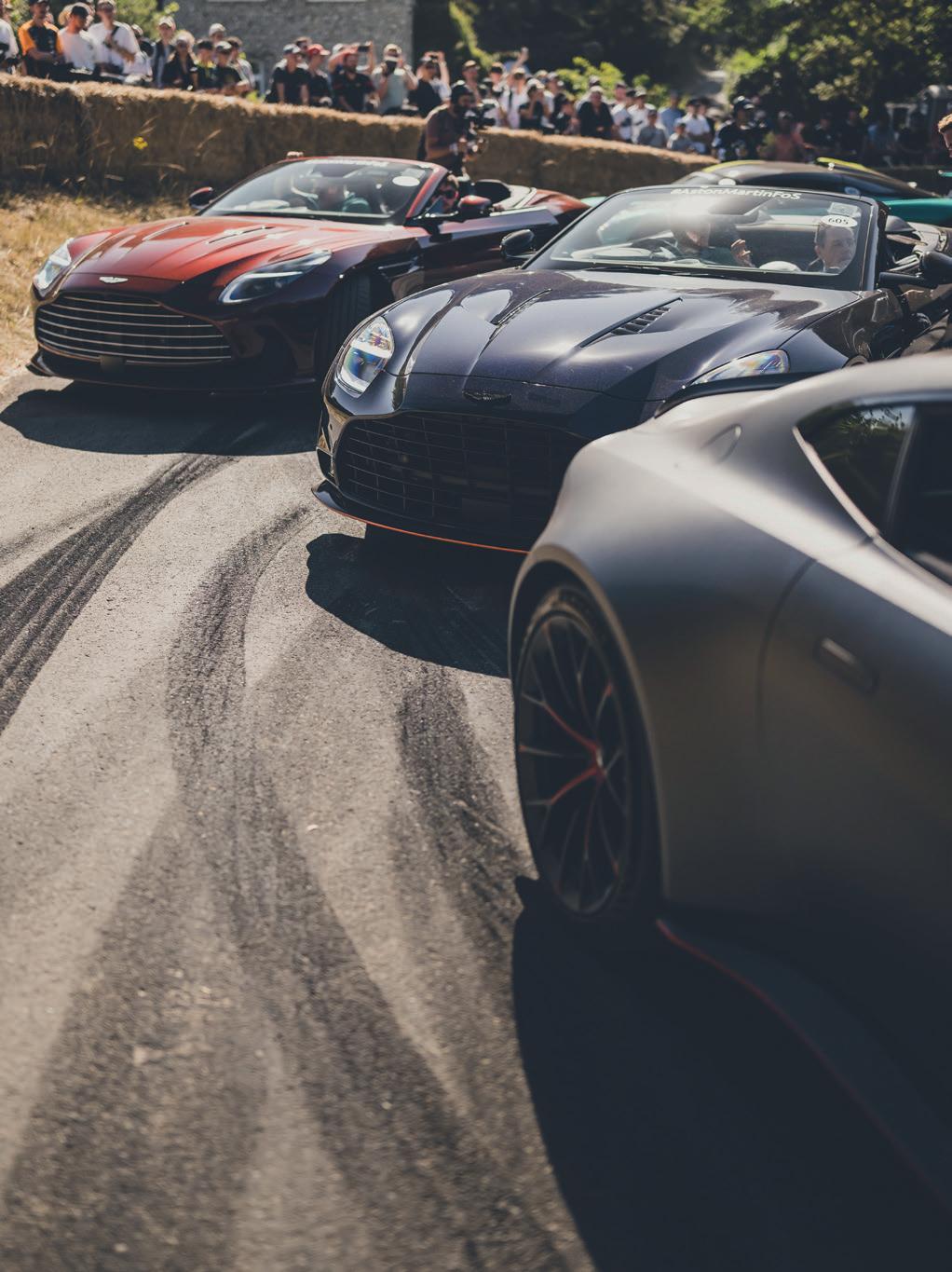
For photographer Amy Shore, Goodwood was the place that ignited her passion for cars – and still inspires many of her most evocative images
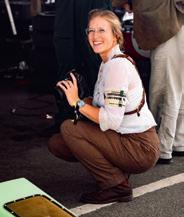
REWIND TO 2011 AND THE 20-YEAR-OLD ME THOUGHT most cars were boring. Boxes on wheels that got us from A to B. Classic cars? For old blokes who drove them at the weekends and it was always slowly and when you were in a rush to get somewhere. And as for racing cars, I couldn’t understand why anyone would want to watch them drive around in big circles with the risk of injury or worse.
But then my dad took me to the Goodwood Revival. Suddenly I understood. The roar of engines as the cars raced by within inches of each other; the mechanics’ legs sticking out from underneath stricken machines, attempting to fix failed parts in the paddock under torchlight; the entire atmosphere of Spitfires soaring over your head whilst 100,000 people entered into the spirit of the event in period clothing. Without a doubt, Goodwood made me a car person.
I don’t think I’m the only one who has felt this magical shift. For many young people it’s the Revival’s sister event, the Festival of Speed, that has been the ignition to their automotive passion, seeing cars from all eras shoot up the famous hill, from bonkers Edwardian machines to the latest and greatest race and rally cars from all round the world. And always plenty of Astons! It’s hard not to love Goodwood in one way or another.
I’ve been photographing car events for some 12 years now. Very few come close to providing the wealth of photo opportunities that Goodwood does. The Goodwood Revival is still my own flagship event of the year, the most beautiful car event in the world to photograph, but also one of the most frustrating – there are so many images that I miss simply because there are so many moments to capture.
Each year I get back to my car after walking 20 miles over the three days and my husband will ask me, ‘Do you think you got some good shots?’ and without fail I question if I have because I am still worrying about the photographs I know I missed, forgetting about the ones that I didn’t. It’s not until I’ve had a long soak in a bath and a good sleep that I start to go through all of the shots from the weekend and I’m reminded that actually, yes, I did capture plenty of images that I love.
With each Festival of Speed and Revival, there are always some years that are better to photograph than others. The weather plays a big part, of course. There is a famous quote about Goodwood from racing legend Roy Salvadori: ‘Give me Goodwood on a summer’s day and you can forget the rest of the world’, and from a spectator’s point of view it sums it up beautifully. From a photographer’s point of view, I’d say: ‘Give me Goodwood on a warm-ish September evening, with a low sun, a driver-change race, headlights on, anticipation in the pitlane, crowds leaning over the fences to watch, the air buzzing with excitement, and a camera in my hands…’
Okay, perhaps it doesn’t quite have the same ring to it as Roy’s, but you get the gist…
‘Without a doubt, Goodwood made me a car person’

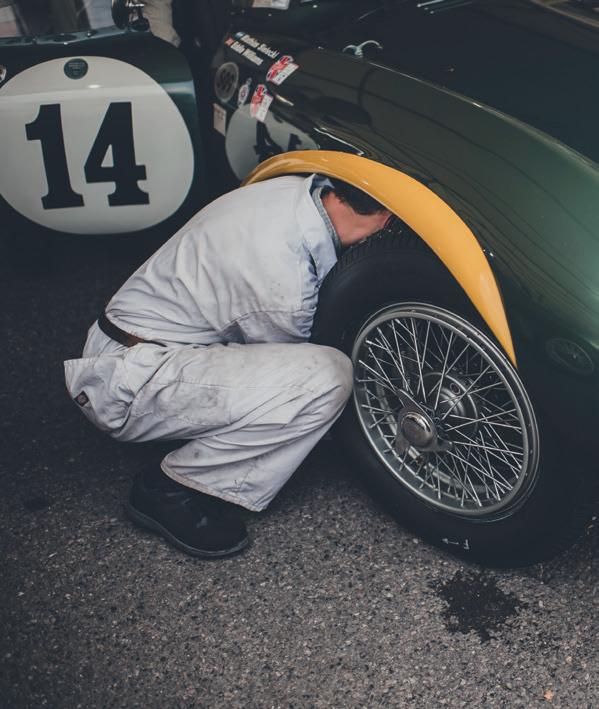
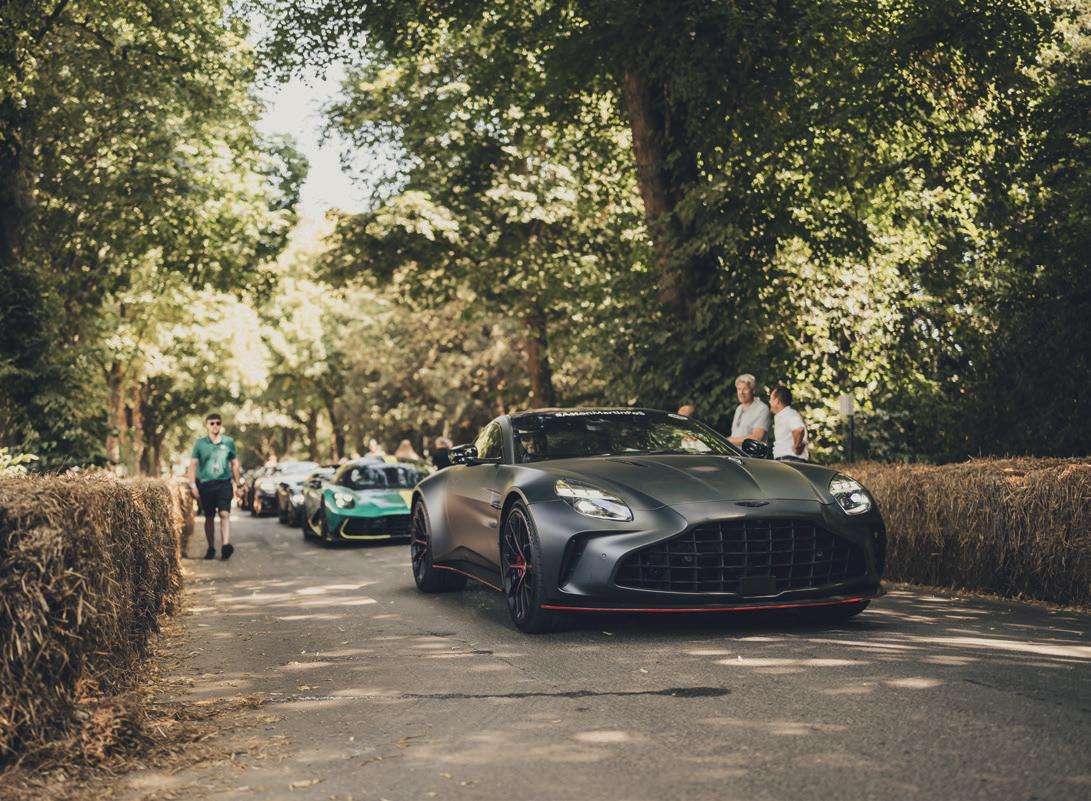
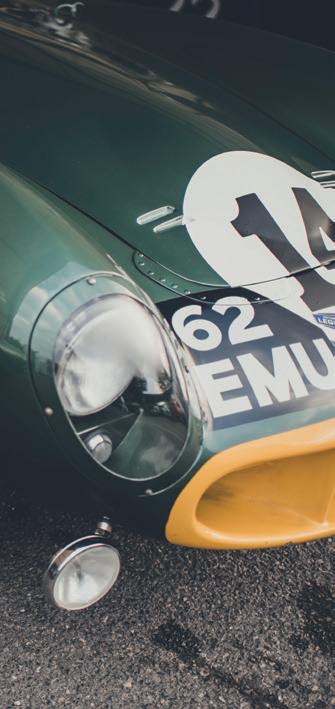
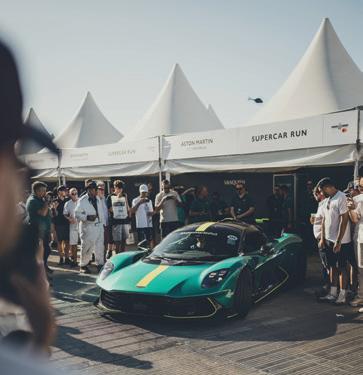

Below: A photography saviour: black and white. Especially when it’s raining and you have a rather jarring palette of umbrellas, raincoats, backpacks and high-vis!
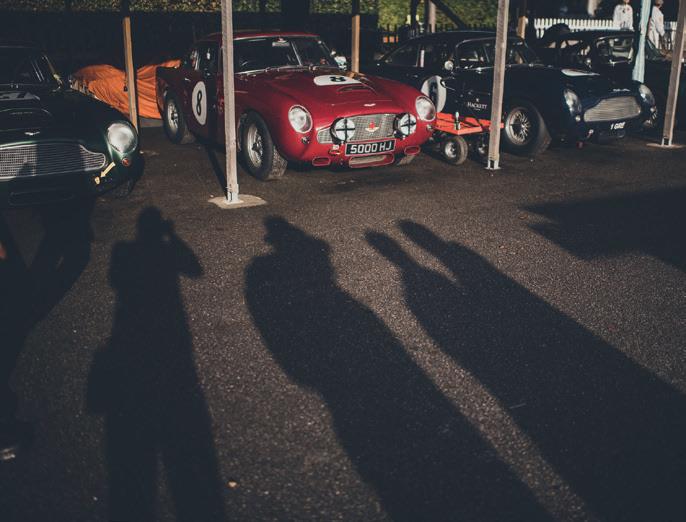
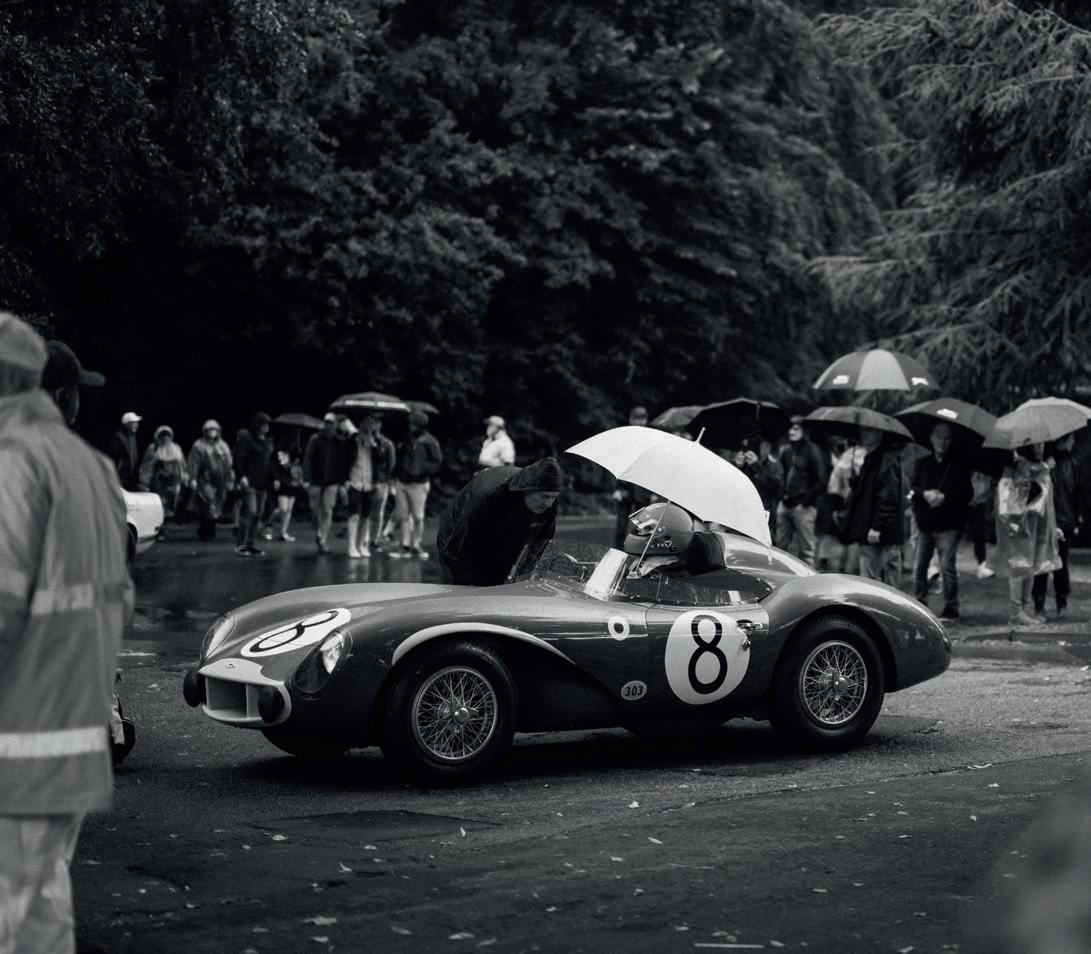
Left: What interested me in this early morning shot in the Revival paddock were the long shadows of spectators surrounding the cars, my own shadow included
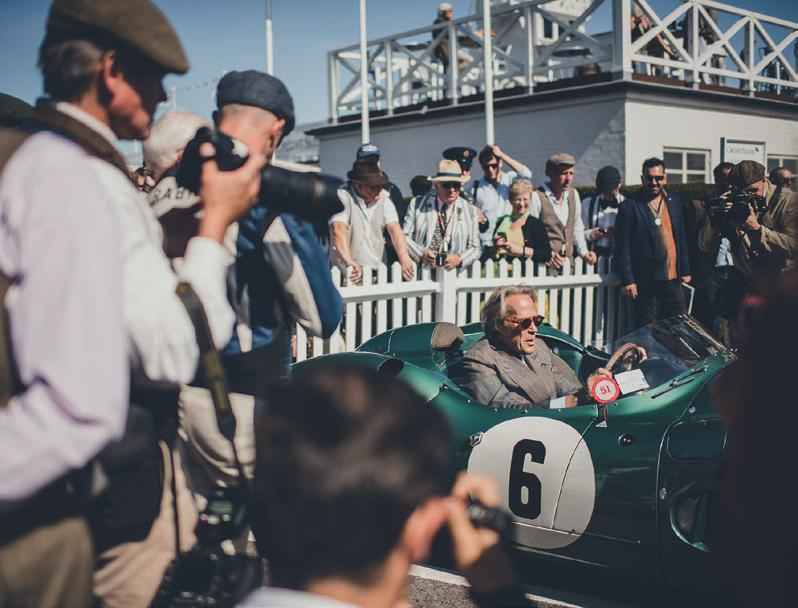
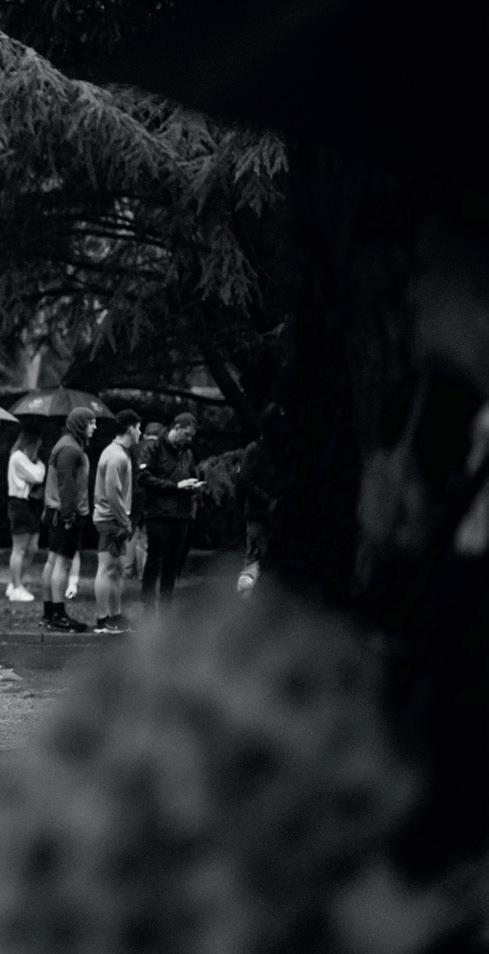
Below: Smaller moments often appear in my images as I feel they add to the story. Here, hands waiting for the call to start cars, or elsewhere bare feet and discarded heels

Above: When shooting a crowded situation, I rather enjoy taking a step back to capture the foreground story around the main subject – in this case, the Duke of Richmond

Left: The majority of the images I shoot at Goodwood events are totally unplanned spur-of-the-moment shots with no time to prepare. Capture what you can, when you can – especially if it’s an Aston DBR1!
Right: I’ll always try to photograph people before they notice me, to capture them as naturally as possible. On other occasions people notice me but ignore me anyway!
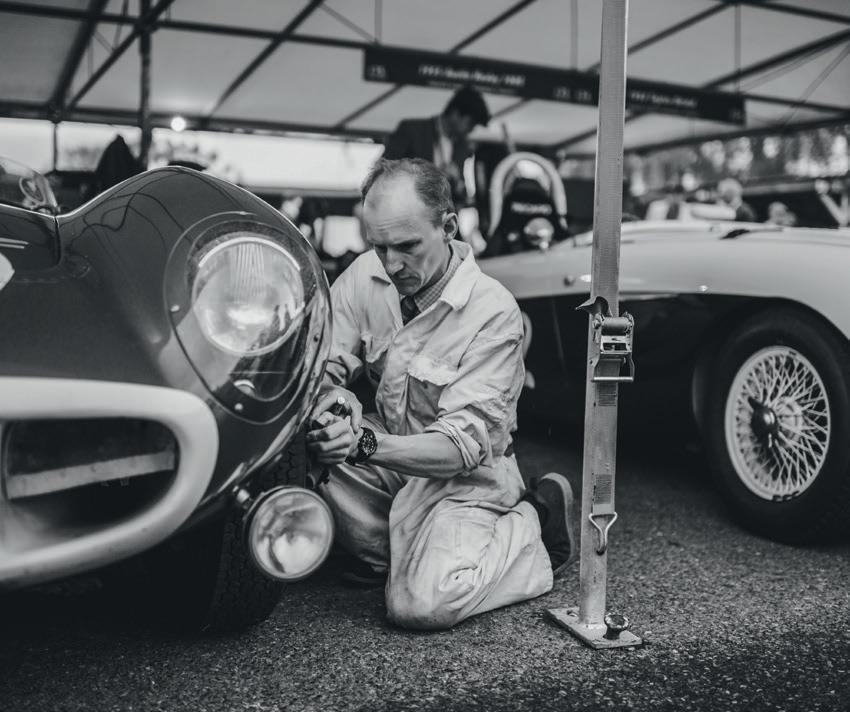
Right: When shooting in the assembly area, I’ll be looking not only for the usual crowdpleasing cars, but also interesting characters and lesser known cars, such as the ex-Angela

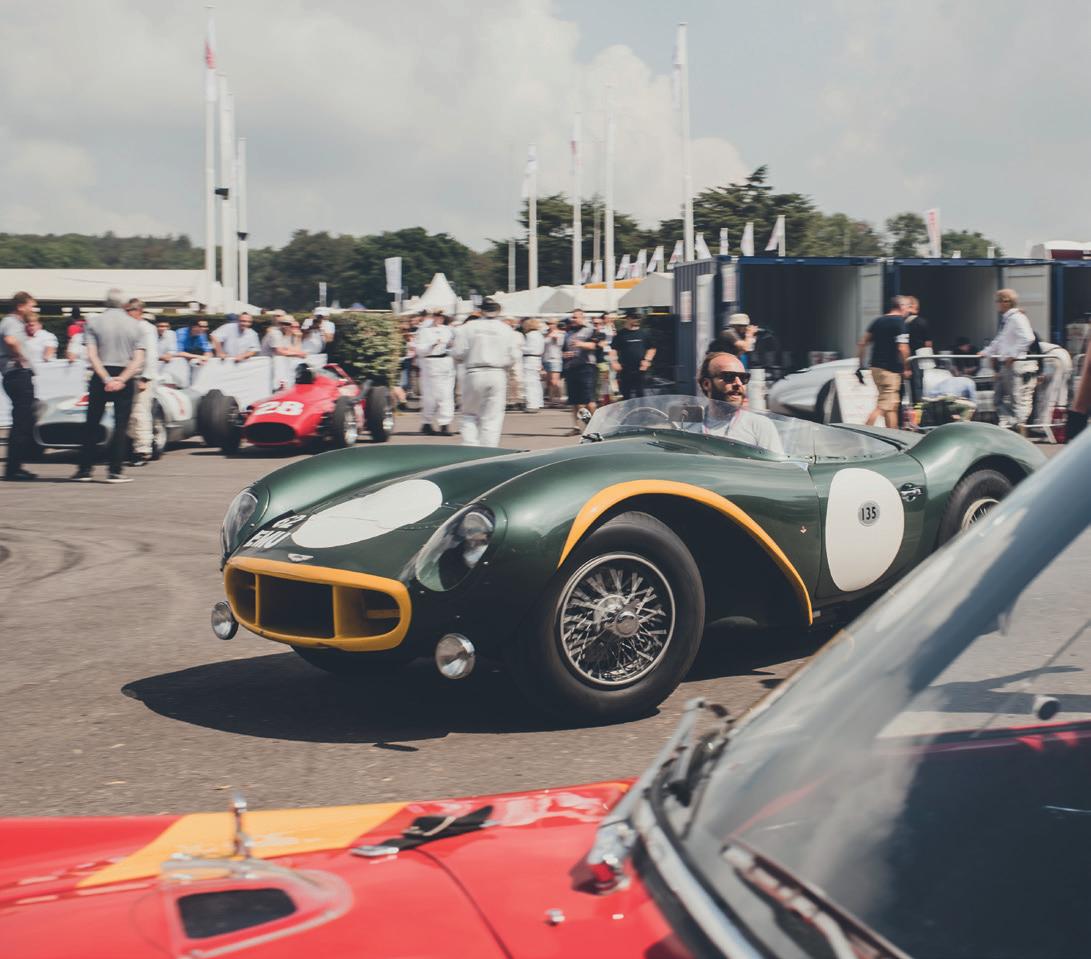
Above: I personally consider the DB3S to be one of the most beautiful Aston Martins to photograph, especially the side profile with the elongated front wheelarch, usually highlighted in contrasting paint to match the grille
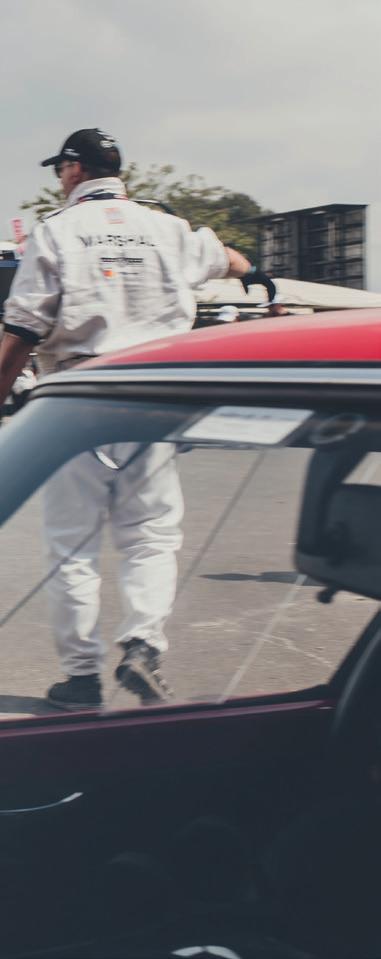
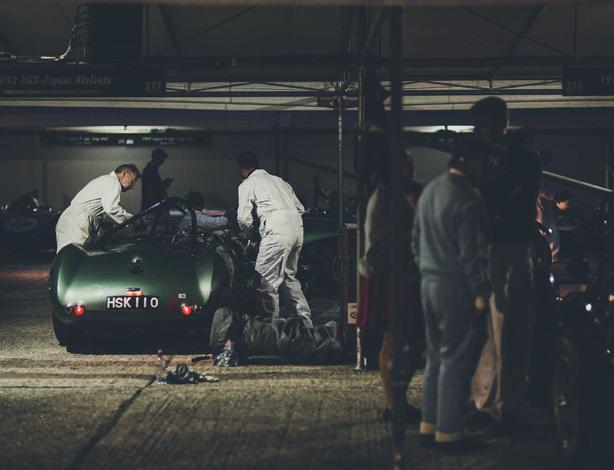
Above: I only shoot with whatever light is available, so low light can sometimes be a challenge. However, I find that some of the favourite shots I’ve taken have been in low light
Below: On the Friday evening at the Revival, if the weather is good, the sunset race can be spectacular to shoot. Golden light floods Woodcote Corner and the grandstands
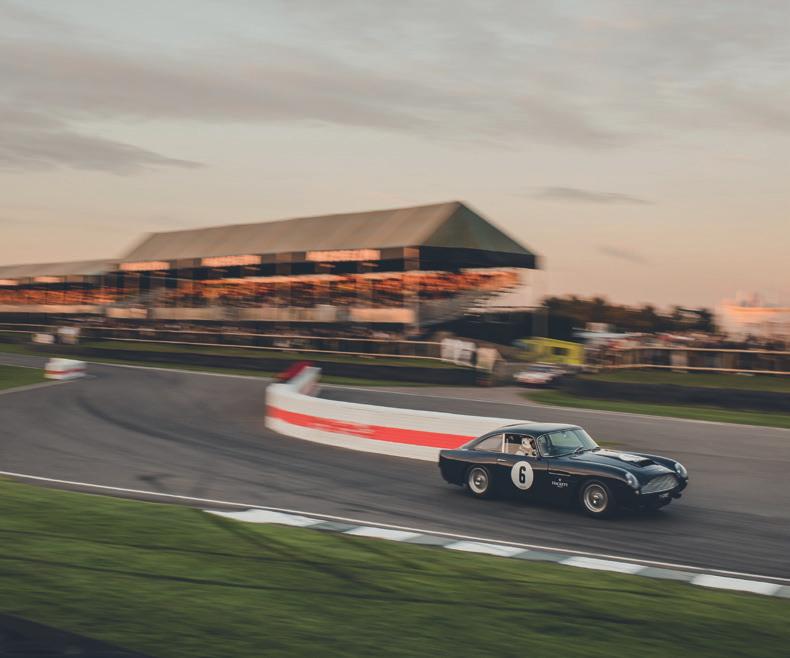
Below: The light at the Festival of Speed only really starts to get interesting right at the end of the day for some of the final sprints – which is when I get busy
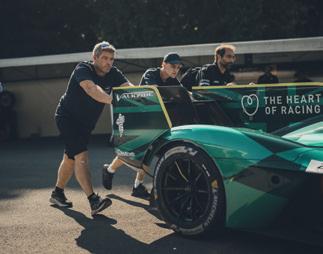
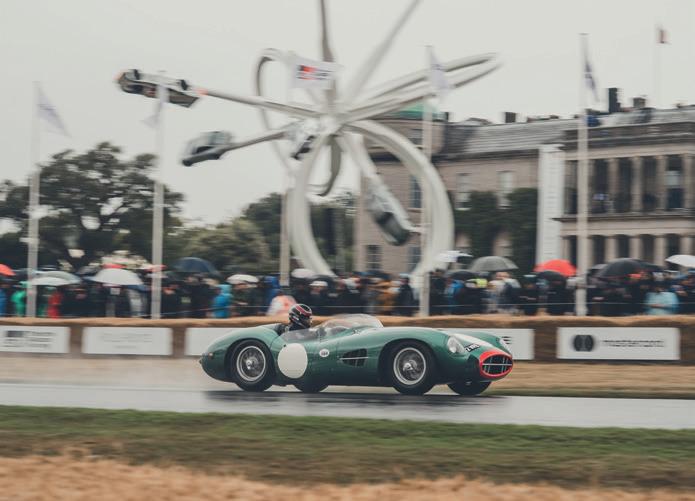
Above: The Festival of Speed sculpture adds interest when the light is bland and the air damp. A classic Aston helps too, in this case a DBR2
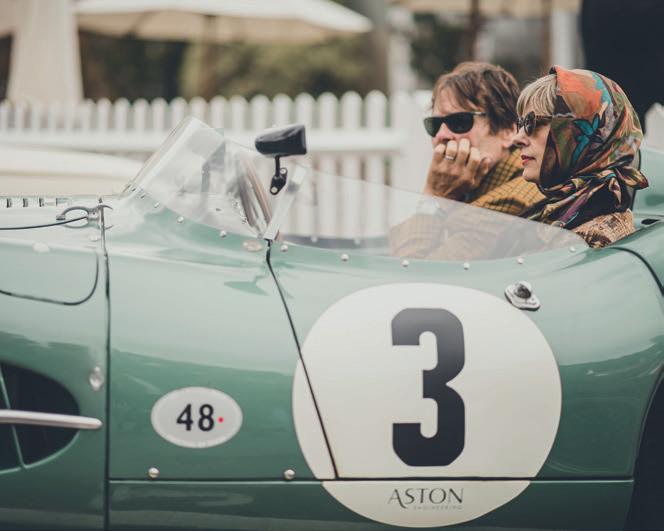
Above: Headscarves: both glamorous and practical. Well-dressed characters at the Revival help make the event one of the most enjoyable in the world
Right: Other than the famous golden hour, the blue hour is by far my favourite to shoot in, even better when there’s a classic with headlights on


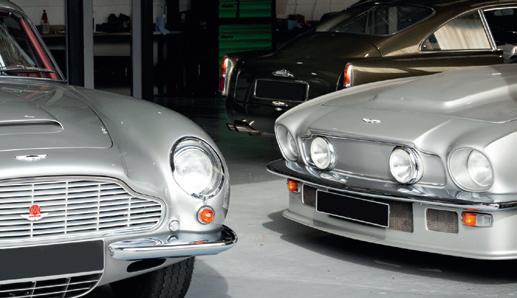
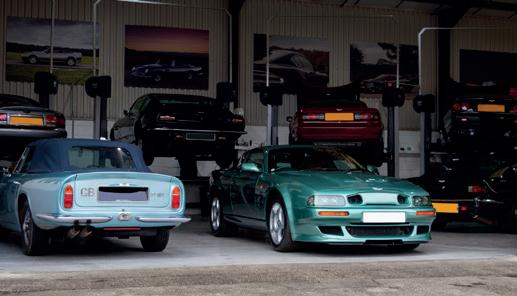
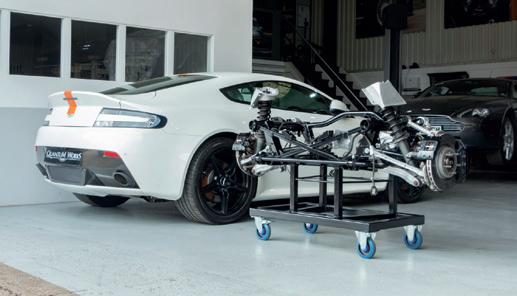


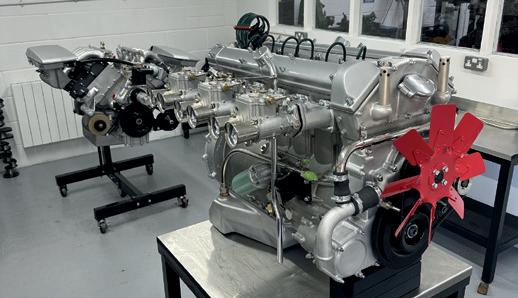
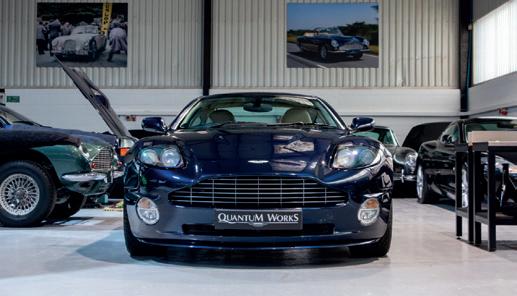
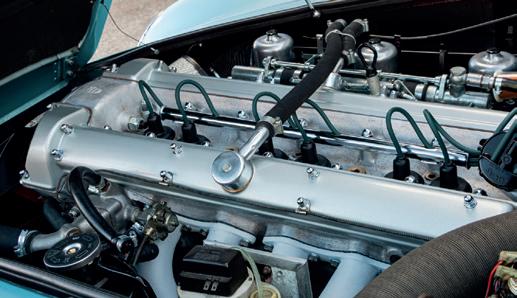

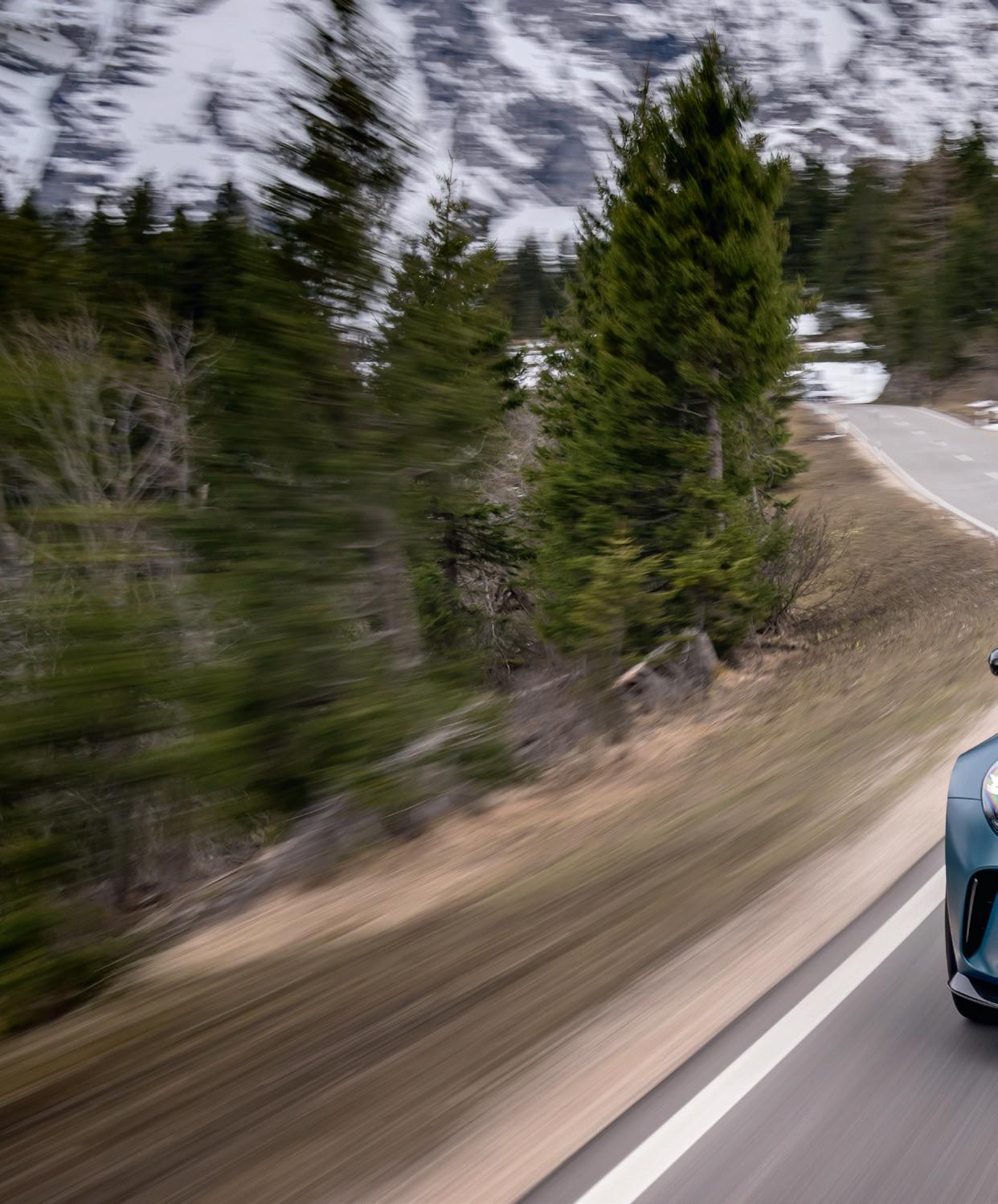
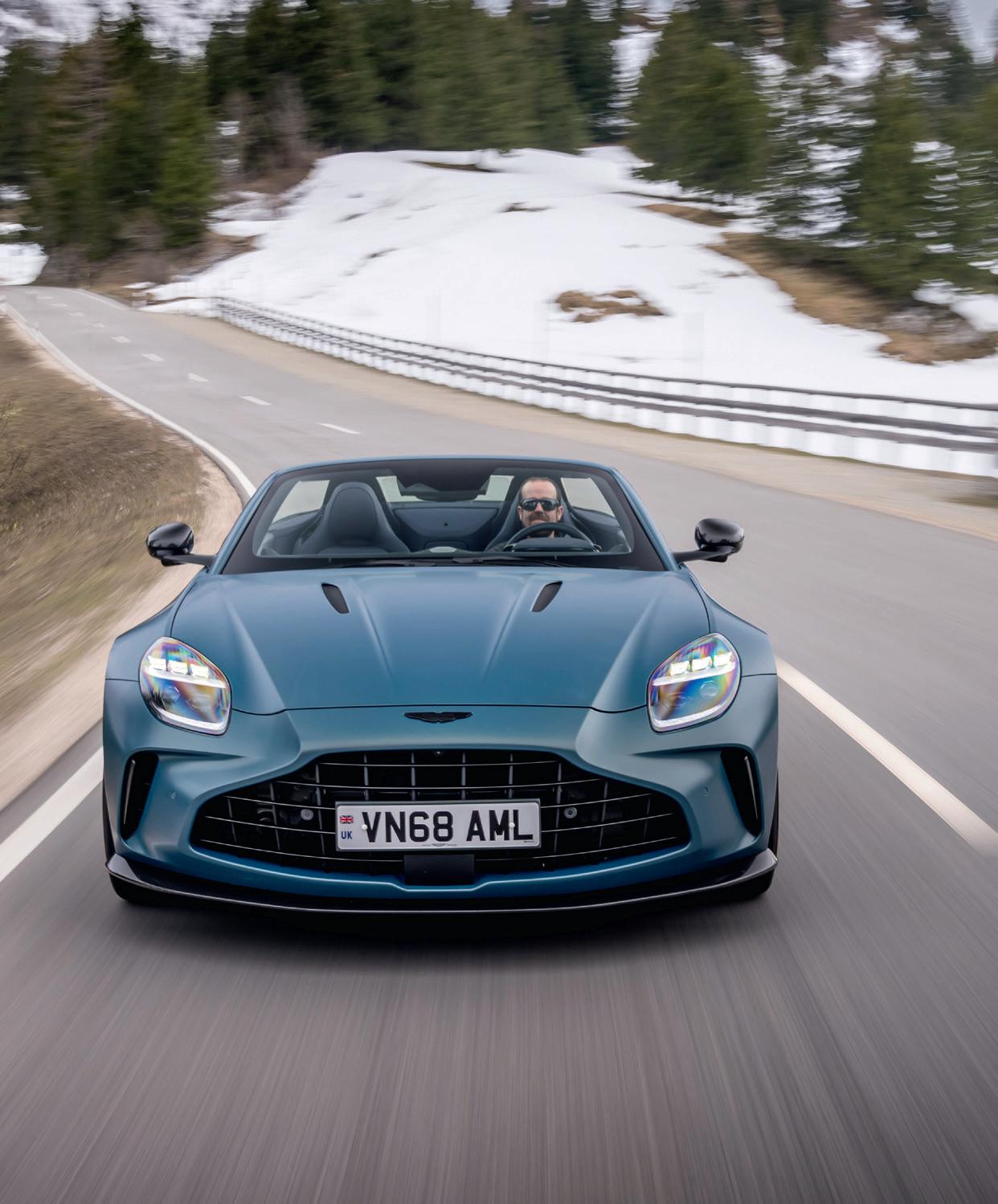
The current Vantage is now available in Roadster form, and it might just be the pick of the range. Good enough to outpoint Ferrrari’s Roma Spider? You’d better believe it
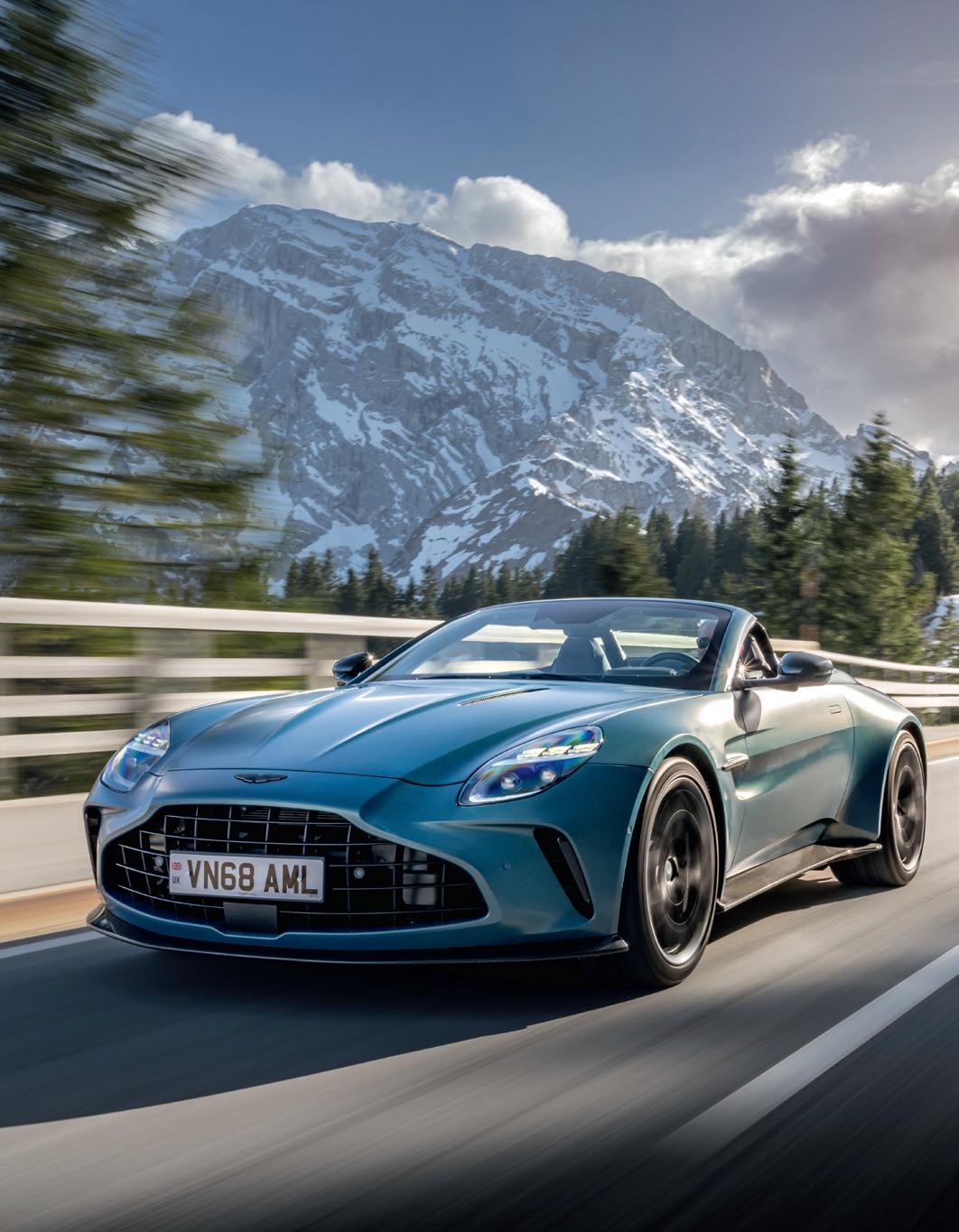

SSOMETIMES THERE ARE AUTOMOTIVE TRENDS THAT AT the time feel a bit odd, yet so many car makers join them that you start to wonder if you’re the odd one out for not embracing them. Driving along in the serene, cocoon-like refinement of the Vantage Roadster, the craze that springs to mind is the one for retractable hard-tops.
I blame Transformers, the kids’ toys that look like a school bus or a fuel tanker but become an upright, laser-shooting robot with a few twists and turns. It must have been an exciting time to be an automotive body engineer, creating a complex choreography of panels and windows that folded away into the boot at the touch of a button and re-emerged again like the folding and unfolding of an insect’s wings. But those body engineers were so preoccupied with whether or not they could, they didn’t stop to wonder if they should.
There aren’t so many in showrooms these days for lots of good reasons, not least weight, cost and complexity, but perhaps the most compelling reason is that with its eight-layer soft-top raised, the Vantage Roadster is almost as refined as the coupé. Sure, on coarse surfaces there’s a bit more tyre roar but levels of wind noise are very low even at speed and there’s not even a hint of body shake.
Of course, a folding fabric hood has always had plenty of advantages over a folding hard-top, not least that it can be stowed and raised much more quickly. Indeed, there are few quicker than the Vantage, which needs just 6.8sec from up to stowed or vice-versa, making it currently the fastest powered hood on the market. It also helps keep the overall weight increase over the coupé down to a modest 60kg, while the weight distribution has shifted ever so slightly rearwards but remains near 50:50, with the chassis tweaked to take account.
‘It can mooch about effortlessly… but then snap to attention with a stretch of your right foot’
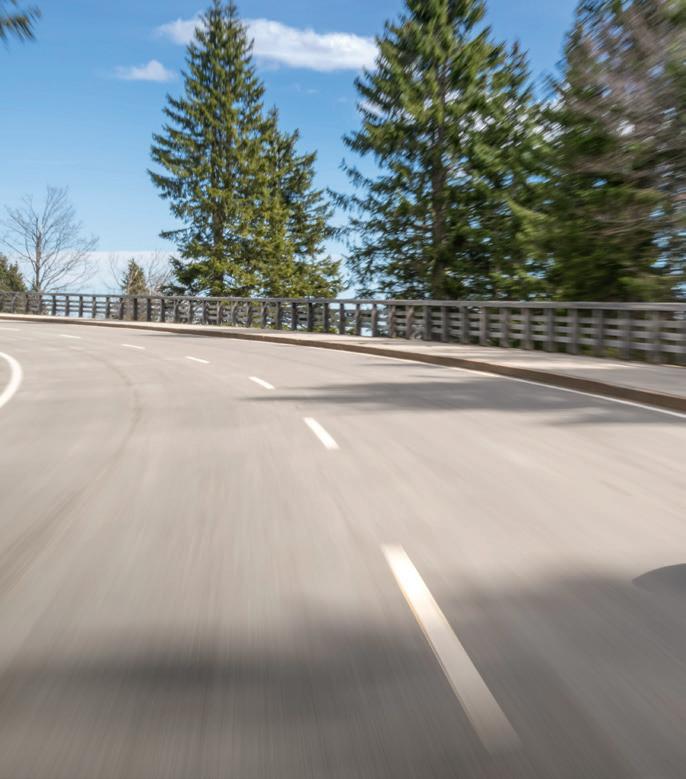
I reckon it looks crisp and tidy, too. Sometimes, when you chop the roof off a car that you’ve become accustomed to as a coupé, the result can look a bit awkward but the Vantage carries it off well. This is probably because from the outset it was designed to be both coupé and convertible and they were developed in parallel too. They even offer the same performance: 0-60mph in just 3.5sec and a top speed of 202mph. Roof up in the Roadster, I’m betting.
Initially the Roadster feels appealingly just like the coupé too, in its responses as well as refinement. Its steering is nicely connected and has a decent heft to it and its eight-speed ZF auto feels relaxed yet responsive. Its brakes deserve a special mention. Usually a solid compliment for brakes is that you get to the end of a test and realise you never noticed them, which means they delivered just what you wanted, every time. This Vantage’s brakes – the optional carbon-ceramics – drew attention right from the off, and for all the right reasons; they were superb, with response right from the top of the pedal but beautiful progression, making them a doddle to modulate perfectly and making you feel like a great driver.
Add in seats that offer excellent support and comfort and a ride that’s taut but which has a usefully softer edge than the coupé’s, and you’ve got a car that can mooch about effortlessly with the roof down, soaking up the sights, sounds, smells and sunshine… but then snap to attention and deliver mighty performance with a stretch of your right foot. And mighty it is, the front/mid-mounted, 4-litre, twin-turbo V8 delivering a
generous 671bhp and a full-torque bellow that’s wonderfully rich, round and menacing, especially roof down. Given the Vantage’s stance, it’s exactly the sound you expect to hear.
It’s a compelling package, but if you’re tempted by the Vantage Roadster, you’ll also be drawn to another new softtop, the Ferrari Roma Spider. The Roma was originally a coupé spin-off from the Portofino convertible, so the process has now gone full circle and the new Roma Spider replaces the rather frumpy Portofino in the range. Alongside the broadshouldered, two-seat Aston, the Ferrari looks more slender and longer, as you might expect with it being a 2+2, and yet the numbers tell a different story; its wheelbase is actually a fraction shorter.
The Ferrari is also topped by a fabric roof but one that’s longer and which folds into the boot in a similar fashion to a retractable hardtop, the boot panel rear-hinged like a giant air brake to swallow the folded hood. After the Vantage, the process seems to take an age, the boot panel barely at the top of its arc when the Aston’s hood is neatly stowed. And yet, despite the extra roof complexity and +2 seating (handy for very small children requiring minimal legroom), the deceptive nature of the Ferrari strikes again. Both these convertibles are built around aluminium structures but the 2+2 Ferrari is some 75kg lighter, 1654 versus 1730kg. And the Roma offers more boot space too, 255 litres to the Vantage’s 200.
Aesthetically, for me it’s a no contest. Combined with a simple and classy interior trimmed in leather and Alcantara,
Cockpit and interfaces (right) have taken a giant stride forward with the current Vantage
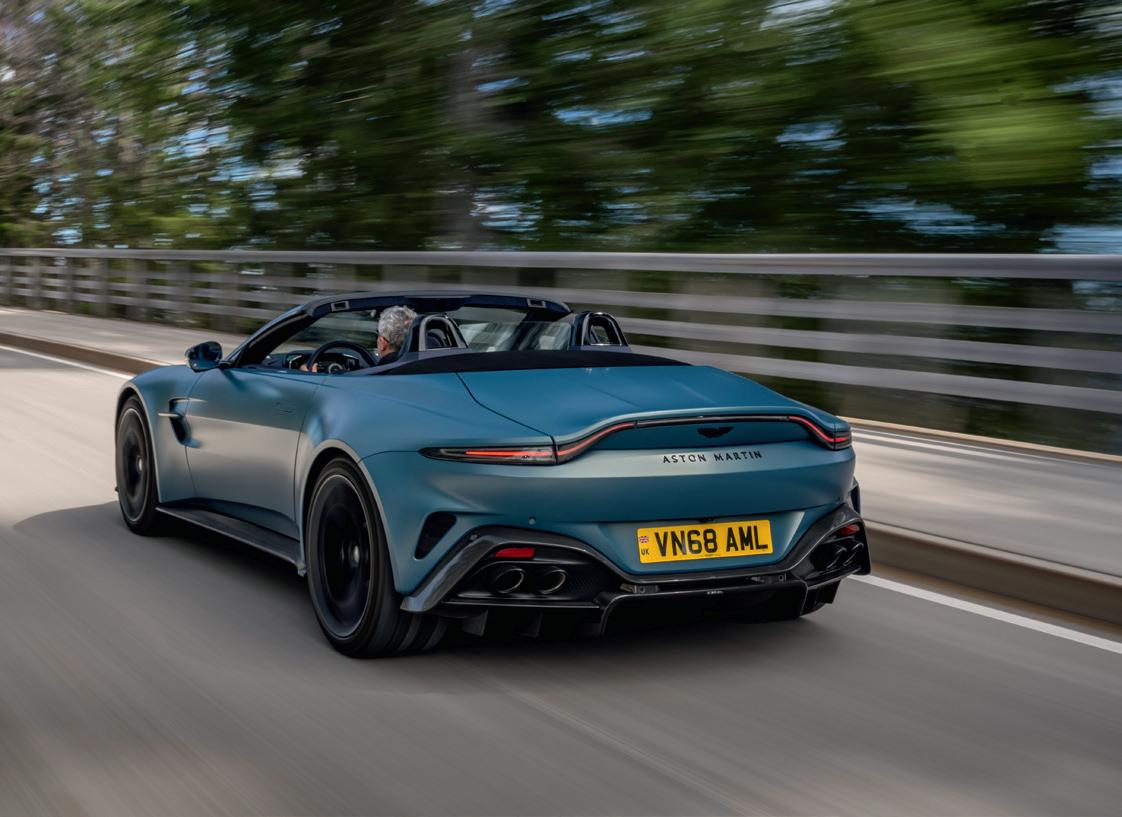
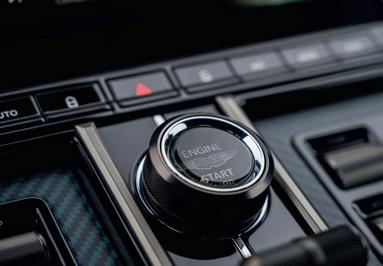
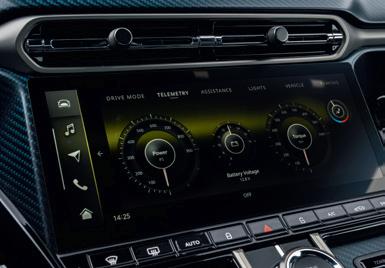
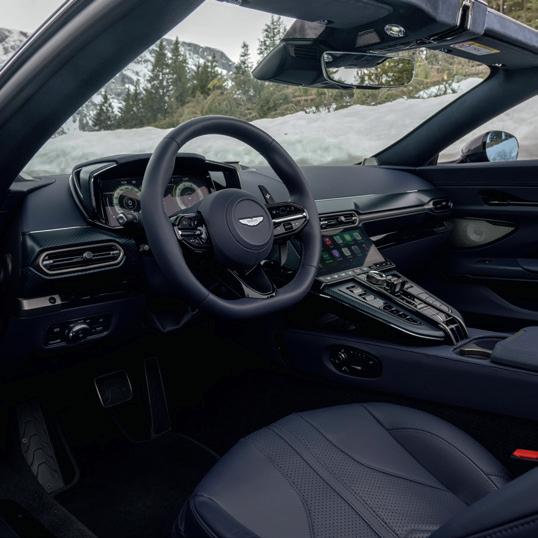
the Aston’s bodywork and stance strike just the right note. Alongside it, the Ferrari looks under-wheeled, though it’s on 20-inch alloys (the Aston is on 21s), while its interior is busier and much less cohesive. Less cosy too, with less embracing and supportive seats.
The Ferrari couldn’t sound or feel more different to drive, either. After the barrel-chested, heavy metal idle of the Aston, the whirr of the Ferrari’s 3.8-litre flat-plane-crank V8 is short on character, but while it speaks quietly, it does carry a big stick. Sure, it’s a little shy of the Aston’s numbers, but 611bhp is a solid output and gives the Roma a very similar power-toweight ratio: 375bhp/ton versus 394. It’s also delivered to a rear transaxle but one housing a dual-clutch gearbox, so where the Aston slurs the Ferrari snaps. That directness, that tautness, is matched to seamless upshifts, and the quick-revving V8 keens to 7500rpm with a tight, thrilling bark, a pop from the tailpipes the only evidence of each upshift.
The two soft-tops get down the road with different styles, too. Open the Aston’s boot and you’ll spot a chunky steel tube between the struts, visible evidence of the strengthening that helps it achieve that coupé-like integrity. In terms of chassis tuning, there is recalibrated software for the Aston’s rear
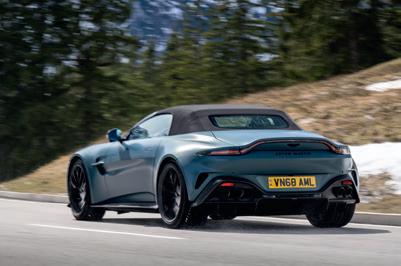
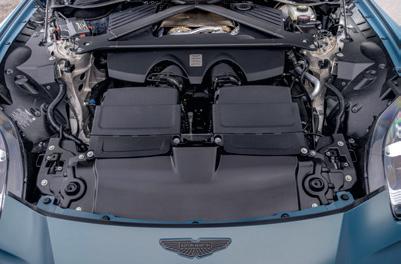
Roadster looks terrific with hood up (below left) or down. The view under the bonnet isn’t so great, but that’s modern cars for you

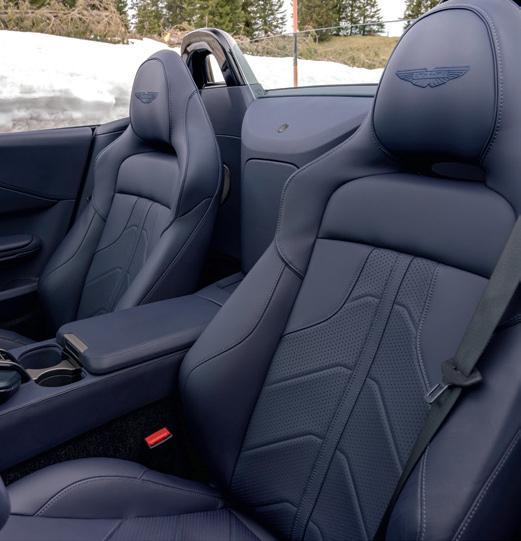
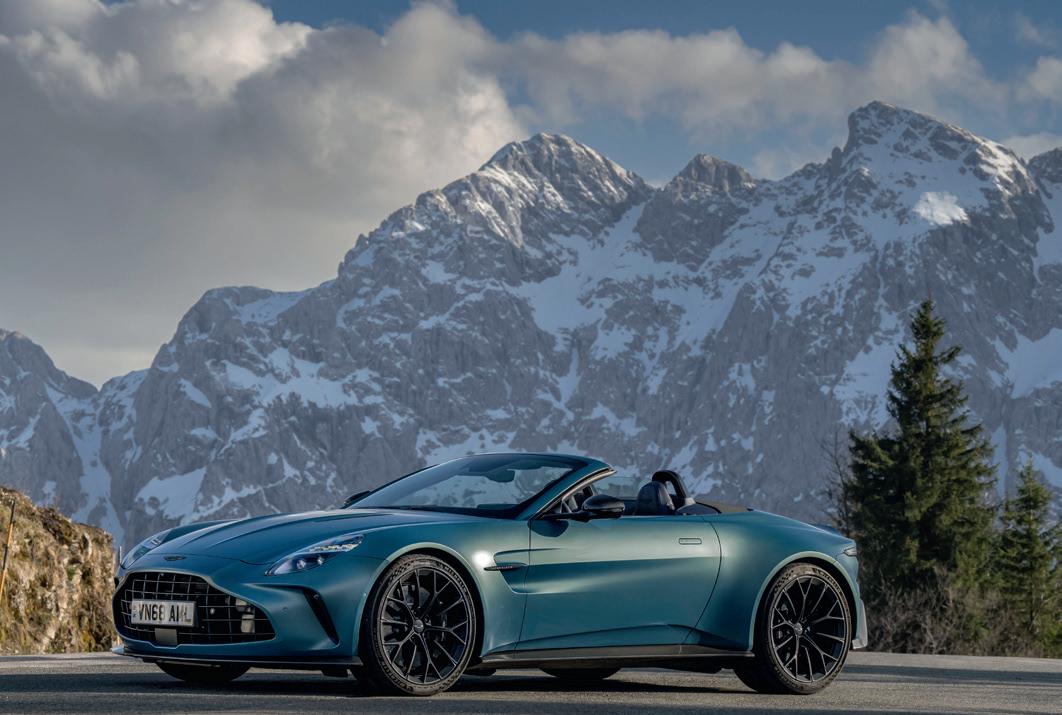
ENGINE V8, 3998cc, twin turbochargers MAX POWER 671bhp @ 6000rpm MAX TORQUE 590lb ft @ 2000-5000rpm
TRANSMISSION Eight-speed automatic with paddleshift, rear-wheel drive, E-Diff, torque-vectoring SUSPENSION Front: double wishbones, coil springs, telescopic adaptive dampers, anti-roll bar. Rear: multi-link, coil springs, telescopic adaptive dampers, anti-roll bar STEERING Rack-and-pinion, electrically assisted BRAKES Vented discs (carbon-ceramic optional), 400mm front, 360mm rear, ABS WHEELS 9.5 x 21in front, 11.5 x 21in rear TYRES 275/35 ZR21 front, 325/30 ZR21 rear, Michelin Pilot Sport S 5 WEIGHT 1730kg POWER TO WEIGHT 394bhp/ton 0-60MPH 3.5sec TOP SPEED 202mph BASIC PRICE £175,000
dampers and retuned mountings for the transaxle, and it does feel subtly different to the coupé.
The Roadster rides with more compliance and smooths out tricky A- and B-roads better than the coupé, taking the sting out of sharp bumps and flowing over undulating surfaces with less fuss. It handles a little differently, too. In the coupé, dive into a tight corner enthusiastically and the front is unfailingly nailed-down and the rear follows obediently, while in the Roadster the front is still resolutely pinned but the rear of the car rotates much more quickly. It stays hooked up, as you discover if you pick up the throttle smartly mid-corner, simply feeling more agile when you up the pace.
The Ferrari feels different again. Right from the off, it’s more supple than the Aston, fulfilling its objective of being a 2+2 GT car, though looking at the difference in tyre sizes, this is no big surprise. The Vantage’s AML-spec Michelin Pilot Sport S 5s are a massive 325/30 R21 at the rear, whereas the Roma Spider rolls on its 285/35 R20 Bridgestone Potenza Sports.
Yet while it’s supple in ride, in other respects the Ferrari feels more direct. This is especially the case with its steering, which conveys more detail and is a bit sharper, the sensation helped
by a thinner-rimmed steering wheel. There’s directness in the shifts of its DCT gearbox, too, that helps the response of its flat-plane V8 engine: response is crisper, and it revs higher with a more urgent cry.
However, pick up the pace and the directness of the steering and the cossetting ride don’t seem a great match. There are sportier modes available via the handy steering wheelmounted manettino, but while the urgency of the gearbox and engine increase, the ride remains soft and compliant.
I get that the Roma has a 2+2 GT brief, but I can’t believe the adaptive dampers couldn’t offer firmer control in, say, ‘Race’ mode, to bring its character into line with the rest of the car. Ultimately, the Roma lacks cohesion.
The Vantage Roadster is perhaps a little less precise, but it’s wonderfully unambiguous, a big-hearted car with massive performance and engaging, approachable dynamics. But it also has a relaxed side, with an easy-going drivetrain, a smoother ride than the coupé and, of course, the option to stow the hood in seconds and get closer to nature. It’s a handsome brute too and, roof-up, offers refinement pretty much on a par with the coupé. Best of all worlds, then.
The current twin-turbocharged Vantage coupé and Roadster are just the latest in a line of Vantages now stretching back a remarkable 75 years. We choose five of the most significant models in the bloodline and explain why they’re special
WORDS PETER TOMALIN PHOTOGRAPHY AML
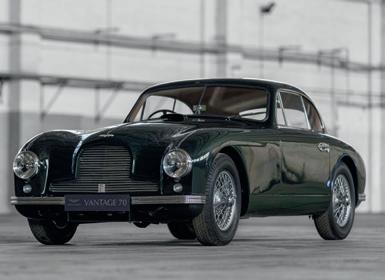
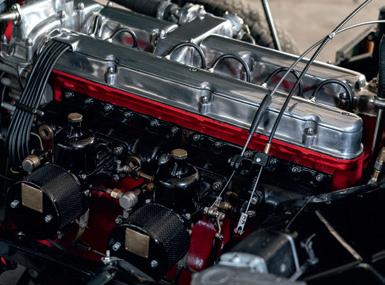
The origins of the Vantage name have long been lost in the mists, but we do know that its first use in an Aston context occurred in 1950 when it was used to denote an engine upgrade for the DB2. Back then, ‘Vantage’ was merely a line on a delivery docket, denoting only a raised compression ratio (from 6.5 to 8.16:1) and larger SU HV6 carburettors for DB2 engines whose owners ticked the right box on the options list. But this is where the Vantage dynasty began.
The modifications to WO Bentley’s 2.6-litre twin-cam straight-six raised power from 105bhp to 125bhp, dropping the 0-60mph time from 12.4sec to 10.7sec and raising the top speed from 110mph to 117mph. And so, as a discreet but effective powertrain upgrade, the Vantage name was born.
To drive today, a DB2 is totally engaging. The gearbox is slow and heavy, but deliciously mechanical and precise. Its ratios are super-short by modern standards, even considering the modest speed range they have to cover. The straight-six is urgent too, always eager and busy.
A DB2 with that engine upgrade is a car that is comfortable yet sporting, a machine of noble birth but with just a hint of street fighter in its genes. Modest beginnings, but what better way to set the tone for all those other Vantages that were yet to come?
ENGINE In-line 6-cyl, 2580cc
POWER 125bhp
TORQUE n/a
0-60MPH 10.7sec
TOP SPEED 117mph
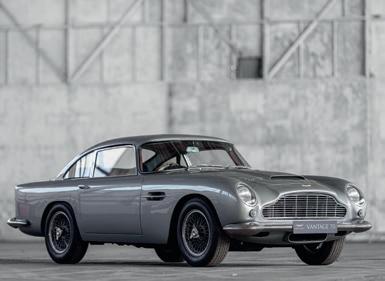
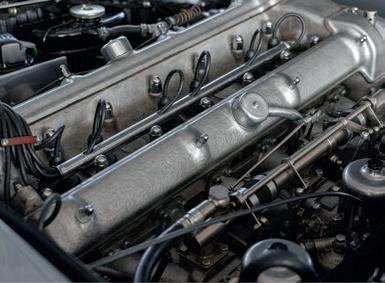
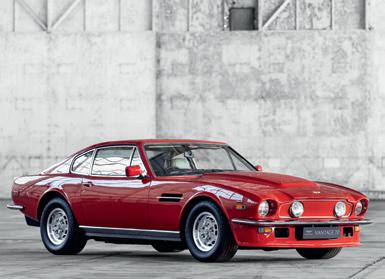
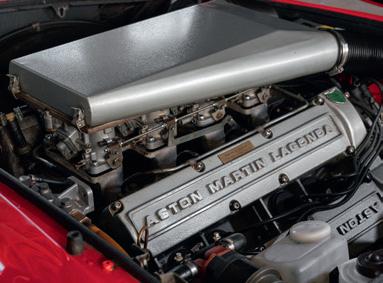
After the DB2 in Vantage tune, Aston Martin put the Vantage name back on the shelf for a while. It wouldn’t gather dust for long, though: it was too good a name not to use again, particularly when Aston wanted to ginger up sales of its DB4.
From chassis 251 onwards, the standard DB4 could be had with a ‘Special Series’ engine, which came with three SU carburettors rather than the standard two. And it was this engine that in 1961 formed the basis of the DB4 Vantage, which became a model in its own right from chassis number 951 onwards (what are now known as the Series 4 and 5 models). Visually, the Vantage was distinguished by having the faired headlights of the GT, framed by a chrome rim (which made it pretty much a dead-ringer for the DB5).
The Tadek Marek-designed 3-7-litre six
saw an increase in compression ratio to 9.1:1, larger two-inch inlet valves, and 1.875in exhausts, uprated valve springs and triple HD8 Skinners Union carburettors with most examples breathing into a GT-style air-box. The result was an increase in power from 240bhp to a claimed 266bhp. On the road, the abiding impression was the extra intake roar of the greedy SUs and their immediate response. And it clearly worked in marketing terms, because DB5, DB6 and DBS all had their own Vantage derivatives, even being badged as such from DB6 onwards.
ENGINE In-line 6-cyl, 3670cc
POWER 266bhp
TORQUE 255lb ft
0-60MPH 8.5sec
TOP SPEED 148mph
It might be regarded as the original Aston bruiser, but there’s some real beauty and delicacy to the crisp lines, slim chrome bumpers and thin pillars of the 1977 Vantage. That said, the mountainous bonnet bulge –necessary to clear the bank of four hungry Weber carburettors – isn’t so much a design statement as a topographical feature.
This was where ‘Vantage’ became a model in its own right, with aerodynamic additions and chassis upgrades as well as a more powerful engine. And it was never more potent than with the ‘580X’ engine, which in addition to the bank of Webers boasts ported cylinder heads, high-lift cams and Cosworth pistons. Depending on spec (Works offered some additional fettling via carbs and exhaust system as
an option) X-Pack Vantages had anywhere between 410 and 432bhp, up from the ‘regular’ Vantage’s 375bhp. That doesn’t sound like much nowadays, but in the mid-80s these were Ferrari-humbling figures. No surprise, then, that it goes like fury. More of a surprise is its appetite for corners. There’s a decent amount of grip and useful feel once the chassis takes up the lateral strain. Attack with a bit more commitment and the Vantage will break traction, but again it does so cleanly and with plenty of warning, at least on warm, dry roads…
ENGINE V8, 5340cc
POWER 375bhp
TORQUE c400lb ft
0-60MPH 5.3sec
TOP SPEED 170mph
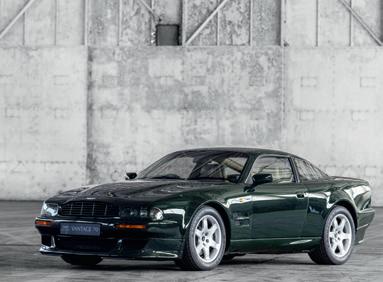

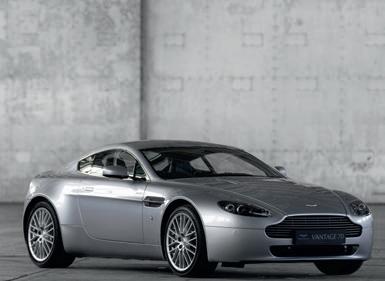
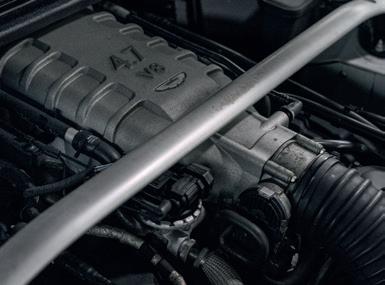
Of all the cars here, the Viragebased Vantage makes the most emphatic statement. With a hugely powerful twin-supercharged evolution of the 5340cc V8 and dramatically altered bodywork, this last of the coachbuilt Astons was everything the limp and rather anodyne Virage wasn’t and gave Aston a much-needed hero car for the ’90s.
On the road in the V550, it pays to remind yourself that this is a 30-yearold car with 550bhp, 550lb ft and no traction control. Things were different in those days, and rather than hoofing down the road and trusting in an invisible electronic safety net to catch your indiscretions, the V550 will hold you accountable.
It doesn’t feel as compact as the ’70s Vantage, but the V550 is still responsive
and keen to change direction. This sense of energy is amplified by the engine, which has a sharp and, at times, abrupt delivery. Soundtrack-wise it’s very clearly a descendent of the X-Pack, but with an additional layer of sound coming from the Eaton superchargers, which whistle and whine as the car starts to work hard. It’s an amazing mechanical cacophony.
One that seems entirely in keeping when you’ve looked beneath the bonnet and and admired an engine that looks like it should be in a ship. Or perhaps a WWII fighter plane.
ENGINE V8, 5340cc, twin s/c
POWER 550bhp (V550)
TORQUE 550lb ft
0-60MPH 4.6sec
TOP SPEED 186mph
Right from its debut at the 2005 Geneva motor show, the all-new Vantage was immediately emblematic of a reinvented and revitalised Aston Martin.
Here was a car – an achingly desirable one at that – that represented the marque as it had never been seen before. Youthful, dynamic and, perhaps most excitingly, positioned at a price point (a fiver under £80,000) that made it attainable to a whole new group of aspirant owners, a no-excuses rival for the Porsche 911.
By the time production ceased, more than 22,000 Vantages had been built, making it far and away the most successful Aston Martin in the company’s history.
Clever bonded aluminium structure aside, this was a relatively simple car in
many ways. There’s no sport mode. No dynamic aides apart from a simple traction control system, and with just a six-speed manual transmission at first. A time-honoured recipe, then, but reinvented for a new millennium.
It was agility that really set this Vantage apart, very much from any previous Aston, but more importantly from contemporary rivals, Porsche 911 included. Today it still delivers a hugely satisfying drive; not ferociously quick but just quick enough, with a great soundtrack and a wonderfully analogue feel. And it’s hardly aged at all.
ENGINE V8, 4281cc (4.3)
POWER 380bhp
TORQUE 302lb ft
0-60MPH 4.8sec
TOP SPEED 175mph
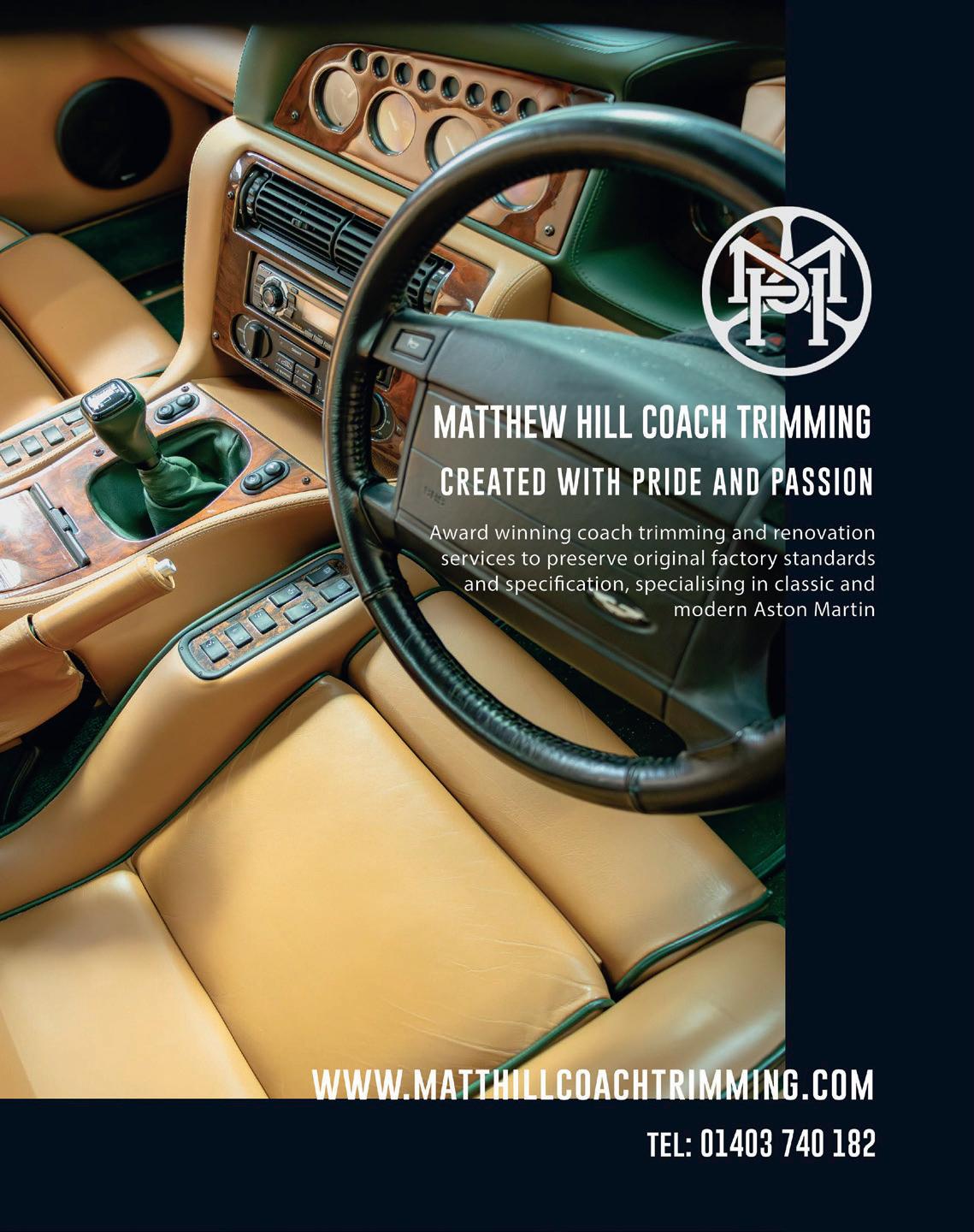
The ‘VH’ V8 Vantage was on course to be a mid-engined car until the arrival of Dr Ulrich Bez as Aston CEO. His decision to can the project and build a front-engined V8 was key to AML’s 2000s golden era. Twenty years after its launch, we caught up with Dr Bez to look back
WORDS NATHAN CHADWICK PHOTOGRAPHY AML
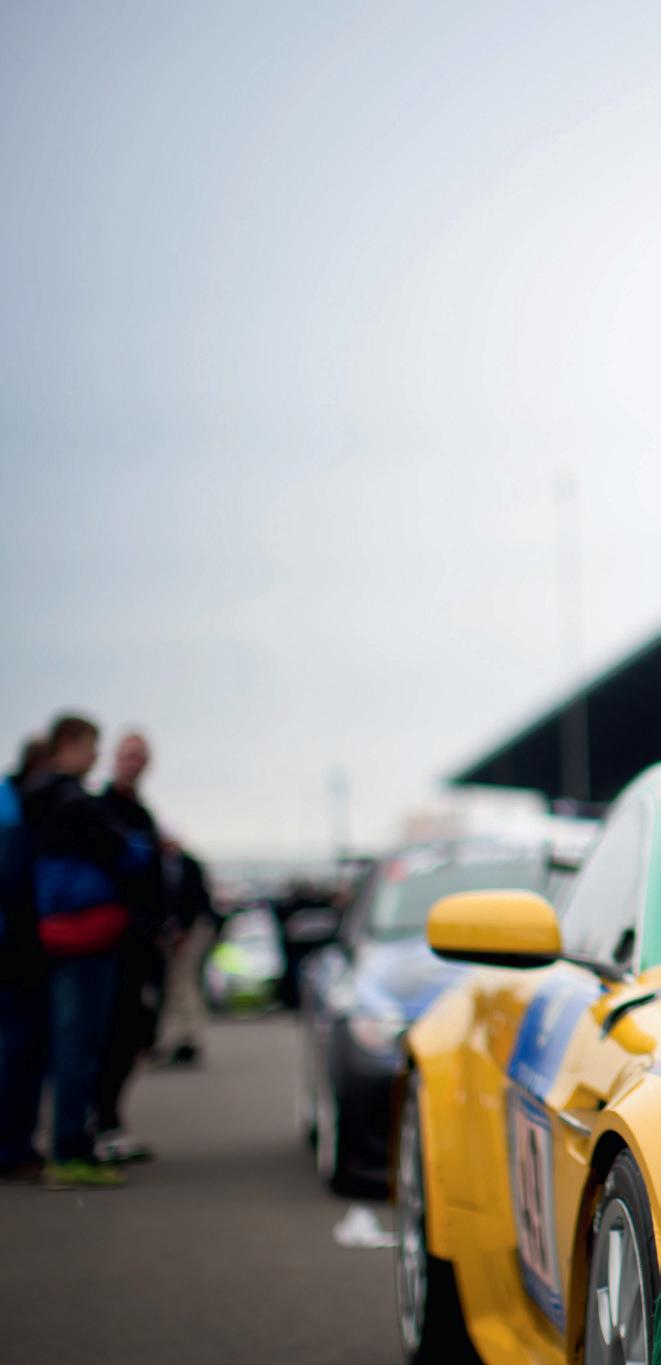
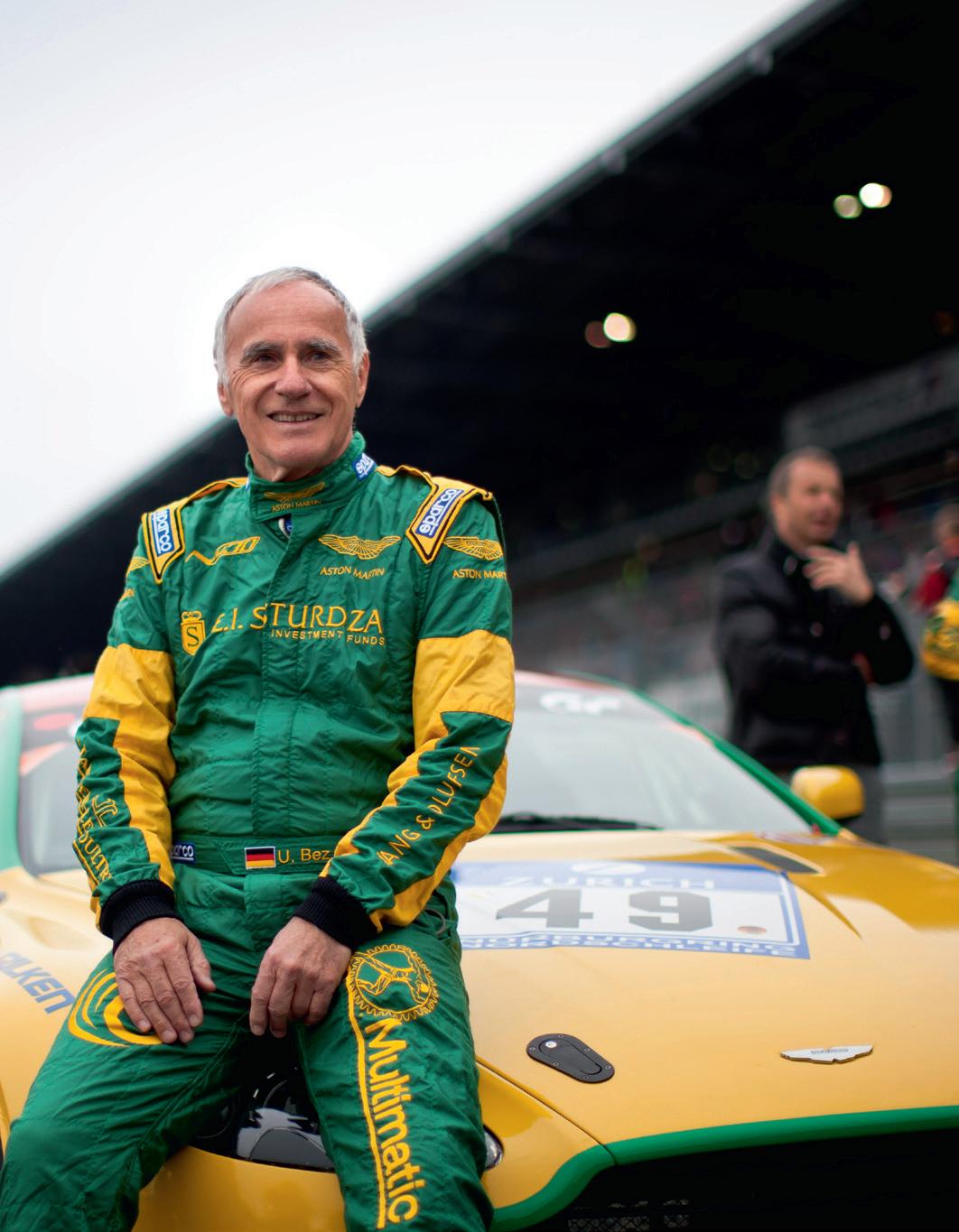
just prior to Gaydon’s celebration of the V8 Vantage’s 20th anniversary – yellow shoes, a limited-edition yellow watch. It’s all part of his attention to detail. ‘I’m going to be giving my speech from the Geneva Motor Show in 2005, and we had a yellow car there,’ he smiles.
The V8 Vantage is arguably the most loved and most popular among the mainstream Bez-era Aston Martins, but things could have been so different – most notably, where the engine sat. ‘When I arrived we had the DB7 GT, and we had just launched the Vanquish with all the flaws with the transmission, the brakes and so on – and on the board there was a midengined car,’ he recalls.
It wasn’t just any mid-engined proposal, but one that was a cause célèbre for Wolfgang Reitzle, then head of Ford’s Premier Automotive Group (of which Aston Martin was part, along with Jaguar). ‘I phoned him up and I told him that I was stopping the project tomorrow,’ Bez tells me. ‘Even though he’d initiated the project, he said okay, you are the boss.’
Bez’s reasoning was simple – the mid-engined concept would be highly unlikely to make the company profitable. What Aston Martin needed was volume with different models, courtesy of a modular concept with huge synergies – what we now know as the VH architecture. ‘The next day I told the team – they were totally disappointed,’ he continues. ‘Once they understood that this was a much bigger programme than just a mid-engined car, they started to work very hard.’
This was 2000, some time before work on the DB9 started in earnest in February 2001. ‘I knew we were going to make a V8 Vantage, but I didn’t know exactly how it would work,’ Bez admits. He envisioned the V8 Vantage as a Porsche 911 fighter, just a little more expensive, and more exclusive.
To prove that modular concepts could deliver different
models, Giorgetto Giugiaro was asked to make a concept of a future Aston Martin, based on the DB7’s structure and hard points. ‘He totally understood and delivered the GG 2020, later named Aston Martin Twenty Twenty, a perfect demonstration of what can be done.’
It was during this time that a rift began to emerge between Bez and designer Ian Callum, who had penned the original Vanquish and had been working on proposals for both a front and mid-engined sports car. ‘I didn’t like various things in the designs,’ Bez recalls. ‘We deferred the programme and gave him two months to come up with better solutions.’
But the rift widened. ‘I told him I couldn’t work with somebody I do not fully trust in how we communicated. He said okay – which was a big problem because he was very passionate about Aston Martin.’ [For reference, Callum’s own account of this period was covered in a feature on the midengined proposal in issue 17 of Vantage.]
According to Dr Bez, around this time Ford was keen on the V8 Vantage sharing its architecture with the F-type proposal of the era, but disagreements with Jaguar led to Aston Martin walking away from the project. ‘Jaguar insisted on things like A-pillar positioning for the windscreen; it just wasn’t workable,’ he tells me. These arguments eventually pushed the Vantage’s release back a year, but in the end Aston Martin got the V8 to itself as that F-type programme was canned (a completely different F-type, the Callum-designed front-engined car that eventually went into production in 2013, would emerge at the end of the decade).
With Callum having moved on to Jaguar, Ulrich turned to Henrik Fisker, who was then at BMW. ‘I couldn’t afford him by myself,’ Bez says. ‘So we got PAG’s design studio in Soho to hire him, and we paid half his salary – Ford never complained.’
Ulrich is particularly fond of Fisker’s bonnet design, which didn’t have a separate bumper construction. ‘Everyone said it wasn’t possible, that the car must meet bumper tests in Canada and the USA. I said, let us try. We had a solution that Henrik and the guys in Aston Martin developed that was unique. Henrik fought for this – and this is also why the original V8 Vantage is still one of the best-looking sports cars ever.’

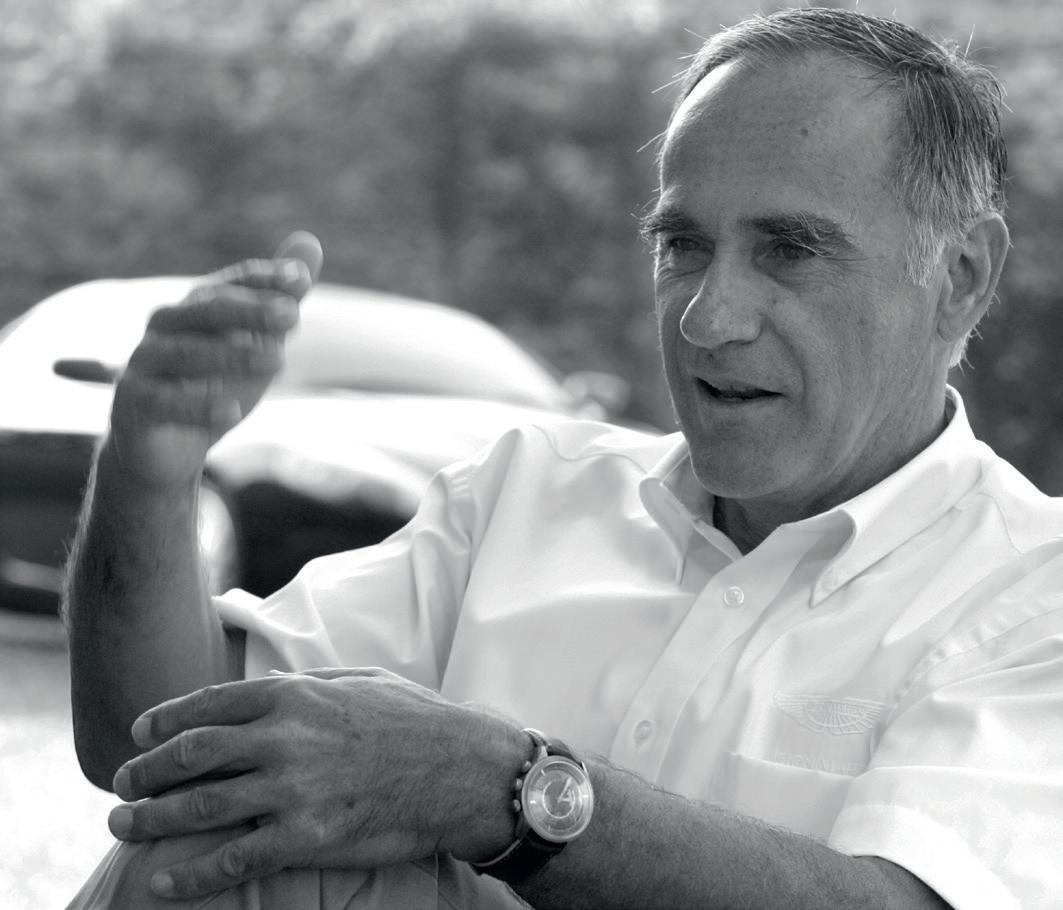
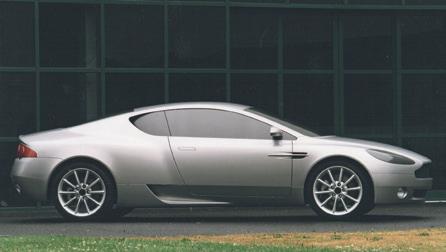
Known as Project AM305 within Aston, the original proposal for what would become the
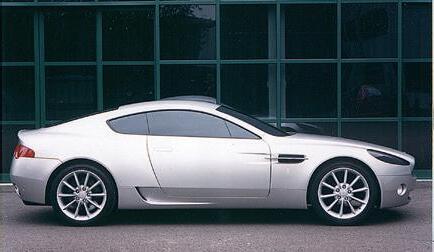
At the same time a front-engined version was also designed, AM305F. It was this that would eventually be redeveloped for production
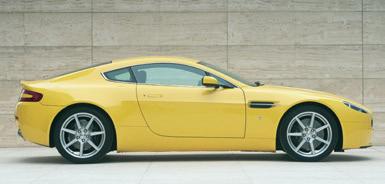
Bez knew that outselling the 911 was unlikely – instead, his target was a modest 10 per cent of its sales levels. However, in order to get there, quality control had to get to Porsche levels, too. ‘When I came to Aston Martin, I had never touched an Aston Martin, I only knew of the James Bond side,’ he says. ‘When I was at BMW Technik, a journalist once asked me what job I’d love to have, and I jokingly said head of engineering for Aston Martin.’
His understanding of quality centred on reliability and usability. ‘None of that was at Aston Martin – and people knew this,’ he says. ‘When I arrived, the workers on the assembly line would be sitting in the cars at nine in the morning eating their breakfast. The breakfast itself was not the problem, it was the mindset – that is why I had to change things.’
Aston Martin workers got their first canteen, and the first fruits of the new mindset were the well-received DB7 GT and an evolution of the Vanquish. ‘A globally recognised luxury car brand needs quality, but also usability – Porsche became big because of usability,’ says Bez. ‘Who would go to Alaska in the winter at -40ºC, or go to Seven Mile Drive in Death Valley where it is 50ºC outside, with cars bumper to bumper in a canyon, driving up there ten minutes at a time, standing then driving, with everything overheating? This, in the end, is what made Porsche what it is – usability.’
Aston’s new testing regimen involved that most German of things: the autobahn. Ulrich knew all too well just how punishing such roads could be, having toasted the V12s in two DB7s and a Vanquish – the latter at 270km/h (168mph) between Cologne and Aachen. ‘After that, we didn’t have engine failures anymore,’ he laughs. ‘On German autobahns, with people driving 1000km per day, the cars had to be flawless. In the end, as soon as the people who built the cars understood that there was something to be proud of, they did it.”
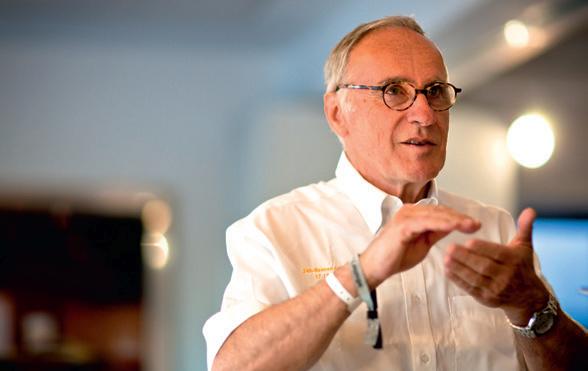
Above left: revised and refined by Henrik Fisker, the V8 Vantage as launched at the 2005 Geneva Motor Show
A key part of this was enlisting test drivers from across the company, as long as they passed an ‘Aston Martin driver’s licence’ test, to blast across Germany in pre-production V8 Vantages. ‘I did not want people driving around B-roads with just a little power – I wanted proper driving, not on English motorways with speed limits, but in Germany and driving as fast as they could,’ Bez tells me.
The volunteers came from across the company, and would fly to Cologne, do their tests and fly back over a period of 20 to 30 days. ‘I had 50 to 70 people driving cars, and I think this had a great effect, because they began to own the product, they were passionate,’ he says. Despite some early internal friction and unwillingness from some to take part, he believes this testing regimen had an effect far beyond mere durability. ‘You need people who are able to drive it, who know how it behaves – then they make a better car. This was probably the most important thing for the development of the Vantage.’
So, after 20 years, does he have any regrets? ‘Of course more power is always tempting, but you don’t need it to enjoy the drive,’ he says. ‘It’s like comparing watches that differ by a fraction of a second per century – it doesn’t matter in practice. The manual transmission gave it real character, and later the automated manual came along – it had its flaws, but also the benefit of precise shifting.’
Bez says he wouldn’t change the car’s fundamentals. ‘At the launch in Tuscany in 2005, I displayed it next to a 1954 DB2/4 – the lineage was clear. A compact, practical sports car returning after a long gap,’ he says. ‘In many ways, the proportions of the 2005 Vantage suit today’s roads better than the modern Vantage, which is 80mm wider – I never believed in “bigger, bigger, bigger”.’
‘A globally recognised luxury car brand needs quality, but also usability – Porsche became big because of usability’ V
While obviously fond of the V8 Vantage, it’s the underlying VH platform that he sees as a career highlight. ‘The architecture allowed us to build the V8, the V12, the Rapide, the DB9, DBS, UB 2010, second-generation Vanquish, all as coupé and convertible – and even the CC100,’ he says. ‘That’s the highlight: the flexibility, and that a V12 could be engineered into the same platform as a V8. You can’t plan that with statistics – it’s vision, judgement and belief in what’s possible.
‘We produced around 65,000 to 70,000 cars on the VH platform, with an engineering team that grew from just 10–15 people to about 100. In design we had maybe 18-20 people, which is tiny compared to today. And yet, out of that small team came so many exciting cars, built to a high standard of quality. That’s the legacy.’

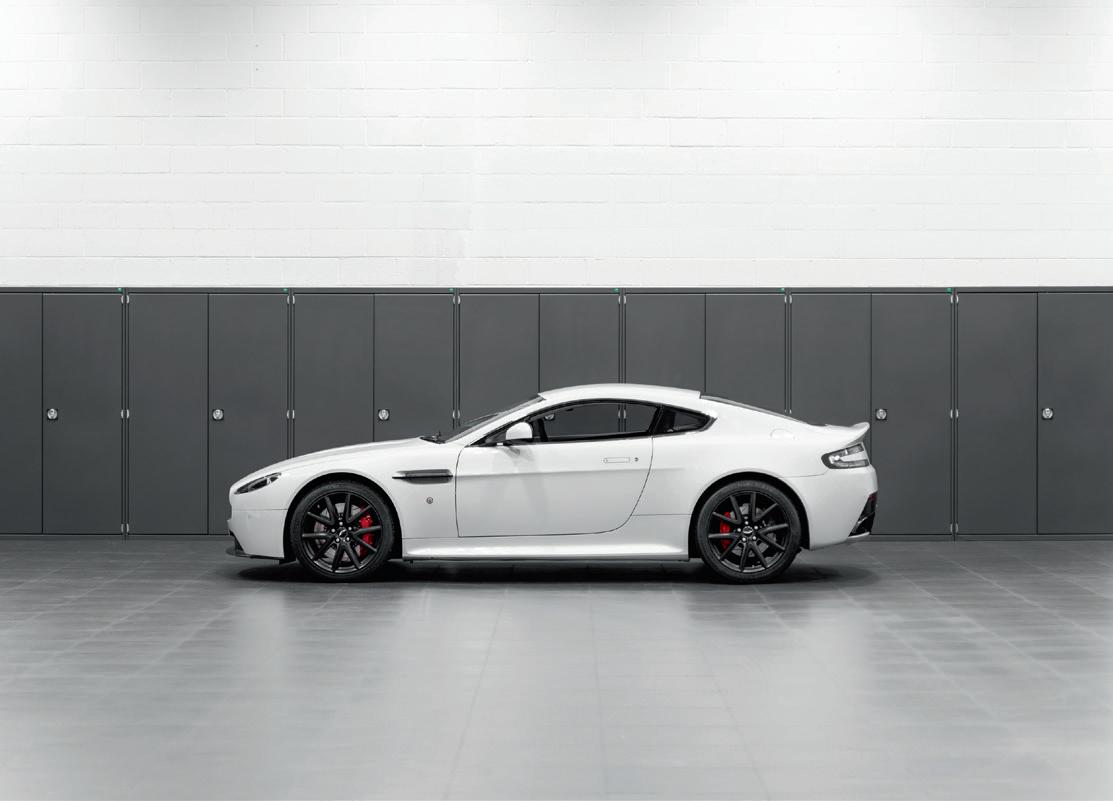
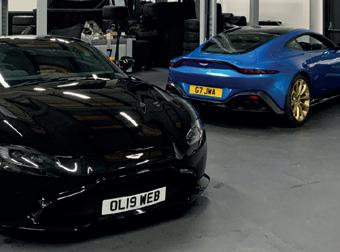
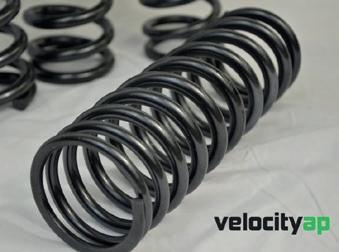
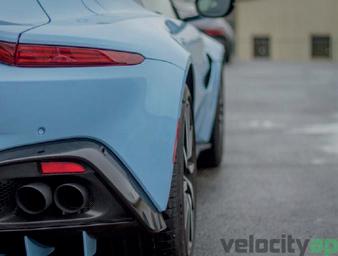


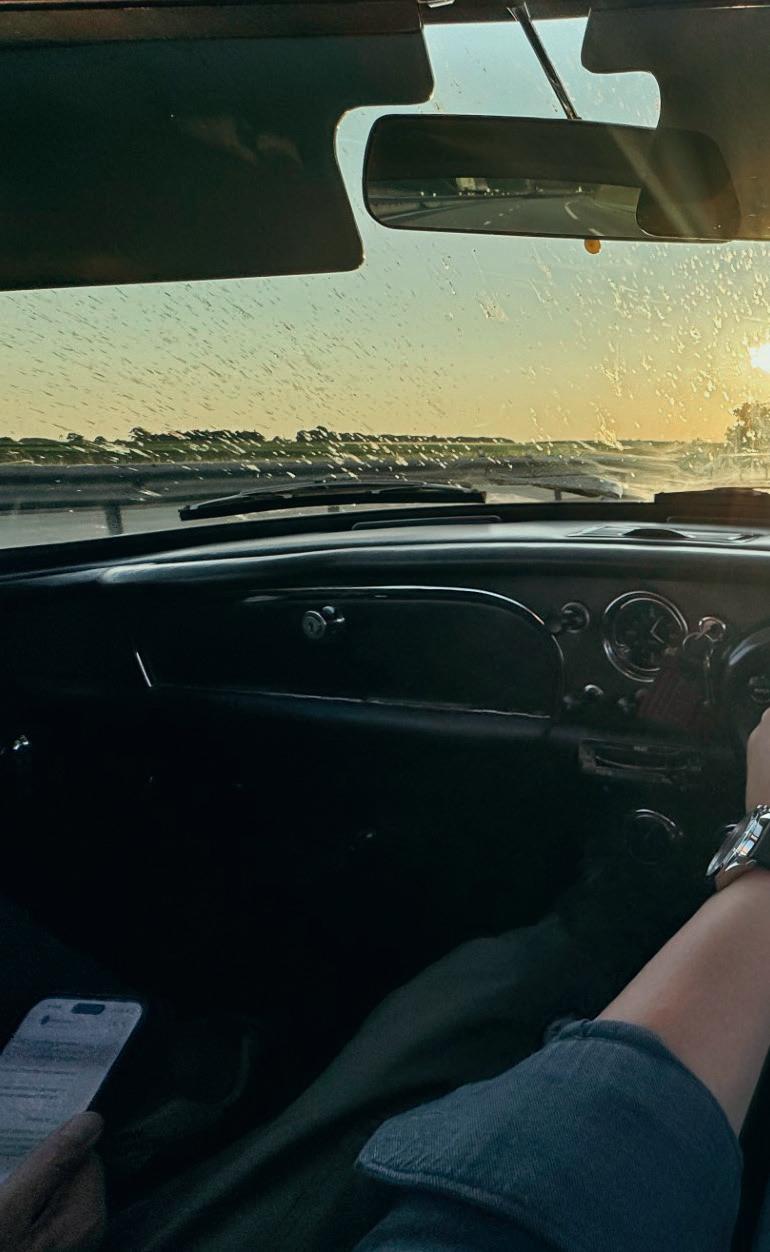
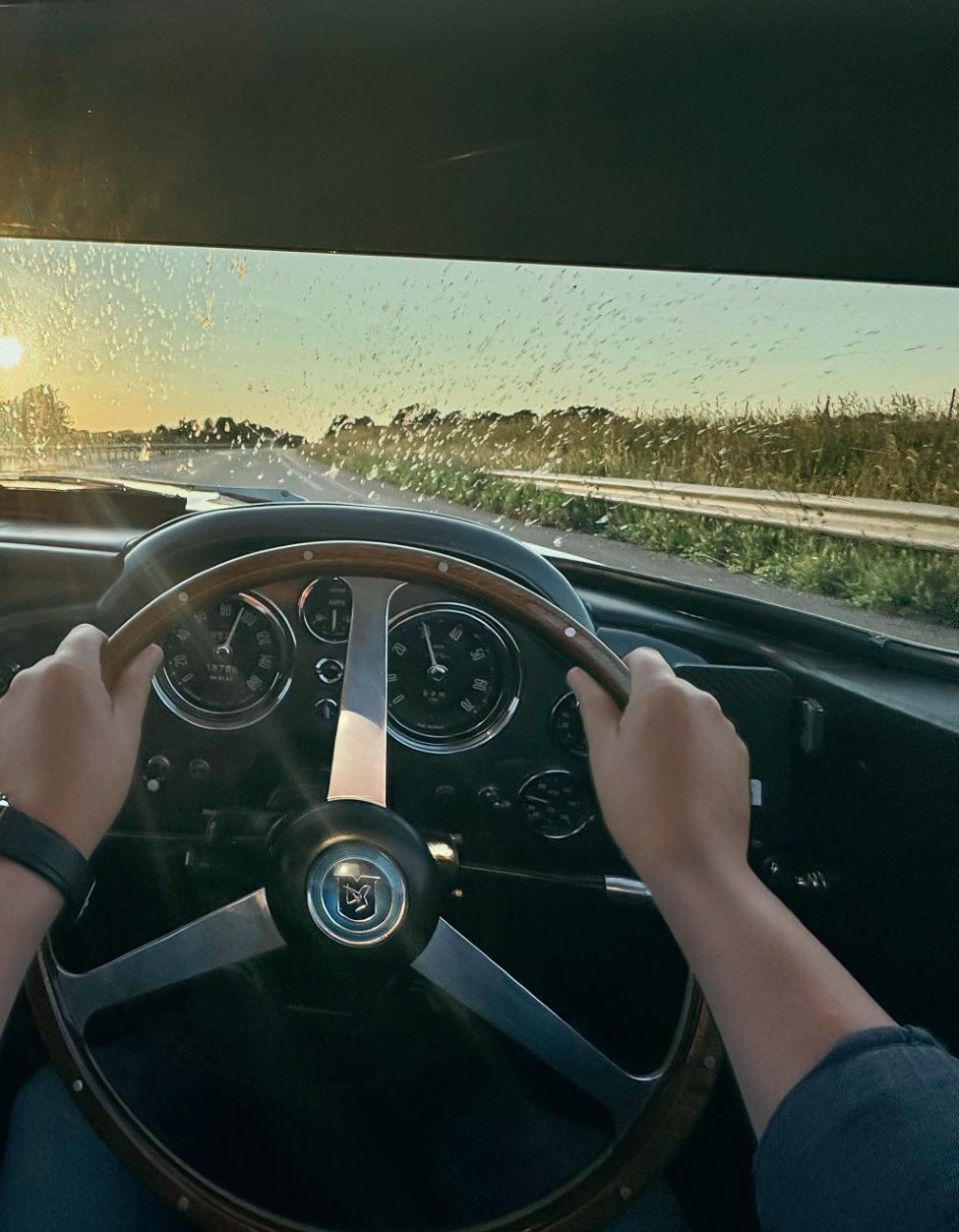
The pilgrimage to Le Mans is all the sweeter if you’re lucky enough to travel in a DB4 GT. Combine that with Aston’s return to the top flight of endurance racing and you have the makings of a road trip to savour
TWO PUMPS OF THE THROTTLE PEDAL AND A TWIST OF THE dinky ignition key dangling from the dashboard is all it takes to spark the DB4 into life. It’s a short but sweet ritual. One that has you uttering a Hail Mary to the wizards of Weber carburetion and making a pact with the dark princes of Lucas wiring, but it’s all smiles once you have Tadek Marek’s masterpiece at the command of your right foot.
So begins another trip to Le Mans. It’s a journey I’ve done many times over the years, the first way back in 1991. For the last few I’ve made the trip with my good mate Rob, who just happens to own a rather lovely DB4 and isn’t afraid to use it.
Some of you might recognise Rob as the proprietor of Singer Vehicle Design – the US and UK-based reimaginers of aircooled Porsche 911s. What you won’t know is that alongside his high-profile obsession with Zuffenhausen’s most famous export he’s rather partial to old British metal. Especially cars that hail from Newport Pagnell.
We’ve known each other for years, having first met back in 2011 when I travelled out to California to drive the first Singerrestored 964-generation 911. Since then, we’ve become firm friends, separated by 6000 miles but united in our love of old Astons. A few years back when Rob decided he was going to fulfil a lifelong dream and buy a DB4, I said I’d help him find one. Then, once he’d taken the plunge, I said I’d help him find good people to look after it. And so began my surrogate guardianship of 479 WAR.
WAR was first registered on 21 October 1960 – the same week the DB4 GT Zagato was unveiled at the London Motor Show.
479 WAR started life as regular DB4 before being rebodied and re-engineered to DB4 GT spec. Below: Valkyries and Vantages at pre-race photocall
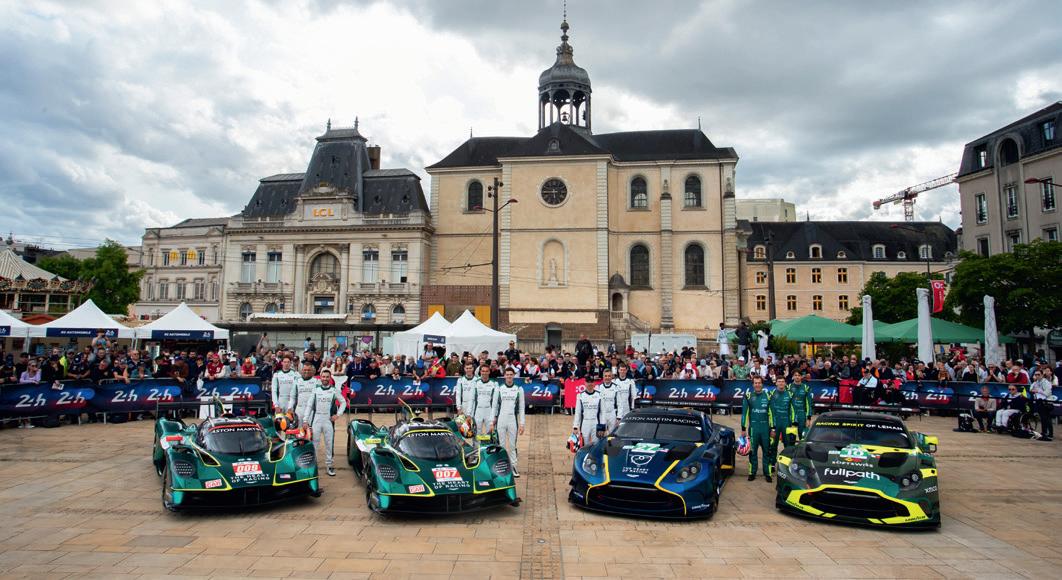
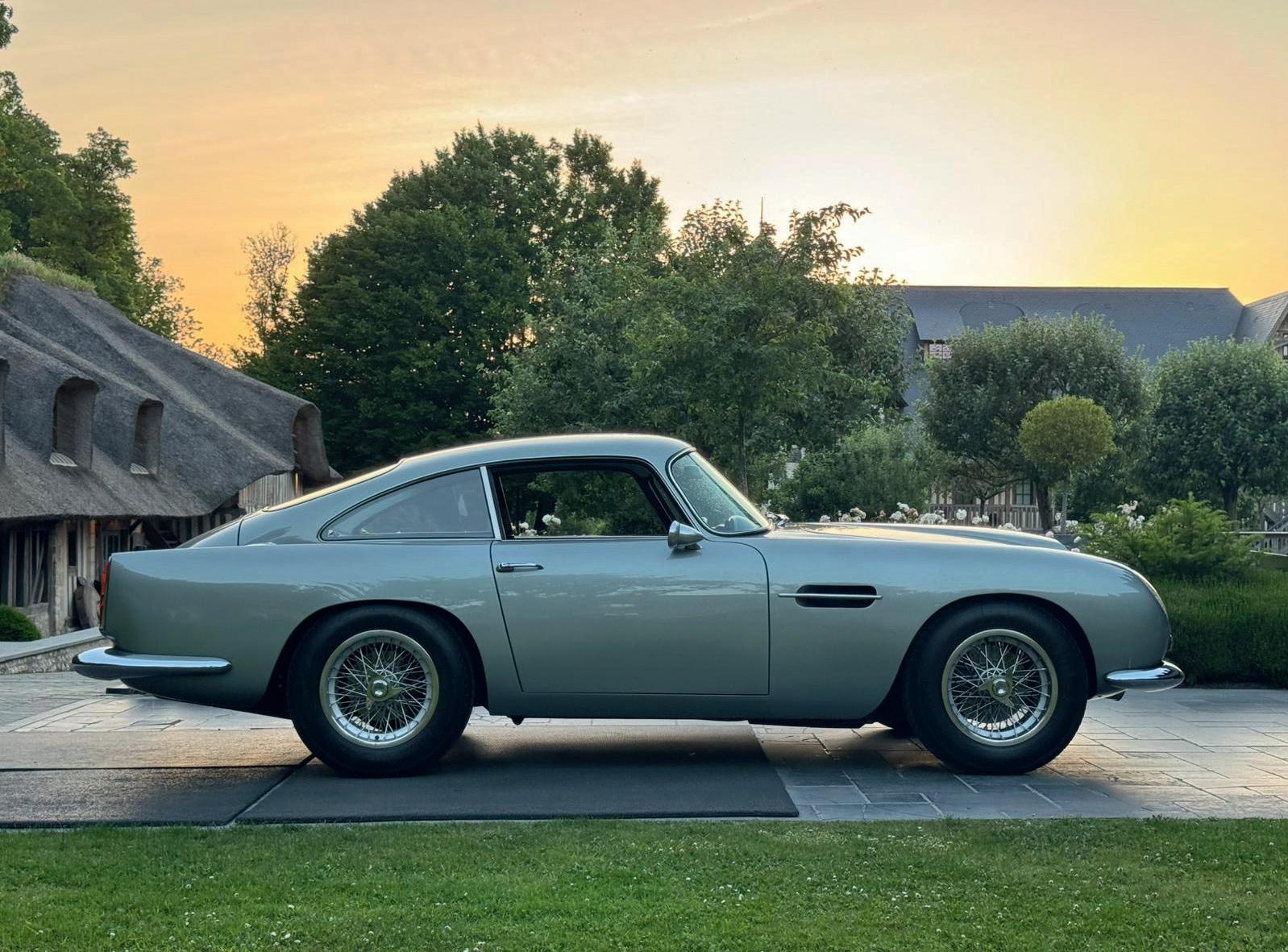
‘I’ve made the trip with my good mate Rob, who just happens to own a rather lovely DB4 and isn’t afraid to use it’
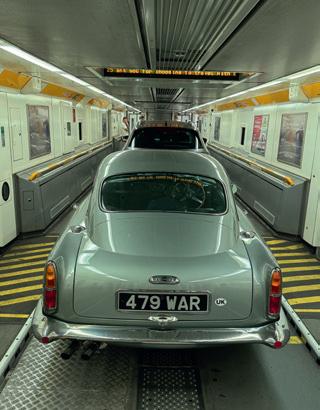
‘If you’re driving to Le Mans in an Aston, there’s one place you simply have to visit’
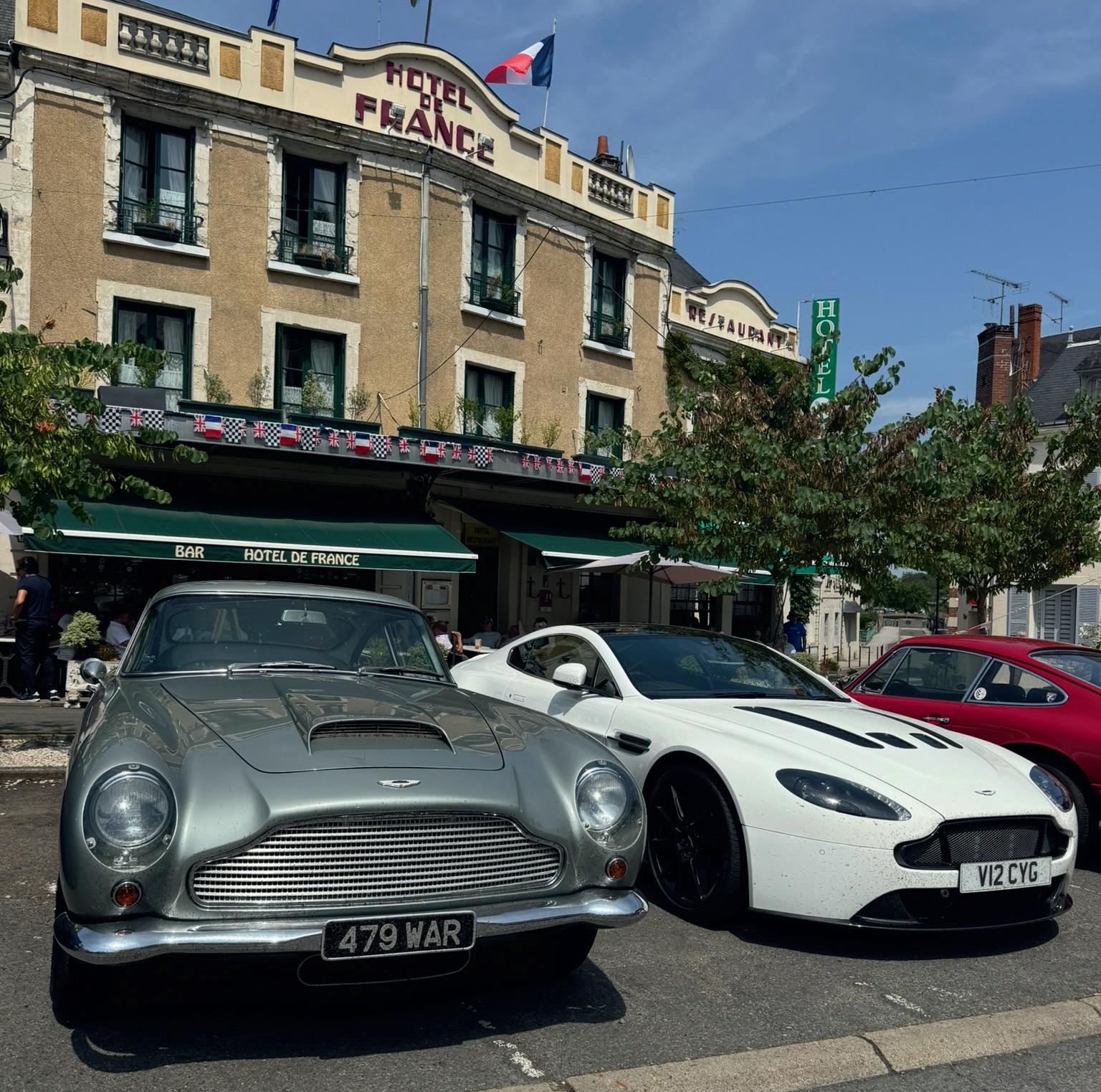
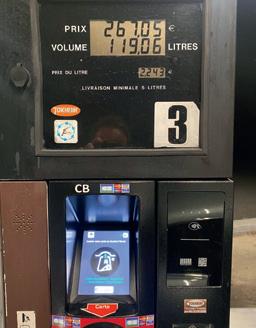
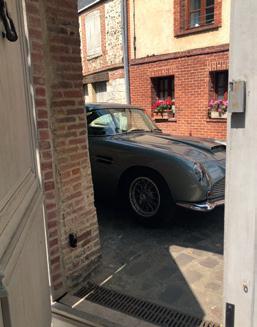
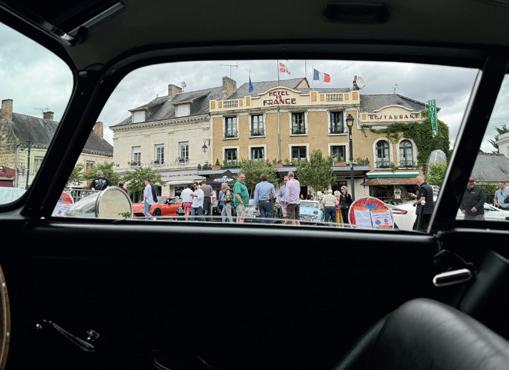
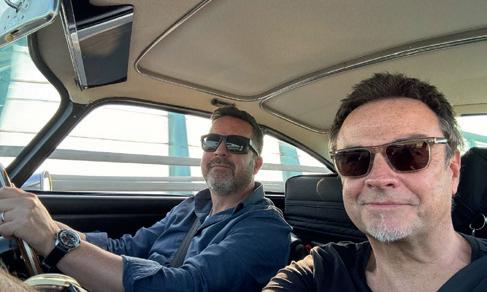
This must have been a time of mixed emotions at Newport Pagnell, with the euphoria and pride of that victorious ’59 racing season replaced by David Brown’s pragmatic decision to withdraw from front-line racing to focus on building (and selling!) the Series 2 DB4.
WAR’s story is unusual, in that it was restored to DB4 GT specification 20-plus years ago by Bristol-based Aston specialist Goldsmith & Young. It was a proper job, with bodywork handled by Bodylines and the paintwork done by Spraytech. John Goldsmith – a noted Aston racer and preparer – did the rest, including the engine, which he enlarged to 4.2 litres, built with the correct twin-plug cylinder head and those aforementioned Weber carbs.
WAR also benefitted from a few non-standard upgrades during its transformative restoration, foremost amongst them servo-assisted brakes and an overdrive for the four-speed David Brown gearbox. These might make purists a bit sniffy, but for Rob – a true hot-rodder at heart – these protorestomod tweaks were a positive bonus.
Having driven a number of original GTs over the years, I can confirm that the tweaks neither dilute nor corrupt the roadracer character but greatly improve the driving experience and – crucially – WAR’s usability for big-mileage adventures; something Rob is always keen to undertake whenever he gets the chance to visit the UK.
Placed into the expert hands of Derby-based Aston Engineering, WAR is kept in fine fettle by the ever-patient and ridiculously knowledgeable Gary Williams. He’s also been instrumental in implementing a steady stream of Dickinsonled upgrades that have added further driveability.
One of the first jobs was to fit an EZ power steering system, with variable assistance and the ability to switch it off altogether. It’s made a huge difference to WAR’s wieldiness, especially when engaged in the cut-and-thrust of urban driving, but also on fun country roads. Retro-fit airconditioning has proved more of a challenge, but related work to line the floor and firewall with heat-reflective material has helped manage the prodigious heat-soak generated after a few hours’ enthusiastic use.
Every one of our Le Mans missions begins the same way: a quick trip up to Derby to collect WAR from pre-LM24 prep followed by a spirited two-car convoy back to Meaden Towers. We then give WAR a respectful wipe down, fill her with superunleaded (not the work of a moment with a GT-spec 30-gallon tank!) and go to sleep knowing that the next day we will be loading our bags onto the luggage deck and heading south.
The journey to Le Mans is one of my favourite road trips. Not because it includes any epic roads (quite the opposite, in fact) but because it’s the one time in the year when you
know you’re part of a mass petrolhead gathering. Much like the race itself, it’s a mission.
Encounter any interesting car at any point between leaving home and boarding the Eurotunnel or ferry and you can be pretty certain it’s heading for the same destination. Once in France it’s even more obvious as an average of 250,000 Brits converge on the Circuit de la Sarthe.
This being a magazine dedicated to Aston Martin, I’d love to suggest that the British love affair with this great endurance race is due to the early efforts of ‘Bert’ Bertelli and his generous investors, who bankrolled the marque’s first forays to Le Mans in the late-1920s. Instead, and through gritted teeth, I’ll concede it was Bentley that forged our bond with the race by winning the second-ever LM24 in 1924 before taking four back-to-back wins between 1927 and 1930.
Still, as a lifelong Aston Martin enthusiast it’s my duty to contend that no other sports car marque can claim to have been active across so many eras. With 2025 marking the 97th year since Aston Martin first raced at Le Mans, it’s remarkable to think that factory or privateer-entered Astons have taken the start in every decade bar the 1990s.
Ironically my first LM24 was back in 1991 – the year Mazda won with its shrill rotary-powered 787B. I missed seeing the mighty AMR1 Group C cars race by just a few years, but Le Mans immediately got under my skin. So much so that I returned every year during the ’90s, witnessing Peugeot’s sensational V10-powered 905 score an emotional win in ’92 followed by an extraordinary mic drop 1-2-3 the following year. In ’94 I watched Jochen Dauer, Porsche and Team Joest pick everyone’s pockets with the sneaky 962 LM ‘road car’. Then, in ’95, I watched McLaren score the last outright win for a truly streetderived race car. I was even there when Peter Dumbreck flew into the trees in his Mercedes CLR in ’99. Half a lifetime ago, but burned in the memory.
The more times you ‘do’ Le Mans the more you come to realise that you are going to see history made before your eyes. You’re rarely sure what it will be, and sometimes the significance of what you witness only becomes clear with the passage of time. But being able to say ‘I was there’ is a big part of the draw.
This year was different, in so much as whatever the outcome we knew the race would be remembered for the Valkyrie making its Le Mans debut. Rob and I were going anyway –Singer is a sponsor of Cadillac Hertz Team Jota – but knowing
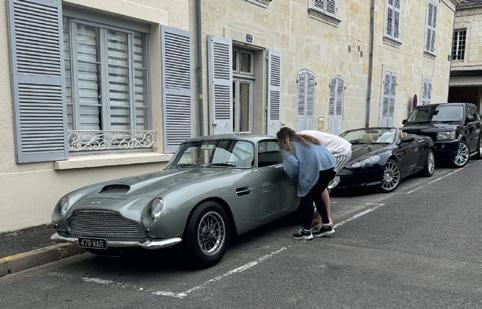
Below: the most welcome sight after a long, hot day on the road. Below right: rubbing shoulders with a Le Mans hero of an earlier era. Right: sight and sound of Valkyries was something special

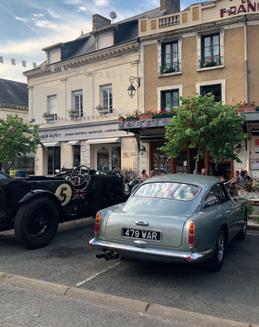

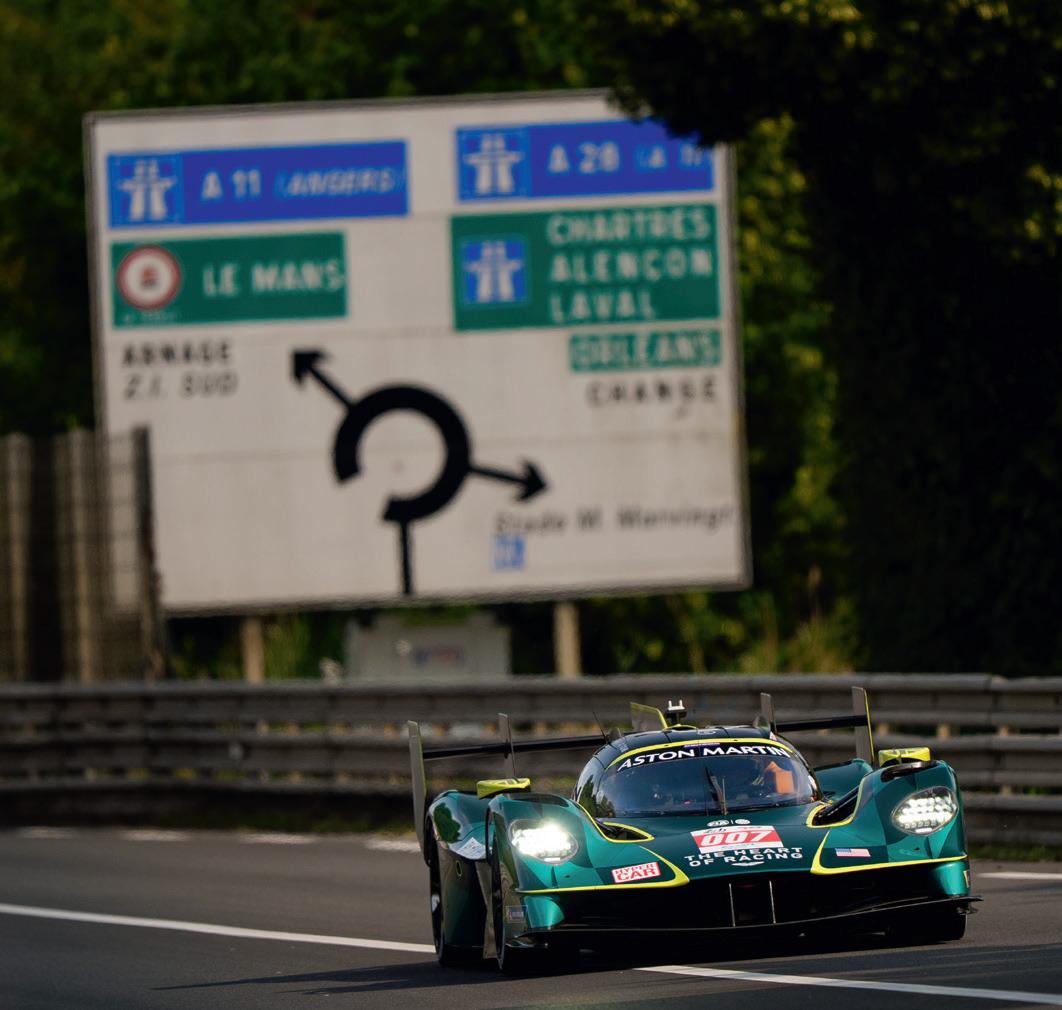
‘Along with the hard-as-nails Cadillacs, the Valkyries are amongst the best-sounding cars I’ve ever heard at Le Mans’
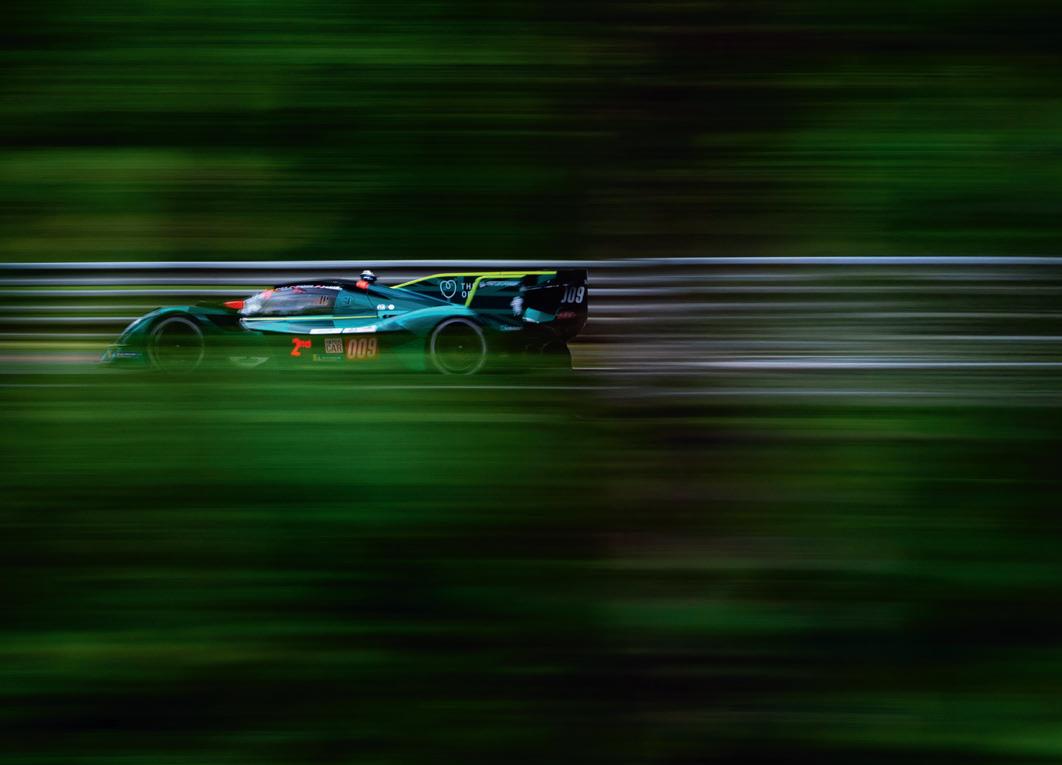

‘All wailing engines, gunshot upshifts and daggers of dazzling light slicing into the darkness. It’s magical stuff’

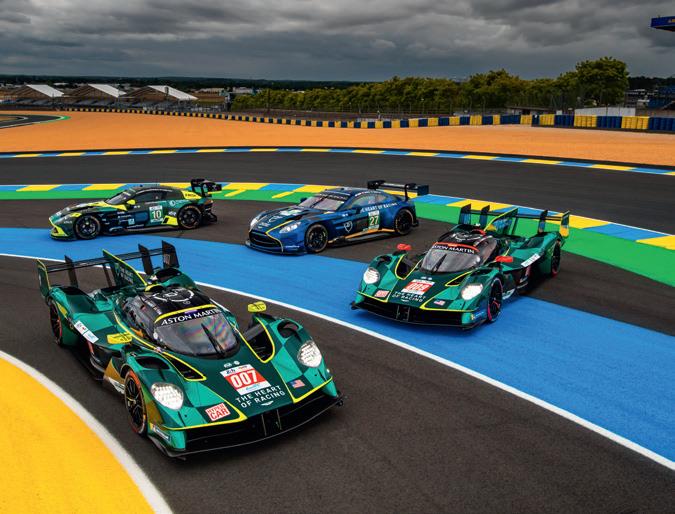
that the Valkyries – run by The Heart of Racing (THOR) – were representing Aston Martin in the top category, along with Vantage LMGT3s run by THOR and Racing Spirit of Léman in the production-based class, made travelling out in WAR seem even more meaningful.
As you might imagine, a DB4 GT is a fine way to travel. Noisy and a bit fumy (you get used to arriving at your overnight hotel smelling of petrol) but being immersed in such a machine for hours at a time is really rather wonderful. Even the run to the Eurotunnel feels special; M11, M25 and M20 all dispatched with an ease you simply wouldn’t credit a 65-year-old car could deliver. Overdrive is a boon in this respect, a pull of the dashmounted Bakelite switch taking the sting out of fourth gear’s rpm once settled at WAR’s period-correct cruising gait.
The first few times we made the trip we’ve headed down the coast and stopped in Rouen, which has strong motorsport connections and happens to be roughly halfway between Calais and Le Mans. But on more recent trips we’ve aimed for the picturesque medieval port of Honfleur for a Wednesday night stopover at La Ferme Saint Siméon and a shindig with the rest of the Singer contingent.
Caked in a thick crust of dead bugs and with the rear bumper slightly blued from the heat of the exhaust gases, WAR looked fabulous parked outside reception. He rather disgraced himself by leaving a few drips of oil on the pristine slate flags when we left next morning, but I think we managed to style it out.
No matter where we’ve stayed on Wednesday night, Thursday sees us complete the journey to Le Mans. More often than not we’ll swing by Arnage to have a wander round the car show that’s held in a parking area a stone’s throw from the main strip. Amusingly, though we’re not part of the event we always manage to arrive and park amongst the other cars on display. But then I suspect a Snow Shadow Silver DB4 will get you in pretty much anywhere.
If you’re driving to Le Mans in an old Aston there’s one place you simply have to visit. You guessed it, the Hotel de France. Home from home for many British race teams over the decades – most famously Aston in its victory year – this wonderful place has seen a revival in recent years thanks to the efforts of proprietor Martin Overington and wife Felicity.
Being exceptionally jammy individuals, Rob and I have become regulars. WAR has become something of a fixture, too, parked outside in the square amongst the other visiting machinery. The atmosphere is just about perfect. After an invariably hot afternoon’s drive on blissful French N-roads, the first cold glass of Pelforth is absolute nectar.
Thirst-quenching beer aside, Hotel de France’s role as a muster point for British Le Mans fans is something of a phenomenon. You know you’re staying in the right place when Derek Bell and Jacky Ickx are fellow guests. It really is the nicest feeling to sit outside and watch the world go by knowing you’ll reconnect with friends made here in previous visits. Perhaps more than the racing, this is the true spirit of Le Mans.
Oh yes. I nearly forgot. The race! Way back when I first used to come to Le Mans, I’d endure the clammy hell of nights under canvas, or simply sleep in whatever car I’d driven out in with my mates. Once at the circuit we’d stay until the bitter end. This raw dog approach undoubtedly connects you to the relentless cadence of the race, but a diet of merguez, Kronenbourg and very little sleep is a young man’s game.
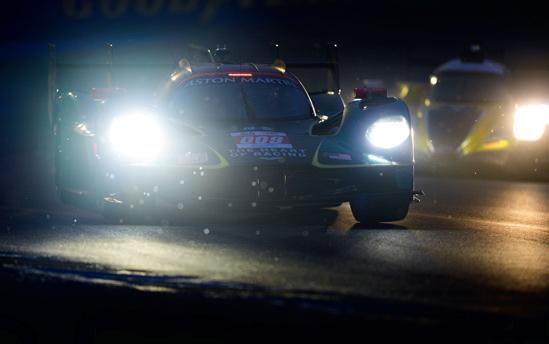
Remarkably for their first Le Mans, both Valkyries finished the race; next year they’ll be hoping to challenge for a podium place
I’m not sure the twentysomething Meaden ever imagined spending an enjoyable early-afternoon drive from La Chartre sur le Loir in a DB4 GT and arriving at the circuit in good time for the start. Likewise, the notion of wandering round to some favourite viewing points to see darkness fall before heading back to the Hotel de France for a few late-night drinks and a good sleep in a comfy bed would have seemed like the soft option. The fiftysomething Meaden is pleased to confirm it’s a very agreeable arrangement.
Hope springs eternal at Le Mans. Especially where storied British marques are concerned. Yet in truth 2025 was always going to be a learning year for the Valkyrie. Being in its first season means THOR has been climbing a near-vertical learning curve. To complicate matters, being the only non-hybrid in the Hypercar class means the World Endurance Championship’s infamous and somewhat murky BoP (Balance of Performance) system needs time to find the best way of helping to achieve performance parity across the class. The speed will come.
There’s no question the Valkyries look and sound the part. Crowds were ten deep surrounding the cars on the pre-race grid walk. And once the race starts the lithe, angular shape and tense, prickly note of the high-revving naturally aspirated V12 are in stark contrast to the rest of the grid. Along with the hard-as-nails Cadillacs, they are amongst the best-sounding racing cars I’ve ever heard at Le Mans.
Where the quickest cars look suckered to the circuit, the Valkyries seem a little skittish, their traction control systems hacking away more noticeably as drivers ride the kerbs and chase the throttle from apex to corner exit. Still it’s a fabulous sight, especially when they’re flying in close formation, all wailing engines, gunshot upshifts and daggers of dazzling light slicing into the darkness. It’s magical stuff.
Remarkably, despite this being the Valkyrie’s first Le Mans, both cars complete the race with a minimum of drama. The quickest of the pair finishes 12th, two places ahead of its sister car. It’s a long way from the glory days of 1959, or indeed Aston Martin Racing’s epic back-to-back GT1 class wins in 2007 and 2008, but there’s no question this was an invaluable foundational effort. One that gives the team something meaningful to build upon for 2026 and beyond.
THOR will certainly be determined to show more pace next year, as it’ll need to if Aston Martin is to compete with the might of Alpine, BMW, Cadillac, Ferrari, Genesis, McLaren, Peugeot, Porsche and Toyota. It’s a monumental challenge. One the team is clearly ready to confront, and Aston Martin fans are only too happy to support. Same as it ever was.
THE SCALE OF THE CHALLENGE OF A 24-HOUR RACE ONLY really hits when you attend in person. Perhaps after you’ve watched the chaotic start, trekked for hours to find the perfect place to watch the cars in battle, grabbed some dinner and a few drinks and caught up with old friends in the dead of night as best you can over the din of the V8s and flat-sixes.
Eventually you’ll have to submit and head back to your hotel or campsite for some much-needed sleep. Woken by the sun or an alarm, you’ll need a shower to shake-off the fatigue. And then you realise… the race has ten hours still to run. At least once, across the brilliant, befuddling weekend that is Le Mans, you’ll quietly ponder: ‘Whose stupid idea was this?’
I see it from a different side now, working on the live broadcast. Yet every year this thought still occurs to me at least once. Usually when I’ve just arrived back at the circuit at around midday, having finished my last shift at 6am. Slumped in the production office, I’ll grab copious coffees and catch up on events from colleagues, WhatsApp groups and websites: who’s leading, which cars have dropped out and who’s bestplaced to push for victory in the coming hours.
But this year, there’s no need to ponder if the Valkyrie’s first attempt at Le Mans has come to a premature end. I can hear them, Cosworth V12s shrieking and undimmed. No wonder fans care more about Aston Martin’s race than the dominant Ferraris out front.
No question, if Aston Martin’s new Hypercar programme is viewed simply as a PR exercise, they’ve already won. But it isn’t. I’ve seen up close through the WEC campaign how desperate they are to compete and, ultimately, win. There have been moments of encouragement, too. The Valkyrie has proven to be reliable and fast… just not quite fast enough. And as the whole package is being optimised and looking more stable, predictable and easy to handle, the lack of that final bit of pace is starting to eat away a little more at the team. Nobody talks Balance of Performance (they’re literally forbidden from doing so by the FIA), but it’s clear Aston Martin feel they are ‘paying their dues’ before being unleashed as time goes on.
Even so, the team is in upbeat mood when I arrive at La Sarthe on the Tuesday before the race. The high-speed nature of the track should suit the Valkyrie, and two or three team members talk openly about ‘pushing a top ten finish’. In a race featuring three Ferrari 499Ps, four Porsche 963s, four Cadillac V-Series.Rs and a pair of factory cars each from BMW, Alpine and, of course, Toyota, that seems a huge task. Beating the slightly hapless Peugeot operation seems a

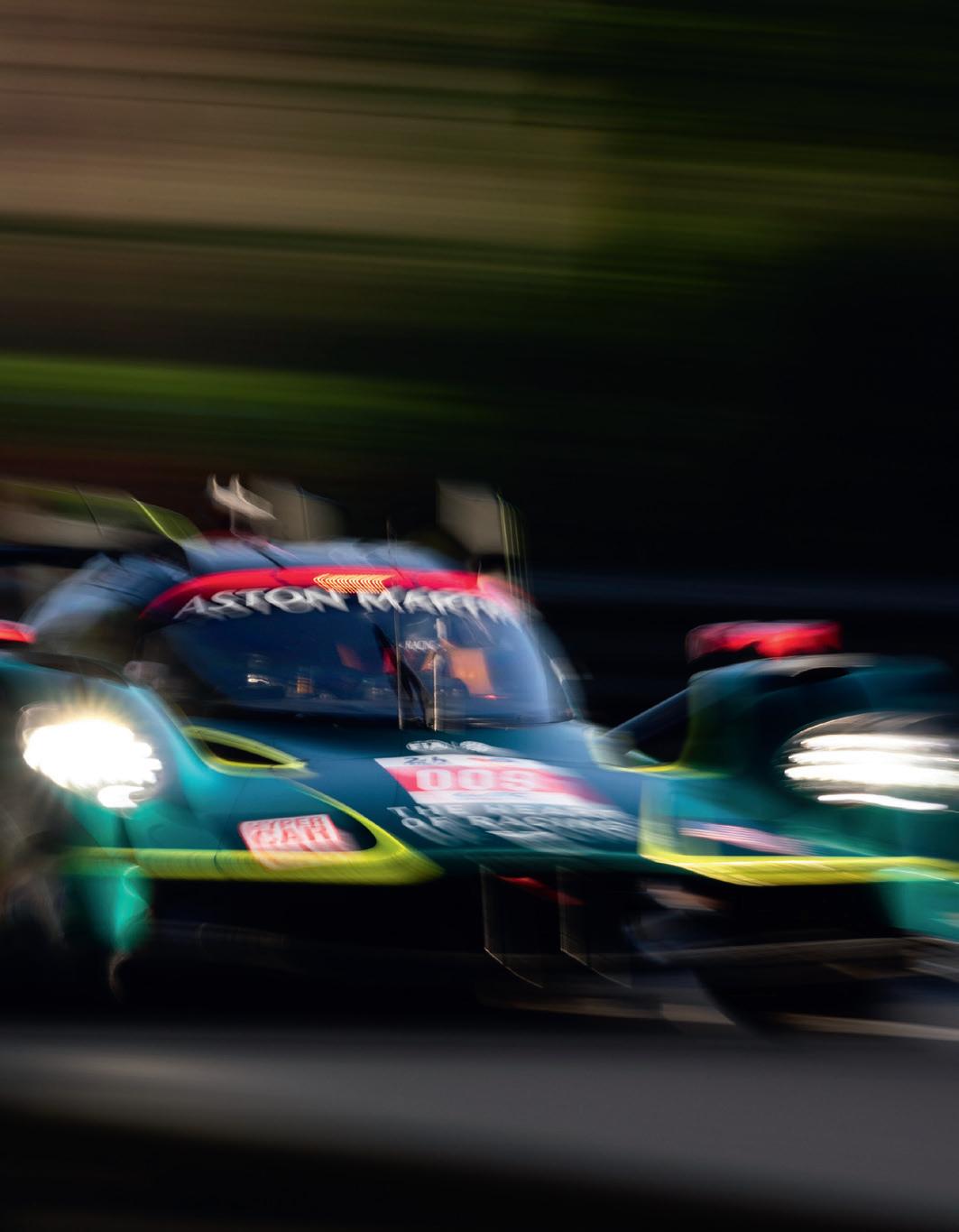
Part of the Eurosport/TNT commentary team, Jethro Bovingdon saw Aston Martin’s Le Mans unfold at close quarters. He assesses the Valkyries’ performance and what comes next for the team
realistic goal, but the rest of the field is just mighty.
In the end it isn’t to be and the contrasting fortunes of crew 007 and 009 in qualifying highlight the reality of competing at Le Mans with an unknown entity. Harry Tincknell in 007 is the slowest of all the hypercars with a 3.26.349 (in the same session a Cadillac just snuck into the 22s) and is dejected. ‘The cars are on completely different paths,’ he explains. ‘Which we need to do, right? We’re learning a lot. But we’re not compliant enough, we can’t get the power down and that affects how much power we can run as we’re spiking on the kerbs.’ In WEC the cars run torque sensors as part of the BoP and hence short bursts of wheelspin can show as exceeding the limits. Ford had similar problems with their Mustang GT3 car in its first season, too. If you can’t cure this with set-up you have to back away from the maximum power allowed by your individual BoP to stay within the limits.
By contrast, Marco Sørensen in 009 is over the moon. His Valkyrie breaks into the 3.24s and makes it into Hyperpole 1 (for the top 15 fastest Hypercars). A grid position of 15th ahead of both Peugeots, the reigning world champions Toyota and two Porsche 963s is borderline miraculous. Sørensen is a cool customer and in typically understated Danish style he simply says, ‘I’m very happy.’ With a long, hot race ahead and all manner of dramas, bad luck and mechanical failures a possibility, surely that top ten finish is on the cards…
As it turns out, there are no real dramas. No sudden downpour, multi-car pile-up (thankfully) or engines grenading themselves. In fact, not much of anything happens except a series of very fast race cars circulating cleanly, efficiently and staying out of trouble. The whole ‘first you have to finish’ mantra is not really relevant in 2025. Of the entire Hypercar field there are just two retirements (both Cadillacs run by USbased IMSA outfits) and one disqualification for a noncompliant rear wing.
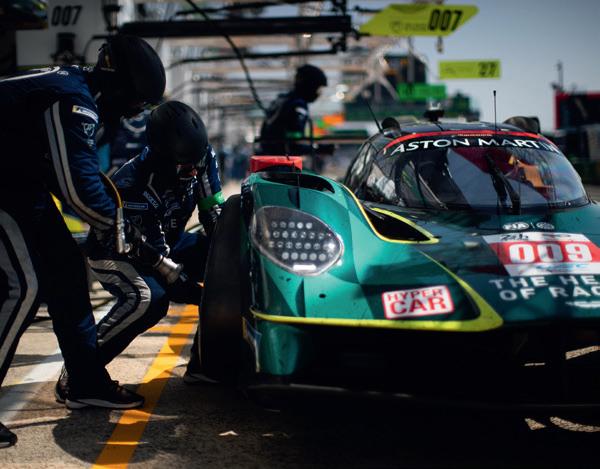
Above and below: apart from routine stops for fresh fuel, tyres and drivers, the pit crews had a pretty quiet race: both Valkyries ran near faultessly
‘The Valkyrie has proven to be reliable and fast… just not quite fast enough’
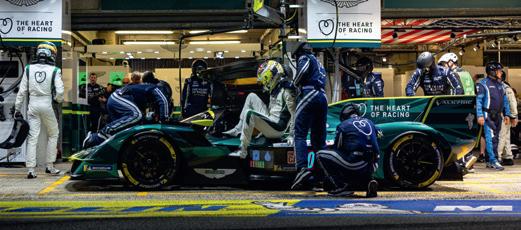
The biggest drama for the pair of Valkyrie AMR-LMHs is a slow puncture for the 007 in the first hour of the race... yet even with a near-faultless run and strong pace the remarkable lack of attrition just keeps Aston Martin outside of the top ten. The 009 car of Sørensen, Alex Riberas and Roman De Angelis comes home 12th, with the 007 of Tincknell, Tom Gamble and Ross Gunn in 14th. Still, world championship points on debut at Le Mans in arguably the strongest field in its entire history is pretty amazing.
It’s elating to bring both cars home and show such resilience in this gruelling race, but perhaps slightly galling that such a clean run didn’t bring an even stronger classification. ‘It’s a great result for the team,’ begins Adam Carter who heads-up Aston Martin’s endurance racing programmes. ‘A huge milestone for the Valkyrie programme, too. We come to Le Mans because it’s hard and we want to race the best in the world and we’ve seen some great performance from other competitors. But what’s satisfying for me is that now we’re in the 1-per-cent game – the performance needs improvement but it’s marginal gains. We’re racers and want to finish further up, but I’d say we’re satisfied. Everybody should be immensely proud. Can’t wait to be back next year…’
Even just minutes after the race has finished this over-riding compulsion to look ahead is shared by the exhausted drivers. ‘I mean, what a feeling,’ grins Alex Riberas. ‘To finish the 24hour race here in Le Mans at our first attempt, and without a single gremlin – no mistakes, no problems at all with the car, the pit crew or the drivers. Everybody did a phenomenal job. So it’s very, very positive, but we have to keep working. This is just the beginning.’
Ross Gunn perhaps speaks for the entire team as he reflects on the race amongst the celebrations in the garage. ‘There were times in the race where we could really live with some of the midfield,’ he beams. ‘It was great fun battling throughout the night. You know, we do this sport because we are passionate about it. We live and breathe every second. Today really reminded me why I am a racing driver. To be back at this place gives me goosebumps. So let’s do it again next year and push to be even more competitive.’ Music to the ears of tens of thousands of Valkyrie fans, who will be praying for a V12 alarm call next June at as day breaks on Sunday.

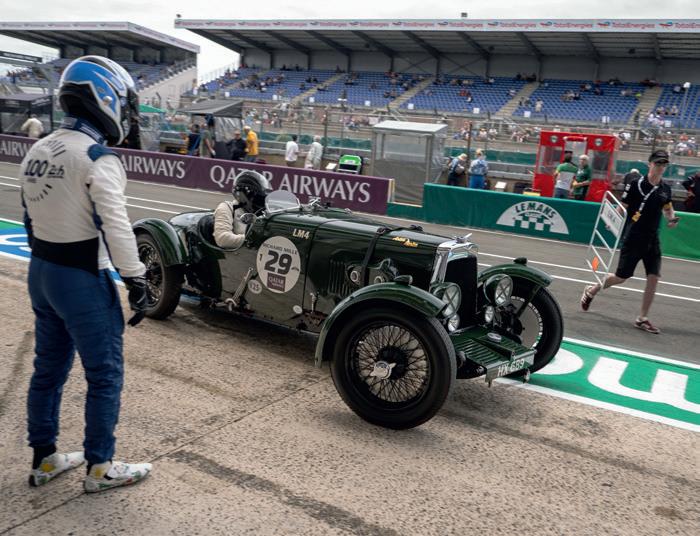
Darren Turner is best known for racing modern Astons, so sharing the 1930-vintage ‘LM4’ at Classic Le Mans with its novice owner was a real leap into the unknown, as the following extract from a brand new book reveals
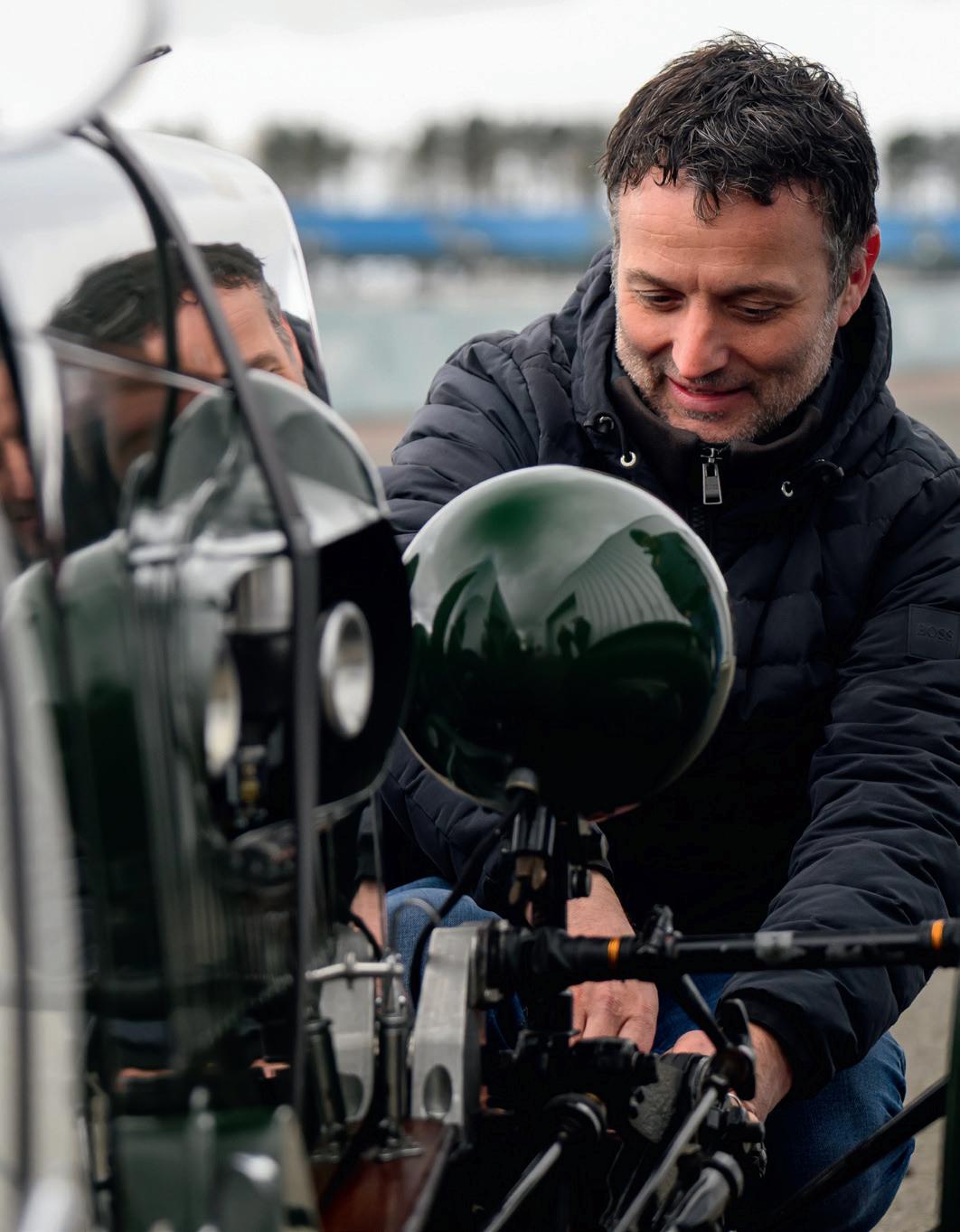
FFEW, IF ANY, PROFESSIONAL RACING DRIVERS OF THE LAST 25 years or so can claim to have a longer and more storied working relationship with Aston Martin than Darren Turner.
The self-effacing 51-year-old has piloted pretty much every road and track-going car of note that Aston Martin has ever produced, working both as a competition racer and development driver for the marque.
With a sweep of driving achievement than spans multiple Le Mans class wins to refining the dynamic capabilities of the brand’s first hypercar, if anyone knows what an Aston Martin is truly capable of, it’s Darren.
If, though, there was a weak point in his Aston Martin experience it would, undeniably, have to have been his pre-war Aston activities which, until the arrival of LM 4 into his life in 2021, had consisted of, in his own words, ‘a few laps around Silverstone with Robert [Blakemore, the pre-war Aston specialist] in something that Ecurie Bertelli were running. I can’t really remember…’.
In some ways it’s not entirely surprising that his pre-war experiences had been so limited: with a veritable cornucopia of post-war delicacies to enjoy – from the DBR1 to the Valkyrie – even making time for meaningful pre-war activity would have been tricky. Let alone having access to cars that were suitably prepared for track work – which, of course, is where Turner not only earns his living, but is also most at home.
But at a post-Covid Aston Martin F1 filming event at his ‘home’ track – Silverstone – he spent an extended period of time in a couple of pre-war cars, including LM 4, alongside Robert Blakemore once again, and, this time, things changed. He explained: ‘It was really nice, actually, because I jumped in
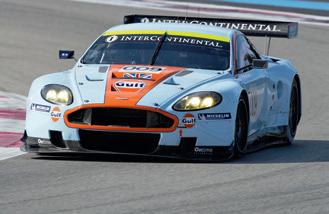
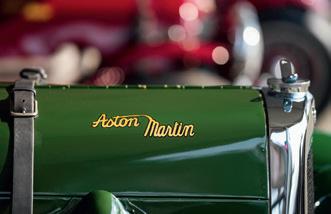
with him [Robert] driving, and he made it look so effortless. Then I had a go, and I made it look so difficult. It’s all to do with the gear shifts and so on. I remember thinking “OK, he could teach me to drive the car, and I could teach him to drive the circuit”. That’s what I got out of that.’
With his interest in pre-war cars firmly piqued, the next step on the journey towards LM 4 came in the form of a meeting with the car’s current custodians, Jonathan Lupton and Katie Sharman. ‘I was invited to drive at a private track day at the Stowe Circuit [an Aston Martin facility within the Silverstone complex] and LM 4 was there. I think it was Jonathan’s first time driving the car, and I said: “I’ll come down and have a proper go – see if I can get my head around the gearbox a bit more.”
‘At the end of the day, Jonathan asked: “Would you consider racing LM 4?” and in my head I said “no”, but what I said to him was: “Let me have a little think about it.” So I went home and had a think, and chatted to Katie [Mrs Turner] because obviously my wife has seen these races, and I said, “I’m not sure I want to bloody race it. It just looks dangerous. They look… dangerous!” but I decided in the end that my role with Aston Martin means I should be engaged with everything. Even if it might not be naturally something I’m interested in, I should put a corporate hat on and get going – I need to be engaged with whoever wants that engagement. So that was the beginning of the adventure.’
With a financial proposal supporting his involvement accepted by LM 4 owners Jonathan and Katie, the next realisation for Turner was that he would also be coaching ‘gentleman driver’ Jonathan.
‘Obviously the modern-day tools for teaching people –VBOX data logger and all that – was all missing from a pre-war.
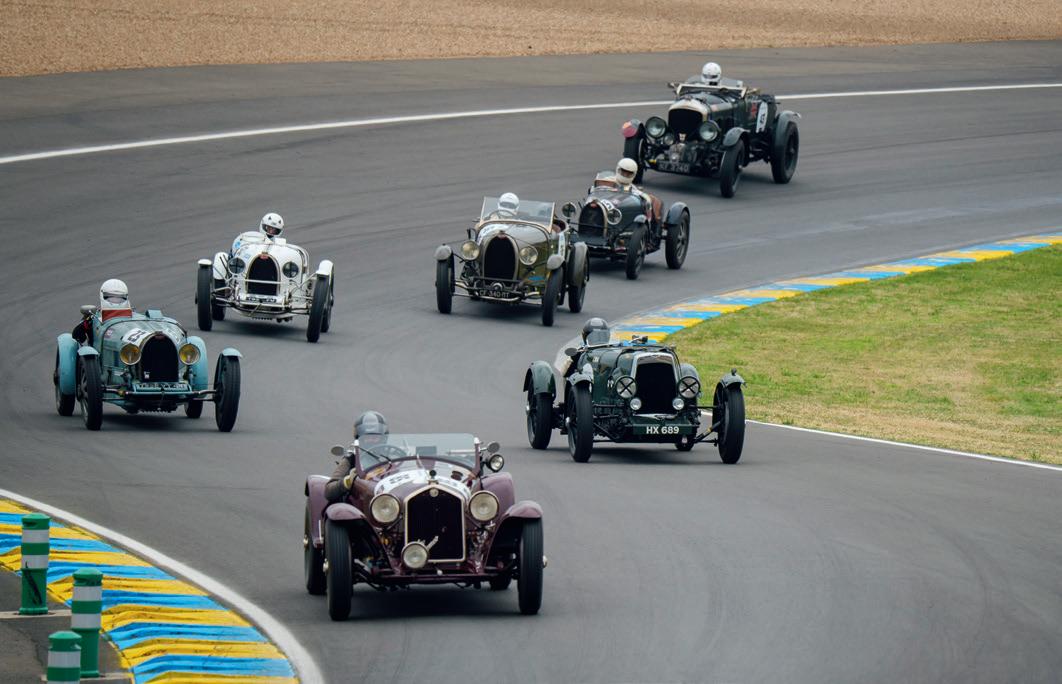
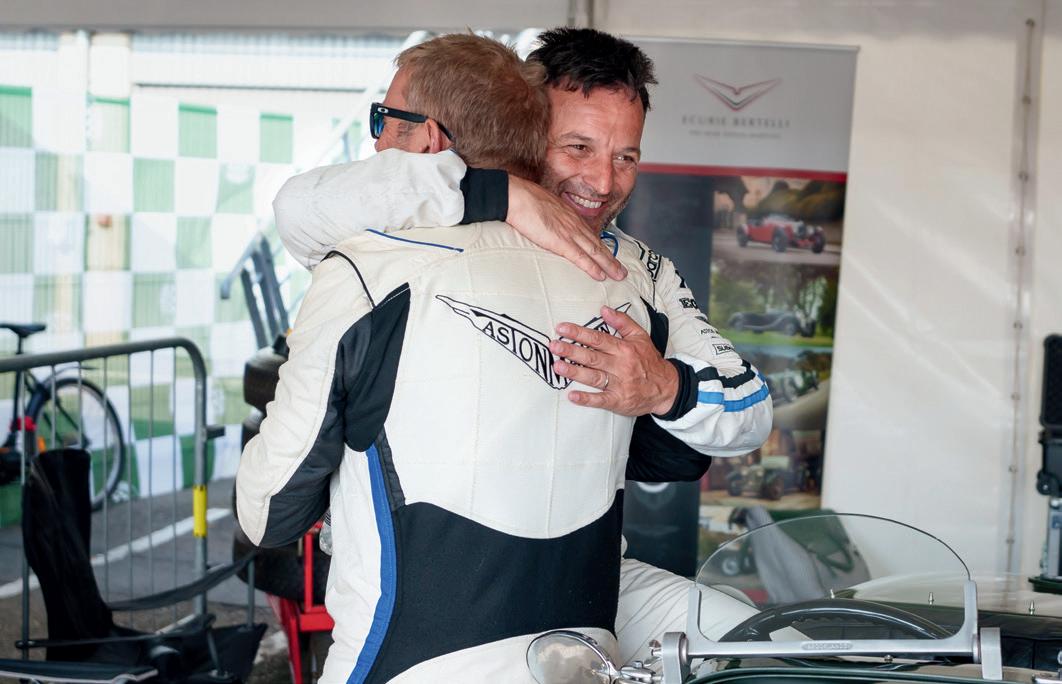

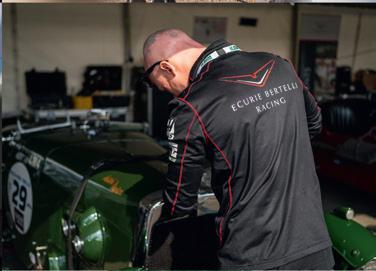
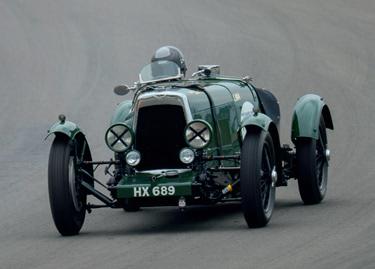
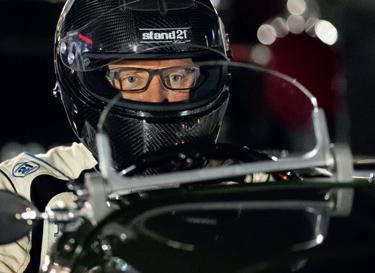
Totally focused: owner Jonathan Lupton prepares for his LM stint.
Opposite: Turner returning LM4 to the paddock, lights blazing
We didn’t have any data, so it was very hard at the beginning to do much coaching as such. We put a GoPro on the car quite early, and as Jonathan was coming from zero experience, even track position coming up to a corner could be an issue – early on he could be completely in the wrong place.
‘But considering the amount of “seat time” he’s had since then – which is very little, relatively speaking – he’s done a very good job with the mileage he’s acquired over these two years. He’s not had any major issues. OK, he’s had a couple of spins, and he’s only had two bits of racing contact, so he’s kept it very clean throughout, which is absolutely vital – even more so in a pre-war car, obviously.’
By way of context, Turner uses some real-world numbers to illustrate Jonathan’s remarkable progress in just two short years of racing: ‘I think the first time we raced the car at Silverstone on the Grand Prix track, Jonathan was nearly a fourminute lap, and I was a three-minute lap: the gap was huge. But the last time we did it, which was Silverstone Festival this year [2024], Jonathan’s best time was three minutes and seventeen seconds, so it was like, “Yeah, OK: that’s in the window. That’s what I’m expecting the difference between me and where Jonathan should be.” So it has only taken him two years to get to that point in his racing journey, and that’s with really quite limited seat time.’
Alongside the development of Jonathan as a driver, the development of LM 4 itself (or ‘herself’, if you subscribe to the naming of cars) has been quietly and diligently carried out, in a respectful manner, as the car’s modern-day racing career has progressed. This development has been critical to Turner’s ongoing enthusiasm for the LM 4 project.
‘The really nice thing about this journey is the fact that there’s been development all the way along to make it [LM 4] competitive. I think we’re all “on the same page”, that’s the good thing. If, for instance, Katie and Jonathan had decided that they didn’t want to touch the car and we were going to race weekends and always coming very low down the race order I would probably have got bored by now. It would have been quite difficult for me to keep motivating myself to go racing only to get a last or second-last, or something like that.’
However, LM 4’s racing success with Darren and Jonathan behind the wheel has been anything but boring. In fact, the tiny LM 4 team that has been created to support the car could not have been more thrilled by their successes to date.
‘The highlight of this car so far for me has definitely been Le Mans Classic in the night, when I was racing alongside a vintage Bugatti for four laps during my little stint, and we just ebbed and flowed, you know? The Bugatti had a bit more straight-line performance but it wasn’t so good on the brakes, and we went back and forth. We were going down the Mulsanne [Straight] looking at each other, giggling away and it was just… magic. I have ended up having some really wonderful experiences just simply being out and driving the car, and that Le Mans Classic was definitely one of them.’
While Turner clearly enjoyed his time in LM 4 at the classic
‘I do keep in mind the consequence of getting it wrong in a car with no seatbelts, no roll cage…’
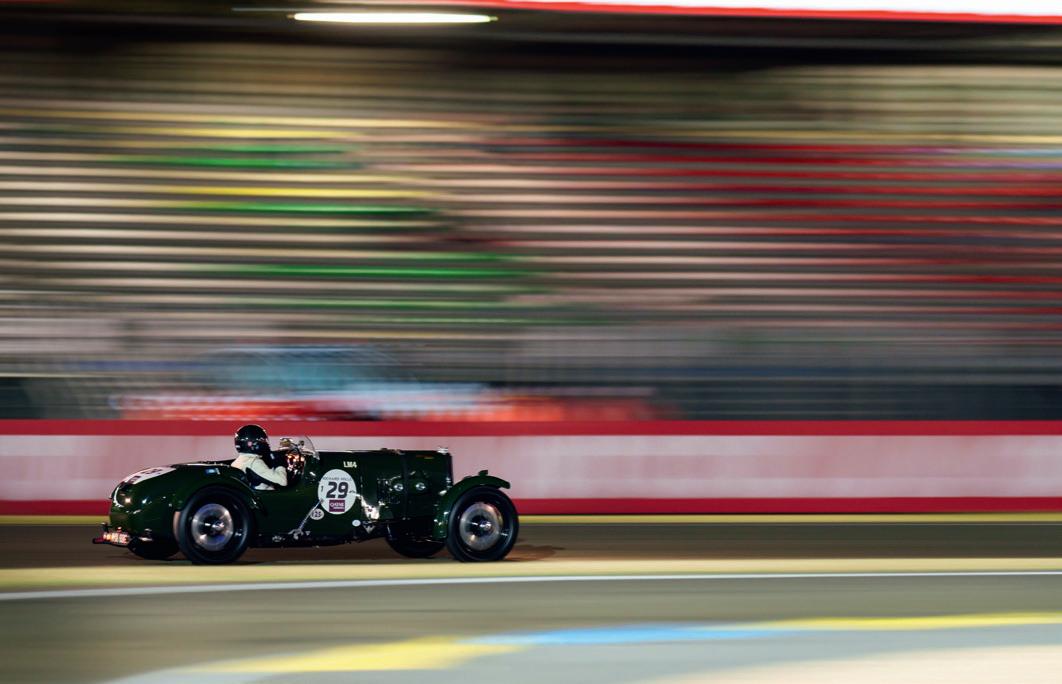
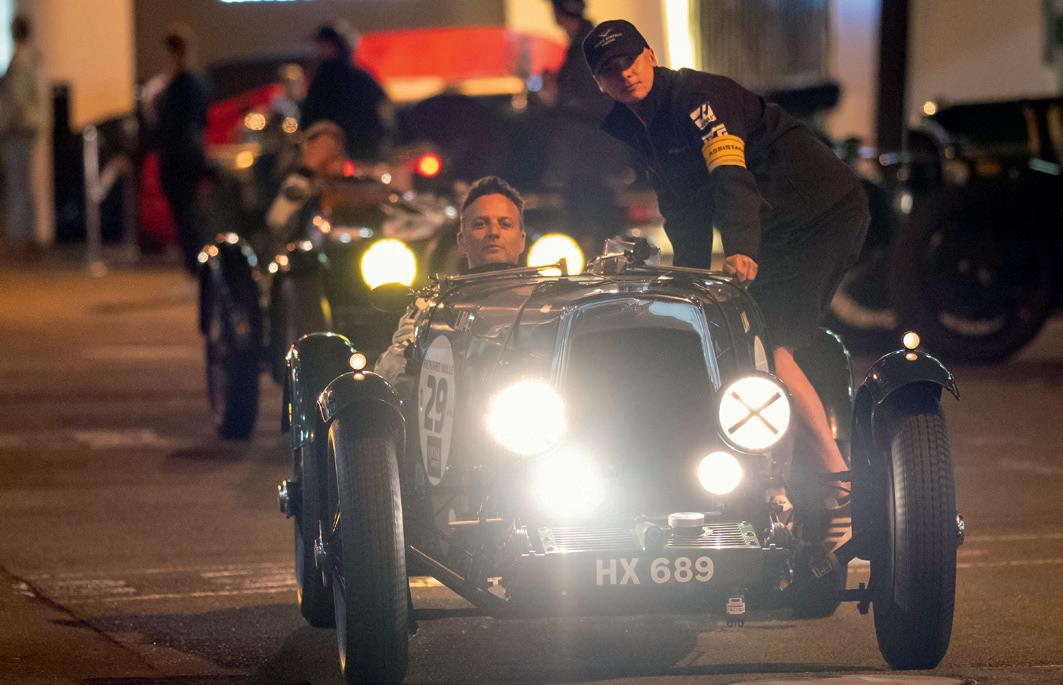
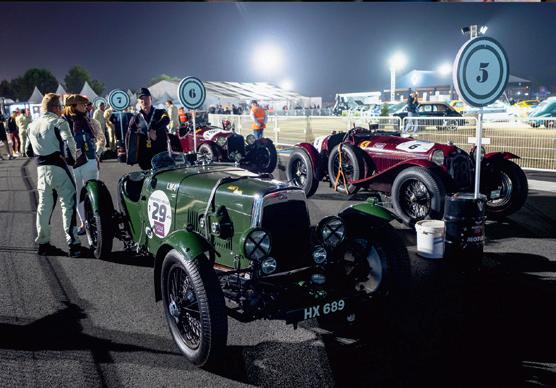
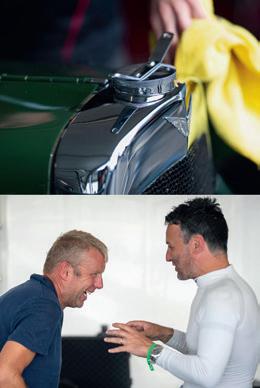
ENGINE In-line four-cylinder, 1495cc MAX POWER 65bhp originally (c100bhp today) MAX TORQUE n/a
TRANSMISSION Four-speed non-synchromesh manual, worm-drive differential, rear-wheel drive SUSPENSION Solid axles front and rear, leaf springs, friction dampers STEERING Worm and castor BRAKES Aluminium finned drums front and rear, rod-actuated WHEELS 20in wire-spoked TYRES 4.50-20 crossply WEIGHT 965kg POWER TO WEIGHT c105bhp/ton 0-60MPH n/a TOP SPEED Over 80mph originally (c100mph today)
French race in 2023, for Jonathan and Katie the event was nothing short of momentous, with a result no one on the LM 4 team could possibly have imagined going into the race. For Turner himself, the 2023 Classic was not least a chance to tick off another experience from his list of landmark motorsport events.
‘It was the first time I’d done the Le Mans Classic and it had been on my list for years. I wanted to do it because whenever I spoke to other drivers they would all say “it’s a magical weekend, especially if you love old cars”.
‘Before we got there I already knew I was driving the DBR9, which is my favourite race car ever, over the weekend in a support race that was topping and tailing the main event, and I just knew I was going to have a good weekend. We had some friends down [at Circuit de la Sarthe], we were running LM 4, I was getting to drive the DBR9 – it was just going to be a good weekend.
‘But I didn’t realise until the day that we had so many cars on the grid, I think it was 89 or something like that – there were a lot of cars on that grid. With that in mind, I thought: “Well, you know, if we come in half way, in the top 40, then that sounds alright.”
‘I knew we weren’t going to be particularly fast on the straight relative to some of the competition, but the main thing was let’s have a good time, make sure Jonathan gets plenty of laps and if I get to drive at night – I really wanted to drive at night – that would be amazing.’
However, Turner’s modest aspirations for the event were quickly outperformed: ‘Jonathan was competitive from the get-go. He was putting in some really good lap times, actually much better than I thought he would that weekend considering how challenging the Le Mans circuit is. It’s a difficult track to learn, so he did a great job. I obviously had some experience there, so I was doing my bit from the word “go”, too. But I certainly didn’t expect us to be in the hunt for a win. The “index of performance” [a complex formula by which cars of differing
ages and cubic capacities are graded in competition at the event] made the difference. It meant it was a huge surprise when we won overall. I didn’t even know they did that! But it was so lovely to see Katie and Jonathan revelling in that moment of victory, and seeing how much they loved the huge trophy that came with the win.
‘Really and truly, it doesn’t get better in terms of expectations of what LM 4 could give. If I go back to that first time driving the car with Jonathan at Stowe, I would have never thought that it was going to lead to us winning our batch at Le Mans Classic just two years later.’
The utterly unexpected victory at what is, perhaps, the premier heritage motorsport event aside, what does Turner now think of his time to date racing LM 4?
‘Well, firstly it gives you a great deal of respect for the drivers of the day. I mean it’s always informed by the standards of the day, of course, and I’m sure they drove these cars back in the day and thought they were perfectly safe but, from today’s perspective, it is really quite something.
‘You can certainly understand why the crashes tended to cause more than a fair share of injuries, or worse. When I drive LM 4 today I do keep in mind that the consequence of getting it wrong in a car with no seatbelts, no roll cage, and hardly any protection around it, could very possibly be serious.
‘But all that said, I have to say that the level of enjoyment I have from just being around Katie and Jonathan is superb. I love the weekends we have – they’re just such great company!’

The above text is taken from a lavish new book on the story of LM4. To purchase a copy, go to www.lm4astonmartin.co.uk V






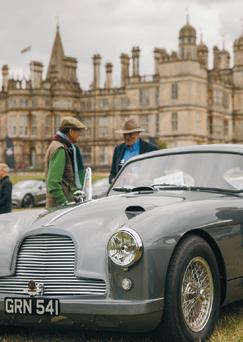
















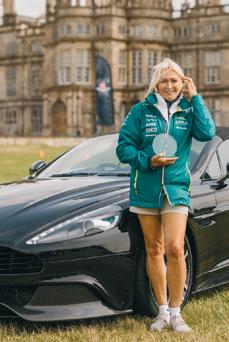
















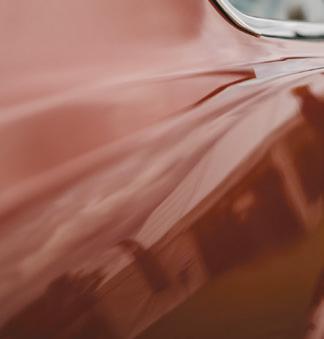







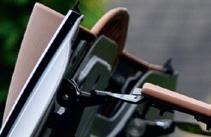


It’s 60 years since Aston Martin launched its first Volante model. We celebrate a remarkable lineage and try the very latest example –the sensational Vanquish Volante
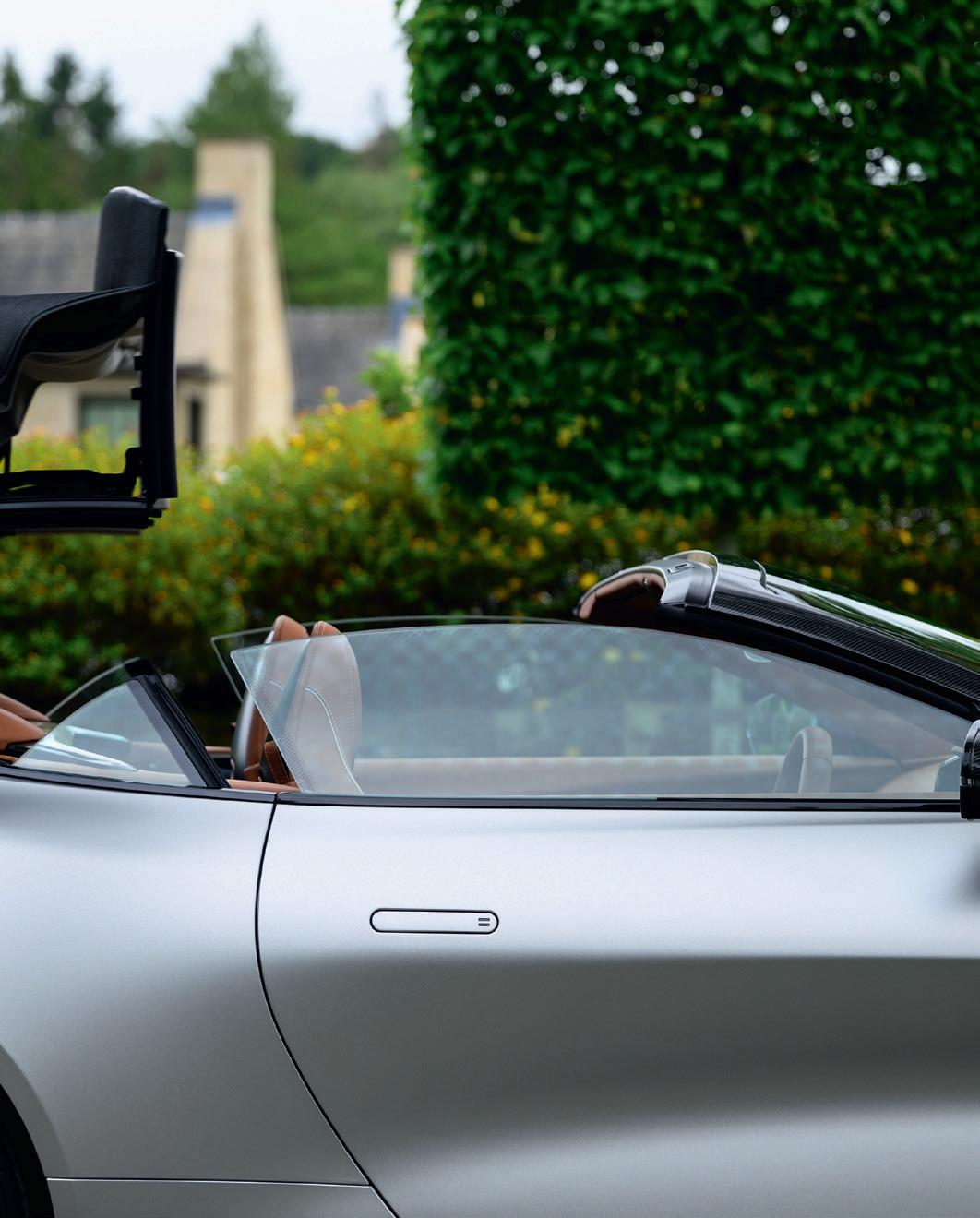
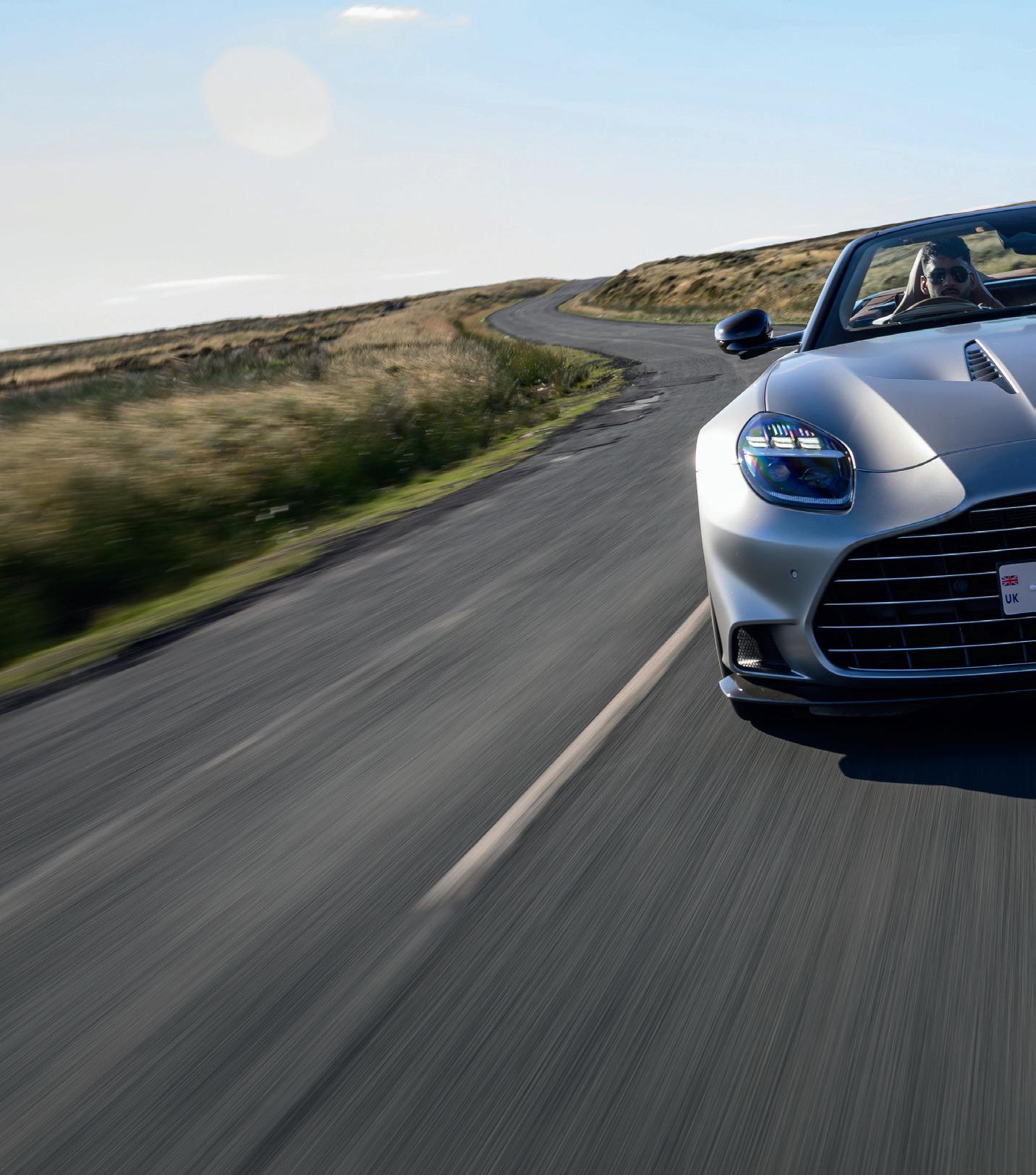
TTHERE’S SOMETHING AWESOMELY BIBLICAL ABOUT THE word ‘vanquish’ that makes it particularly appropriate for bigengined Aston Martins. The press release for the new Vanquish Volante even ends with the portentous phrase ‘All will be Vanquished’, which happens to appear towards the end of Psalm 93 verse 1. It’s good to know that someone on the Aston comms team is keeping up with their Bible studies.
The Vanquish name first appeared on an Aston Martin in 2001. It was powered by a V12, like the two generations of Vanquish that have appeared since, and this latest version does exactly what the name proclaims – or would do, if it were actually displayed anywhere on the coachwork – by generating a massive 824bhp and 737lb ft from its frontmounted, twin-turbo 5.2-litre V12. With a top speed of 214mph and a 0-60mph time of 3.3sec, it is the fastest and most powerful front-engined Aston ever.
‘The press release for the new Volante even ends with the portentous phrase “All will be Vanquished”’
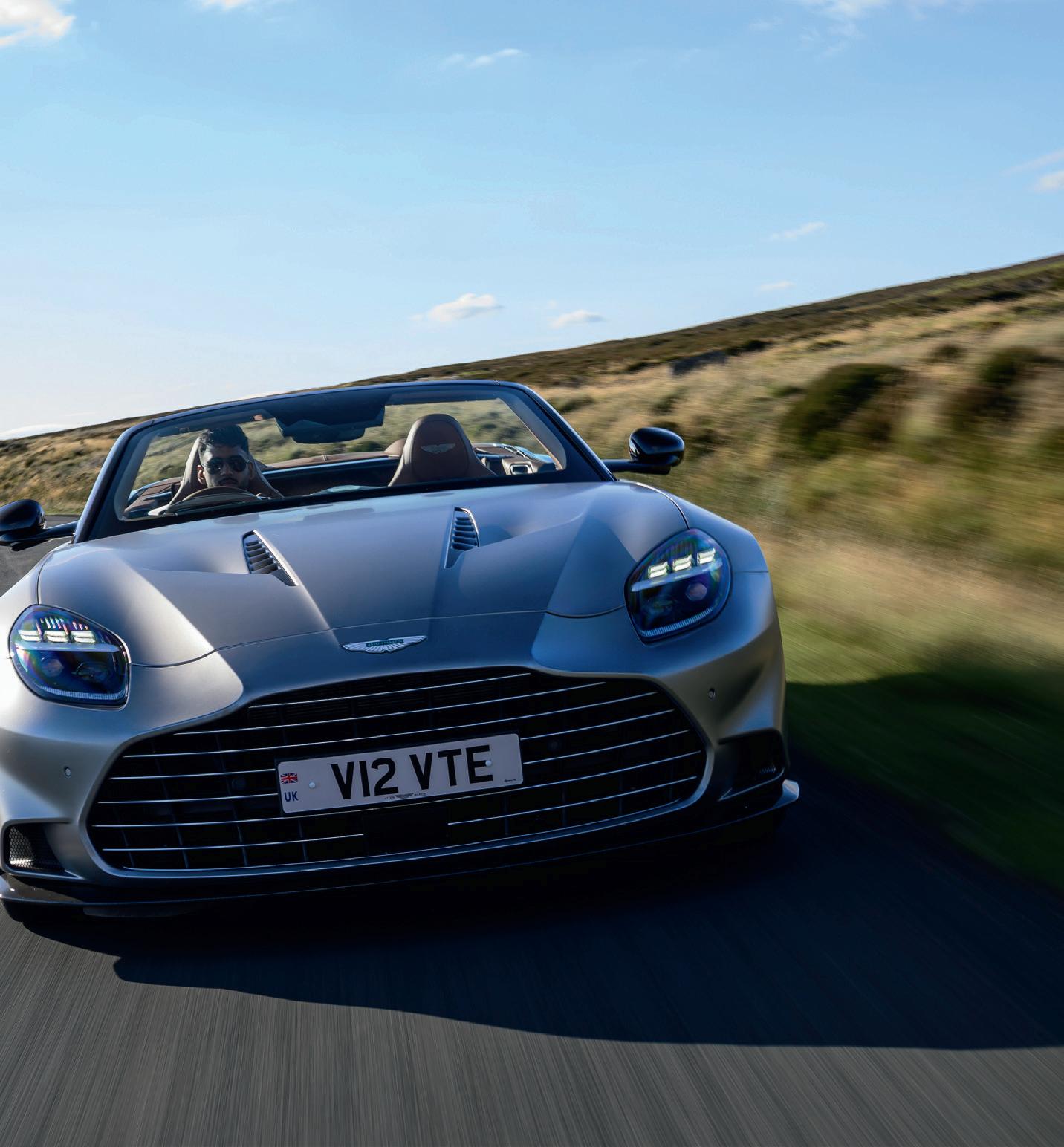

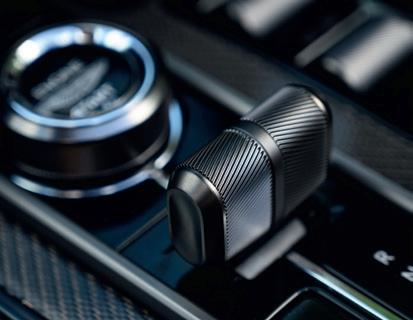

Sculpted lines look great on the move; Volante has lost minimal structural integrity compared with the coupé
Whether by accident or design, when Aston Martin launched the Vanquish coupé last year, it did so a mere fortnight after Ferrari had debuted its new 12 Cilindri – boasting a mere 819bhp and 500lb ft from its naturally aspirated 6.5-litre V12. Aston’s schadenfreude must have been all the sweeter on the September 2024 launch because the star-studded (think George Clooney, Michael Douglas, Kevin Costner…) unveiling took place in Venice, only a couple of hundred kilometres from Ferrari’s HQ.
Friendly rivalries aside, Aston Martin has had a long and rewarding association with Italy, in terms of both styling (Touring, Zagato) and construction (Touring’s Superleggera method). And, of course, in the use of the name Volante for many of its convertible cars, as explored in the separate article that follows. Now we have a new Vanquish Volante, identical in performance to the coupé version but offering the total open-air experience all the way up to 214mph. Invigorating, if not so good for the coiffure.
Unlike in the good old bad old days when convertibles were usually re-engineered as afterthoughts by their makers after the fixed-head version had been introduced, manufacturers now develop them in parallel and so the Volante was designed from the outset to be just as bodily rigid as its coupé sibling. Aston claims the new Volante, bodied in carbonfibre like the coupé, has 75 per cent more lateral stiffness than the DB11 Volante of just seven years ago. There’s a slight weight penalty, the Volante weighing 95kg more than the coupé, and kerb weight is nudging two tonnes – for some reason, Aston only gives the dry weight, which is 1839kg.
So it’s a fairly heavy car, and it’s a large one, too – 2120mm wide across the mirrors, and 360mm longer than a Vantage Roadster. The Vanquish does not do subtlety. Whereas the Ferrari 12 Cilindri’s pointed snout has elegant echoes of 365 GTB/4 Daytona and 1970s South-of-France Belle Vie, the Vanquish’s gaping maw is almost cartoonishly exaggerated, as though it’s on the look-out to hoover up errant children like a whale ingesting plankton. Undoubtedly, the car’s heavily sculpted flanks will make it highly sensitive to colour choice. One of Aston’s two press cars is finished in silver, the other in a very dark blue that looks almost black, and the ideal probably lies somewhere inbetween – perhaps a dark metallic red?
Paradoxically, however, for all its size the Volante does not feel unwieldy. That’s partly down to modern electrickery in the form of an E-differential that can go from fully open to 100per cent locked in 0.135sec and which, when combined with the now-familiar electronic stability programme tech, in the maker’s words has the effect of ‘shortening’ the wheelbase in tighter corners. Certainly, the Volante steers exceptionally well, its wheel having just the right amount of heft and feedback.
Another paradox: for a car so heavily oriented towards performance, the Volante also rides well. Even at lower speeds



‘For a car so heavily oriented to performance, the Volante rides well’

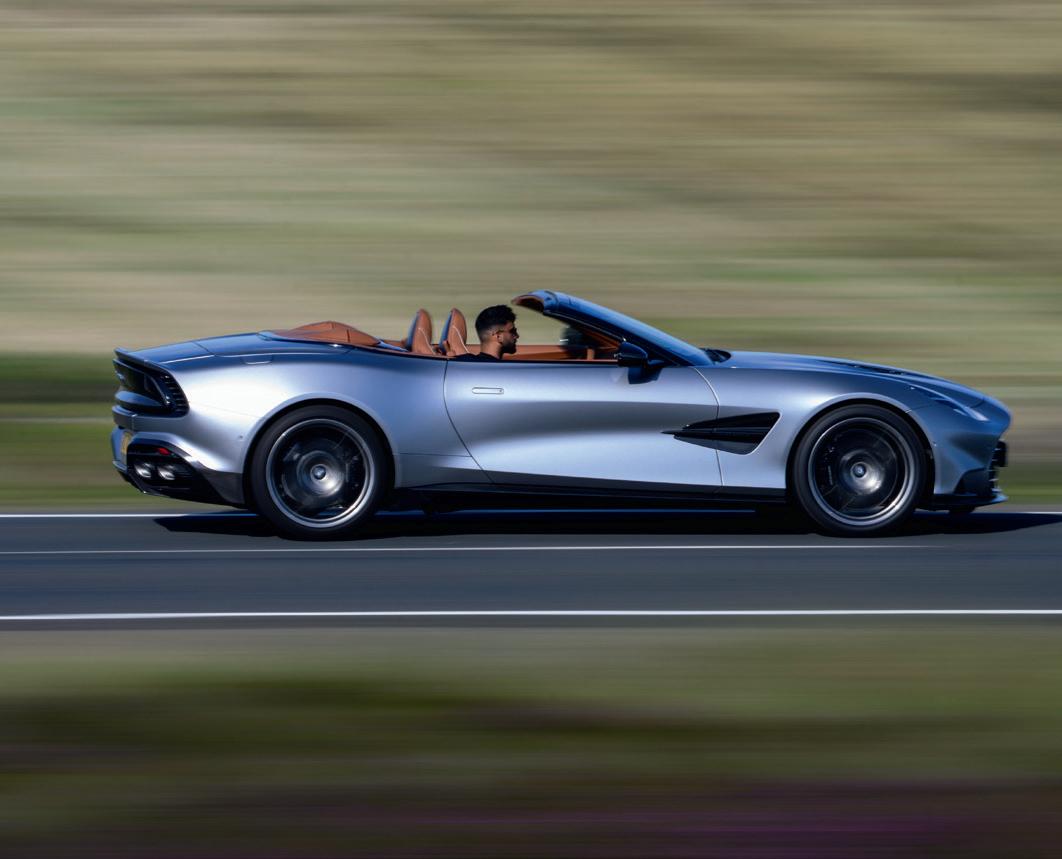

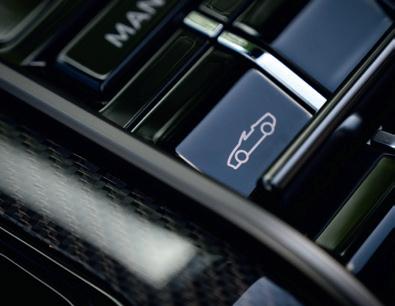
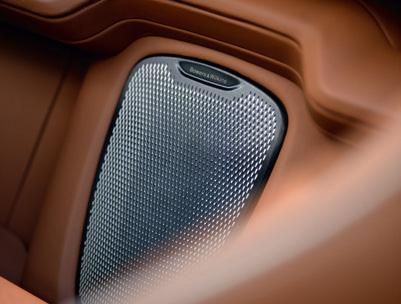
ENGINE V12, 5204cc, twin turbochargers MAX POWER 824bhp @ 6500rpm MAX TORQUE 737lb ft @ 2500-5000rpm TRANSMISSION Eight-speed automatic with paddleshift, rear-wheel drive, E-Diff, torque-vectoring SUSPENSION Front: double wishbones, coil springs, telescopic adaptive dampers, anti-roll bar. Rear: multi-link, coil springs, telescopic adaptive dampers, anti-roll bar STEERING Rack-and-pinion, electrically assisted BRAKES Vented carbon-ceramic discs, 410mm front, 360mm rear, ABS WHEELS 9.5 x 21in front, 11.5 x 21in rear TYRES 275/35 ZR21 front, 325/30 ZR21 rear, Pirelli P Zero WEIGHT 1839kg (dry) POWER TO WEIGHT 455bhp/ton 0-60MPH 3.3sec TOP SPEED 214mph PRICE c£390,000
on poorly surfaced roads, there’s minimal annoying ‘jiggle’ in the regular GT drive mode, which is also well suited to presson motoring. More hardcore drivers may prefer Sport or even Sports Plus modes, but GT soaks up annoying imperfections and allows you to drive quickly yet remain relatively relaxed, whereas the firmer suspension settings demand a commensurately more focused attitude if you’re to keep everything tied-down. It’s also possible to mix’n’match engine, drivetrain and suspension settings to get the combination exactly as you like it. No complaints about the eight-speed ZF automatic’s changes, either.
Oh yes… the engine. It is, as you’d expect, a clever bit of engineering. An evolution of Aston’s existing AE31 design first used in the DB11 nine years ago, with stronger block and redesigned cylinder heads, its twin Mitsubishi turbos now spin 15 per cent faster and there’s a boost reserve system that stores extra boost at partial throttle openings so it’s available on tap when the driver suddenly needs extra oomph from lower engine speeds. Even the fuel injectors now have a 10 per cent higher flow-rate.
The Volante does not have the most dramatic exhaust note you’ll ever hear – blame increasingly stringent EU noise regulations for that – although you can order a titanium exhaust with smaller silencer that is said to let the V12 sing louder and more clearly. As it comes, the Volante sounds pleasantly gurgly at low revs before hardening nicely and finally screaming all the way to its 7000rpm maximum, not
that you’ll ever see that rarefied figure unless you’re really determined to wring it out and you have a very, very clear stretch of road. Peak power arrives at 6500rpm, with maximum torque available anywhere in the 2500-5000rpm range.
Inside, it’s as beautifully trimmed and finished as you’d expect of a car that costs more than twice as much as a Vantage Roadster and, hugely important, Aston retains physical switches and buttons for the controls you use most. There is a touchscreen, of course, but it’s modestly sized. It’s such a relief, also, to find that there’s a single button you can press to turn off all the now-mandatory driving aids that default to ‘on’ whenever the engine is started. You can also pre-customise the settings to retain the ones you actually find useful.
It’s de rigueur these days that a luxury soft-top will offer similar levels of noise suppression to a fixed-head – Aston calls the Volante’s folding roof ‘acoustically enhanced’ – but, while there’s no comfort sacrifice in raising it (which you can do at speeds up to 31mph, incidentally), the sense of claustrophobia definitely increases thanks to a letterbox-slit rear window. The car looks at its best with it lowered – and so will you.
While the Volante is very much a car to be seen in, that’s not the main reason to buy one – it’s also a damn fine driver’s car, the best convertible that Aston Martin has ever made. Just as well, since the purchase price will be around £390,000. Aston plans to build up to 1000 examples per year of the Vanquish and Vanquish Volante combined, and it deserves to sell every single one of them.


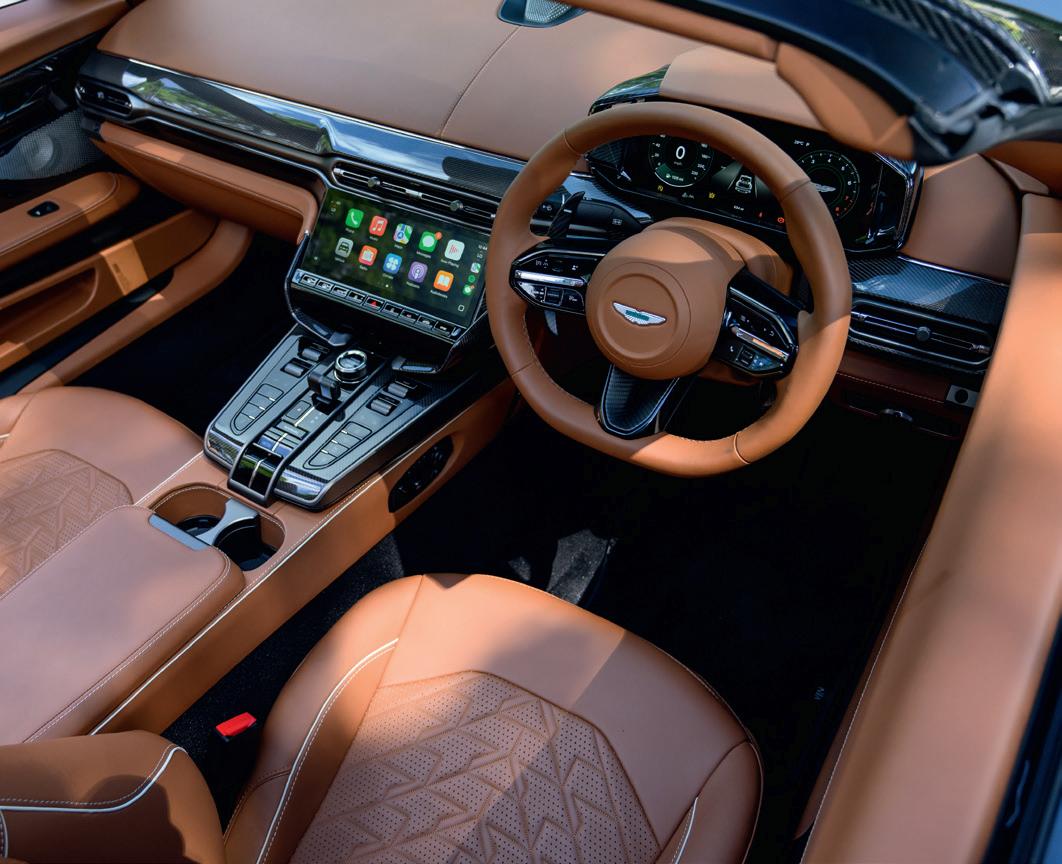
‘It’s a damn fine driver’s car, the best convertible that Aston Martin has ever made’
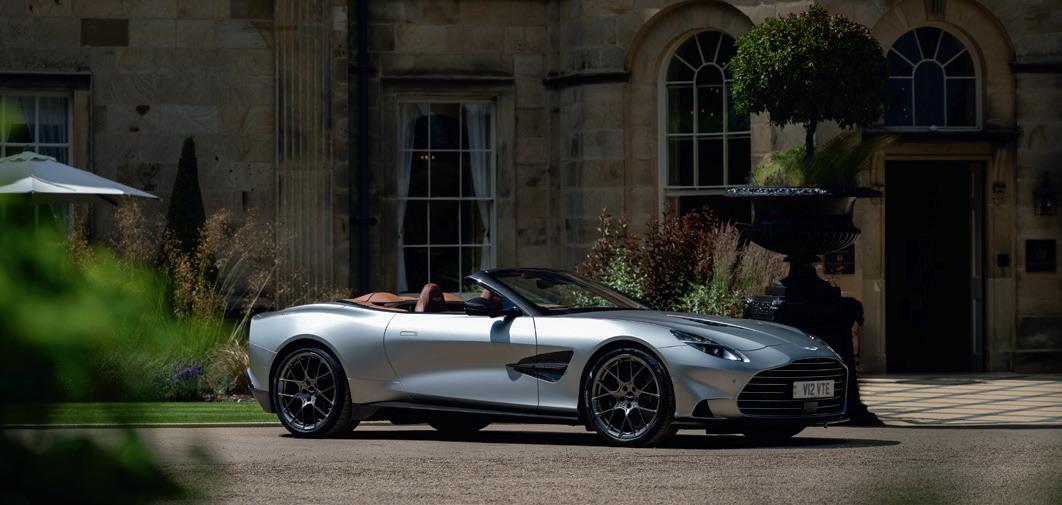
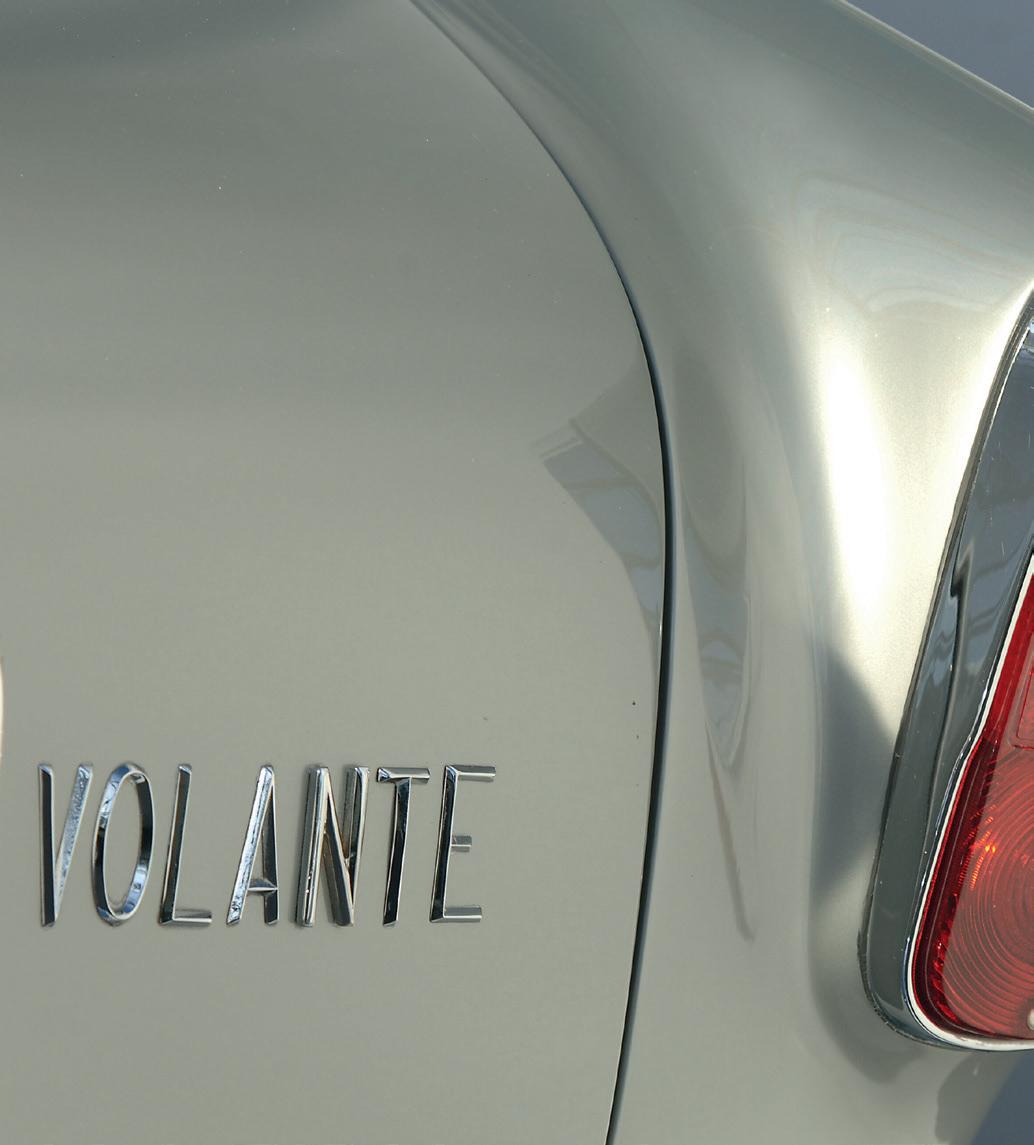
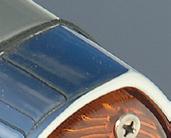
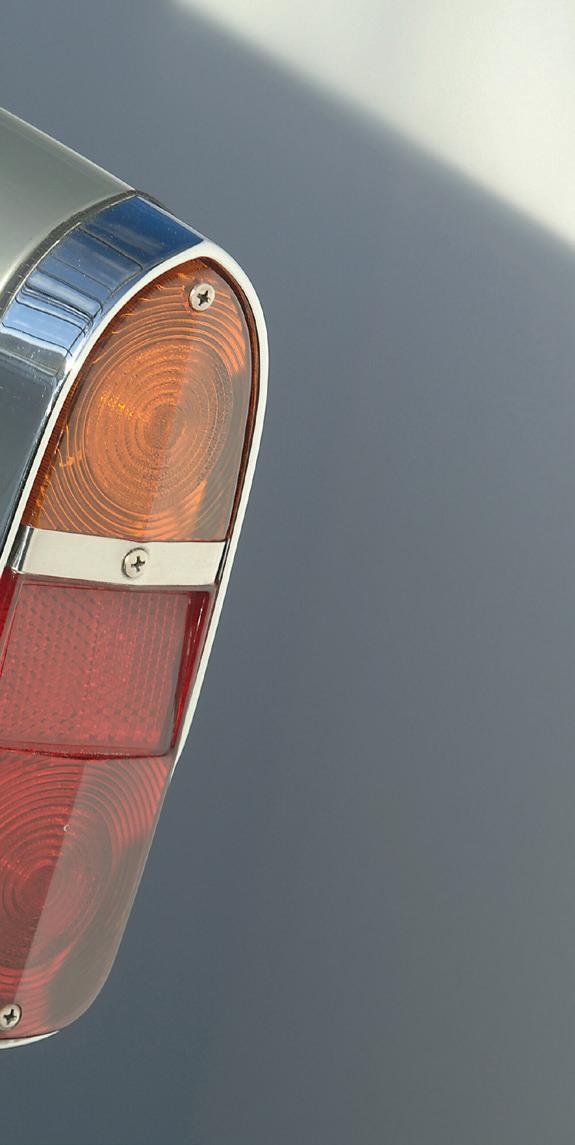
The Volante name has adorned some of the finest and most desirable Astons. We explore the enduring magic of a famous badge
WORDS MARK DIXON
AS CLAIMS TO FAME GO, IT’S NOT A BAD ONE FORMER Aston Martin sales director Kent Monk is said to have thought up the name ‘Volante’ for a new convertible that appeared alongside the equally new DB6 at the 1965 Earls Court Motor Show. It was badged neither as a DB6 nor as the DB5 on which it was based but simply as the Aston Martin Volante and was a clever recycling of 37 otherwise-redundant new DB5 chassis. Because the DB5 wheelbase is shorter than a DB6’s, it is commonly referred to as the ‘Short-Chassis Volante’.
But did Kent Monk come up with the Volante label? Aston Martin historian Steve Waddingham thinks he probably did. ‘I was introduced to his former PA a few months ago,’ he explains, ‘and – choosing my words carefully, so as not to influence her answer – asked whether she’d ever heard a story about Kent and the name Volante. Straightaway she said, “Yes, he came up with the name.” Although she was working with Kent at a later period, it’s still a good indication that the legend may be true.’
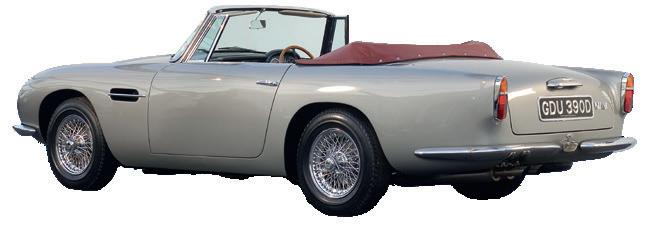
Why Mr Monk may have thought of Volante is unclear. The word means ‘flying’ in Italian, which ties in nicely with both the convertible theme and the Aston Martin winged logo, and US ‘Rat Pack’ star Dean Martin had had a big hit a few years earlier with his song Volare – a retitled version of Italy’s thirdplaced entry in the 1958 Eurovision Song Contest. Then, of course, there was the alliteration with Aston’s established Vantage label. Volante had, in fact, already been applied to a car as far back as 1952 on the sports-racing Alfa Romeo Disco Volante, or ‘Flying Saucer’.
Which leads us to another potential link. Steve Waddingham points out that, in the 1961 James Bond novel Thunderball, SPECTRE villain Emilio Largo’s superyacht is called Disco Volante. Had Kent Monk read the novel? Is this a Bond connection with Aston that predates the arrival in the movies of the famous DB5?
Those first 37 Volantes were modernised with DB6 bumpers and tail-lights but the DB6 Volante of October 1966 was quite a different car. Longer, for a start, but also simplified in construction, with a folded sheet metal substructure rather than the complicated Superleggera spider’s web of steel tubing. Built in Mk1 and Mk2 versions (the latter with mildly flared arches to cover DBS-type wire wheels), it lasted until November 1970. HRH Prince Charles was gifted a Mk2 by his mother, HM Queen Elizabeth, which he still owns.
Charles also took delivery of the next Volante model to appear, which wouldn’t be for a whole eight years. By late 1970, the DBS coupé was well into production but there was no convertible version to take over from the DB6. It wasn’t until 1978 that the V8 Volante was launched, based on the revamp of William Towns’ original DBS. You could also buy an even wilder-looking Vantage-engined version – but HRH asked Aston Martin to fit the regular V8 Volante with Vantage-spec running gear and this more understated model was then available to special order, usually referred to as ‘Prince of Wales specification’ – or, in car dealer speak, ‘PoW spec’.
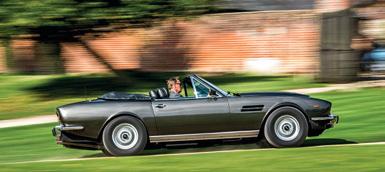
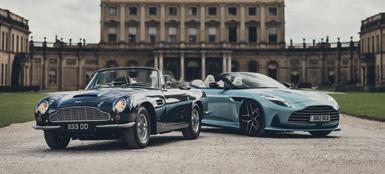
‘Is this a Bond connection with Aston that predates the arrival in the movies of the DB5?’
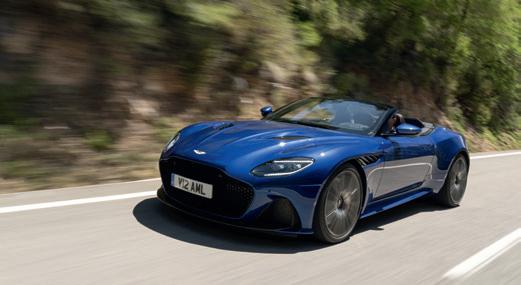
DBS Superleggera soon spawned a Volante variant, creating one of Aston’s fastest ever convertibles
Astons receiving the Volante treatment over the years have included AM V8 (above) and (left) DB6 and DB12
Among the more unusual Volante models is the limited-run Aston V8 Zagato offered from 1986 to ’89, which was superseded by the Virage; saloons first, then Volantes from 1992, both versions with 32-valve fuel-injected updates of the familiar V8. The Virage then spawned the uber-muscular twinsupercharged V550 Vantage in late 1992. It was so over-the-top that, having made one prototype, Aston Martin demurred about offering a Vantage Volante – but, at the very end of Vantage production, it did build just eight Volantes for carefully selected VIP customers. A reworked, V550 Vantageinspired Virage Coupé made a late comeback for 1996-1999 with corresponding Volante option.
As so often, in the late 1980s Aston was struggling to sell enough of its reassuringly expensive cars but a fairy godmother in the unlikely shape of Ford resulted in a cash injection that allowed it to develop an ‘Aston Martin for the masses’ – the DB7, with supercharged 3.2-litre straight six. As usual, the saloon came first, in 1994, followed by Volante in 1996. It was the arrival of a V12-engined DB7, dubbed the DB7 Vantage and with accompanying Volante, in 1999 that altered the course for the Volante name: in the 21st Century, anything called Volante would have nothing less than a V12 under the bonnet.
So, when a soft-top version of the new-for-2005 V8 Vantage appeared in 2007, it was called Roadster rather than Volante. The convention holds true to this day, with the Volante name instead appearing on – deep breath – the DB9 from 2005, the DBS in 2009, Virage in 2012, second-generation Vanquish in late 2013 (the 2001-2007 Vanquish was tin-top only), Vanquish S in 2017, DB11 in 2018, DBS Superleggera in 2019… And, since 2025, on the current DB12 and Vanquish.

Units 1 & 2, Stilebrook Road, Yardley Road Industrial Estate, Olney Bucks. MK46 5EA
Tel : 01234 713280
Contact: Alan Pointer enquiry@bodylinesltd.co.uk www.bodylinesltd.co.uk
Although Bodylines and Spray-Tec are two totally separate companies, they have worked together on numerous Aston Martin restorations. Together we offer Aston Martin owners a complete package. Between the two companies we have the facility to undertake every aspect of an Aston restoration, this means we can collect the car, carry out the restoration and then deliver to you the finished article, a very high quality restored Aston Martin. Customers are welcome to view their cars at any time, and all aspects of the restoration are discussed before the work begins, also a full photographic record of every key stage would be supplied with the car upon completion.


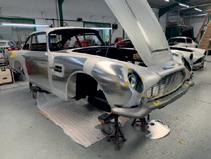

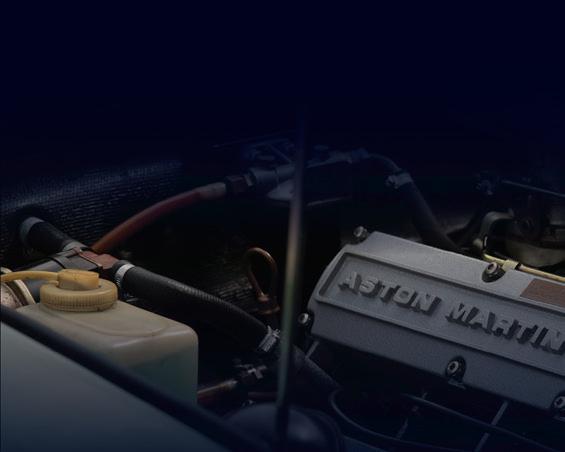

55 Rixon Road, Finedon Road Industrial Estate, Wellingborough, Northants NNS 4BA
Tel: 01933 275377
Contact: Adrian George info@spray-tecrestorations.co.uk www.spray-tecrestorations.co.uk
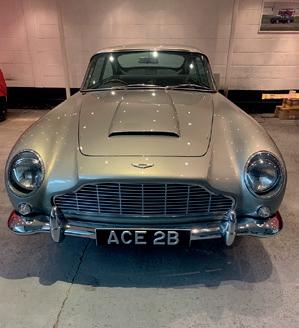


The very first David Brown Astons weren’t intended to race, yet this DB1 competed at Le Mans, driven by an English adventurer and bootmaker. Restored to its former glory, we tell its remarkable story
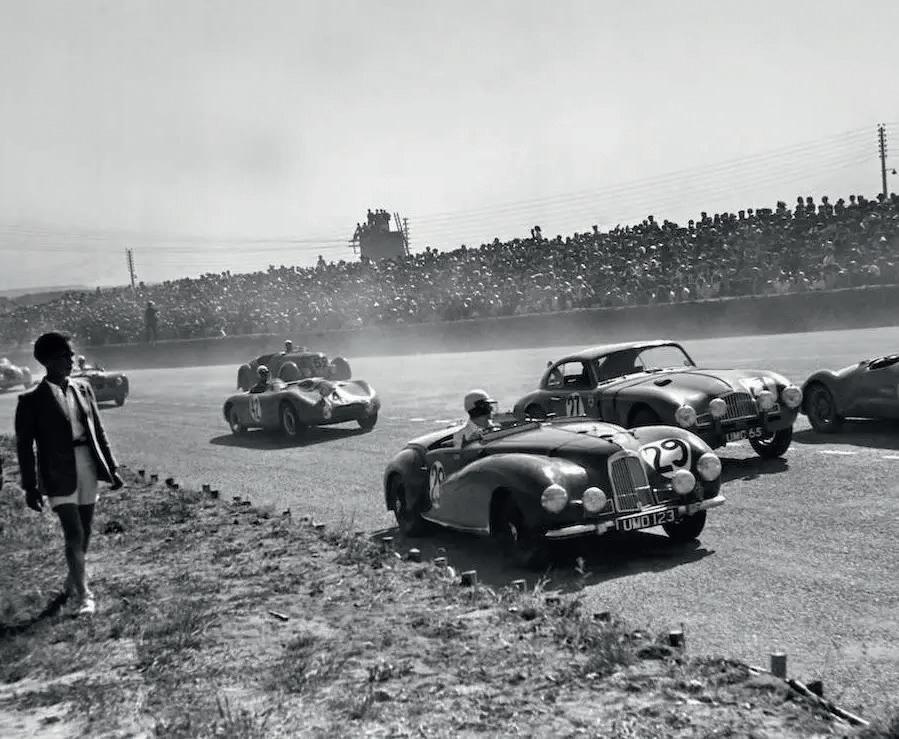
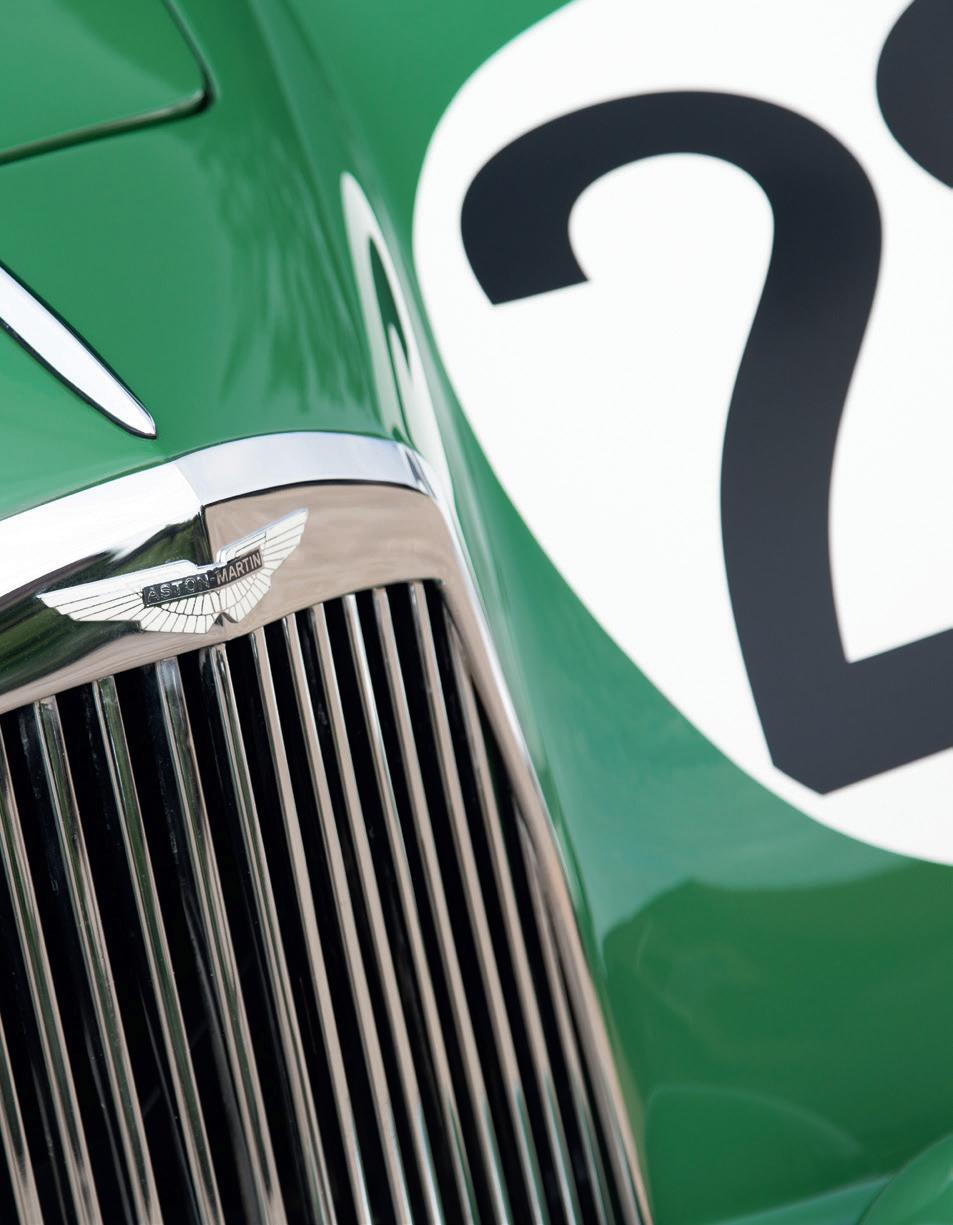
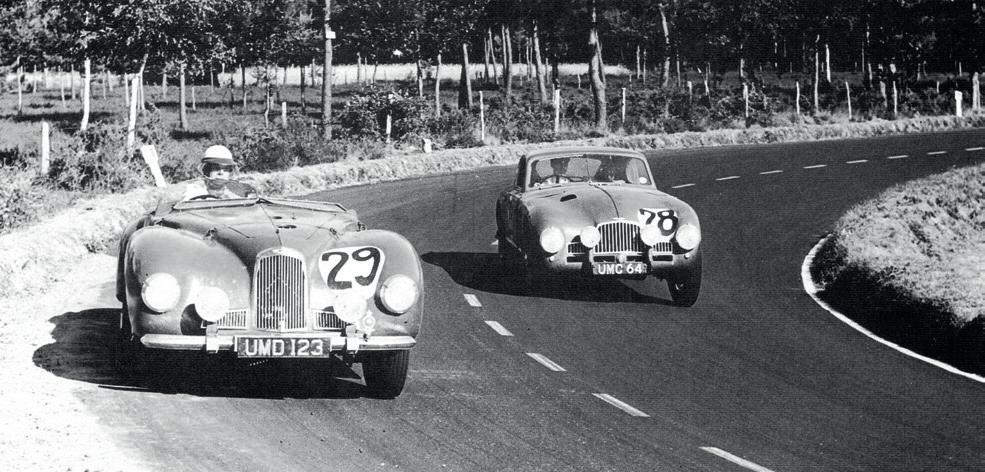
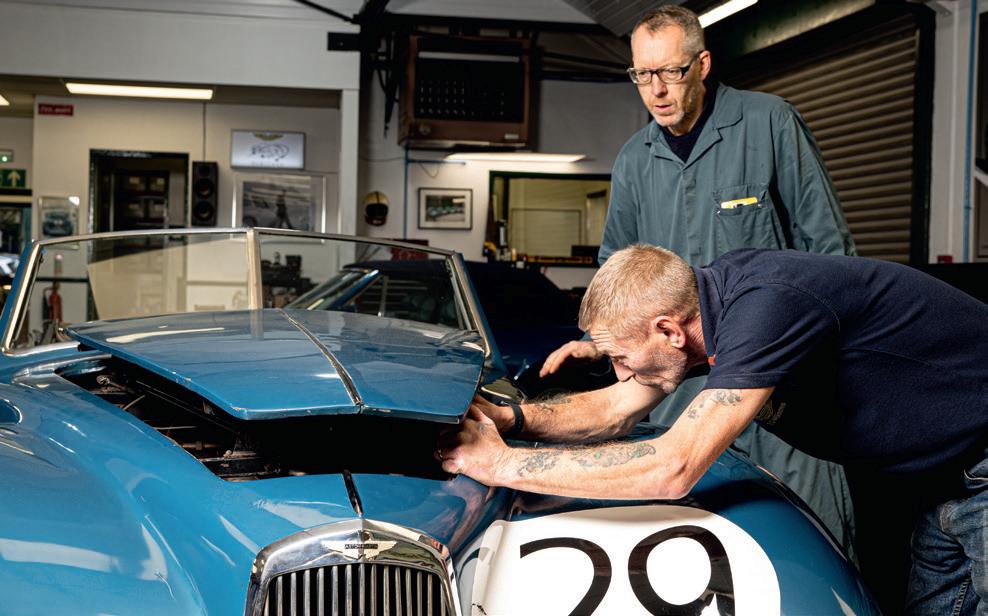
TTHE DB1, ASTON’S FIRST POST-WAR CAR, IS LONG OVERDUE the recognition that it deserves, and I can think of nowhere better to start than with the example you see on these pages, a car with a quite remarkable story to tell.
But first we should set the scene. David Brown had bought Aston Martin in February 1947, just 18 months after the end of the Second World War, when Britain was still recovering from the effects of the conflict and was enduring rationing as well as many other headwinds. The idea of a luxury car company being acquired and re-started at that time could only have come from the driving force that was ‘DB’.
He had bought the company largely on the strength of the chassis that engineering wizard Claude Hill had designed in 1939. This one-off car, the Atom, had a new tubular perimeter chassis and a Hill-designed 2-litre ‘four’. Brown drove the Atom and was most impressed by the chassis, though less enthusiastic about the pushrod powerplant. He would soon also acquire Lagonda along with its new, Bentley-designed six-cylinder twin-overhead-valve engine, which would give him the sort of power he was seeking.
But before the six could be mated to Hill’s chassis, it was decided to bring out a new model, DB’s first Aston, a fact that itself marks this out as a landmark model. Work started straight away on this new car, to be known as the ‘2-Litre Sports’. Frank Feeley designed an elegant if decidedly ’40s-style body and the chassis was developed by racer Jock Horsfall. While Brown hadn’t thought of racing the Sports, Horsfall and Hill persuaded him with nine weeks’ notice that a lightweight version could be built and should do well in the upcoming 1948 Spa 24 Hours. Driven by Horsfall and Leslie Johnson this one-off duly won before being driven back to Feltham!
Opposite: Le Mans 1949 and the DB1 circulates in company with one of three DB2 prototypes. Pre-restoration at RS Williams
Below: plaque commemorates its 11th place finish. Chums Robert Lawrie (left) and Dr Robert Parker enjoying the French sunshine
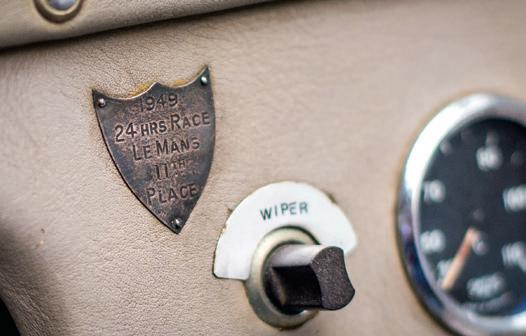
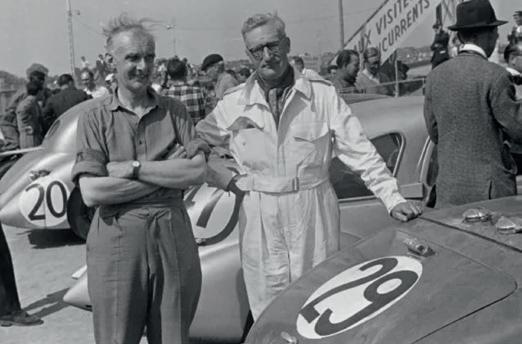
‘Lawrie needed a racing licence – he had never raced before and by this time he was 46 years old!’
Aston Martin was able to capitalise on this extraordinary result when just 12 weeks later the ‘2-litre Sports’ was revealed at the London Motor Show. (It was only after the subsequent launch of the DB2 that it became retrospectively known as the DB1 by all.) Though a version of the new car had won in the Ardennes, how was it received then and was it any good? In period, the press never tested it but Motor experienced the test mule without a body in early 1948, giving a glowing appraisal along with a fine account of the Spa-winning car and how it formed the basis for the Sports. In truth, those that drove the DB1 found it to be charming and very well mannered but with a 90bhp engine it was underpowered.
The price of the DB1 in today’s money was £70,000 so it is perhaps little surprise that only 14 were sold, but for Brown this was only ever an interim car until he could bring out a model with his initials on it and the Bentley/Lagonda engine: this was of course the DB2, which broke cover in 1950.
Meanwhile, the DB1 continued to sell, albeit slowly. Which brings us back to the subject of this feature, chassis AMC/49/5 and the fourth car sold. It was ordered in Suffolk Green by Robert Lawrie, who decided that not only would the new Aston Martin be a nice acquisition, but that to race it at Le Mans would suit his spirit of adventure perfectly.
Lawrie was born in Burnley in 1903 and would take over the running of his father’s successful bootmaking business. He took up mountaineering in his 20s and designed his own climbing boots for which he would become famous. Indeed,

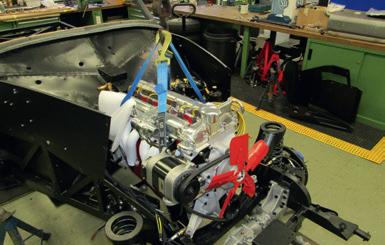
Lawrie-made boots were commissioned for the 1933 Everest expedition, where a new type of double-skinned boots with clinker nails on their leather soles were used. In 1935, he moved the business to London and went on to supply boots to the military during WW2 for special operations such as the destruction of the ‘heavy water’ plant in Norway. He later made the boots for the successful 1953 Everest expedition and also supplied a number of polar explorers, as a result of which a glacier in Antarctica was named after him in 1959.
Highly adventurous by nature, Lawrie was drawn to the Le Mans 24 Hours having attended the race before the war, and he soon hatched a plan to enter his newly acquired DB1 in the first post-war event, scheduled for June 25-26, 1949.
Entering Le Mans was a lot easier in those days, but nonetheless Lawrie needed an invitation from the Automobile Club de l’Ouest and also a racing licence – he had never raced before and by this time he was 46 years old! On the strength of the invitation from his friends at the ACO and his own sheer determination, the RAC issued a racing licence to this total novice to race at Le Mans. And they did the same for his friend, one Dr Robert Parker, who would share the driving during the 24-hour race.
Following the example of Jock Horsfall, Lawrie approached David Brown to support his efforts at Le Mans. Lawrie insisted on Aston Martin charging him for every part, but the works team did agree to support him – it worked well for them because they would attend the race with three prototype
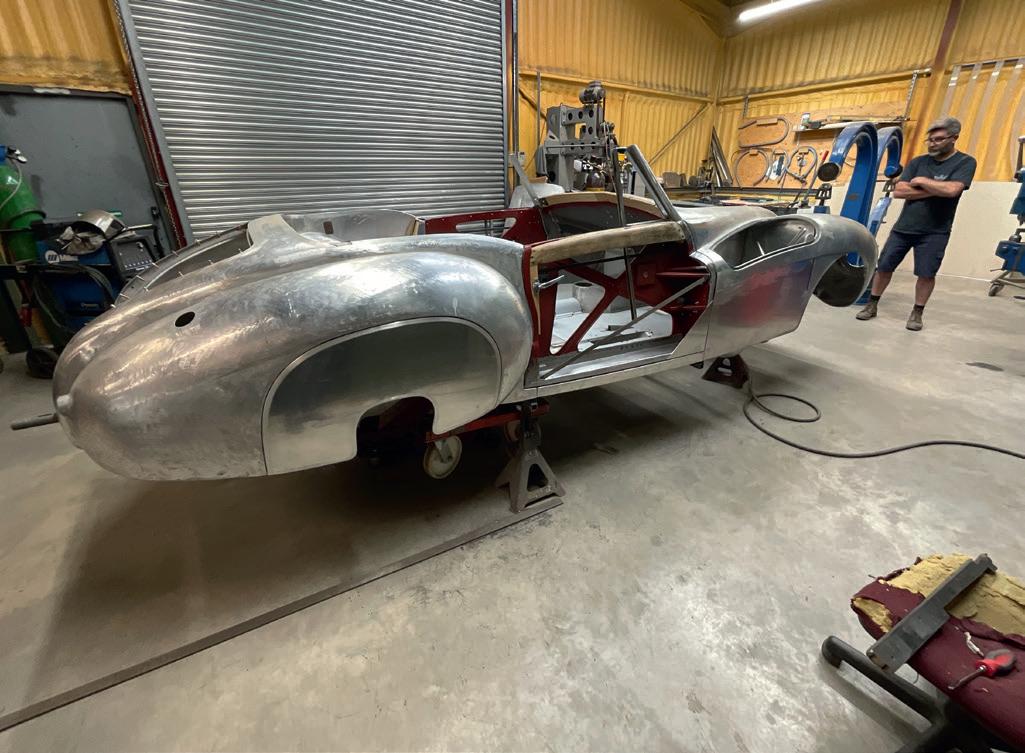
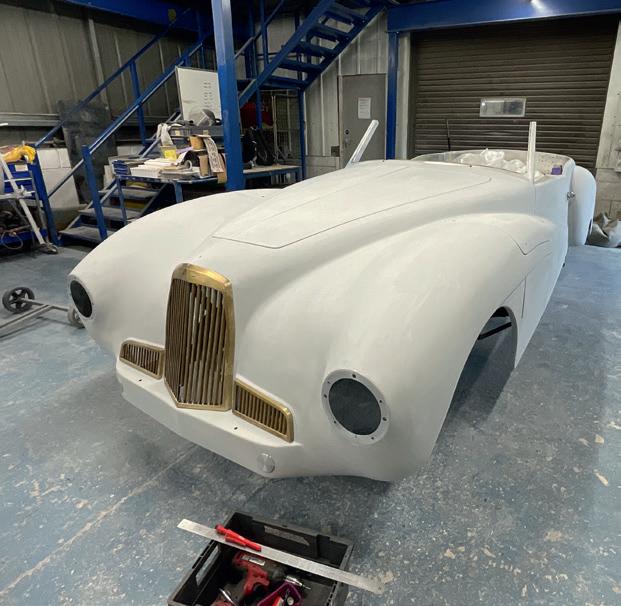
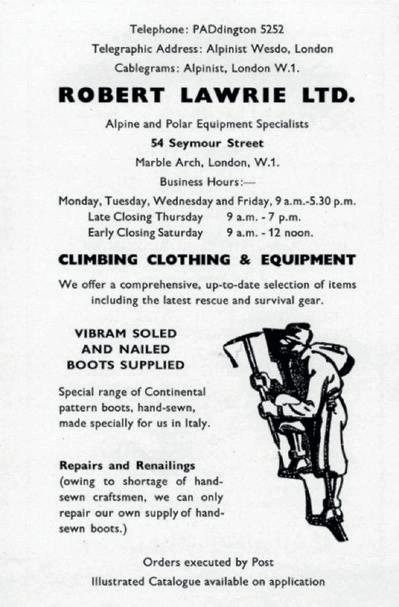
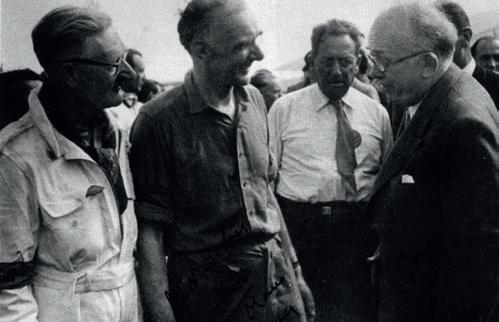
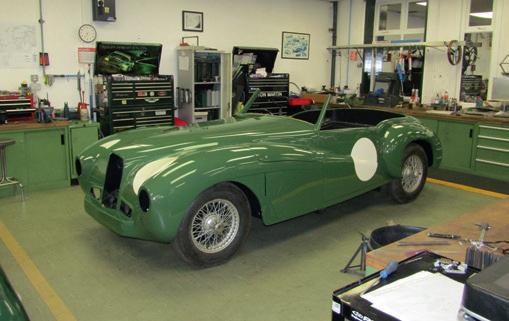
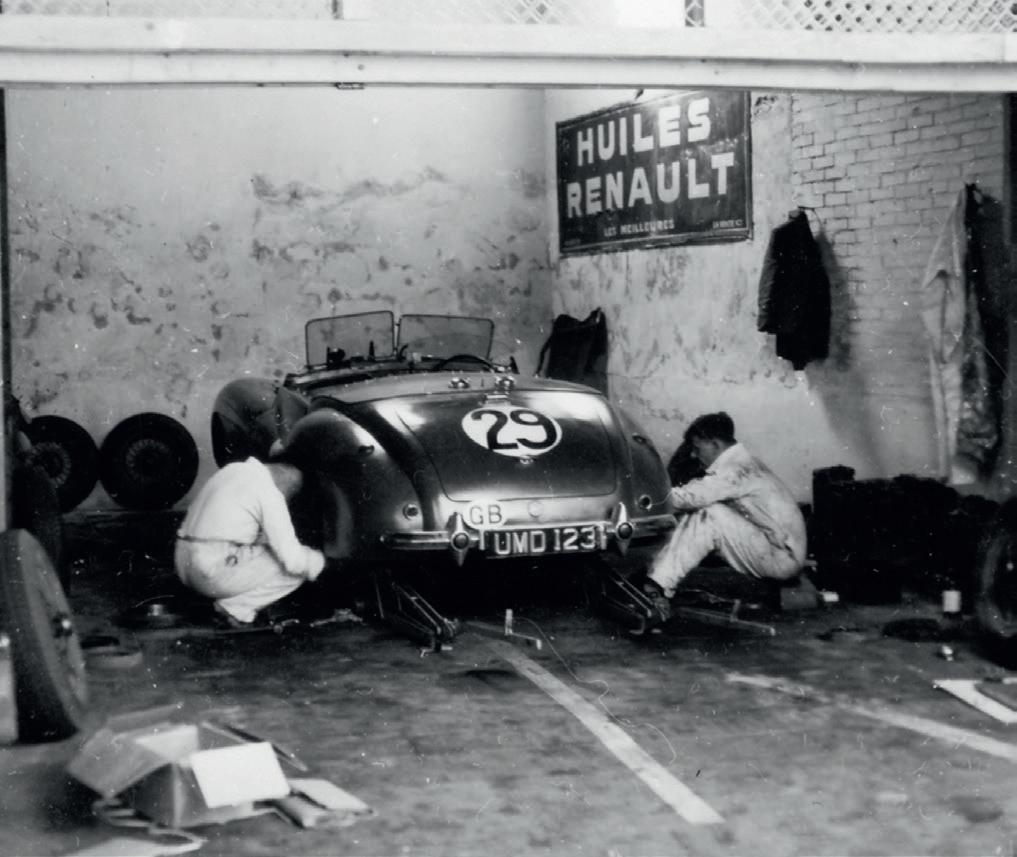

‘There cannot be many Englishmen who have only competed in four races, all of them at Le Mans’
DB2s, two of which ran with the 2-litre pushrod engine.
Lawrie’s engine, number SPA//49/3, was a special replica of the Spa 24 Hours engine, built by Jack Sopp, who remained the mainstay of Aston’s race engine department even into the 1960s. The engine produced the same power as the two works cars with a claimed 95bhp, an increase of 5bhp from the standard, although the 90bhp figure was probably overstated, as most power figures were in those days.
It has been suggested that the body of the car was lighter than standard, and the glass windscreen was replaced by two mesh fly-screens and glass aero screens, though pictures show them using neither in some stages of the race. The hood was removed and in the space behind the seats was installed a special fuel tank with a filler on top. The standard bonnet does not open easily on the DB1, so a bespoke hinged bonnet was installed with holes for easy access to top up the oil.
Lawrie took the preparation for the race seriously, paid regular visits to the works, and was assisted by pre-war Aston racer Sammy Davis to help prepare him for the challenge of Le Mans. Lawrie’s primary goal was to complete the race rather than aim for the podium, and the two friends consequently drove carefully, Lawrie advising Parker to ‘drive with a frame of mind that you are trying to keep a dinner date rather than running in a Grand Prix’.
The surface at Le Mans was still largely loose, as it was before the war, but under a sweltering sun, Lawrie and Parker benefited from the excellent preparation and had a trouble-free race. As the 24th hour approached, Parker decided to pit in order to allow Lawrie to take the flag. This act of generosity saw them drop from 10th to 11th, finishing 4th in class and out of the trophies, but it was a fine performance for the only ever appearance of a DB1 at Le Mans.
Meanwhile of the three DB2s, the sole six-cylinder car lasted only six laps, another suffered brake failure and crashed, resulting in the tragic death of its Anglo-French driver, Pierre Maréchal, but the surviving car finished a worthy 7th out of the 19 finishers, Ferrari achieving its first win at Le Mans.
Following the race, Lawrie and Parker were warmly congratulated by the President of France, Vincent Auriol, after which they took a leisurely drive back to England. Subsequently AMC/49/5 was returned to the factory, where the aero screens were replaced by a standard full windscreen but it retained its racing engine and unique centre-folding Le Mans bonnet, before being returned to Lawrie in September 1949.
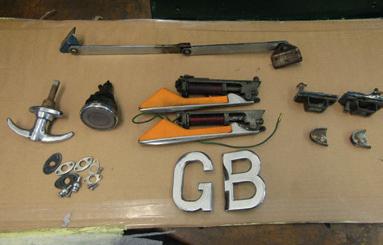
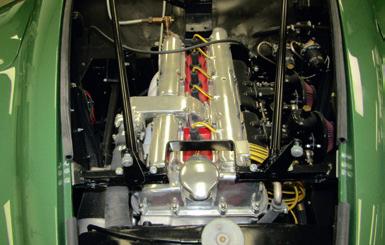
Lawrie would return to Le Mans for each of the three following three years, driving a Riley, a Jaguar and a Morgan respectively, but he never bettered the result that he enjoyed with the Aston and never raced again thereafter. There cannot be many Englishmen who have only competed in four races, all of them at Le Mans.
He sold the DB1 around 1953 to Cecil Redhead, who lived in Yorkshire and who had Aston Martin install a six-cylinder DB2 engine, VB6B/50/51, and had the car repainted Botticelli Blue. Redhead kept the car until 1970, when it was acquired by Sir Michael Leighton, the owner of Loton Park, the famous hillclimb venue, who returned it to Suffolk Green.
It then passed through the hands of a series of owners until in 1991 it was acquired by Colin Gordon in New Zealand. In 1994, Gordon sold the DB1 to a wealthy Japanese buyer, but on arrival in Japan it was stolen in the docks and found its way to
Above : UMD had its original ‘four’ replaced with a DB2 ‘six’ by Aston in the early ’50s. Opposite: meeting French president Vincent Auriol, and Le Mans race prep, 1949-style
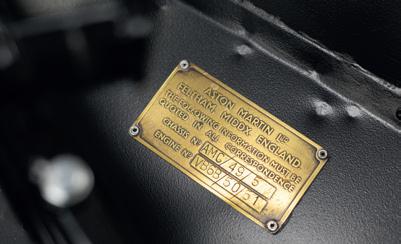
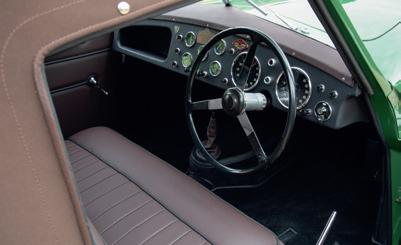
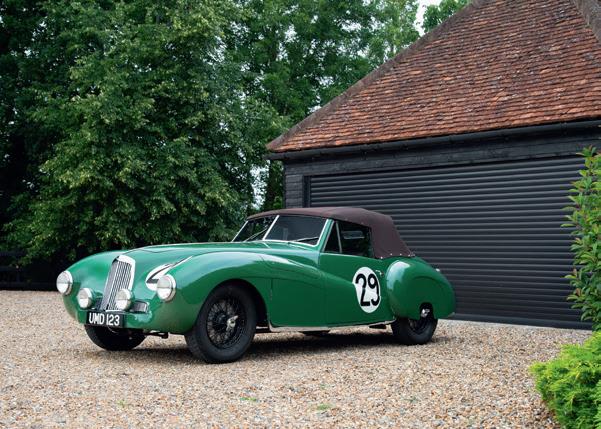
a Yakuza boss. Over the next ten years, Gordon endeavoured to get the car back; he even travelled to Japan and met with the thief. Eventually, in 2007, a court established his right of ownership, he got the car back and was eventually able to sell it at auction in 2017 in Monterey.
The car’s current UK owner entrusted it to renowned specialists RS Williams to carry out a full body-off restoration, completed in late summer 2025. As RSW managing director Neil Thompson told me, it had been ‘a rewarding challenge since it’s not our normal kind of project, but the car is so special, it had to be done right’. Workshop director Graham Ching, who project-managed the restoration, commented: ‘The nice thing is that it had never been restored before, so we were not undoing anything that the factory had not done themselves. It was an honest, straight car.
‘The chassis was very good with no corrosion, and the body only had minor corrosion in it, but all the mechanicals and running gear were tired.’ The biggest single challenge was the ash wood frame under the body skin. ‘A lot had decayed and remaking the ash to fit the body when the original process was the opposite was not easy, but it turned out very well.’
The front suspension, which is a finely engineered set-up and has to be right for the car to drive well, was a challenge too, but the 1953 2.6-litre six was ‘a delight to rebuild and had the flattest torque curve possible’. The original bumpers are still with the car but the owner has elected to leave them off for now to give a more period race look.
Naturally I jumped at the chance to drive it. Getting in is interesting: legs over the handbrake (which they wisely moved for the DB2), then knees to be negotiated under the steering wheel. But, once in, everything is nicely to hand, though it does feel small: the cabin is even narrower than in a DB2. The view out is akin to some prewar cars, but the drive is very much
more sophisticated. The development work by Horsfall and Hill is evident in its refinement, outstanding road manners and very sophisticated ride. Coil springs and independent front suspension give it quite a modern feel.
The addition of the larger, six-cylinder engine makes it heavier than a regular DB1, but the added power more than compensates. However, the chassis was never set up to manage the additional weight and so understeer can be quite pronounced, especially in low-speed corners. Nonetheless, the car has a long-distance touring feel to it and a level of refinement that one might not expect from a car developed so rapidly after the war, and from a prewar design.
‘In 1994, it was sold to a Japanese buyer, but on arrival in Japan it was stolen in the docks and found its way to a Yakuza boss’ V
Top: restoration was completed just in time for an appearance at the prestigious Concours of Elegance at Hampton Court
RS Williams has returned AMC/49/5 to its former glory, restored with exacting detail. As a man who relished a challenge and always brought a similar attention to detail to everything he did, Robert Lawrie would have been impressed.

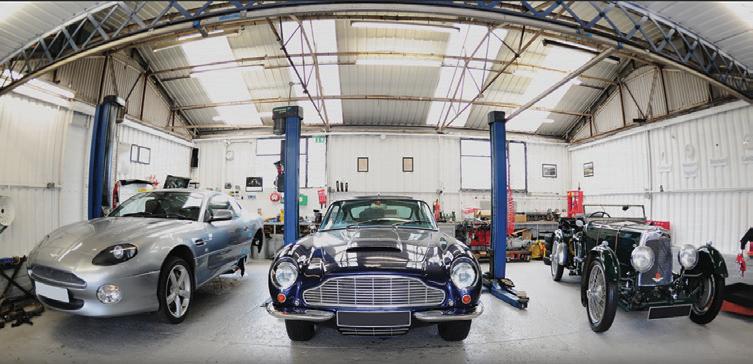




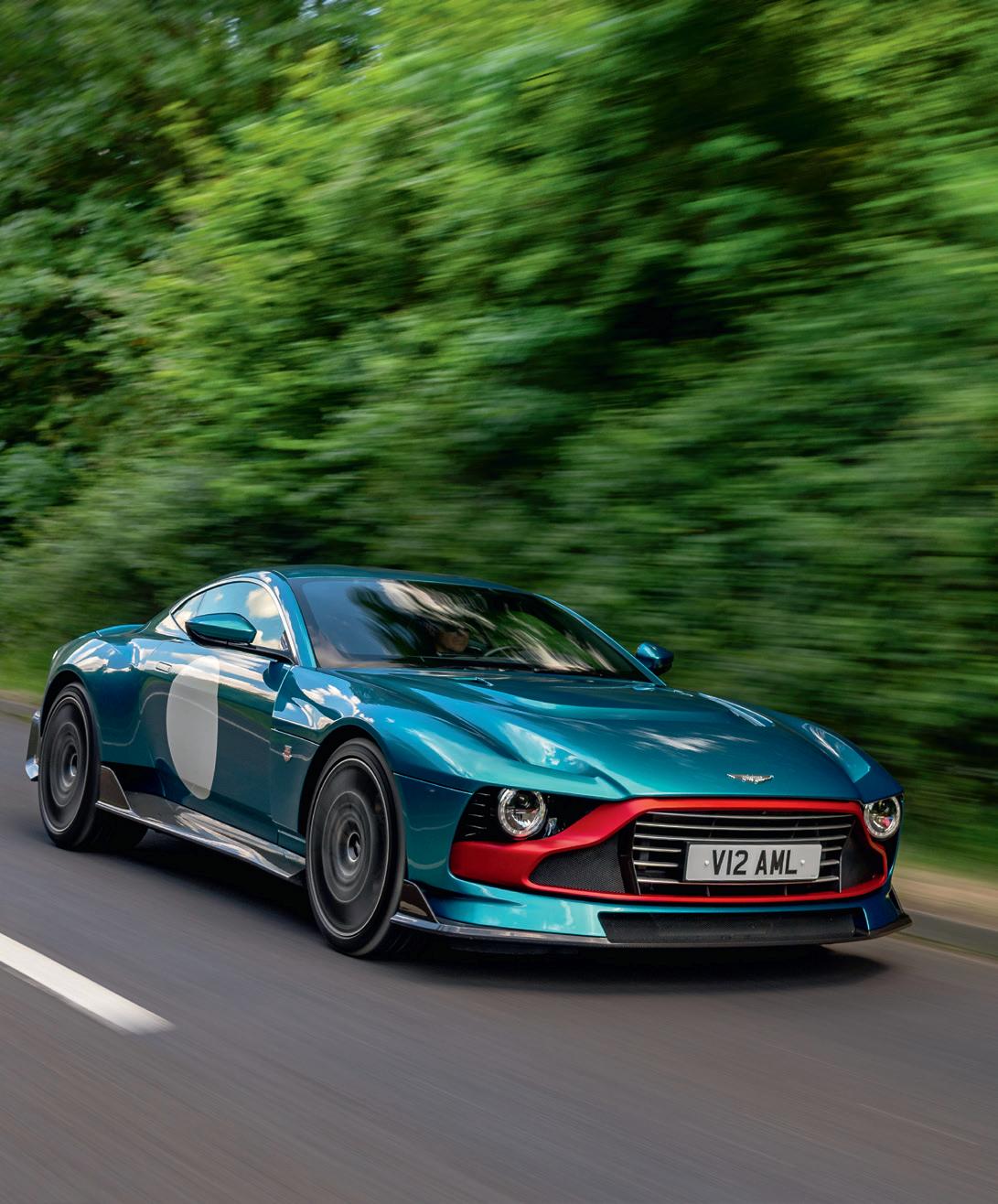
It’s not the fastest or most powerful modern Aston, but the strictly limited edition Valour, inspired by the brutal 1970s V8s, could just be the most special of them all
WORDS DAVID LILLYWHITE PHOTOGRAPHY MAX EAREY FOR AML

‘WE DON’T NORMALLY DO RETRO,’ SAYS ASTON MARTIN design director Miles Nurnberger as the Valour throbs behind us, looking uncannily like the cars I used to sketch on my exercise book during chemistry lessons.
‘But I think with this car it’s not just the look, it’s the era that it sums up,’ he continues, ‘which has become more relevant in the move to electrification: the antidote has become the 1970s and early ’80s.’ He goes on to mention ModSports racing and the legendary DBS V8-based Le Mans racer known as ‘The Muncher’, and we grin at the comparisons.
This, then, was my first time with the Valour, which followed the 2020 private commission Victor and led to the more track-focused Valiant. We walk around the car while passers-by gawp, none identifying this 110-off, £1m-plus oddball from Gaydon’s bespoke Q division.
Really it shouldn’t work. I mean, just look at the the rear end: combining the 1970s Kamm tail trend with an array of rearlight tech straight off the Valkyrie and Valhalla, and a diffuser that looks pure GT3 racer is downright weird, and that’s just one facet of this most singular car.
At the other end there’s that aggressive shark nose, made regulations-friendly by incorporating a structural bumper under the carbonfibre ‘lipstick’ picked out in red on this car. Again, it’s not how things are done lately, but the contrasting outline helps the oversize front grille to appear smaller – and therefore less current – than it really is.
Nurnberger points out that designers and modifiers back in the era of the V8 Vantage would have added enlarged intakes and extra vents wherever possible to cope with ever-increasing power outputs. Modern-day Aston Martin has done the same to the Valour but added the latest aero tech to that process, such as the turning vanes on the ends of that low front splitter.
And it’s a similar thing with the wheelarches, which the design team refers to as cereal boxes; in period they’d have been added crudely, because the ability to integrate them just wasn’t available. Now they’re perfectly formed, in aluminium alloy. And let’s not forget the most retro feature of all, the faux-louvred rear window, which incorporates subtle fins that apparently supplement the aero effect of that kicked-up Kamm tail.
‘The Valour promises an untamed experience of raw power that modern manufacturers aren’t always able to deliver’
The result is that the Valour looks more like a muscle car than the supercar that it actually is, a Frankenstein special more than the product of an established manufacturer. It promises an untamed experience of raw power that modern manufacturers aren’t always able to deliver.
‘We purposely tried to be a little bit Neanderthal in the way we did it, and then just refined it at the end to get some of these things,’ says Nurnberger. Engineering director Simon Newton agrees: ‘From a controls point of view, particularly with the driveline and how that interacts with the dynamics, it’s very analogue. When you get the car into slip, you’re very aware of its mechanical limited-slip diff and you know what it feels like when you get it locked up. It’s very positive and clear when it does. It’s not the infinitely variable, super-refined unit that we’ve spent a lot of time, money and effort integrating into the Vantage, for example.’
In a way, then, the Valour is a backward step in terms of engineering, though the specification is the stuff of dreams: a twin-turbo, 5.2-litre, 705bhp, 555lb ft V12 driving through a six-speed Graziano manual transaxle and mechanical differential rather than the sophisticated autos and electronic diffs of every production Aston. All this over a reworked version of the company’s familiar aluminium architecture.
How will that translate on the road? Nurnberger and Newton step aside and I drop into the hip-hugging carbonfibre seat, from which I find that the Valour’s signature contradictions continue through to the interior. The seat reclines electrically but needs a tug on a leather tag to slide back or forwards. The interior door handles are also leather tags, but the large door mirrors are adjusted electrically by controls part-hidden in the door-cards and the centre ‘mirror’ is actually a screen, fed from a camera in that rear window cover. The headlining and seat coverings are a gentlemanly tweed, but the gearlever mechanism is exposed to show the greased knuckle joints that link back to the rear-mounted gearbox. And there’s a lot of beautifully finished carbonfibre on show, which can be colourtinted should the buyer request it.
To exit, I need to reverse a little and then ease across a busy pavement onto an even busier road, watched over by the team who have nurtured the Valour to life. I imagine Countach-like controls sending me boinging into action, or stalled inaction.
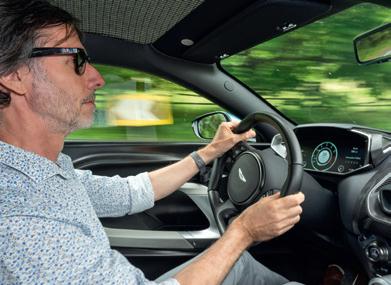
Above: Lillywhite settles into the Valour and finds it very much to his liking. Bottom right: exposed manual gearshift

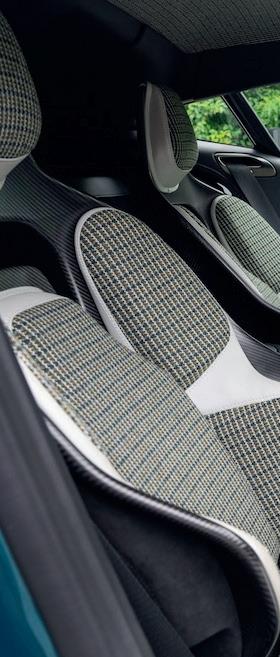
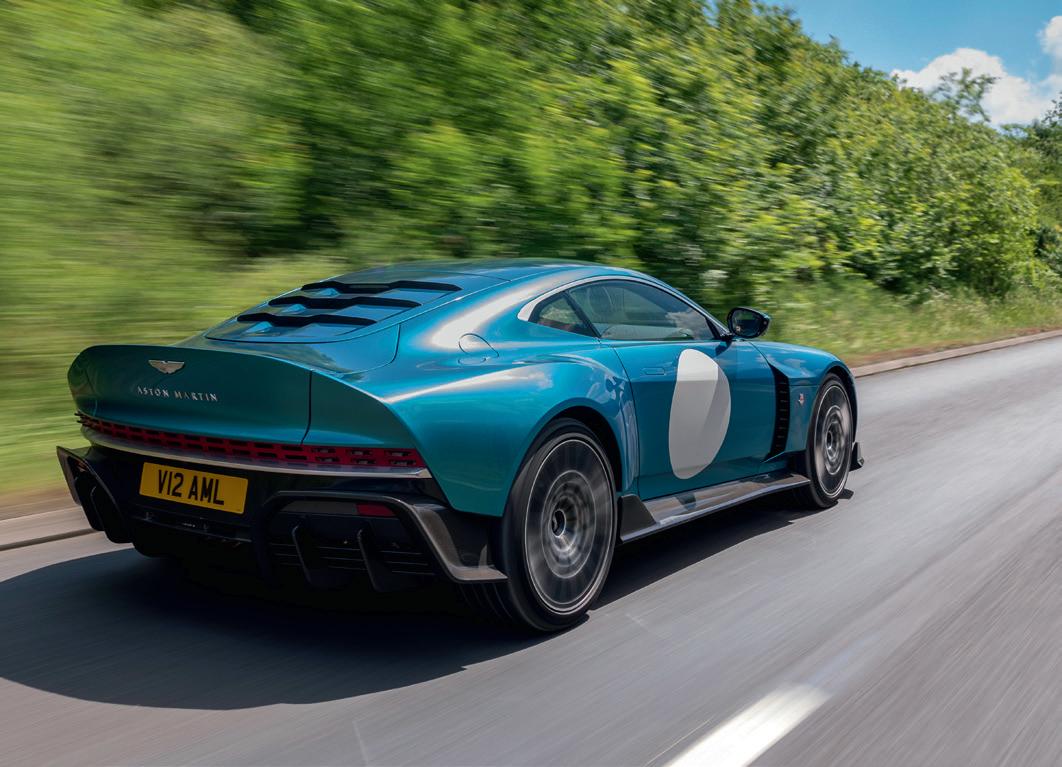
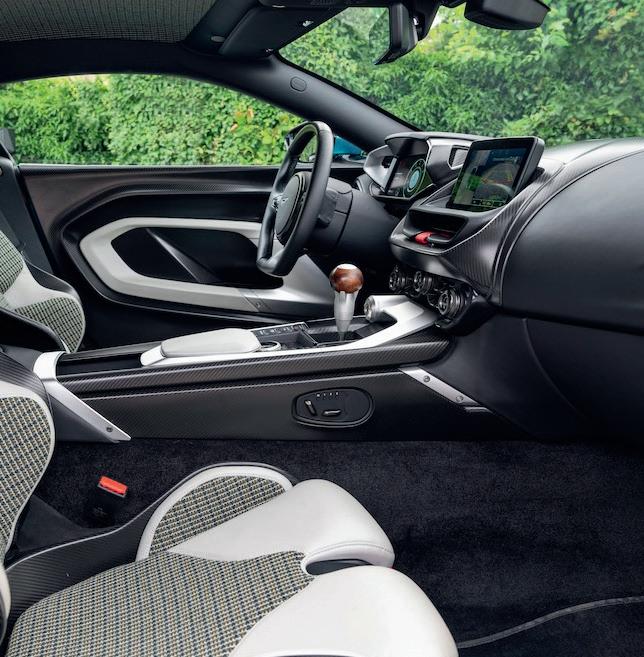
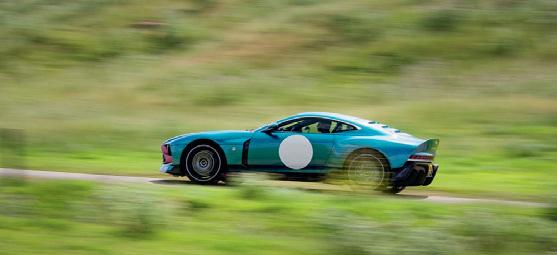


‘The Valour is hands-down my favourite modern car from any marque of the last few years’
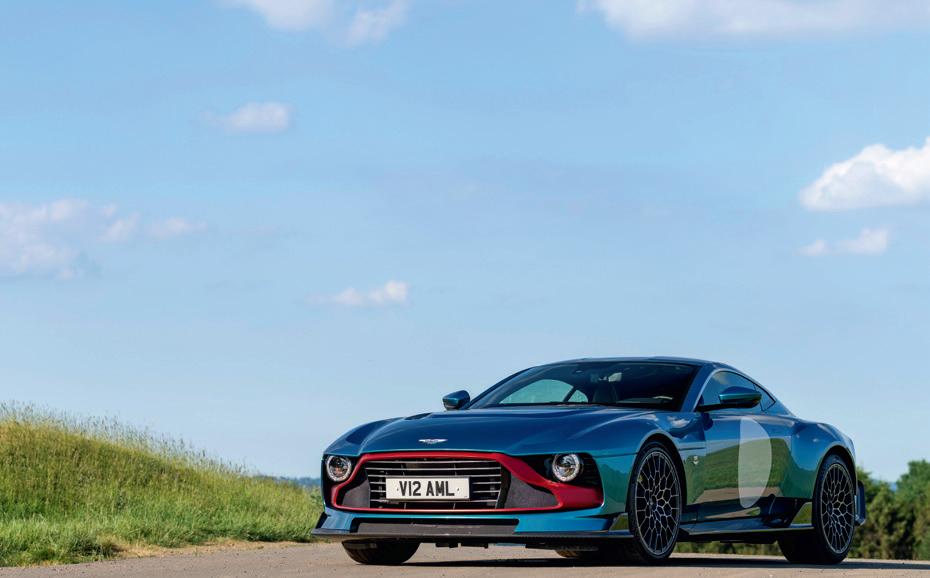
ENGINE V12, 5204cc, twin turbochargers MAX POWER 705bhp @ 6450rpm MAX TORQUE 555lb ft @ 4000rpm TRANSMISSION Six-speed manual, rear-wheel drive, limited-slip differential SUSPENSION Front: double wishbones, coil springs, telescopic adaptive dampers, anti-roll bar. Rear: multi-link, coil springs, telescopic adaptive dampers, anti-roll bar STEERING Rack-and-pinion, electrically assisted BRAKES Vented carbon-ceramic discs, 410mm front, 360mm rear, ABS WHEELS 9.5 x 21in front, 11.5 x 21in rear TYRES 275/35 ZR21 front, 325/30 ZR21 rear, Michelin Pilot Sport S 5 WEIGHT 1780kg POWER TO WEIGHT 402bhp/ton 0-60MPH 3.4sec TOP SPEED c200mph PRICE £1m-plus
Instead, I find that the clutch is light and the big biturbo V12 perfectly – if noisily – tractable, while manoeuvrability is made easier by having a clear view of the front and rear wingtops. I pull away without drama, if any getaway that’s accompanied by turned heads and pointed cameraphones can ever be referred to as drama-free.
An hour or so later, and any worries about the behaviour of a car that even an arty design director refers to as a little bit Neanderthal have dispersed. I’ve crawled through traffic, negotiated potholes and monstered the best of British A- and B-roads and I don’t want the fun to end. Ever.
Whatever Newton and Nurnberger say about the Valour’s caveman nature, it’s definitely not crude. Instead, there’s a basic, deliciously mechanical feel to it that’s rarely found in modern performance cars. The V12 rumbles and roars, and amid the symphony it’s not difficult to detect the faint whine of that beefy transaxle.
Sometimes it doesn’t feel crude enough. A V12 is naturally smooth, and turbocharging will only ever smooth out its more visceral side, so the Valour can feel more sophisticated and its exhaust note less lairy than you might expect – at least in Sport and Sport+ driving modes (in Track mode it’s less restrained). And where you’d expect any gearchange that starts with a robustly constructed exposed shifting mechanism and ends in a transaxle engineered to cope with monstrous torque to feel clunky, the Graziano is mechanical perfection.
But it doesn’t take much to expose the Valour’s beastly side. One prod of the accelerator in any gear, at any speed, and the Valour pulls relentlessly while the mechanical differential works hard to put all that power down – you really can feel it working, sense the physical struggles going on behind you – as the V12 howls up front like only a V12 can.
The ride is firm, of course, but it balances the opposing challenges of the UK’s country roads and the control of so much power without feeling harsh – at least while the adaptive-damper suspension is kept to its first setting. Turn it up a notch and you’ll have to put up with a more jarring ride. Leave the third and final setting for smooth tracks only; it’s hard work on the road. Oh, and the brakes – well, they’re Aston Martin’s composite disc, multi-pot caliper finest, and they work spectacularly well.
I’ve driven the new Vantage, and the Vanquish and DB12, and the Valour feels markedly different from all of them. I know it’s not actually as good as them in many ways. I know it would scare me at some point on a wet, greasy road. And I know it would be more tiring to drive and probably get me into a lot more trouble.
And yet… the Valour is hands-down my favourite modern car from any marque of the last few years. Those 110 owners have something very special, for it has a look and character all of its own, and it’s as politically incorrect as it is exciting.
Bravo, Valour.
V

Goldsmith and Young has a long history of the restoration of all post war Aston Martins which now also includes the modern era cars up to 2016. We specialise in the full restoration and maintenance of post war cars for both road and track use.
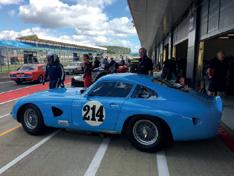
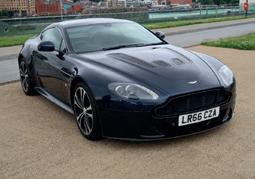
2C Quarryfields


01747 860715
gyl73@btconnect.com

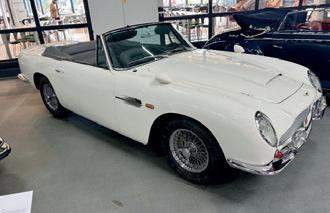
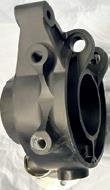

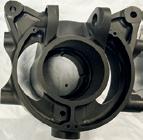



Poplar Farm, Bressingham, Diss, Norfolk, IP22 2AP
Tel: 01379688356 Mob: 07909531816
Web: www.asmotorsport.co.uk
Email: info@asmotorsport.co.uk
ASM R1 Stirling Moss tribute car enjoying track time at Goodwood.
ASM hand build bespoke versions of the R1 roadster, inspired by the Aston Martin race cars that won Le Mans and the world Sportscar championship in 1959. Contact us for details of commission builds and stock.
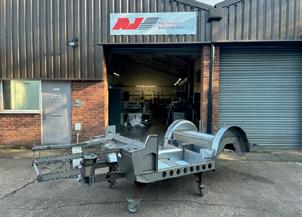
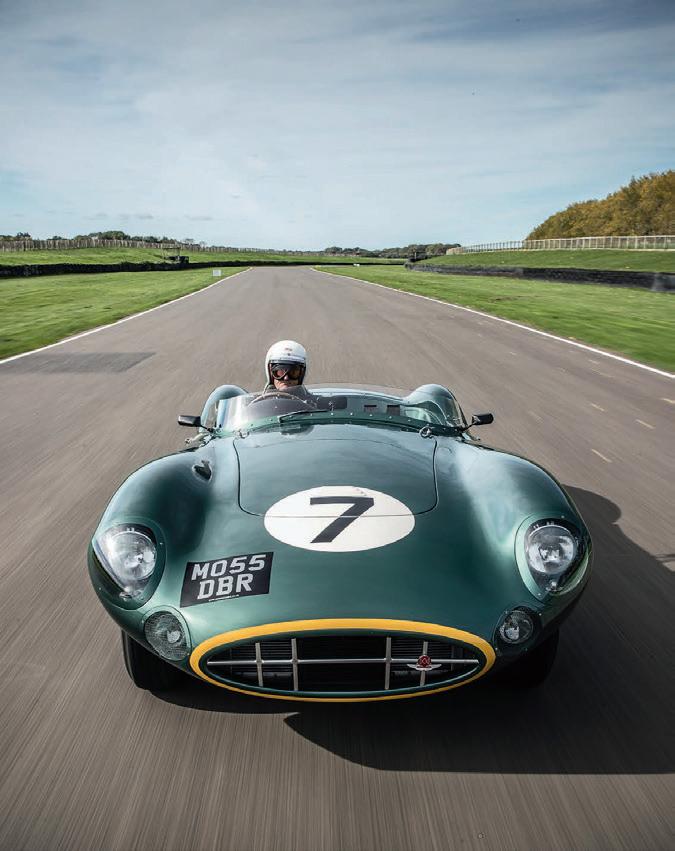
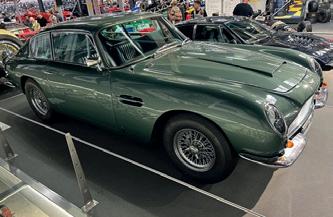
R&J Simpson Engineering renowned and trusted motorsport engineering company specialising in race car fabrication of aluminium monocoque’s wings fuel & oil tanks along with wishbones and upright fabrication. Our workshop is equipped with extensive machinery and equipment with long standing skilled sta to facilitate all your race car requirements. Full in house Cad drawing and CNC facility to machine uprights and parts from billet or cast in magnesium along with an extensive library of F1 F2 sports car chassis drawings to work from we can assist race car restoration as well as accident damage repairs and modifications.
We also specialise in Aston Martin replacement chassis built to order for DB4, DB4GT & Zagato, DB4GT lightweight and DB5 cars and we can also supply chassis repair parts.

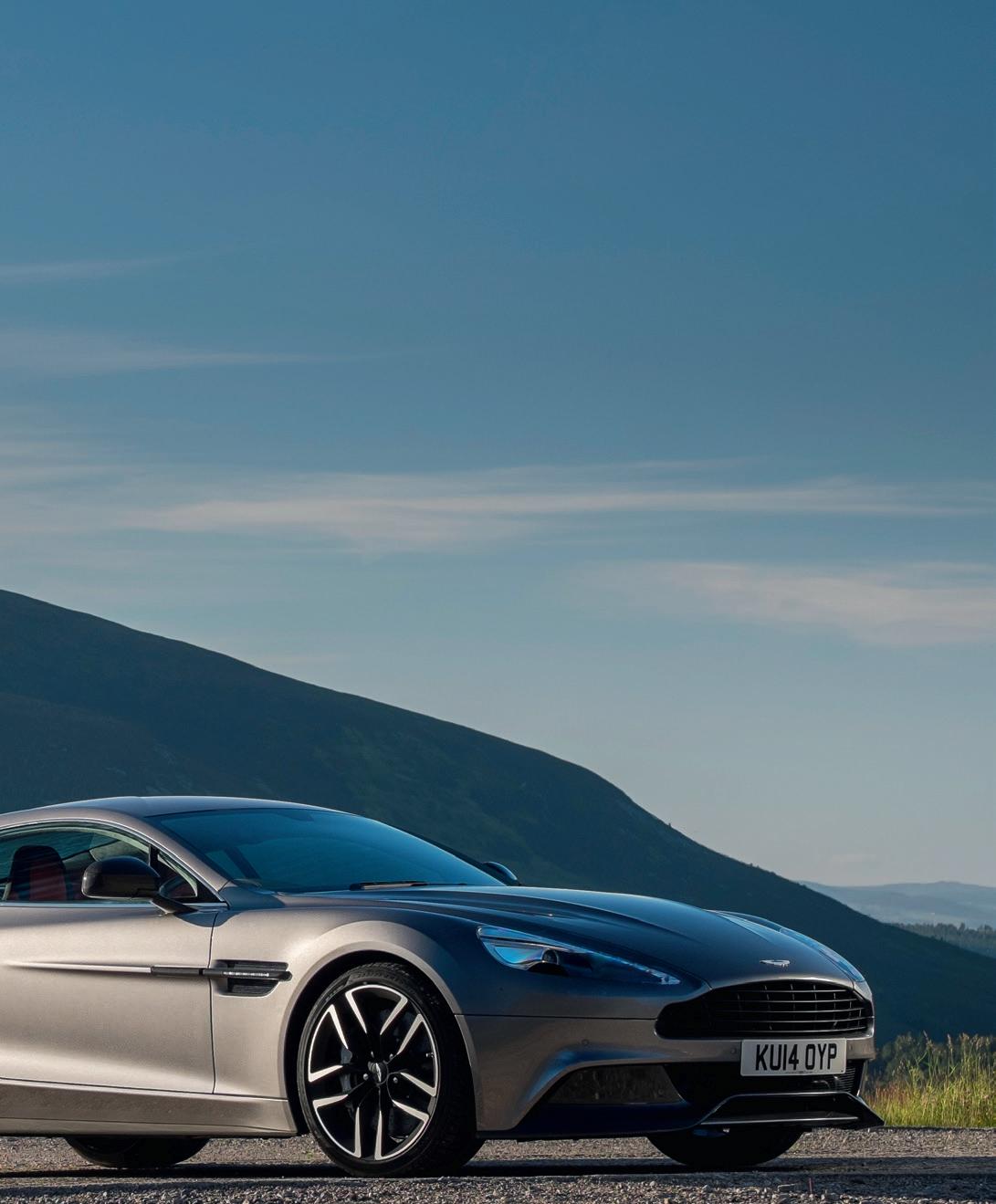
The second-generation Vanquish was Aston Martin’s flagship production car. It featured beautifully wrought carbonfibre bodywork. Most importantly, it was the last Aston with the iconic 5.9-litre naturally aspirated V12. For all of these reasons, and with good ones currently from c£70k, it makes a compelling secondhand buy
Gen-2 Vanquish’s body featured One-77-inspired side-strakes, while integrated rear aerofoil was a new departure
A FEW EYEBROWS WERE RAISED WHEN ASTON MARTIN resurrected the Vanquish name for its new series-production flagship in 2012. The original Newport Pagnell-built Vanquish had been a genuine game-changer, the car that heralded a new era for Aston with a new design language, new construction methods and performance and handling that took the brand to a whole new level. By comparison, the VH3 Vanquish, a direct replacement for the 2007-2012 DBS, looked and felt very much like an evolutionary step.
That said, it was an undeniably good-looking evolution, its lines taking a number of cues from the One-77 supercar, and, in something of a USP for the class, the outer body panels were made from carbonfibre, which had benefits for both rigidity and weight (though the Vanquish was no lightweight at 1739kg).
Underneath was an evolution of the aluminium VH platform that could be traced back to the DB9 of almost a decade earlier, and similarly the engine was the latest iteration of the by-then familiar 5.9-litre quad-cam V12, producing 565bhp in its latest tune (a useful increase on the DBS’s 510bhp), which translated to 0-60mph in 4.0sec and a 183mph top speed. Drive passed through an updated version of the well-proven ‘Touchtronic II’ ZF six-speed paddleshift auto, rear-mounted to help achieve a pretty much ideal 51/49 front/rear weight distribution. Other highlights included three-stage adaptive damping and carbon-ceramic brakes as standard and the first
appearance on an Aston of a launch control system. It was an impressive spec befitting a flagship car, as was a list price of £189,995 (equivalent to £275,000 today).
The Volante, released in 2013 and featuring a triple-layer electrically folding soft-top, was even more expensive at £199,995. In both, the tiny rear ‘+2’ seats were only really of use as an extra luggage platform. Speaking of which, the boots of both were usefully bigger than in the DBS, and the Volante’s didn’t lose any volume with the roof stowed.
In late 2014 a significantly revised Vanquish arrived for the 2015 model year, featuring a new eight-speed ‘Touchtronic III’ auto. Not only did it give quicker shifts but, combined with new Bosch engine management and a slight uplift in power and torque, the revised gearing dropped the 0-60mph time to 3.6sec and raised the top speed to 201mph. It also improved fuel economy to the tune of around 2mpg. New Bilstein dampers and other suspension tweaks completed the package.
In late 2016, the Vanquish S replaced the regular car, bringing an uprated 595bhp V12 plus revised aero, interior, transmission and suspension. This uprated spec was also shared with no fewer than four Zagato models: Coupé, Volante, Speedster and Shooting Brake, with prices ranging from £600,000 to £1m.
The final iteration was the Vanquish S Ultimate, launched in late 2017, loaded with all manner of bespoke options and carbonfibre goodies, of which just 175 examples were sold.
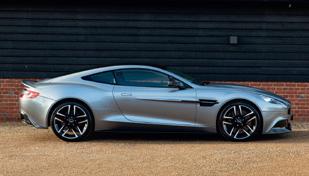
The staple of the
original, eight-speed from MY2015, more powerful S model or run-out S Ultimate. Almost 3000 built in all.


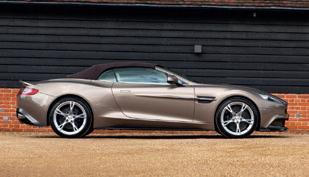
Echoed the Coupé’s progression but was built in considerably smaller numbers: 1341 in all, including final run of 54 Volante S Ultimates.

‘Underneath was an evolution of the aluminium VH platform that could be traced back to the DB9’

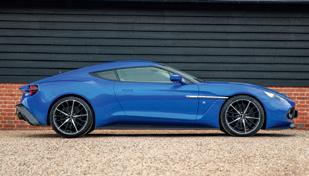
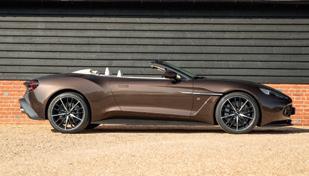
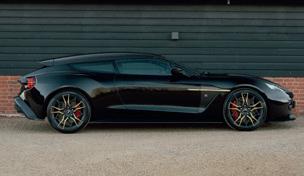
Second member of the Vanquish
family and again 99 were built. Not as rare as the
version though, of which just 28 were made.
LET’S CUT STRAIGHT TO THE CHASE. HOW MUCH DO YOU need to spend to put a really nice example of the last of the big naturally aspirated V12 Astons on your driveway? Browse the classifieds and you might see an early six-speeder for as little as £60,000, but before you splash your tax-free pension lump sum, a few words of wisdom from the experts.
Neal Garrard of Nicholas Mee & Co is a big fan of the gen-2 Vanquish. ‘The last of the first-generation Gaydon models; many consider them to be peak Aston Martin,’ he tells us. ‘You do see them for £60-65k, but at that level it’s probably higher mileage or gaps in the history. Our advice is look to spend at least £75k to get the right car; 10 per cent extra for a Volante.’
Post-2014 cars do generally fetch more (think £85k plus), but Garrard advises not to get too hung up on insisting on a car with the eight-speed ’box. ‘Some people actually prefer the gearing of the six-speed. Personally it wouldn’t be a red line for me. I’d just want the best car, with the right number of owners and service history, and the colours I wanted.’
A really nice Vanquish S is £110k-plus, an Ultimate around £130k – and currently undervalued at that, reckons Garrard. Zagatos today are around £300k for Coupé and Volante, up to £450k for the Shooting Brake and Speedster.
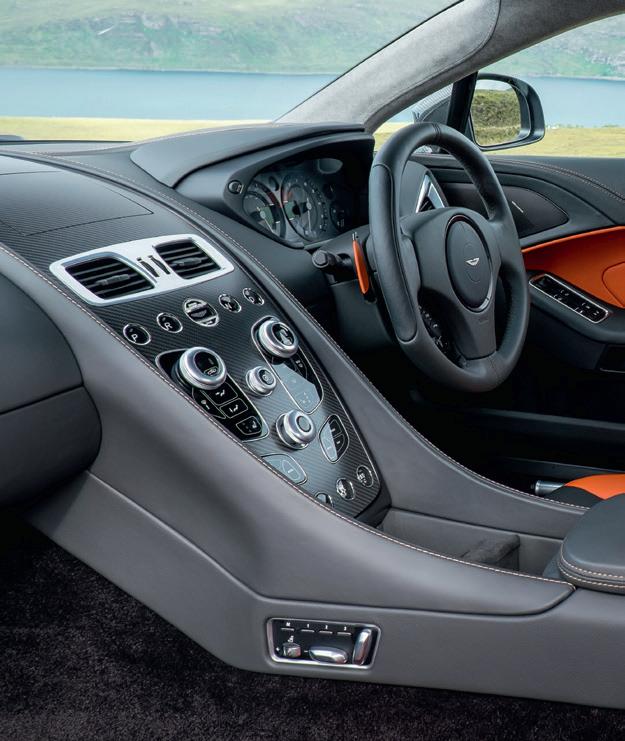
Above: all gen-2 Vanquishes are autos; post 2014 cars like this one had eight rather than six speeds and a slightly plusher interior
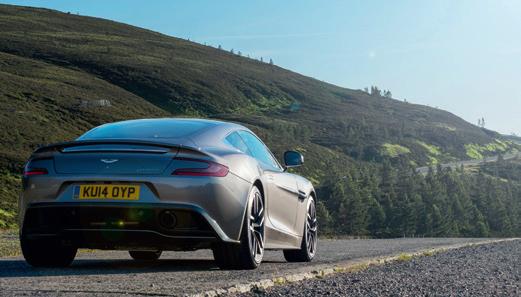
Buy well and there shouldn’t be any nasty surprises in store. ‘Fundamentally, the Vanquish was based on tried and tested technology and engineering,’ says Garrard, ‘being an evolution of the original VH platform and the V12 powertrain that had already been well-proven in the DB9 and DBS. The cars just continued to evolve and refine and improve. As a result, our experience is that the Vanquish is a robust and reliable model, generally requiring only regular maintenance and servicing.’
So, unsurprisingly, that service history is key. These were £200,000 cars when they were new, the production flagships of their day, and you want to be certain that no corners have been cut in their upkeep. So the first thing to look for is an unambiguous record of regular servicing, either within the official dealer network or by recognised specialists.
The official service intervals are every 12 months or 10,000 miles, whichever comes sooner, so in reality most cars receive an annual service ‘though we can live with 18-month intervals,’ says Garrard. Mee & Co charge from £970 for a standard service to £1392 for a major one, which is every four years.
They’re the same servicing costs that would apply to a V12 Vantage, DBS or DB9. But you also need to factor-in wear and tear items. The adaptive dampers are £2000-plus for a pair; a set of front brake pads will be £1250, and while tyre prices vary depending on brand, a set of new rears could cost up to £1000. Taking everything into account, Mee & Co reckon on an annual maintenance budget of £2000-£2500 over four years.
The good news is that component failure is relatively rare. The basic construction of that wonderful V12 engine stayed
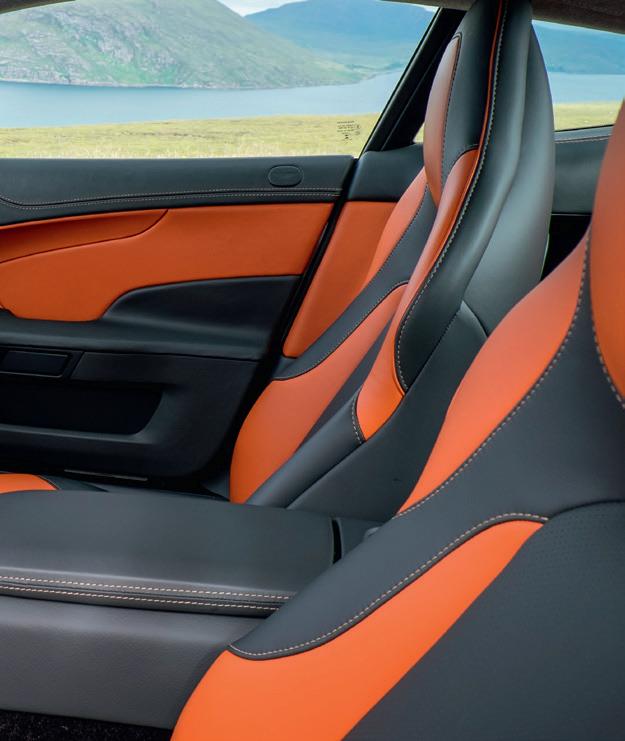
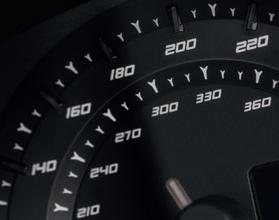
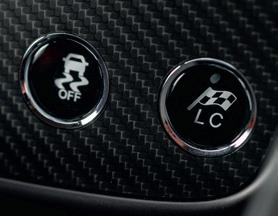
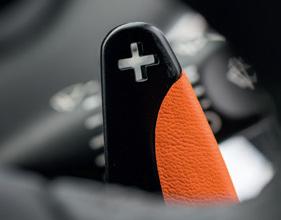

Exposed carbonfibre elements bring an extra touch of exoticism; gen-2 Vanquish was first Aston to have launch control as standard
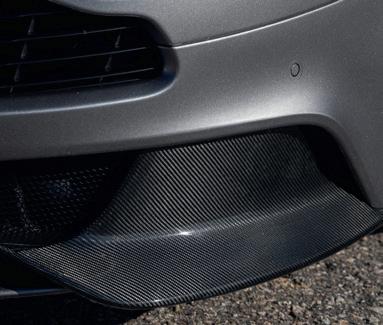
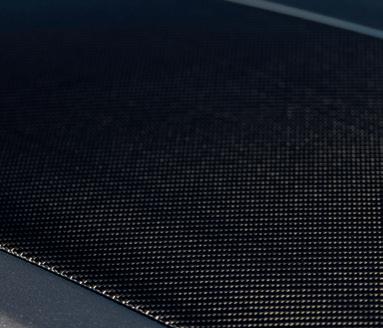
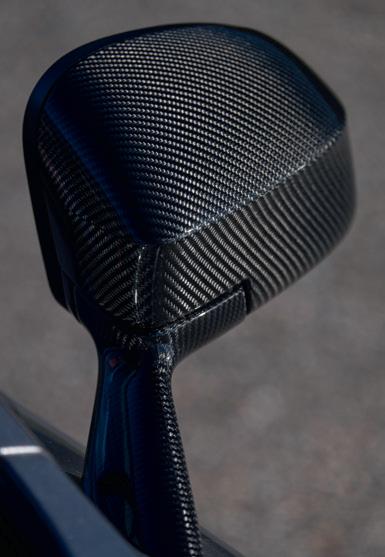
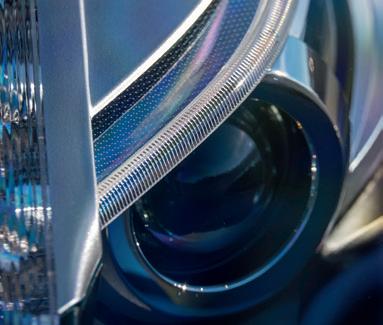
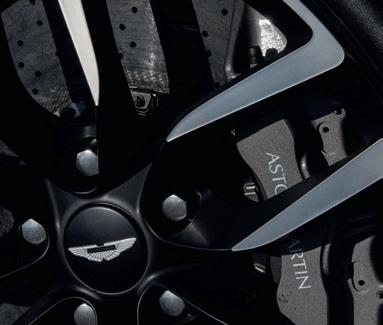
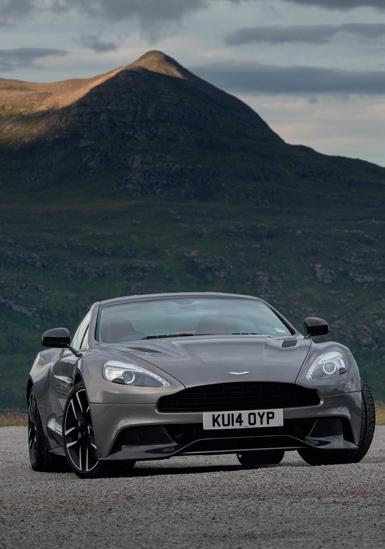
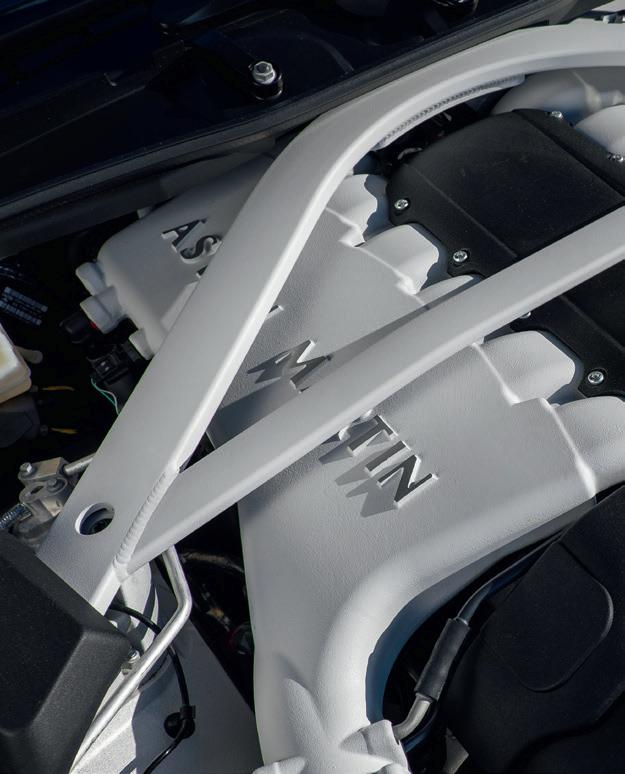

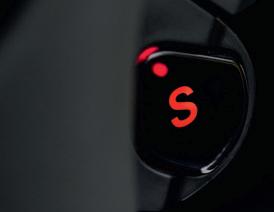
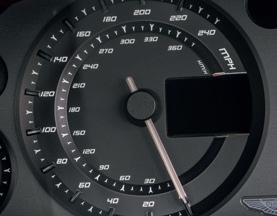
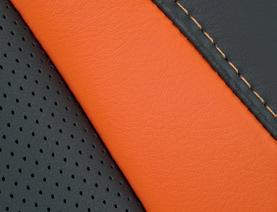

Aston has always called it a 6-litre, but with 5935cc we make it a 5.9; either way it’s a magnificent engine and gives few problems
‘Despite power growing from 420bhp in the DB7 Vantage to 595bhp in the gen-2
Vanquish S, the V12 has proved resilient’
pretty similar right through its life, and despite power outputs growing from 420bhp in the DB7 Vantage to 595bhp in the gen-2 Vanquish S, it has proved a resilient unit. ‘The V12 is pretty bombproof,’ says Garrard. ‘We rarely see an issue with the unit itself; the only failures we’ve seen have been down to lack of servicing. And the gearboxes are similarly robust.’
Coil pack failures are one of the few recurring issues with the V12, usually revealed by an engine warning light. ‘They just deteriorate with age, and there’s no particular pattern.
Some cars go five or ten years without issues, some need a replacement after two or three years.’ It makes sense to replace all the coils on each bank at the same time, which means you’re looking at up to four hours’ labour and a bill of around a grand per bank. So it’s well worth checking the history of any potential purchase to see if they’ve been done.
Also check the condition of the carbon-ceramic brakes (which Aston refers to as CCM, for Carbon Cermaic Matrix). Generally they last longer than the cast-iron equivalents, but Mee & Co service manager Chris Green says they’ve seen a number of cars with damaged/cracked discs, replacement of which can run into several thousands. ‘If treated correctly, they provide both improved braking performance and longevity compared with traditional discs,’ says Green. ‘We strongly advise owners to avoid using any wheel cleaning products that may contain corrosive materials – washing with soap and water is sufficient.’
One of the Vanquish’s USP’s is, of course, its carbonfibre bodywork, which means it doesn’t suffer from the localised paint bubbling and corrosion that can be found on other Gaydon-era Astons. And combined with the aluminium platform, it means that your only concern from a structural point of view is accident damage, so check the underside –every surface should be crisp and straight – and the bodywork for any unevenness that could point to repairs. The front splitter is quite vulnerable and a replacement will cost more than three grand (six grand for the S version, plus fitting). If you’re not confident of spotting any flaws, an independent specialist survey is money well spent.
‘There was a degree of cynicism when it was launched, that it was just a development of the DBS and didn’t really justify the Vanquish name,’ reflects Neal Garrard. But that faded as the press and public discovered just what a fine car the gen-2 Vanquish was. By the time it went off sale in 2018, some 4500 had been sold across all variants (compared with 3400 DBSs and around 2600 first-gen Vanquishes). Which means that while it’s still rare enough to be an event when you see one, there’s always a good selection available at all price points.
At time of going to press, modern Aston specialist McGurk had a 24,500-mile, two-owner, 2014 six-speed car for £73,850. At the other end of the scale, Nicholas Mee & Co were offering a delivery mileage Zagato Shooting Brake for £450,000. And both of them fully deserving of being called Vanquish.
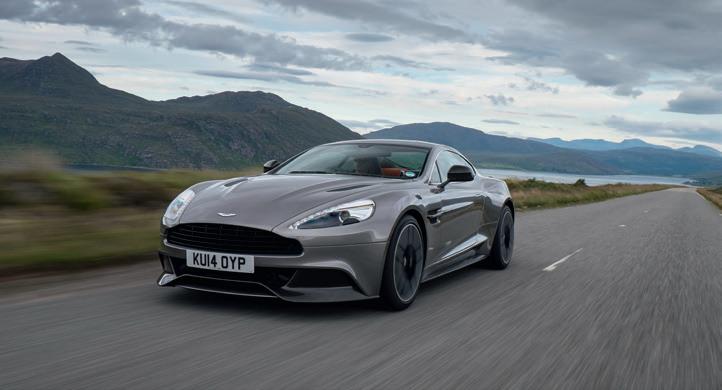
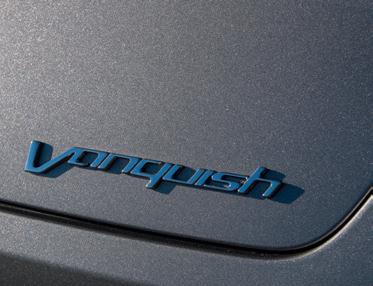
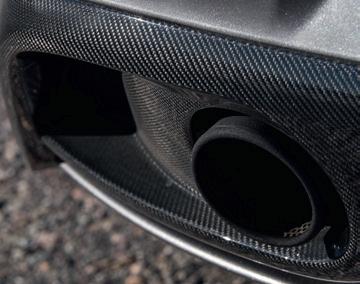
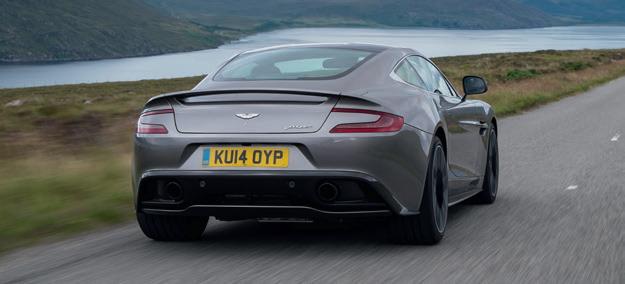
BACK IN 2021 (ISSUE 33), WE COMPARED AN EARLY MK2 Vanquish with four other V12 Astons: Mk1 Vanquish, DBS, V12 Vantage S and Rapide S. This was what we found:
‘The original Vanquish was always going to be a tough act to follow. Where the Mk1 was a design and technology pathfinder, the Mk2 initially fell between the cracks, making big strides in use of carbonfibre and increasing occupant space, but suffering from being behind the curve on powertrain and infotainment.
Nevertheless, if there’s a sleeper of the group it’s the Mk2 Vanquish. Even in the company of our other V12s it has immense presence, thanks to a design heavily influenced by the One-77 and an impression of freshness and modernity compared to the more familiar shapes in the test. It’s a busier design that injects more drama than the earlier cars – a more overt attention-grabber, if you like.
The interior continues this approach, with intricately embroidered upholstery and headlining that’s a significant departure from the understatement of the earlier cars. The ‘waterfall’ dashboard has a larger panel featuring an array of smooth haptic switches, which pulse when you touch them.
Analogue dials fill the instrument binnacle, while an unusual faceted steering wheel adds further One-77 flavour and feels far better than you might expect.
It seems like an awful lot of car for the price bracket, and this is one of the early cars with the 565bhp/457lb ft engine
and six-speed Touchtronic gearbox rather than one of the later pre-S cars fitted with the more powerful AM29 V12 and eight-speed gearbox, which together lifted the top speed to 201mph (from 183mph) and shaved half a second from the early car’s 4.1sec 0-60mph time.
When new, these early Mk2s were criticised for feeling somewhat reluctant to give the full extent of their performance. The criticism was valid, but switching into Sport mode awakens the engine and transmission nicely, while a separate range of suspension modes gives scope to tailor the ride and handling.
The damping is generally pretty firm, with what is arguably a more aggressive default ride quality than you might expect from a super-GT car. This said, the engine is vibrant and vocal once enlivened in Sport mode. When Aston billed this generation of Vanquish as a super-GT it signalled a desire to be up there with a Ferrari 599 or F12. It never had the ferocity or firepower to stand that comparison, but it was and remains a driving experience that’s as impressive as you’d hope, and distinct from the earlier VH cars.
The later Vanquish S saw the model become a faster and more complete flagship, but there’s much to love about these early cars. A timelessly handsome and big-hearted car that’s quick when roused, tautly suspended and blessed with handling that’s more agile and precise than the car’s size suggests. An underrated and overlooked Aston, the Mk2 Vanquish deserves to find a growing following.’
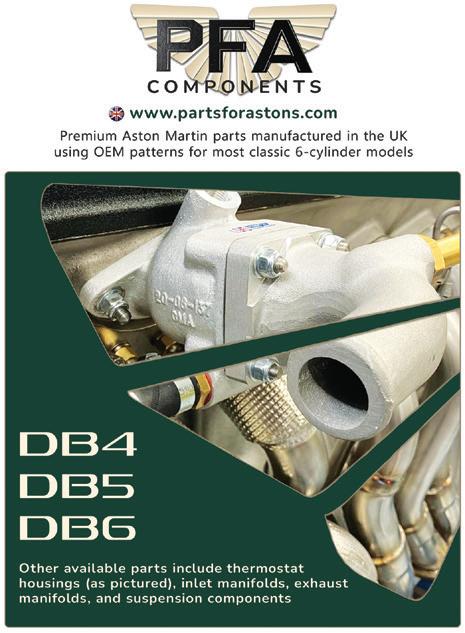

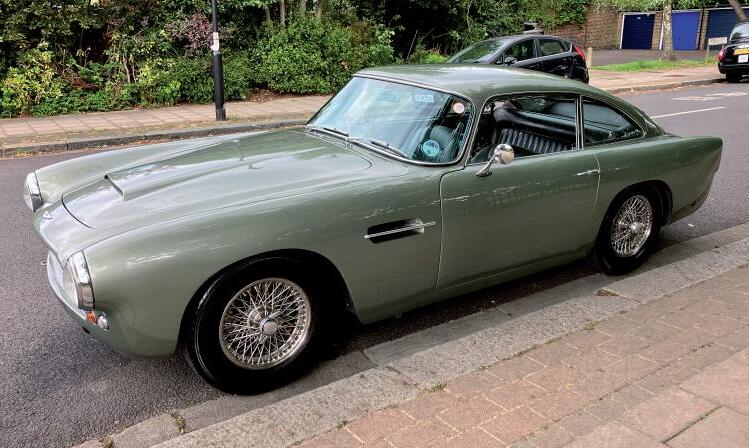


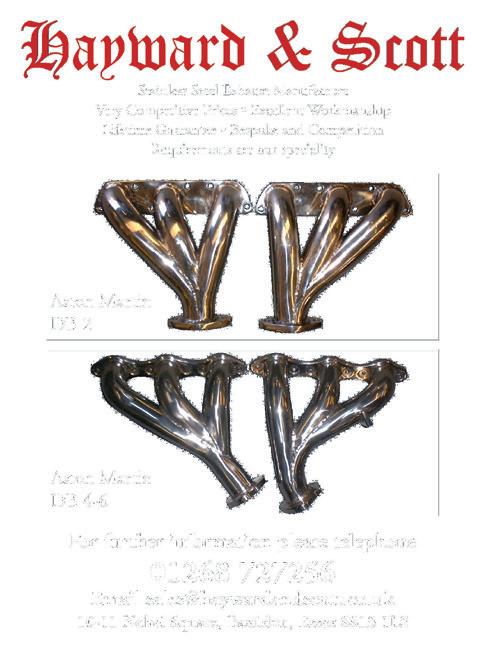
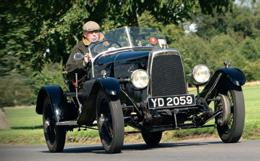
ENGINE 1.5-litre in-line 4
POWER 55bhp
TORQUE n/a
0-60MPH n/a TOP SPEED 90mph
Although the first ‘Aston-Martin’ had been created in 1915, the Great War meant production didn’t actually start until 1920. And because the early years were all about motorsport, it wasn’t until 1923 that cars went on sale to the general public. The Sports was advanced for its time, with four-wheel brakes and a fully floating rear axle, and in Super Sports form it got a twin-cam, 16-valve four with a lusty 55bhp. Business was tough, though, and after around 60 cars had been sold, the company went into receivership in 1925.
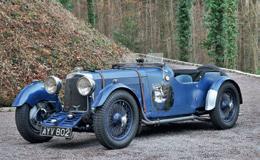
ENGINE 1495cc, in-line 4
POWER 70bhp
TORQUE n/a
0-60MPH n/a TOP SPEED 85mph
Price reductions, made possible by out-sourcing more components, and continuing motorsport success at Le Mans and elsewhere helped lift sales of what are now known as the Second Series cars. Particularly well received was the Le Mans (above) introduced in 1932. Its high-compression engine pushed power up from 60 to 70bhp. Tourers and saloons were still built but were overshadowed by the sports cars – more than 100 examples were sold of the Le Mans alone. There was also a (much rarer) four-seater version.
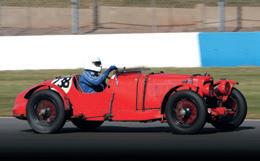
Specification
ENGINE 1495cc, in-line 4
POWER 85bhp
TORQUE n/a
0-60MPH n/a TOP SPEED 100mph
Most revered of all the early Astons, the Ulster was named in celebration of the Works racers’ success in the 1934 Tourist Trophy and was effectively a replica of those factory cars. With power now up to 85bhp from the latest version of the 1.5-litre ohc four, it was enough for Aston to guarantee a 100mph top speed. These cars are distinguished by their sleek body and boat-shaped tail, which houses a horizontally mounted spare wheel. Twenty-one Ulsters were built, all of which are believed to have survived.
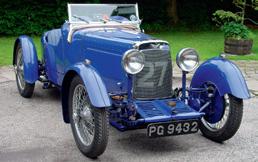
ENGINE 1495cc, in-line 4
POWER 56bhp
TORQUE n/a
0-60MPH n/a TOP SPEED 80mph
With new financial backers, a new factory in Feltham and a new ohc 1.5-litre engine, the era of ‘Bertelli’ Astons began in 1927. There were sports and competition models, and also a tourer and a saloon, while 1929 saw the introduction of the low-slung, dry-sumped International model (pictured), based on the company’s widely successful racing cars of the day. The International was fast and refined but the price was high and sales remained slow. In all, 129 ‘First Series’ cars were produced.
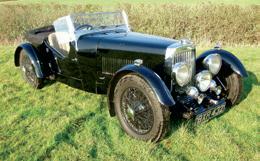
Specification
ENGINE 1495cc, in-line 4
POWER 73bhp
TORQUE n/a
0-60MPH n/a TOP SPEED 85mph
The MkII was a development of the Second Series, intended to be a more useable yet faster version. A new balanced crankshaft assembly and a few other minor mods to the 1.5-litre engine saw peak power rise to 73bhp, though the top speed for the two-seater remained at 85mph. Short- and long-chassis versions were available with a number of different bodies, including tourer, two-door saloon and drophead coupe. A short chassis with lightweight body was adopted as the Works car and ultimately became the Ulster.
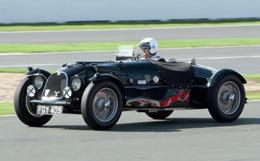
Specification
ENGINE 1949cc, in-line 4
POWER 110bhp
TORQUE n/a
0-60MPH n/a
TOP SPEED 95mph
To broaden the appeal of its range, in 1936 Aston introduced a 2-litre engine, based on the 1.5 but with increased bore and stroke and domed pistons. The Speed model was created for the 1936 Le Mans, though in the event the race was cancelled. Some 25 were eventually sold. In 1938 it was decided that eight leftover Speed chassis should be used to create a more ‘modernlooking’ Aston. The resulting Type C, with rather bulbous bodywork, didn’t go down well with enthusiasts and the last one sold at Christmas 1940.
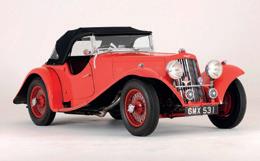
ENGINE 1949cc, in-line 4
POWER 98bhp
TORQUE n/a
0-60MPH n/a TOP SPEED 85mph
Using the new 2-litre engine in wet-sump form, the 15/98 range (15 from the RAC rating, 98 the peak bhp) included saloons and tourers, but they were heavy and hence slow (slow-selling, too: a planned run of 100 cars was slashed to 50). Better was an attractive short-chassis roadster (above). There was also a unique ‘monoposto’ streamlined single-seater designed to go for the 2-litre outer circuit record at Brooklands. The outbreak of war meant it was put into storage before its potential could be realised.

Specification
ENGINE 2580cc, in-line 6
POWER 105bhp
TORQUE n/a
0-60MPH 12.4sec
TOP SPEED 116mph
The DB2 was the first officially to wear the initials of Aston’s new owner, David Brown. It also featured the marque’s first six-cylinder engine – in fact a Lagonda unit designed under WO Bentley and picked up when Brown acquired Lagonda shortly after bagging Aston. This 2.6-litre twin-cam was initially temperamental, but once sorted endowed the sleek, Frank Feeleydesigned DB2 with impressive performance, especially in 125bhp Vantage form from 1951. A total of 411 DB2s were built, including 102 dropheads.
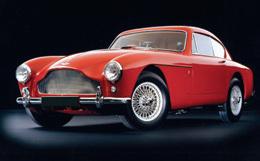
ENGINE 2922cc, in-line 6
POWER 162bhp @ 5500rpm
TORQUE n/a
0-60MPH 9.3sec
TOP SPEED 120mph
The MkIII (note: not DB3) was effectively the third series of the DB2/4, but Aston dropped the ‘2/4’ bit for its 1957-1959 range of coupés, dropheads and fixed-heads. The lines were smoother and more purposeful, the grille previewing decades of Astons to come, and even in its lowliest tune the LB6 was now making well over 150bhp (up to 190bhp on triple Webers). The MkIII actually overlapped with the introduction of the DB4 by several months, and total production hit 551. Buying guide, Vantage issue 15.
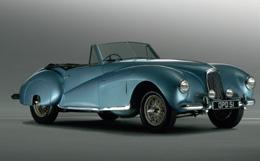
ENGINE 1970cc, in-line 4
POWER 90bhp
TORQUE n/a
0-60MPH n/a TOP SPEED 93mph
Retrospectively known as DB1, the 2-litre Sports was the first production Aston Martin to appear after the Second World War and the first under the ownership of wealthy industrialist David Brown. It was based largely on a pre-war prototype known as the Atom, and it featured refinements such as all-round coil spring suspension as well as a new 2-litre pushrod fourcylinder engine designed by Claude Hill. Lacklustre performance, largely a result of the heavy body, and a high price meant only 14 examples were sold.
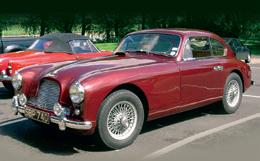
Specification
ENGINE 2922cc, in-line 6
POWER 140bhp
TORQUE n/a
0-60MPH 10.5sec
TOP SPEED 120mph
The ‘4’ tacked onto the end of the DB2’s title denotes the addition of two extra seats. The 2+2 seating was made more habitable by a higher rear roofline, and there was a handy ‘hatchback’ too. The extra weight slightly took the edge off the performance, so Aston boosted capacity to 2.9 litres in 1954, taking power to 140bhp. The MkII of 1955 incorporated a rear-end restyle, and there was also a rare ‘notchback’ fixed-head coupé version of the drophead. Around 750 DB2/4s were produced in total.
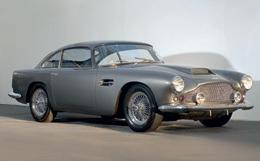
Specification
ENGINE 3670cc, in-line 6
POWER 240bhp @ 5500rpm
TORQUE 240lb ft @ 4250rpm
0-60MPH 9.0sec
TOP SPEED 140mph
The definitive Aston shape was born with the DB4, the work of Italian design house Touring, whose ‘Superleggera’ construction involved aluminium bodywork wrapped around a steel skeleton frame. The DB4 also introduced a new, Tadek Marek-designed all-alloy twin-cam straight-six, originally in 240bhp 3.7-litre form. In all there were five series of DB4s, each adding subtle refinements to the original formula. Vantage versions saw power rise to 266bhp. Total production: 1210. Buying guide, Vantage issue 22.
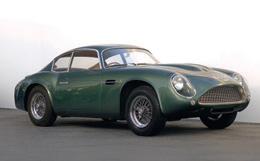
Specification (Zagato)
ENGINE 3670cc, in-line 6
POWER 314bhp @ 6000rpm
TORQUE 278lb ft @ 5400rpm
0-60MPH 6.1sec TOP SPEED 154mph
In 1959, Aston introduced the DB4 GT, a lighter, short-wheelbase competition version of the DB4 with a twin-plug 302bhp engine. A number of chassis were also sent to Zagato to be clothed in even lighter aluminium bodywork, while further tuning lifted peak power to 314bhp. These Zagatos today command vast sums. Incredible to tell, then, that the original planned run of 25 was reduced to 20 because of lack of take-up, the unused chassis numbers eventually recycled in the ’90s as ‘Sanction’ cars.
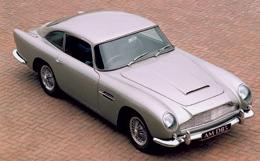
ENGINE 3995cc, in-line 6
POWER 282bhp @ 5500rpm
TORQUE 288lb ft @ 3850rpm
0-60MPH 8.0sec
TOP SPEED 145mph
Really another evolution of the DB4 (it would have been Series 6), the DB5 is revered in its own right – and famous above all other Astons – wholly because of its role in the James Bond film franchise. New was the 4-litre engine and the option of a five-speed gearbox, which soon became standard. Regular DB5s had 282bhp, the Vantage 314bhp. The Convertible version was succeeded in 1965 by the ultra-rare ‘Short Chassis Volante’ model, the first use of the Volante name. Total production: 1023. .
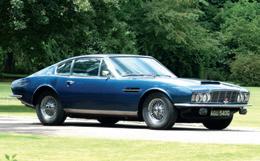
ENGINE 3995cc, in-line 6
POWER 282bhp @ 5500rpm
TORQUE 288lb ft @ 3850rpm
0-60MPH 8.4sec
TOP SPEED 140mph
The DBS ushered in a whole new look for Aston, its modern lines the work of Englishman William Towns. It was also supposed to introduce Tadek Marek’s all-new 5.3-litre V8 engine, but that wasn’t ready in time, so the DBS was launched with the familiar straight-six from the DB6 (the two models ran concurrently for three years). The 310bhp V8 was finally available from 1969, but the six-cylinder continued until 1972 as the entry-level Aston. Some 787 six-cylinder DBSs were built, and 402 V8s.
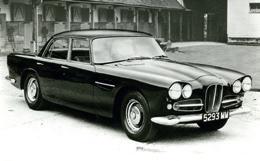
ENGINE 3995cc, in-line 6
POWER 236bhp @ 5000rpm
TORQUE 265lb ft @ 4000rpm
0-60MPH 9.0sec TOP SPEED 130mph
David Brown had bought Lagonda in 1947, shortly after buying Aston Martin. He wanted it chiefly for its Bentley-designed straight-six, but production of the pre-DB Lagonda models continued until 1958. The Lagonda name then vanished for several years, but in 1961 it reappeared on a new four-door saloon based on the DB4 but with the 4-litre engine that would soon power the new DB5. The Rapide (an old Lagonda model name) was fast and capable but the front styling was awkward and only 55 were sold in four years.
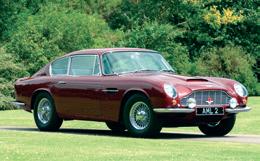
Specification
ENGINE 3995cc, in-line 6
POWER 282bhp @ 5500rpm
TORQUE 288lb ft @ 3850rpm
0-60MPH 8.4sec TOP SPEED 150mph
A longer wheelbase and extended roofline – ending in a distinctive cut-off ‘Kamm’ tail – made the DB6 a decent four-seater, while its slightly heavier build, softer ride and the options of an automatic gearbox and air-con showed that the DB line was now firmly in GT territory. The base engine was carried over from the DB5, though the Vantage now produced a claimed 325bhp. Volante came in 1966. The Mk2, which arrived in July 1969, had flared wheelarches over wider wheels. Total production: 1967.
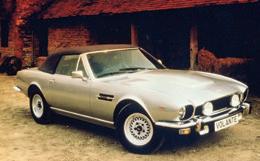
Specification
ENGINE 5340cc, V8
310bhp @ 5500rpm
360lb ft @ 3500rpm
0-60MPH 5.7sec
SPEED 155mph
If the ’60s were Aston’s golden era, the ’70s saw the glow fade with frequent financial crises. David Brown had sold up, so the DBS V8 became the AM V8, while the mechanical fuel injection system was dropped in favour of four Weber carburettors. Early cars had around 310bhp, but emissions regs saw that figure diminish through the decade. Volante arrived in 1978, electronic fuel injection in 1986. In its various guises, the V8 would soldier on for almost 20 years, in which time 4021 were built.
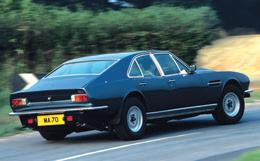
Specification
ENGINE 5340cc, V8
POWER 280bhp @ 5500rpm
TORQUE 301lb ft @ 3500rpm
0-60MPH 6.2sec
TOP SPEED 149mph
Based on the AM V8 but with a stretched wheelbase, this 1974 saloon was the first car since the 1961 Rapide to wear the Lagonda badge, and it was not a success. Most of the blame can be attached to the 1974 oil crisis, which seriously limited the appeal of any V8-powered supersaloon, let alone one that would rarely see mpg in double figures. In fact the Lagonda was an impressive and capable machine, but during the two years of production just seven were sold (though another was later assembled from parts).
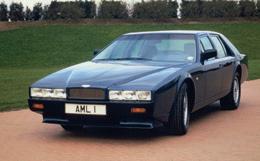
ENGINE 5340cc, V8
POWER 280bhp @ 5500rpm
TORQUE 301lb ft @ 3000rpm
0-60MPH 8.8sec
TOP SPEED 143mph
One of the most extraordinary cars ever to reach production, the William Towns-designed Lagonda caused a sensation when it was unveiled in 1976. Its advanced but troublesome electronics delayed production for almost two years, and the price was stratospherically high, but it eventually found a market in the Middle East and stayed in production for more than a decade, during which 645 were sold. Under the bonnet was the familiar V8, its performance somewhat blunted by the two-ton kerbweight.
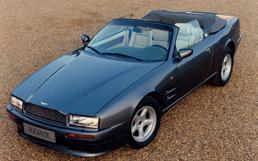
ENGINE 5340cc, V8
POWER 330bhp @ 6000rpm
TORQUE 350lb ft @ 3700rpm
0-60MPH 6.0sec
TOP SPEED 155mph
By the mid-’80s the AM V8 was living on borrowed time, and, under the direction of Victor Gauntlett, Aston began work on a replacement. The Virage was largely still based on the V8, but its new body (by John Heffernan and Ken Greenley), an updated 32-valve fuel-injected V8 and other refinements were enough to give Aston new impetus. In 1992 came the Volante version, and also a Works-developed 500bhp 6.3 monster with widened bodywork. Sales of all variants reached 1050.
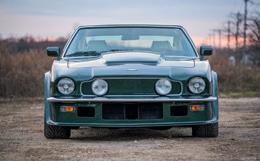
ENGINE 5340cc, V8
POWER 375bhp @ 5500rpm
TORQUE n/a
0-60MPH 5.3sec TOP SPEED 170mph
Often described as ‘Britain’s first supercar’, the Vantage of 1977 was based on the AM V8 but was now a model-line in its own right. With a 375bhp version of the 5.3-litre V8 (later 410bhp) and a top speed of 170mph, it was pitched head-to-head with the Ferrari BB and Lamborghini Countach for the title of world’s fastest car. With its blanked-off grille and bonnet scoop, deep air dam and bootlid spoiler, it certainly looked the part. When production ended in 1989, 534 had been built, 192 of them Volantes.
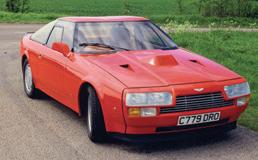
ENGINE 5340cc, V8
POWER 432bhp @ 6250rpm
TORQUE 400lb ft @ 5000rpm
0-60MPH 4.8sec
TOP SPEED 186mph
Resurrecting the partnership with Italian design house Zagato in the mid-’80s was a masterstroke by Aston’s then-boss Victor Gauntlett, especially when all 50 coupés were immediately snapped up at £87,000 a pop (37 Volante convertibles were also built). The ’80s Zagato couldn’t match the beauty of the ’60s original, but its performance was sensational. Based on the V8 Vantage but with even more power and lighter too, it broke 5sec to 60mph and was verified at 185.8mph, making it the fastest Aston yet.
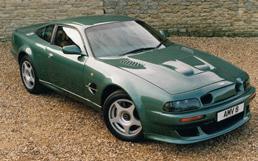
Specification (V600)
ENGINE 5340cc, V8, twin s/c
POWER 600bhp @ 6200rpm
TORQUE 600lb ft @ 4400rpm
0-60MPH 4.6sec
TOP SPEED 190mph+
Works’ 6.3-litre V8 had shown the appetite for a faster Virage, and in 1993 came the full-house Vantage, extensively restyled (only roof and doors were carried over) with a twin-supercharged version of the 5.3-litre engine providing 550bhp and 550lb ft – at the time the most powerful production engine in the world. In 1998 came the V600, with an additional 50bhp –enough to propel this near-two-ton monster to a reported 200mph. A final run of 40 ‘Le Mans’ editions brought total production to 279.
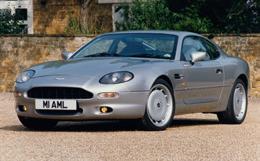
ENGINE 3228cc, in-line 6, s/c
POWER 335bhp @ 5750rpm
TORQUE 361lb ft @ 3000rpm
0-60MPH 5.8sec TOP SPEED 157mph
Aston couldn’t survive building handfuls of handbuilt supercars; a more affordable model was needed. Ford, who had bought a majority share in AML in 1987, knew this and in 1994 launched the Ian Callum-styled DB7 –evoking memories of the 1960s DB cars – with a supercharged 3.2-litre straight-six and a steel monocoque that had its origins at Jaguar. A Volante followed in 1996. Sales of all variants (including the Vantage) eventually topped 7000, making it by far the most numerous Aston at that point.

ENGINE 5935cc, V12
POWER 420bhp @ 6000rpm
TORQUE 400lb ft @ 5000rpm
0-60MPH 4.9sec TOP SPEED 185mph
The DB7 was given a major fillip in 1999 with the launch of the Vantage, its styling beefed up by Ian Callum and with the first appearance of a brandnew 5.9-litre V12 engine that would go on to power the next generation of flagship Astons. With reworked suspension too, the Vantage was a significant step on from the six-cylinder DB7 but cost just a few thousand pounds more – it was no surprise that sales of the standard car dried up and it was quickly phased out. The desirable run-out Vantage GT had 435bhp.
2004-2016
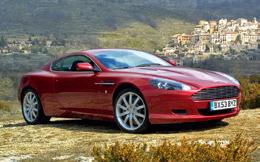
Specification
ENGINE 5935cc, V12
POWER 450bhp @ 6000rpm
TORQUE 420lb ft @ 5000rpm
0-60MPH 4.6sec
SPEED 190mph
The DB9 was effectively the successor to the highly successful DB7 Vantage, with the latest version of the 5.9-litre V12, a Touchtronic auto option, and the first appearance of the largely aluminium ‘VH’ platform, all clothed in another gorgeous Ian Callum body, refined by his successor, Henrik Fisker. It was also the first Aston to be built at Gaydon. Volante arrived in 2005, and in 2008 power grew to 470bhp. For 2013 the car was given a major refresh, now with 510bhp. End-of-line GT version had 540bhp.
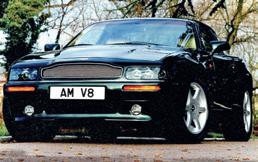
ENGINE 5340cc, V8
POWER 349bhp @ 6000rpm
TORQUE 369lb ft @ 3700rpm
0-60MPH 5.9sec TOP SPEED 155mph+
With the Virage running out of steam in the mid-1990s, Aston Martin relaunched the model as the V8 Coupé – basically a Virage with revised looks inspired by the twin-supercharged Vantage, including its faired-in headlamps and four round tail-lights. Power was slightly up, acceleration slightly sharper and top speed was quoted, not terrribly helpfully, as ‘over 155mph’. An improvement in almost every way over the Virage, sales were however glacially slow. Just 101 Coupés and 63 Volantes were sold.
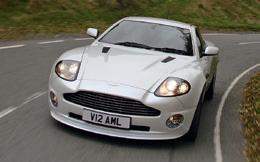
Specification
ENGINE 5935cc, V12
POWER 460bhp @ 6500rpm
TORQUE 400lb ft @ 5000rpm
0-60MPH 4.5sec TOP SPEED 190mph
While DB7s were rolling out of a new factory at Bloxham, back at Newport Pagnell an all-new flagship model was in development. Launched in summer 2001, the Ian Callum-penned Vanquish had a 460bhp version of the V12 engine and a bonded aluminium platform. The automated paddleshift manual gearbox was criticised initially for its slow responses. This was improved, as was the handling, for the 520bhp Vanquish S launched in 2004. A total of 1502 standard cars and 1086 ‘S’s were sold.
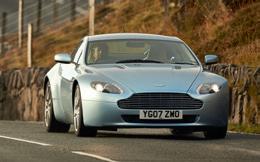
Specification (4.3)
ENGINE 4281cc, V8
POWER 380bhp @ 7000rpm
TORQUE 302lb ft @ 5000rpm
0-60MPH 4.8sec TOP SPEED 175mph
Aston Martin’s answer to Porsche’s 911 and originally conceived as a mid-engined car. Compact and more overtly sporting than the DB9, the Callum/Fisker-styled V8 Vantage eventually overtook the DB9 to become the biggest seller yet, with more than 22,000 finding homes. Its Jaguar-derived quad-cam V8, originally a 4.3 (4.7 litres and 420bhp from 2008) gave brisk performance and an extrovert soundtrack – best enjoyed in the Roadster, which arrived in 2007. The ‘S’, with 430bhp, came in 2011.
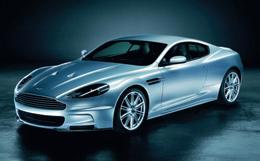
Specification
ENGINE 5935cc, V12
POWER 510bhp @ 6500rpm
TORQUE 420lb ft @ 5750rpm
0-60MPH 4.2sec TOP SPEED 191mph
Resurrecting a name from the late ’60s, the DB9-derived DBS replaced the early-noughties Vanquish as the flagship production car in 2007 and gained extra cachet when it was adopted as 007’s company car when Daniel Craig debuted as Bond in Casino Royale. With power ramped up to 510bhp, aggressive styling and harder-edged dynamics, the DBS was Mr Hyde to the DB9’s Dr Jekyll. Early cars were manual only, and a Volante appeared in 2009. In all, 2534 coupés were built, and 845 Volantes.
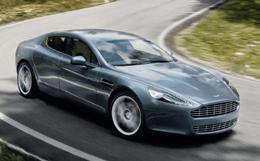
Specification
ENGINE 5935cc, V12
POWER 470bhp @ 6000rpm
TORQUE 443lb ft @ 5000rpm
0-60MPH 5.0sec
TOP SPEED 184mph
With Porsche enjoying success with its Panamera saloon and new markets opening up for luxury cars, it was only a matter of time before Aston spun a four-seater saloon from its VH platform. The Rapide went into production in late 2009, initially at Magna Steyr in Austria. Despite (or perhaps because of) its sports car-like dynamics, sales weren’t as strong as Aston hoped, and production moved to Gaydon in late 2012. Relaunched as the Rapide S for 2013 with a deeper new front grille and 550bhp.
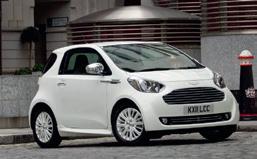
Specification
ENGINE 1330cc, in-line 4-cyl
POWER 97bhp @ 6000rpm
TORQUE 92lb ft @ 4400rpm
0-60MPH 11.6sec
TOP SPEED 106mph
Based on the Toyota iQ, the Cygnet was designed to deliver Aston levels of style and opulence in a city car. Extensively rebodied to incorporate familiar Aston design cues and retrimmed in sumptuous leather, but mechanically unchanged, it wasn’t without appeal as a city runabout but on the open road it was no performance car. At £30,995, it was also breathtakingly expensive. Ulrich Bez, whose baby it was, hoped it would sell by the thousand, but with just 670 sold it was quietly dropped in 2013.
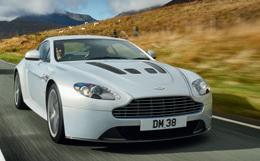
ENGINE 5935cc, V12
POWER 510bhp @ 6500rpm
TORQUE 420lb ft @ 5750rpm
0-60MPH 4.1sec
TOP SPEED 190mph
Shoehorning the 5.9-litre V12 into the compact Vantage shell created one of Aston Martin’s finest drivers’ cars. Distinguished by its bonnet vents, the V12 built on the V8’s agility and added another level of performance and desirability. Roadster arrived in 2012 (just 101 built) and the 565bhp ‘S’ in 2013 – with a top speed of 205mph, it was the fastest series-production Aston so far. The total production number for all variants is just over 3000, including the Zagato version, just 63 of which were built.
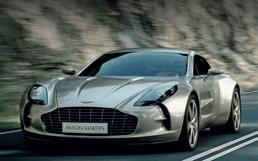
Specification
ENGINE 7312cc, V12
POWER 750bhp @ 7600rpm
TORQUE 553lb ft @ 6000rpm
0-60MPH 3.6sec
TOP SPEED 220mph+
Aston’s answer to the Bugatti Veyron and Pagani Zonda hypercars was the One-77, a no-expense-spared, handbuilt, all-carbonfibre rocketship with the world’s most powerful naturally aspirated engine (some have recorded an astonishing 772bhp) and an equally gobsmacking £1.15m price-tag. Strictly limited to 77 examples, the last was delivered in August 2012, though Aston retains one for PR work. The few who have been lucky enough to experience the One-77 describe it as challenging, rewarding and utterly thrilling.
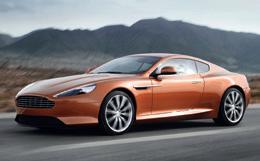
Specification
ENGINE 5935cc, V12
POWER 490bhp @ 6500rpm
TORQUE 420lb ft @ 5750rpm
0-60MPH 4.5sec
TOP SPEED 186mph
Bringing back a name from the 1990s, the 2011 Virage slotted into the range between the DB9 and the DBS – and even avid Aston fans wondered if it wasn’t a variant too far. The idea was to sell a more aggressive car than the DB9 (but one that wasn’t as extreme as the DBS). All the panels except the roof were subtly restyled, while the V12 gained an extra 20bhp, though the overall feel was still very much GT. Sales were slow and the Virage name was soon dropped, the car effectively becoming the updated DB9 for 2013.
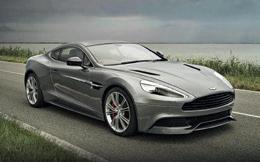
Specification
ENGINE 5935cc, V12
POWER 565bhp @ 6650rpm
TORQUE 465lb ft @ 5500rpm
0-60MPH 3.6sec TOP SPEED 201mph
The original Vanquish had been a landmark car, and it was a brave move to resurrect the name for a new series-production flagship. If the new car wasn’t quite the same game-changer, the combo of aggressively shaped carbonfibre bodywork, a 565bhp V12, adaptive damping and carbon brakes was still an intoxicating one. A Volante arrived in late 2013, and in late 2014 both versions got a refresh that included an eight-speed gearbox. Uprated Vanquish S with 592bhp (and three Zagato derivatives) launched late 2016.
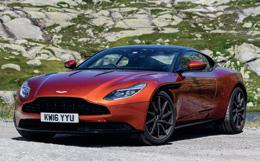
Specification
ENGINE 5204cc, biturbo V12
POWER 600bhp @ 6500rpm
TORQUE 516lb ft @ 1500rpm
0-60MPH 3.7sec TOP SPEED 200mph
The first all-new production car of the Andy Palmer era, the DB11 was the most important new Aston since the DB9 – the car it replaced – more than a decade earlier. With a new platform, all-new, twin-turbo 5.2-litre V12, a raft of new electronic systems courtesy of technology partner Daimler, and innovative aerodynamic features, it was the standard-bearer for Aston’s so-called Second Century Plan. V8 version was launched late 2017, with the Volante and a new, AMR-branded V12 flagship following in 2018.
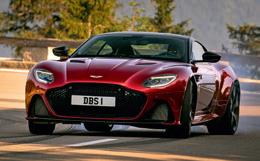
ENGINE 5204cc, biturbo V12
POWER 715bhp @ 6500rpm
TORQUE 664lb ft @ 1800rpm
0-60MPH 3.5sec
TOP SPEED 211mph
Replacing the Mk2 Vanquish S as the production flagship, the DB11-based DBS turned the wick on the twin-turbo V12 right up to 715bhp and became the fastest and most powerful series-production Aston so far. It also had a beefed-up eight-speed gearbox, carbon-ceramic brakes and a heap more visual drama. More ‘super’ than ‘leggera’ at c1700kg, it nevertheless gripped and handled like a proper sports-GT and was mind-bendingly rapid in a straight line. A Volante soft-top was launched in 2019.
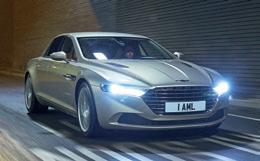
Specification
ENGINE 5935cc, V12
POWER 540bhp @ 6650rpm
TORQUE 465lb ft @ 5500rpm
0-60MPH 4.4sec TOP SPEED 195mph
The Lagonda name hadn’t been seen since production of the controversial wedge-shaped saloon ended in 1990, but in 2015 it was back, on a brand new luxury saloon – and one that made more than a few visual nods to its famous forebear. Based on the Rapide S but with a longer wheelbase to make it a full four-seater, the Taraf combined sumptuous accommodation with almost supercar levels of performance, but at a price – with the addition of a few bespoke options, buyers saw little change from £800k.
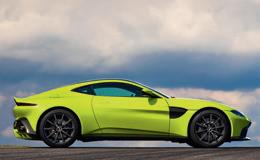
ENGINE 3982cc, biturbo V8
POWER 503bhp @ 6000rpm
TORQUE 505lb ft @ 2000rpm
0-60MPH 3.6sec
TOP SPEED 195mph
Replacing the best-selling Aston of all time was a tough gig, but the all-new Vantage made the previous model feel almost tame. With a twin-turbo 4-litre 503bhp V8 supplied by Mercedes-AMG and a lightning-quick paddleshift gearbox (soon joined by a traditional manual), the new car was rabidly quick and super-alert, though its looks divided opinion. Roadster was launched in 2020, and in 2022 came the V12 Vantage with a 690bhp version of the DB11’s twin-turbo 5.2-litre V12 and a run limited to 333 units.
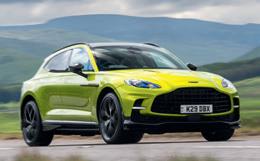
Specification
ENGINE 3982cc, biturbo V8
POWER 542bhp @ 6500rpm
TORQUE 516lb ft @ 2200rpm
0-60MPH 4.3sec
TOP SPEED 181mph
Not so very long ago, an Aston Martin-badged SUV would have been almost unthinkable, but so far had the prestige car market moved by 2020 that AML’s future prosperity depended largely on the success of the DBX. The first model to be built at St Athan, the DBX is powered by a tweaked version of the biturbo V8 shared with the Vantage and carries up to five in considerable comfort. DBX707 (above) launched in 2022 saw power rise to 697bhp (707PS), giving 0-60mph in 3.1sec and a top speed of 193mph. DBX 2020-present
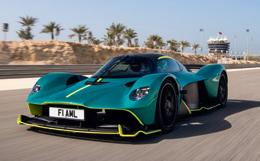
Specification
ENGINE 6500cc, V12
POWER 1139bhp @ 10,600rpm
TORQUE 681lb ft @ 7000rpm
0-60MPH <3.0sec TOP SPEED 220mph
Unique and utterly uncompromising, the Valkyrie was the vision of genius Formula 1 designer Adrian Newey (still with Red Bull at the time). Its hybrid powertrain combined a 6.5-litre naturally aspirated V12 built by Cosworth with a bespoke electric motor to give a total peak output of 1139bhp, while weight was quoted as just 1030kg and the radical aerodynamics gave unprecedented levels of downforce in a road car. A total of 150 closed cars, 85 Spiders and 40 track-only AMR Pro models were produced.
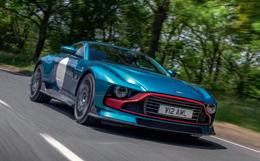
ENGINE 5204cc, biturbo V12
POWER 705bhp @ 6450rpm
TORQUE 555lb ft @ 4000rpm
0-60MPH <3.5sec
TOP SPEED c200mph
First came the Victor, a retro-themed One-77-based one-off inspired by the classic ’70s V8s and in particular a Le Mans racer nicknamed The Muncher. Such was the acclaim it attracted, Aston Martin decided to produce a limited run of similarly nostalgic brutes, but this time based on the DBS Superleggera, with a 705bhp version of the twin-turbo V12 and a six-speed manual transmission. Just 110 were built. An even more extreme, trackfocused variant, the Valiant, followed in 2024, of which 38 were produced.
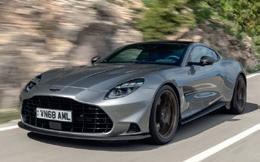
ENGINE 5204cc, biturbo V12
POWER 823bhp @ 6500rpm
TORQUE 664lb ft from 2500rpm
0-60MPH 3.2sec
TOP SPEED 211mph
Aston Martin brought back the Vanquish name for a third outing when it revealed the car that would replace the DBS Superleggera as its new series-production flagship. The twin-turbo V12 engine had been heavily reworked since it first appeared in the DB11 and now produced a staggering 823bhp, making the new Vanquish one of world’s fastest and most powerful super-GTs. But also one of the best – many road testers were of the view that this was the best Aston yet built. Volante version launched in summer 2025.
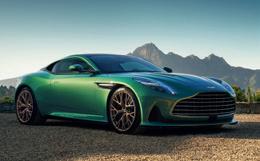
ENGINE 3982cc, biturbo V8
POWER 671bhp @ 6000rpm
TORQUE 590lb ft from 2750rpm
0-60MPH 3.5sec TOP SPEED 202mph
The DB12 is a significant evolution of the DB11, bringing heavily revised styling at the front and a far more cohesive and up-to-date cockpit, both of these developments attracting widespread praise from the media. No V12 versions (as yet) so power comes exclusively from the now-familiar 4-litre twin-turbocharged V8, and there’s certainly plenty of it, prompting Aston to call the DB12 the world’s first ‘super tourer’. Volante soft-top was launched soon after the coupe, and an even faster ‘S’ version was due in late 2025.
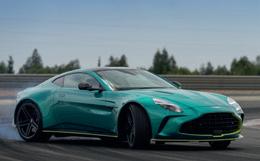
ENGINE 3998cc, biturbo V8
POWER 656bhp @ 6000rpm
TORQUE 590lb ft from 2000rpm
0-60MPH 3.4sec TOP SPEED 202mph
So dramatic were the changes for the 2025 model year Vantage that we’re giving it its own entry here. Not only was the design given a major reworking with a much more aggressive front treatment and the cockpit a successful makeover bringing it into line with the DB12, but power and torque levels were ramped up dramatically, from 503 to 656bhp and from 505 to 590lb ft, giving near-supercar levels of performance. The Roadster followed, and in summer 2025 Aston announced the 671bhp, even more focused Vantage S.
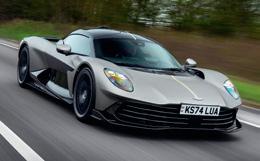
ENGINE 3982cc, biturbo V8 plus three e-motors
POWER 1064bhp (combined)
TORQUE 811lb ft (combined)
0-60MPH 2.5sec
TOP SPEED 217mph
The so-called ‘Son of Valkyrie’ is Aston Martin’s first plug-in hybrid supercar, intended to be a far more useable proposition than its uncompromising parent while still delivering hypercar levels of performance. Its total power output of 1064bhp is produced by a combination of a twin-turbocharged 4-litre petrol engine and three electric motors, while the bodywork features active aerodynamics. Production started in mid-2025 and will be limited to 999 units.
